
WG Grace at the Crystal Palace, Penge, 1905
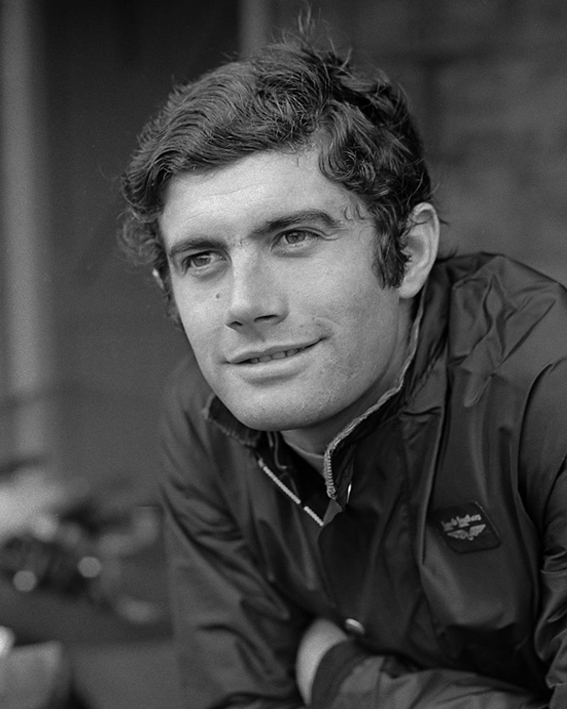 Giacomo Agostino (b 1942)
Giacomo Agostino (b 1942)
As Michael Schumacher was to F1, so was Giacomo Agostini to motorcycling. He came from Brescia in northern Italy, a council worker’s son, and had to compete secretly in motorcycle races because of his father’s disapproval. At 21, however, he won the Italian 175cc championship, followed by the 350cc title the year after, and there was no stopping him. After joining MV Agusta in 1965, ‘Ago’ became almost unbeatable, his fearlessness being perfectly matched by technical nous. Between 1966 and 1975, he won a total of 122 Grand Prix on the way to winning seven 350cc world championships and eight 500cc world titles. He controversially boycotted the Isle of Man TT after his friend Gilberto Parlotti was killed there in 1972, effectively ending the most prestigious event in the calendar. A frequent winner at Brands Hatch, he made a special appearance there on his 500-3 NV Agusta at 67.
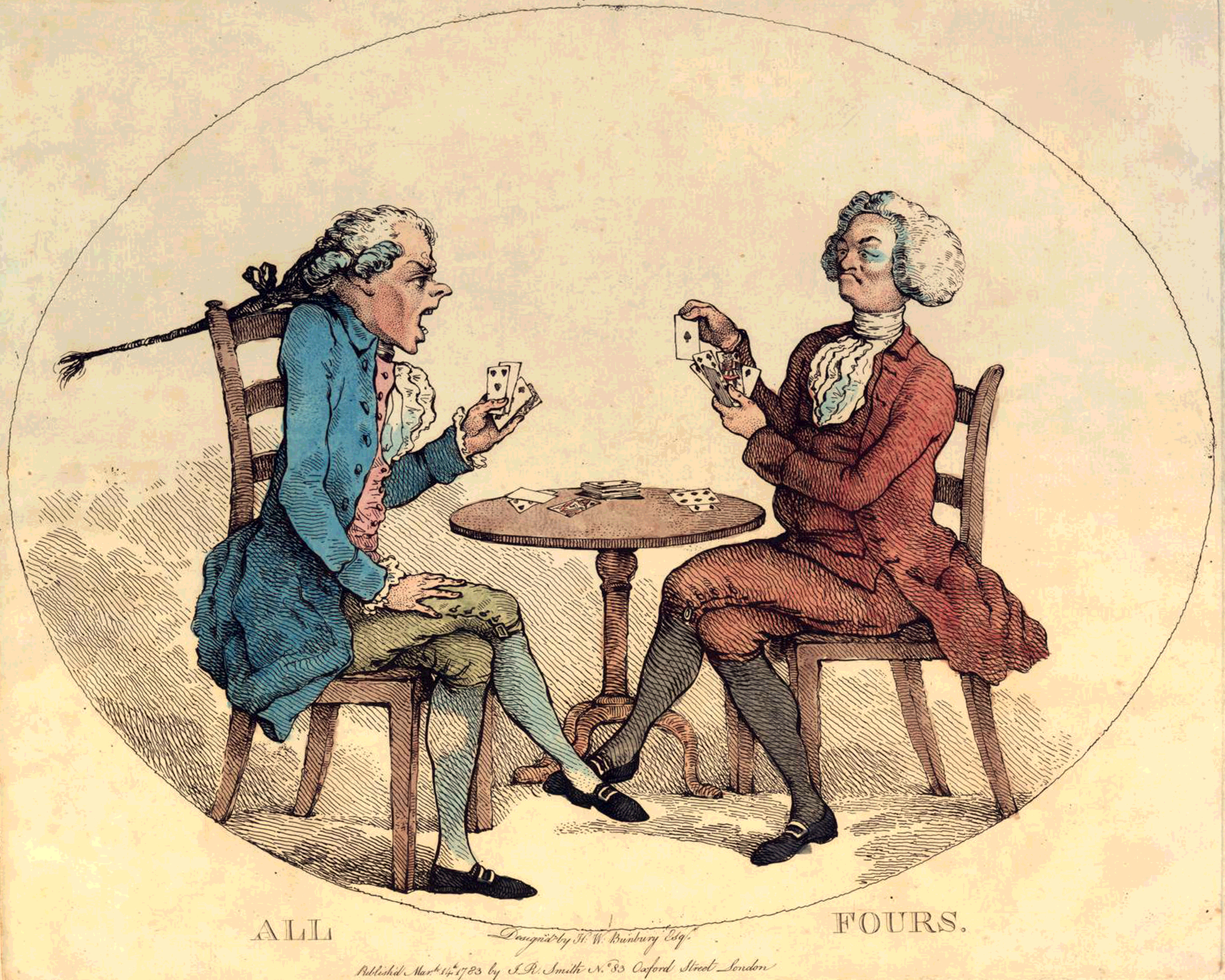 All Fours
All Fours
The Kentish card game of All Fours has three distinctions. It was the source of the name ‘Jack’ for the playing-card previously known as the Knave; it was so popular among African slaves in the Americas that today it is Trinidad and Tobago’s national card game; and it spawned the highly popular American game Pitch. From the C17 onwards, All Fours was habitually played for big money by pairs of Kentish gentlemen who had possibly got the idea from the Netherlands. The ‘All Fours’ name derived from the scoring system, points being accrued in four ways: with the highest trump, the lowest trump, game points corresponding to different card values, and the trump Jack. The use of the term ‘Jack’ perhaps derived from the fact that the No. 11 batsman in a cricket team was commonly called ‘Last Man Jack’. The name did not become standard in cards until 1864, when the printed ‘J’ replaced the confusing ‘Kn’.
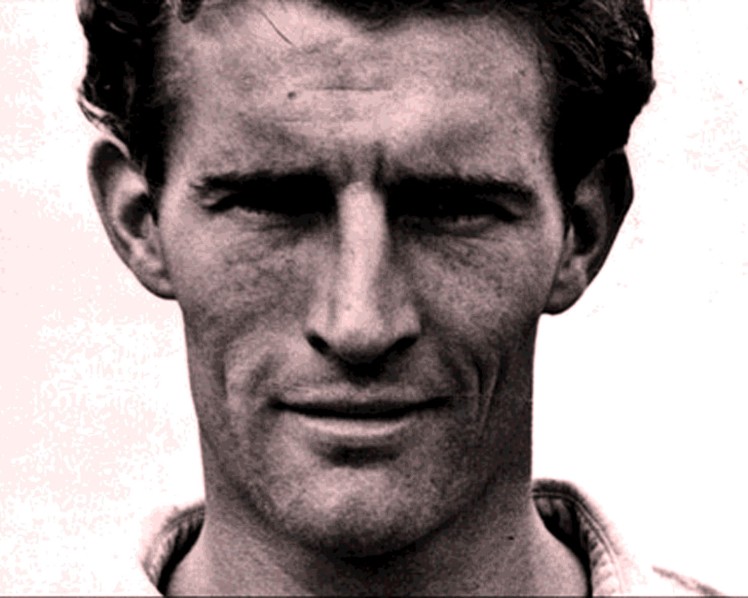 Malcolm Allison (1927-2010)
Malcolm Allison (1927-2010)
Big Mal was a decent player who ended up better known as a manager. A Dartford-born centre-half, he played first at Erith & Belvedere before spending six low-key seasons at Charlton Athletic; but he made his name at West Ham United, where he mentored the young Bobby Moore. His senior playing career ended abruptly when he caught TB and had a lung removed. After three years as a car salesman and nightclub owner, he got into football management and, following seven years as assistant to Joe Mercer at Manchester City, briefly became manager. He enjoyed a dramatic three-year spell at Crystal Palace before embarking on an odyssey embracing a dozen clubs in as many years. Instantly recognisable with his cigar and fedora – not to mention his womanising, alcoholism, and combative manner – he enjoyed a reputation as just about the most flamboyant manager in England, and remains a favourite of connoisseurs of his playboy cheek.
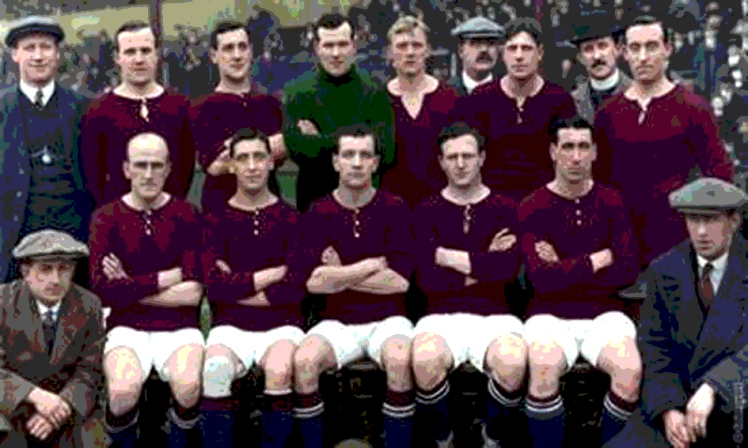 The Arsenal Football Club
The Arsenal Football Club
Dial Square FC was founded in 1886 by sixteen Woolwich munitions-factory workers. They soon changed its name to Royal Arsenal, and settled at the Invicta Ground in Plumstead. In 1893, it became the first Southern club to be accepted into the Football League, playing under the name Woolwich Arsenal, whereupon it had the Manor Ground stadium built nearby. It played in the Football League Second Division for ten seasons before gaining promotion to Division 1. After suffering serious money troubles, it was bought out and moved north of the Thames, playing at Highbury Stadium under its simplified modern name from 1913. Its glory years arrived in the 1930s, when it won the League title five times – the only southern club to be Champions before WW2. Although now famous nationally as half of the North London Derby, the club until quite recently enjoyed the support of older fans in Kent who still considered it “the big local club”.
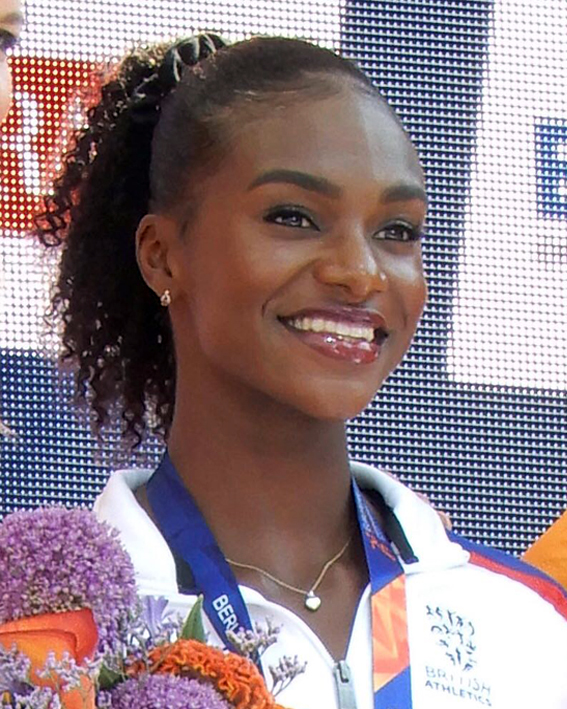 Dina Asher-Smith (b 1995)
Dina Asher-Smith (b 1995)
Geraldina Asher-Smith was born in Orpington to Jamaican parents, and joined Blackheath and Bromley Harriers. She first came to the general public’s attention in 2016, when she won a gold in the 200 metres at the European Championships in Amsterdam. Two years later, she tripled her haul by adding the 100 metres and 4 x 100 metres relay. That was only a warm-up for her greatest achievement to date, when at the 2019 World Championships in Doha she capped her silvers in the 100 metres and the sprint relay with gold in the 200 metres. Although injury cost her the chance to crown her career with Olympic gold, Asher-Smith has also exploited her looks as a fashion model. Indeed, Mattel based a Barbie doll on her to demonstrate what they called girls’ “limitless potential”, which hopefully will not prove a commentator’s curse.
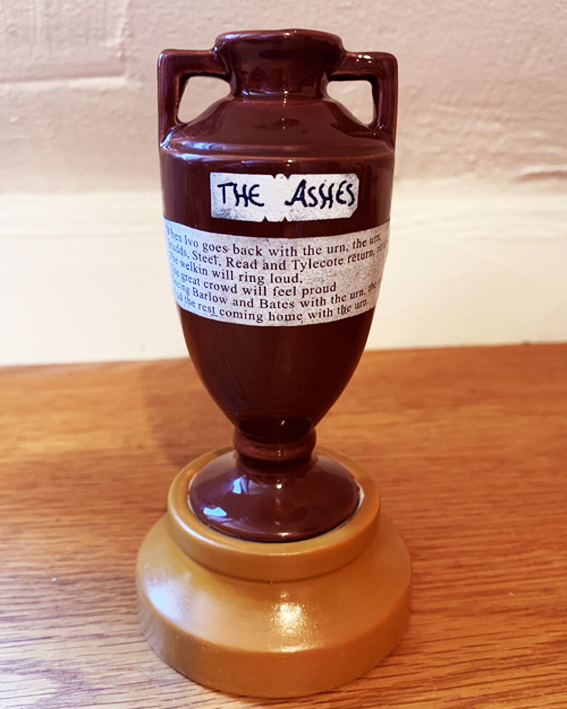 The Ashes
The Ashes
Ivo Bligh, the Eton- and Cambridge-educated 8th Earl Darnley, Lord of the Manor of Cobham in Kent, was an unimpeachable choice of captain for the England cricket team. He wasn’t that good a player, but his quirky forename endeared him even to the Australian public. He went down in cricketing history for his part in the 1882-3 test series in Australia. Its predecessor in England had been lost, prompting ‘The Sporting Times’ to print a spoof obituary of English cricket. Bligh announced that his aim was to regain England’s “ashes”. When the series was duly won 2-1, a group of Australian women presented to him an urn bearing a ditty referring to “Ivo” and containing the ashes of a local bail. The gracious England captain did his bit for international relations by marrying one of the women, teacher Florence Morphy, who thereby became the Countess of Darnley. After his death, she gifted the urn to the MCC.
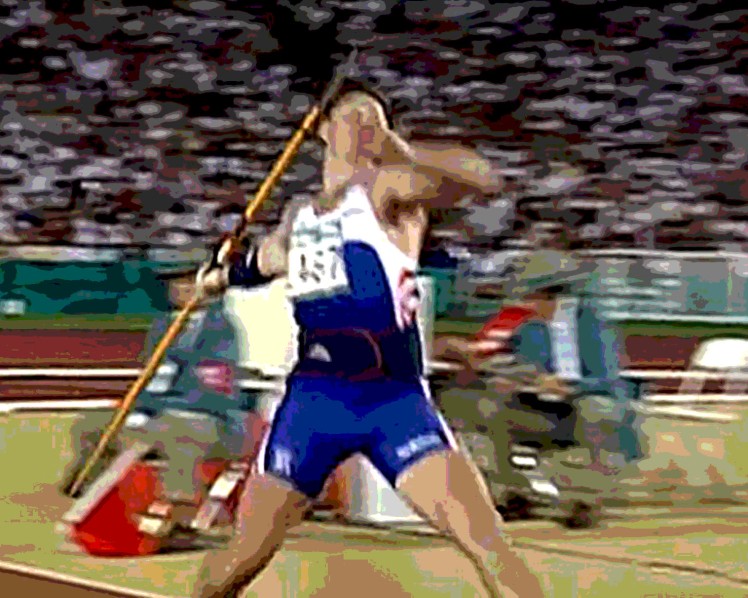 Steve Backley (b 1969)
Steve Backley (b 1969)
Steve Backley was a world-class javelin thrower from Sidcup with the physique of a rugby union number 8, the looks of an American football quarterback, and the luck of a French snail. His great misfortune was to be a contemporary of the indomitable Czech Jan Zelezny, who swept all before him. Backley did actually lead Zelezny briefly in two consecutive Olympic finals, but both times had to settle for a silver to add to the bronze he’d won in 1992. Similarly, he won two silvers in World Championships, but could console himself with seven golds at European and Commonwealth championships. His most enduring achievement was the throw of 91.46 metres he made in 1992, which set a new world-record and is still the British record today. He was subsequently awarded an OBE, competed on ITV’s ‘Dancing on Ice’, and served as a BBC athletics commentator. He now works as a motivational speaker.
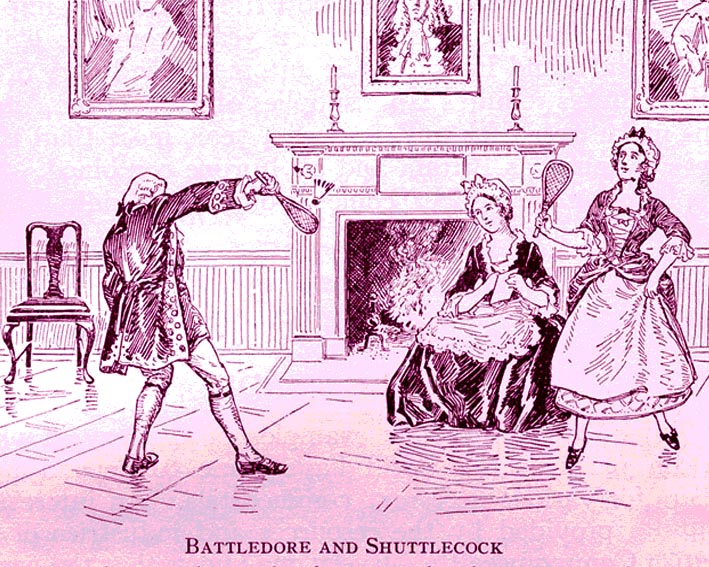 Badminton
Badminton
The game of battledore & shuttlecock, which involved two or more people using bats to keep a shuttlecock in the air as long as possible, already existed in Shakespeare’s day. In the C19, British Army officers in India turned it into a sport by forming teams who hit it competitively over a net; the first rules were formulated in 1873, actually two years before the same happened in lawn tennis. The new sport bore the name Poona, after the city where they invented it. Because the informal game was already played indoors at Badminton House in Gloucestershire, however, the sport was given its modern name when it arrived in England. In 1875, the world’s first badminton club was founded at the West Cliff Hotel in Sandgate Road, Folkestone. In the 1930s, the Badminton Association of England’s headquarters moved to Bromley, where it remained until 1980. Now played worldwide, badminton became an Olympic sport in 1992.
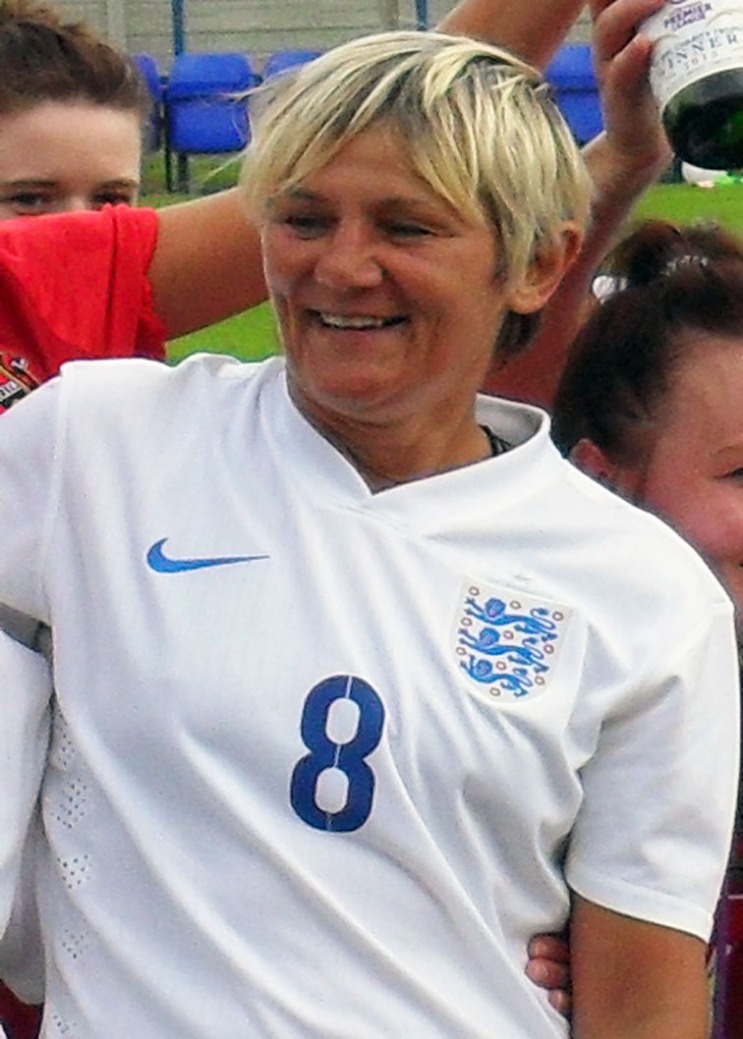 Debbie Bampton (b 1961)
Debbie Bampton (b 1961)
Deborah Bampton was born in north-west Kent in 1961 and, already by the age of 13, was making a name for herself in the Maidstone Ladies team. She stayed for five years, during which time she made her debut for England, proving the epitome of a hard-working midfielder. It was the first of 95 caps in an international career spanning nearly 20 years and culminating in the captaincy. At 23, she joined Millwall Lionesses, with whom she stayed for five years apart from a one-year interlude in Italy. She joined the Arsenal Ladies side that won the women’s Premier League, FA Cup and League Cup in 1992-93, before going to Croydon as player-manager and winning the FA Women’s Cup for a fifth time. She ended her career at Eastbourne Borough, and still lives in the area working inconspicuously as a postman. She was awarded an MBE, and is in the English Football Hall of Fame.
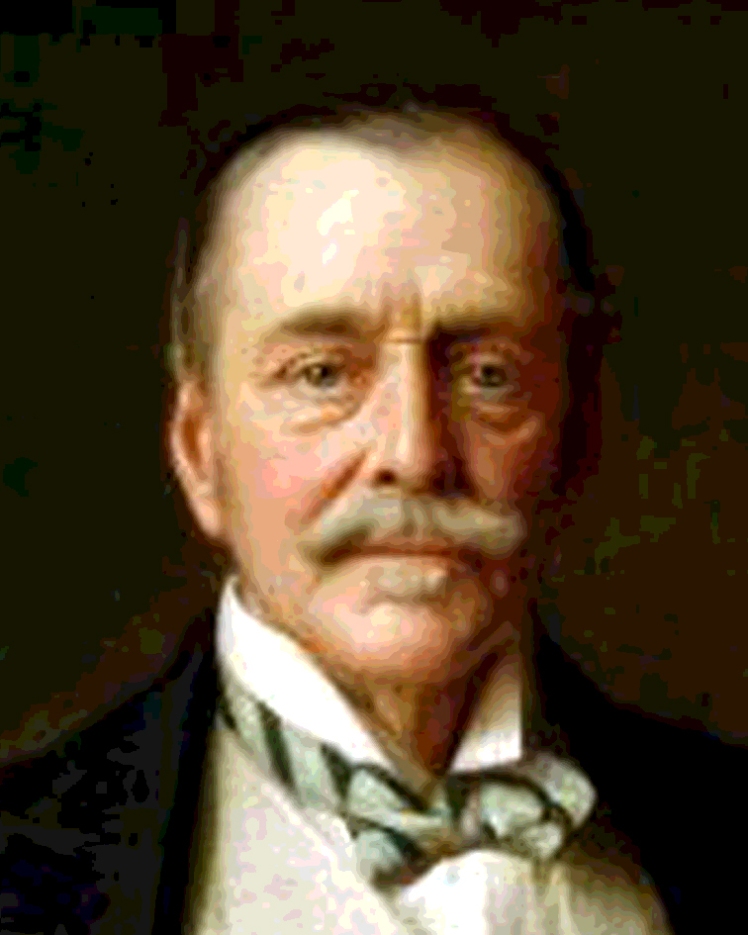 The Band of Brothers
The Band of Brothers
Founded in 1858, the Band of Brothers is a cricket club that unusually does not represent any locality but seems to exist just for the heck of it. Most of the founders were members of the Royal East Kent Mounted Rifles; their suitably military name was taken from a popular song of the era. After the original members left, the club’s most illustrious leader, the 4th Lord Harris, reinvigorated it. ‘BB’, as it is universally known, thereafter maintained its distinctly Kentish and gentlemanly complexion, but always with a sense of humour. In 1879, at its home ground Torry Hill above Harrietsham, BB took on the neighbours from Sharsted Court, whose owner Chapman Faunce-De Laune was actually a BB member; he was henceforth known as ‘Traitor’. Several top Kent players have subsequently become ‘Brethren’, including Lord Cowdrey. BB has commendably preserved its remarkable original records, ‘The Books’, which now rest securely in the archive of Canterbury Cathedral.
 Bar billiards
Bar billiards
The Rose & Crown on Elham High Street has the distinction of having housed the first-ever bar billiards table in Britain. The game was devised by David Gill, founder of Bar Billiards Ltd, in 1934. He supposedly adapted it from ‘billard russe’ after a trip to Belgium, although the resemblance is tenuous. It was actually a profitable means of allowing people to match their cue skills in confined spaces like public bars. Players insert coins to buy a game, its length being limited by a timer. All shots are made from baulk, and the aim is to score points by sinking balls in holes graded by difficulty, as in bagatelle. Spice is added by mushroom-shaped pegs that, if toppled, can cost a player dear. Bar billiards is still very southern biased, and the World Championship takes place annually in Jersey. The 2018 World Champion was Paul Sainsbury of the Tunbridge Wells Constitutional Club.
 John Bartley (b 1958)
John Bartley (b 1958)
By the age of 23, the lethal Camberwell-born striker John Bartley already had a Pele-like goal-scoring record under his belt, having notched 450 goals for Welling United in just 326 games. Things didn’t subsequently work out at either Millwall or Kuopion Elo in Finland, but he scored 87 times in just two seasons to help Maidstone United win their first Alliance Premier League title. Back at Welling from 1984, he continued to score at the rate of a goal a game, but returned to Maidstone to do the same again in 1986-87. He then got 21 in 28 competitive matches for Chelmsford, 31 for 38 for Dartford and, for an encore, 86 in 86 for Alma Swanley. In total, he is reckoned to have scored 762 goals in 714 appearances, probably an English all-time record. Given his brilliance, he was ribbed about his supposed lack of footballing ambition, although he actually had a good job as a computer programmer.
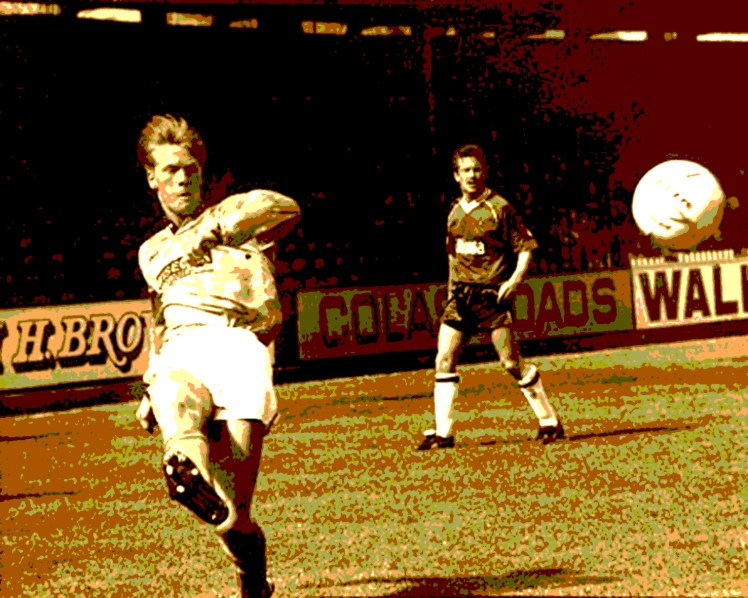 Warren Barton (b 1969)
Warren Barton (b 1969)
Barton, born in North London, was Maidstone United’s outstanding right-back during the club’s first season in the Football League. He’d been signed in 1988 from Redbridge Forest for £30,000 plus no fewer than three players, and soon showed his worth with his exciting wing play. On account of the club’s growing financial problems, he was sold after a year to top-flight Wimbledon for £300,000, then a record for a fourth-tier player. Four years later, he moved to Newcastle United in the Premier League for a fee of £4 million, making him the most expensive defender in English football. While there, he made the first of his three appearances for England. He had spells at Derby County and Queen’s Park Rangers before briefly rejoining Wimbledon, and finally returned to Dagenham & Redbridge. After retiring, he moved to America, becoming coach of San Diego Flash as well as serving as a Fox Sports TV pundit.
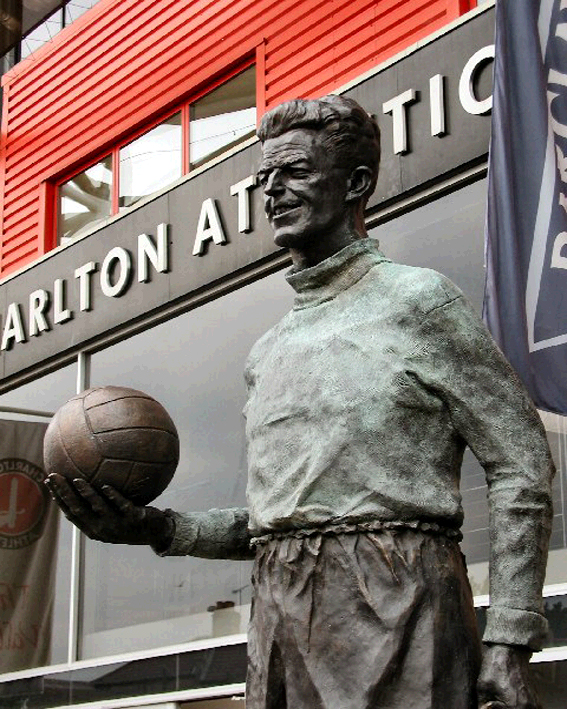 Sam Bartram (1914-81)
Sam Bartram (1914-81)
It was by sheer fluke that Sam Bartram, a Geordie miner, got his footballing break. A centre-forward, he was standing in as goalkeeper for his local team when a Charlton Athletic scout turned up. In no time he was keeping at the Valley, aiding the club’s meteoric rise to footballing eminence. His one honour was the FA Cup in 1947, though one can only guess what he might have achieved if WW2 hadn’t wiped out six seasons. His career is quickly related: he played for Charlton. He stayed for 22 years and played 579 times competitively, retiring as the oldest Addick in history. Charlton fans remember him best for the time when, at Stamford Bridge, fog descended. He was left wondering when Chelsea were finally going to mount an attack when a surprised policeman told him the game had been abandoned some while ago. The hugely popular Bartram is now commemorated by a nine-foot statue at the Valley.
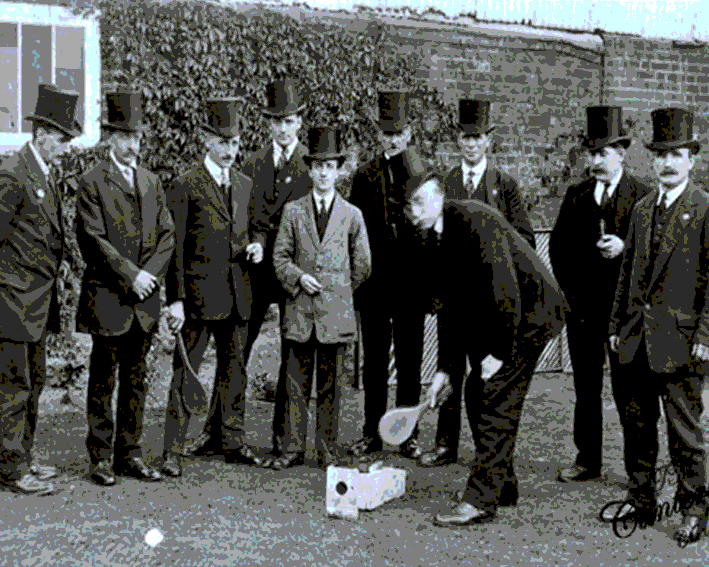 Bat and trap
Bat and trap
The origins of bat and trap are lost in the mists of time. Once widespread, it is now a distinctly Kentish game. It melds elements of cricket, rounders and hockey, with a bowling-machine (known as a trap) thrown in. The batsman hits a lever to fire a ball into the air, and attempts to strike it into a goal without it being caught by a fielder. The batsman is ‘knocked out’ after three failed attempts to hit the ball, or by failing to hit the ball between the posts. The fielders meanwhile stand behind the goal. After each hit, one fielder in turn throws the ball at the near end of the trap; the batsman is ‘bowled out’ by a hit, or else scores a run. The batting team, typically consisting of eight players, bats one after the other until all are out. There are several leagues in Kent; the Canterbury one had its centenary in 2022.
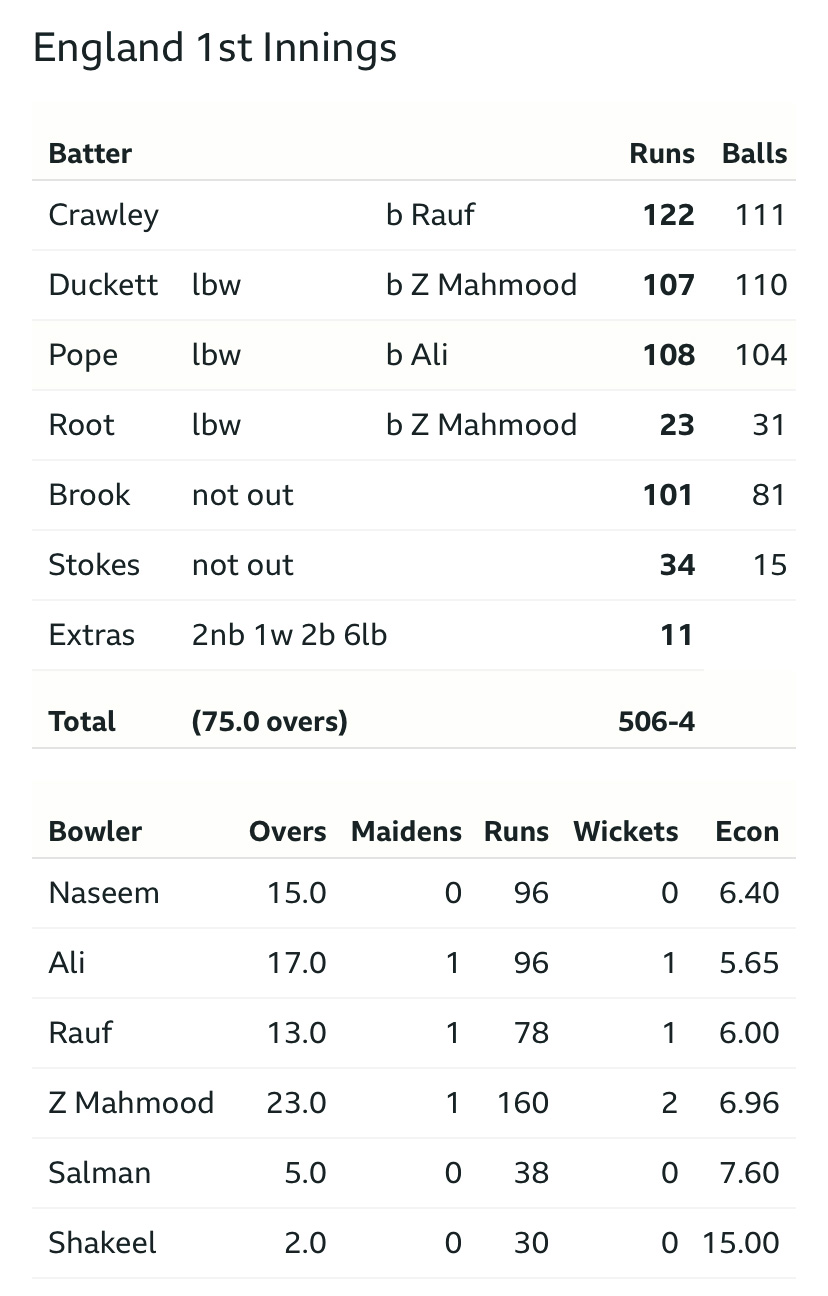 The Bazball Test (2022)
The Bazball Test (2022)
Just a year after a cricketing humiliation by Australia, England’s promising recovery under the new ‘Bazball’ regime faced a stern test in Pakistan. At the 1st Test at Rawalpindi, Kent’s Zak Crawley signalled England’s attacking intent by scoring 14 off the very first over. He went on to complete a century in 86 balls, the fastest ever by an England opener. He also built an opening partnership of 233 with fellow centurion, Farnborough-born Ben Duckett, the foundation for a record England tally of 506 runs in a day. After Pakistan posted their own large total, England’s daring declaration appeared overly generous; but Margate-born Ollie Robinson’s 4-50 helped them to a dramatic 74-run win with minutes to spare. It set England on course for a 3-0 series whitewash, a unique achievement on Pakistani soil. This cricketing revolution had only become possible under the leadership of a new England managing director, Kent’s own Rob Key.
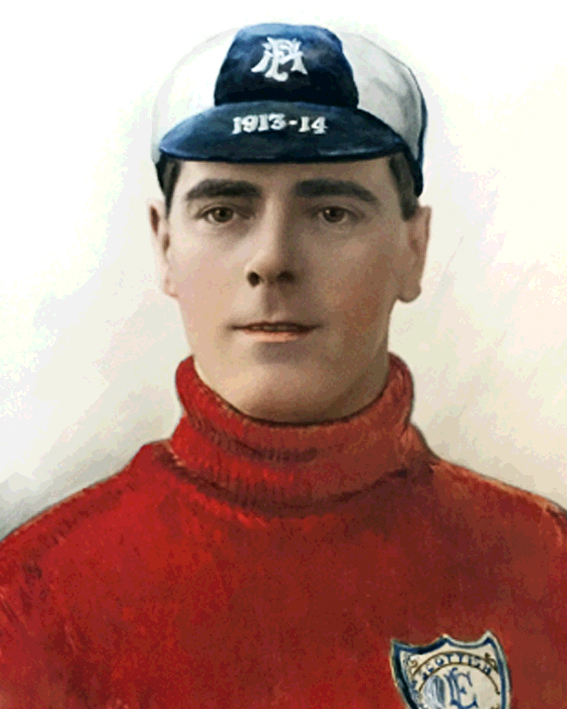 Bobby Beale (1884-1950)
Bobby Beale (1884-1950)
Robert ‘Bobby’ Beale was the son of a Maidstone councillor and undertaker who first played at left-half and outside-left for Maidstone Church Institute. While still in his teens, he crocked his knee, and had to reinvent himself as a goalkeeper. It was a singularly successful transformation. He took part in three early tours to Belgium before joining Maidstone United in 1904-05. From there he moved to Brighton & Hove Albion and then via Norwich City to Manchester United of the First Division, which he joined in 1912 for £275. He made 105 appearances there before WW1 intervened. By that time, he had also represented the English League against the Scottish League at Hampden Park in 1913. Early in 1919, he played for Maidstone United in all its Victory Cup ties before ending his career at Gillingham. His son Wally signed for Manchester United, but never made the first team. Bobby Beale died in Dymchurch.
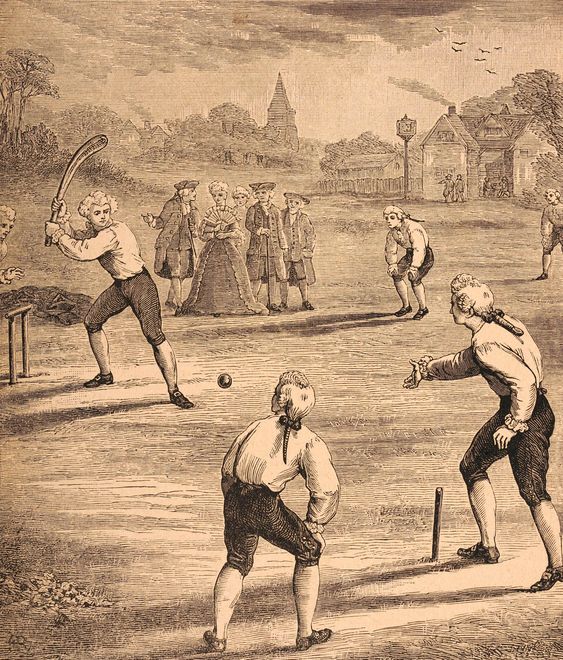 William Bedle (1679-1768)
William Bedle (1679-1768)
Although he was born in Bromley, William Bedle earned his wealth as a farmer near Dartford, which is where he also played his cricket. With his help, Dartford CC became the best club in England (and therefore the world) in the first half of the 18th century, and was practically synonymous with Kent cricket. Although no records survive of his playing performances, he was in fact the first player in the world to be renowned purely for his cricketing ability. The notoriously cantankerous cricket-writer Rowland Bowen described him as first in a line of greats that included Pilch, Grace, Hobbs and Hammond – four of those five, incidentally, having Kent connections. When he died in Dartford in the reign of George III, Bedle was described in his obituary as “the most expert cricket player in England”. He was 89, which at the time was a very good innings.
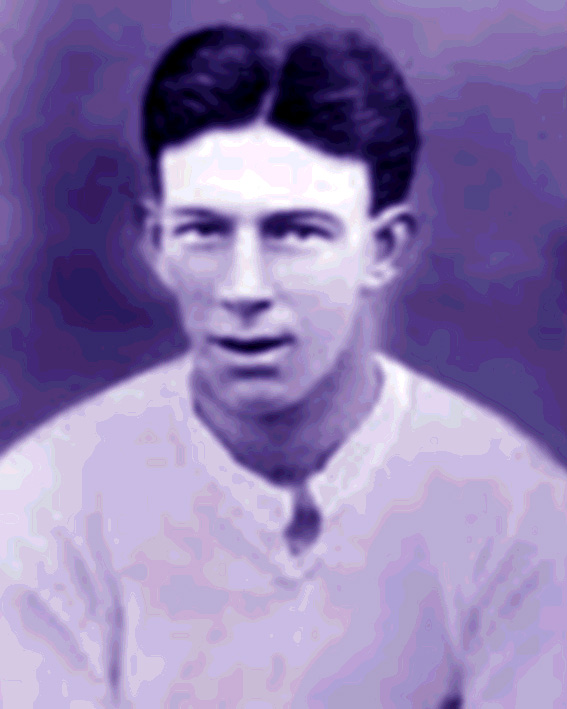 George Beel (1900-80)
George Beel (1900-80)
While stationed at Blackpool during WW1, George Beel started playing football for the Seasiders. After failing a trial with Manchester United in 1919, he began his professional career at his hometown club Lincoln City, before making his way via Merthyr Town and Chesterfield to recent champions Burnley. He would stay at Turf Moor for nearly a decade, racking up 337 appearances. He proved the club’s best-ever centre-forward, finishing top scorer six times and scoring a club-record 187 goals. After a further short spell at Lincoln and then Rochdale, he moved south to player-manage Tunbridge Wells Rangers before spending a season as player-coach at Maidstone United. After WW2 he returned to serve as manager during the club’s transition from Kent League to Corinthian League. He remained in mid-Kent for the rest of his life, helping with junior football even after retirement age. He died in Linton Hospital at eighty.
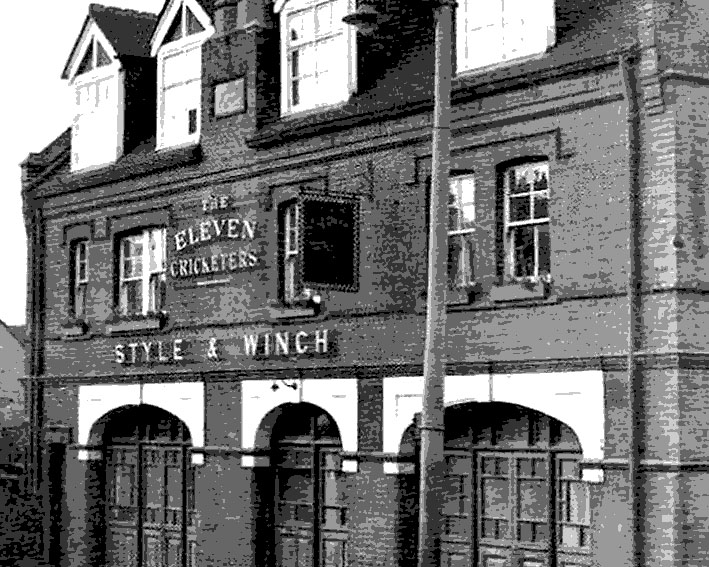 John Bell (1718-74)
John Bell (1718-74)
A Dartford man through and through, John Bell was the wicket-keeper who established a tradition of outstanding Kentish figures behind the stumps that would later include Fred Huish, Jack Hubble, Les Ames, Godfrey Evans, Alan Knott, Paul Downton and Geraint Jones. He played for Dartford, for Kent, and often for All England, and was for a time the country’s best-known player. Believed to have been a shoemaker by trade, he became a publican after his retirement, running the ‘Queen’s Head’ in Dartford. Since it was frequented by fellow cricketers, it was appropriately renamed ‘The 11 Cricketers’ after his death, which it remained until its closure in 1988. Bizarrely, Bell’s brother Thomas, another England cricketer, was found guilty of highway robbery at Maidstone Assizes in 1762 and sentenced to death; luckily for him, the umpire’s decision was reviewed, and he won a reprieve.
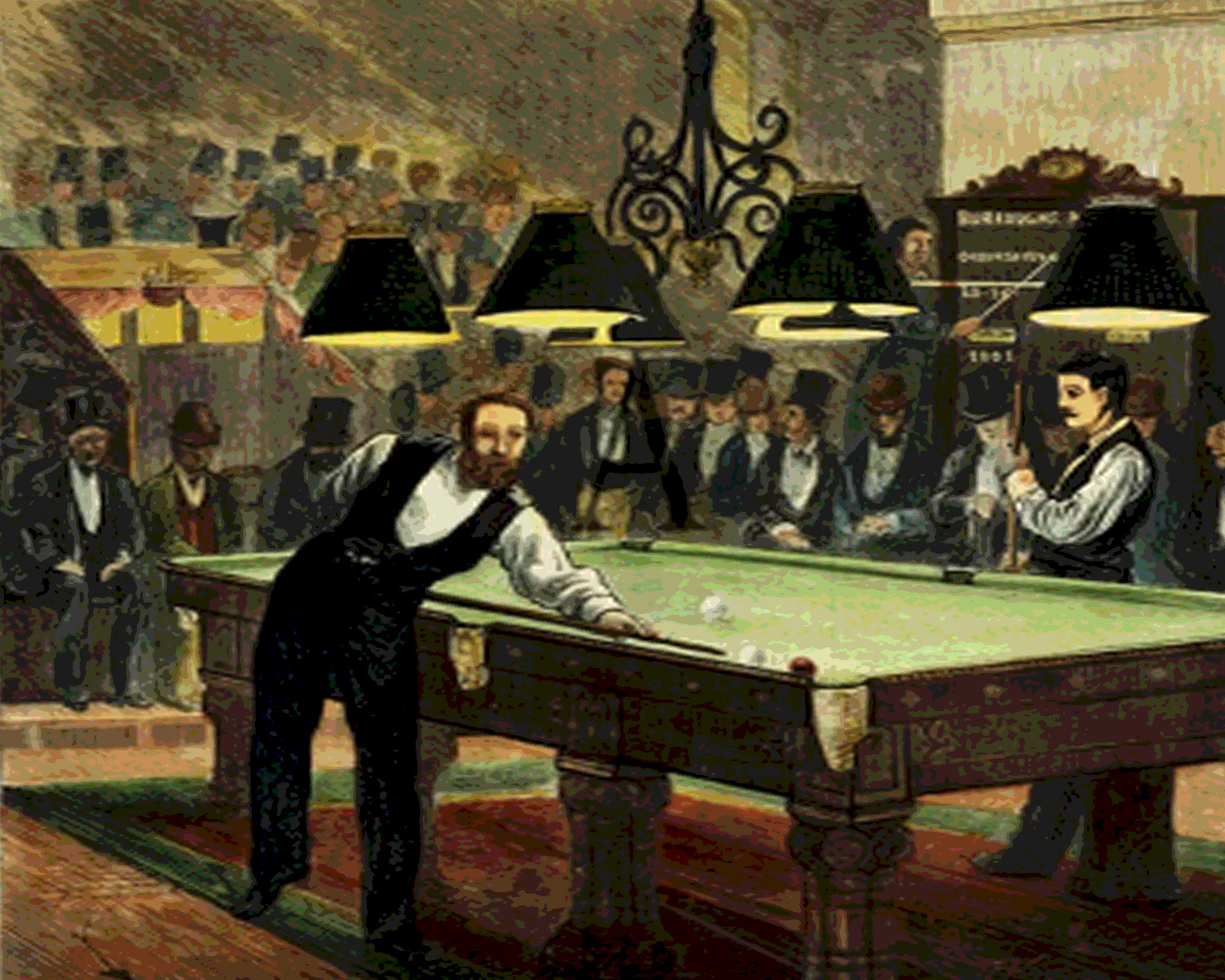 Joseph Bennett (1842-1905)
Joseph Bennett (1842-1905)
John Roberts Sr from Liverpool was world billiards champion from 1849 until 1870, when he was beaten by William Cook. A flurry of challenges followed between Cook, Roberts’s son John Jr, and Joseph Bennett from Town (now West) Malling. After Roberts Jr had quickly recovered his father’s title, Bennett challenged him in London, prevailing in a match that lasted nearly five hours in front of 300 spectators. In addition to becoming world champion, Bennett won £200. He lost the title to Roberts the following year, but regained it against Cook in 1880, and in 1881 set a championship record break of 125 while successfully defending his title. He had to resign it, however, after breaking his arm in a road accident. He owned a billiard hall in Oxford Street, co-founded the Billiard Association in 1885, helped draw up its rules, wrote ‘Billiards’ in 1899, and got a mention in Fraser’s ‘Flashman at the Charge’ in 1973.
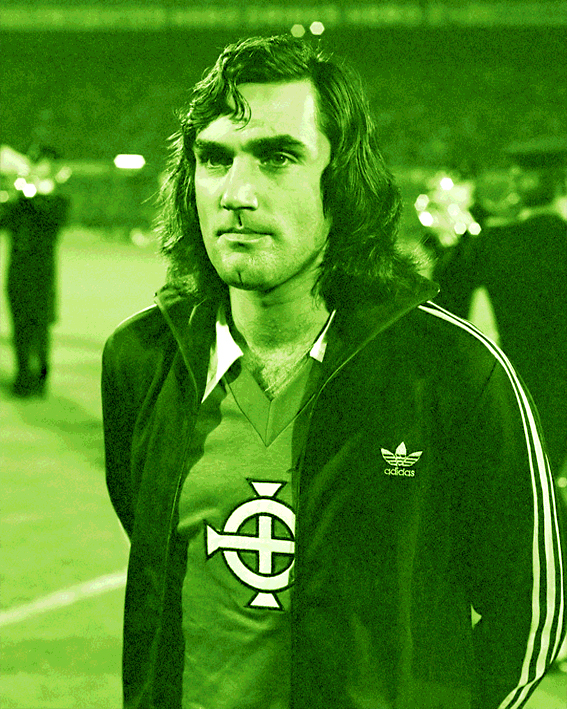 George Best (1946-2005)
George Best (1946-2005)
George Best was arguably the most skilful British player ever. He would breeze past defenders, and finish with aplomb. It was the world’s misfortune that, playing for Northern Ireland, he never graced a major international tournament. His zenith came at Wembley in 1968, when he rounded the Benfica goalkeeper to initiate an extra-time rout, making Manchester United the first English club to lift the European Cup. He also possessed good looks and charm, making him irresistible to a succession of beauty queens; he joked that he’d spent a lot of his money on women and booze, and wasted the rest. His playboy lifestyle eventually did for him. He quit playing for the Red Devils at the absurdly young age of 27, and thereafter frittered his talent away. Yet he kept a good heart. On April 6th, 1986, he brought a star-studded team including Bobby Moore to play Maidstone United in a charity friendly. Needless to say, he scored.
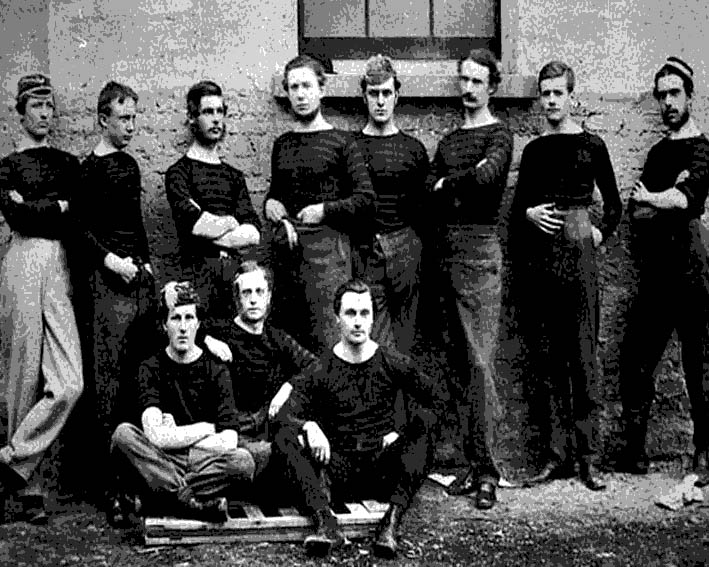 Blackheath Football Club
Blackheath Football Club
Though familiar today only to keen rugby fans, Blackheath Football Club has a unique status in world sport. The club was founded in 1858, at a time when football was still a hybrid of soccer and rugger. In 1863, BFC was one of twelve London, Kent, and Surrey clubs – three from the town of Blackheath – who founded the Football Association. Their aim was to draw up the code of laws that would shape the modern game. After their sixth meeting, at which the majority of members voted for a set of rules closer to the new ‘Cambridge Rules’ than the older ‘Rugby Rules’, BFC withdrew from the FA, and by default became the first open rugby club in the world. Eight years later, it went on to become a driving force in the creation of the Rugby Football Union. Blackheath FC thereby played a key role in the foundation of not one but two great world sports.
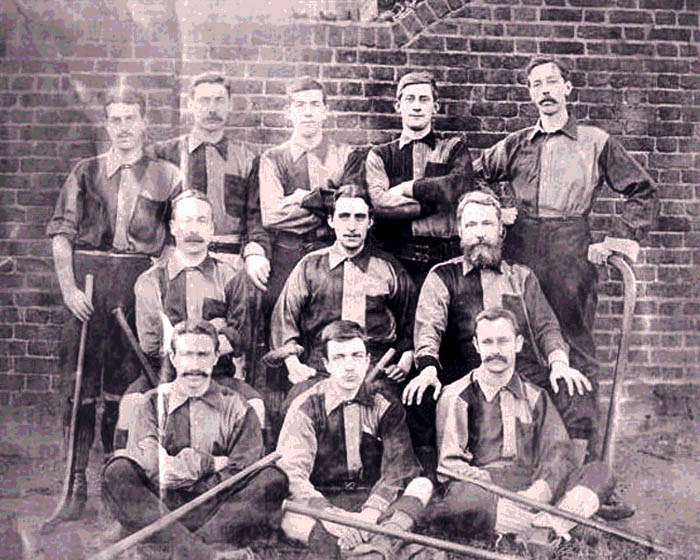 Blackheath Hockey Club
Blackheath Hockey Club
One of the least predictable of the dozen founder members of the Football Association was the Blackheath Proprietary School. Amazingly, that was not the School’s greatest claim to a place in the history of world sport. Just as some old boys had gone on to form the Blackheath Football Club that proved so influential in the development of football and rugby, so others decided to form a separate club to play hockey, which was at least as popular at the time; this they did in 1861. It was in fact the first hockey club in the world. (It should be mentioned that Teddington Hockey Club dubiously claims that honour because, when founded ten years later, it introduced a more modern pitch and ball). It is odd to reflect that the Club played its centenary match, in original dress, nearly sixty years ago. A merger in 2012 formed the current Blackheath & Elthamians Hockey Club.
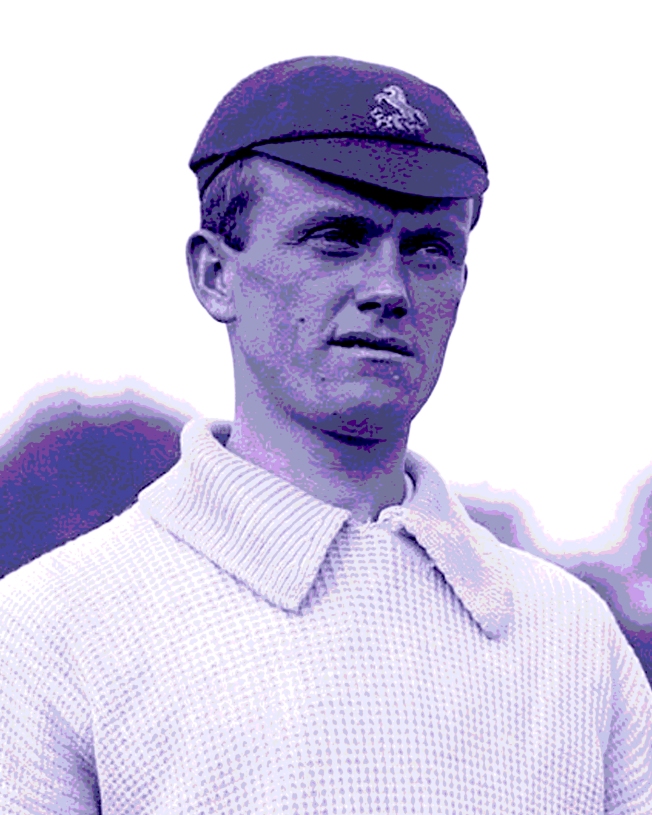 Colin Blythe (1879-1917)
Colin Blythe (1879-1917)
Colin ‘Charlie’ Blythe from Deptford had the sort of bowling talent best described as sublime. A slow left-arm bowler who was lethal on a sticky wicket, he was only discovered by chance. He was an apprentice fitter when, while spectating at Blackheath, he was asked to give a Kent batsman some net practice; a passing coach immediately offered him a trial. Blythe’s batting was never much use, but his wicket-taking became a mainstay of Kent’s glorious spell before WW1, when they were County Champions four times. When the famous Chevallier Tayler painting was commissioned to celebrate Kent’s first title in 1906, Lord Harris insisted that Blythe be the featured bowler. His greatest day came in 1907, when he took 10-30 and 7-18 at Northampton – the first time 17 wickets had been taken in a day. Despite his epilepsy, he enrolled in WW1, and was killed by a shell at Passchendaele. He is commemorated by a monument at the St Lawrence Ground.
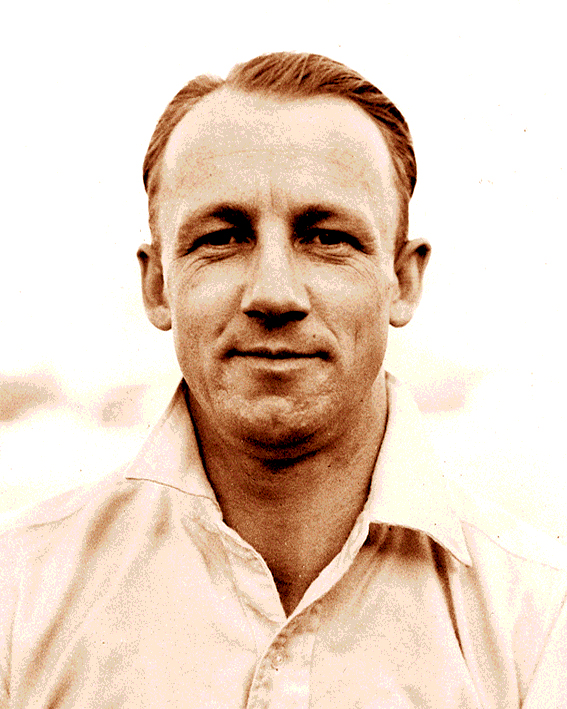 Sir Donald Bradman (1908-2001)
Sir Donald Bradman (1908-2001)
There are few sporting legends as outstanding as the man born in a hut at Cootamundra, New South Wales. He learned his cricket as a boy by practising alone with a stump and a golf ball. He would grow up to dominate the game, achieving a best individual score of 452 not out against Queensland and an almost unbelievable batting average of 99.94 during his 20-year test-match career. In 1948, at the age of 39, he returned to England for a fourth and last Ashes series, bringing out the adoring crowds in tens of thousands. Australia duly won the five-match series 4-0. On August 21st, the Don also captained Australia against Kent at Canterbury. He scored 65 in a total of 361, before Kent were dismissed twice in an afternoon to lose by an innings and 186 runs. To be fair, Bradman’s Australians unprecedentedly completed his farewell tour without losing a match, becoming known forever as ‘The Invincibles’.
 Brands Hatch
Brands Hatch
Few under forty are aware that, for 25 years, Brands Hatch was on a par with Silverstone as the nation’s leading motor-racing circuit. Already before WW2 there had been motor-cycle racing on a grass track at the site, a natural bowl beside the A20 near Farningham. The tarmac track was opened in 1950 – a young Stirling Moss being among the demonstrators – and by 1964 had hosted its first British Grand Prix, won by Jim Clark. It alternated with Silverstone as host thereafter, winners including such greats as Brabham, Lauda, and Mansell. In 1988, FISA’s new policy of embracing one circuit per country led to Silverstone being preferred permanently, on the grounds of having more space to expand into. It was in truth the faster of the two, though less interesting and far less accessible. Brands Hatch still hosts many other forms of motor sport today; and ‘Brands’ has left names like Clearways, Druids, and Dingle Dell seared in race-fans’ memory.
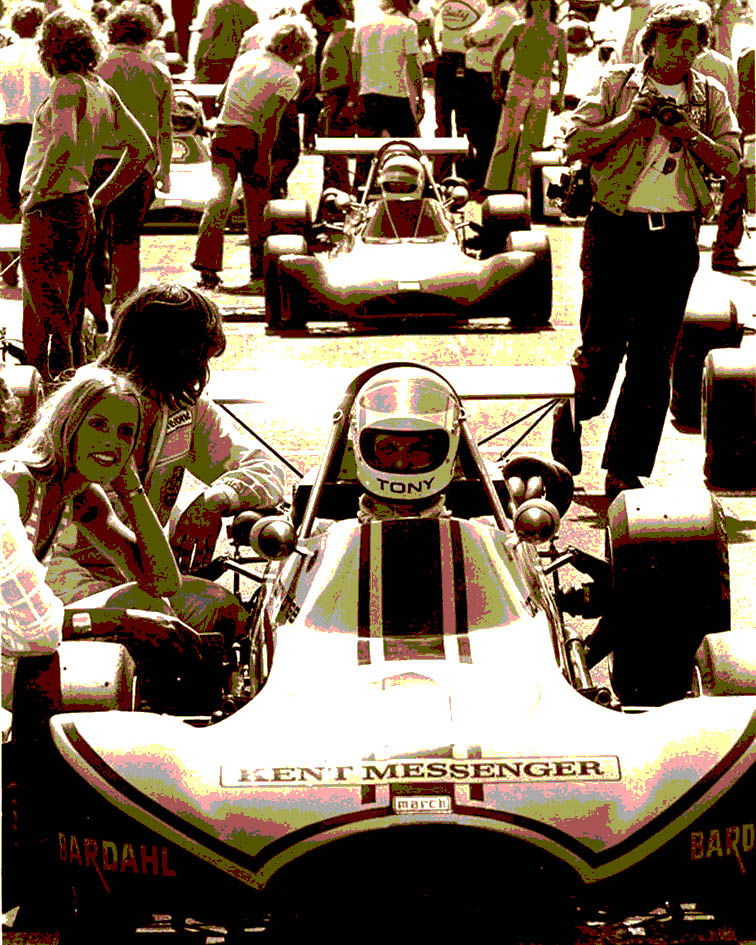 The Brises
The Brises
Johnny Brise (1927-80) was a builder’s son from Ashford turned pig farmer at Hextable. He built and raced sports cars; so, when stock-car racing arrived from America in 1954, he was well placed to get ahead. He won the World Championship three times, in 1956, 1959, and 1960, then abruptly retired to teach go-karting to his sons Tony (b 1952) and Tim (b 1953). The former proved an exceptional driver who, by the age of 23, was partnering Graham Hill in the Embassy Hill F1 team. Hill’s son Damon has opined that Brise might, like himself, have become world champion; but he only raced in grand prix for one season, because he was in Hill’s helicopter that fatally crashed in fog near Barnet, London in November 1975. Though Johnny Brise died of cancer exactly five years later, the family tradition continued: Tim is a rally driver, and his son David (b 1982 in Sevenoaks) has competed in the Britcar Endurance Championship.
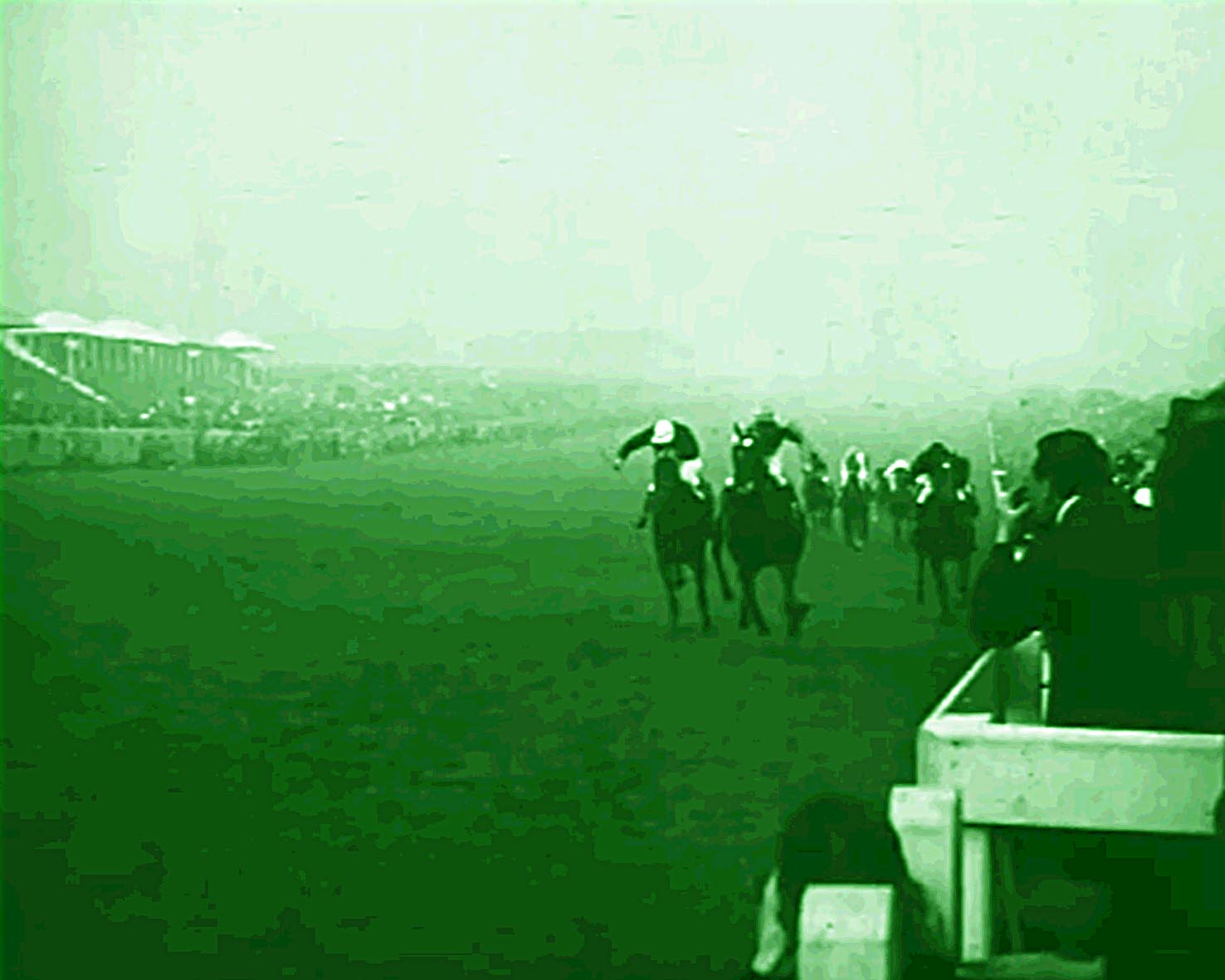 Britain’s first sports broadcaster
Britain’s first sports broadcaster
The first sports event ever to be reported on the radio in Britain took place on Wednesday, June 6th, 1923. This wasn’t the first sports broadcast in the world: the Americans had got there first with a baseball game nearly two years earlier. Nor was it in Kent, for it concerned the Derby at Epsom, Surrey. Its presenter, however, was a Kentishman: Edgar Wallace. The Derby was then one of the biggest events in national life, drawing a crowd of a quarter of a million. As a household-name writer and seasoned journalist, Wallace was not a bad choice to cover it. The race didn’t disappoint, either, providing champion jockey Steve Donoghue, on Papyrus, with a record third straight win. The service was provided by the British Broadcasting Company, created eight months earlier to get organised broadcasts started under licence. Within four years, however, the BBC would be replaced by Lord Reith’s Corporation, opening the door to Gary Lineker.
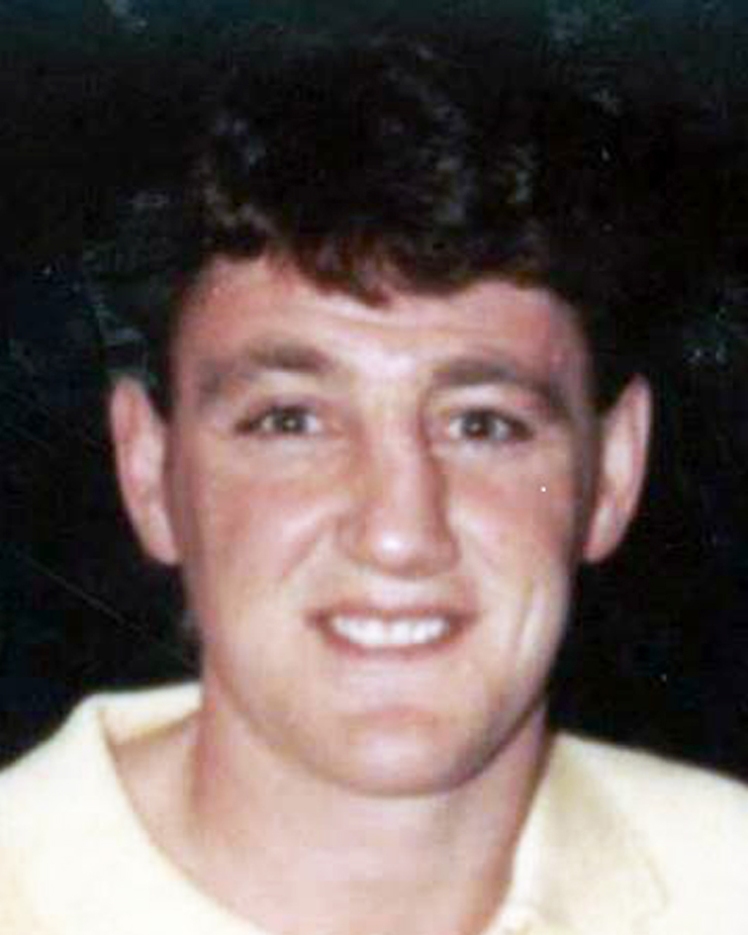 Steve Bruce (b 1960)
Steve Bruce (b 1960)
Though a Geordie and past manager of Newcastle United, Steve Bruce owes his illustrious career to Gillingham. Aged 16, Bruce was starting work as a shipyard plumber when he was invited to a trial in Kent. He signed as an apprentice, making over 200 appearances in a seven-year stay. He moved to Norwich City before hitting the big time. In 1987, Alex Ferguson recruited him for the Manchester United squad he was rebuilding. Alongside Ramsgate-born Gary Pallister in central defence, Bruce provided the foundation stone of the colossus that came to dominate the early 1990s. His proudest moment at Old Trafford was captaining the team to the club’s first Double in 1993-94. In total he won the Premier League and the FA Cup three times each, the League Cup, and the European Cup Winners’ Cup. He has subsequently been little more than a jobbing manager for around a dozen clubs, but it’s certainly better-paid work than plumbing.
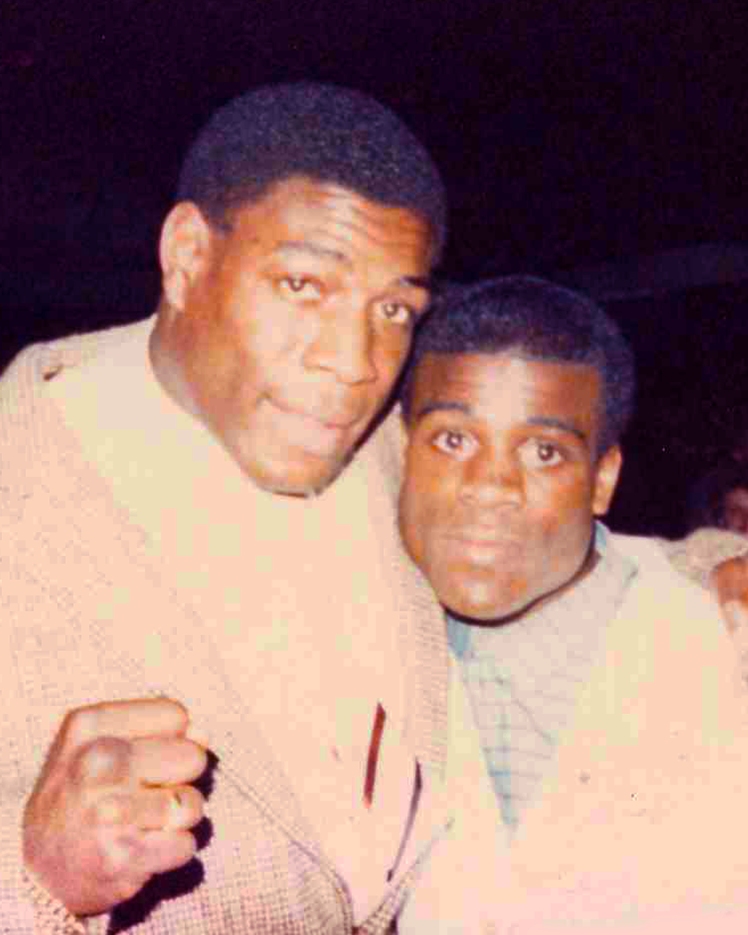 Frank Bruno (b 1961)
Frank Bruno (b 1961)
Bruno was brought up in Wandsworth, the son of Dominican and Jamaican parents. In his teens, he was sent to reform school, but followed the well-trodden path into boxing, to which his powerful physique suited him admirably. His particular talent was knocking people out, a feat he performed 21 times in a row. Unluckily, his career coincided with that force of nature, ‘Iron’ Mike Tyson, who twice beat him up. He also had a knack of losing key fights when ahead on points. Nevertheless, at the fourth time of asking, Bruno became WBC World Champion in 1995, to the nation’s delight. Bruno established an informal comedy routine with commentator Harry Carpenter, his catchphrase “Know what I mean, ‘Arry?” earning him enduring popularity. After his retirement, he suffered from bipolar disorder, but showed his mettle by helping fellow mental-health sufferers. In 2016, he reported that a luxury caravan in Eastchurch had brought him peace of mind.
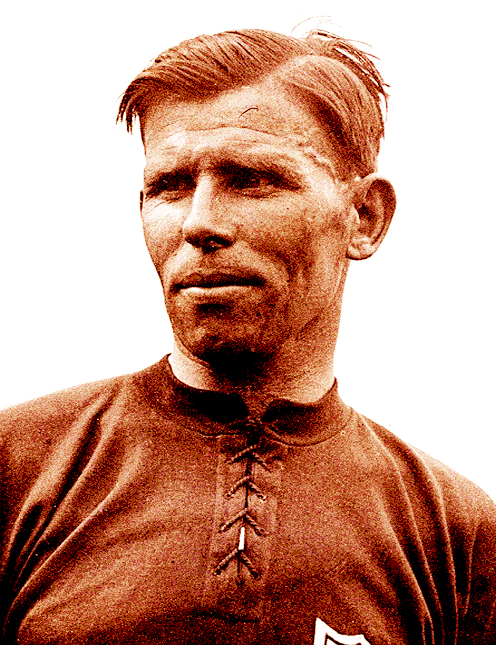 Charlie Buchan (1891-1960)
Charlie Buchan (1891-1960)
Having been born in Plumstead, it was natural for Charlie Buchan to join his hometown club, Woolwich Arsenal. He never played for them before being loaned to Northfleet United. He signed for Leyton in 1910, but was soon snapped up by Sunderland. He went on to earn fame on Wearside by scoring 224 goals in 413 appearances before and after WW1. Though generally considered the best English player, he was able to represent England just six times, scoring four goals, before returning south to make 102 appearances for Arsenal. He can’t have known when he retired at 36 that life was about to start again. He became a familiar BBC commentator, wrote for the ‘Daily News’, penned a coaching manual, and helped set up the Football Writers’ Association that survives today. Most memorably, however, in 1951 he founded the landmark magazine ‘Charles Buchan’s Football Monthly’, which carried on for another 14 years after his death.
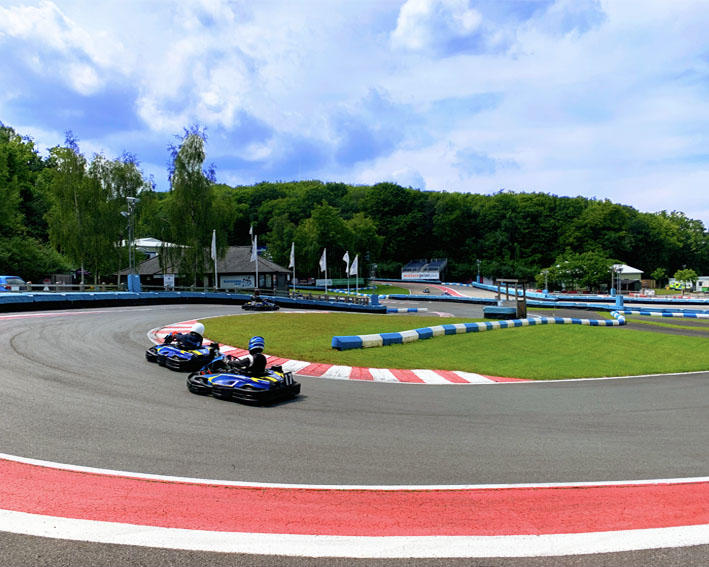 Buckmore Park Kart Circuit
Buckmore Park Kart Circuit
Strangely enough, the Kart Circuit up Blue Bell Hill alongside the M2 was the brainchild of a scoutmaster called Cecil. Wanting to expand the facilities available to scouts at the Buckmore Park centre, Mr Whitehead decided upon go-karting. As a local businessman, he cunningly cadged a design from motorsport experts and got the track built as a military engineering training project, without paying a penny. The scouts used it for two decades from 1963, but it fell into disrepair. In 1985 it was sold off, and then upgraded to competition standard. The circuit was subsequently extended to full international length, by which time future F1 champions Lewis Hamilton and Jenson Button had developed their racing skills there. In the last two years of his life, the great John Surtees bought the circuit outright and invested in further upgrades. A technically challenging circuit with a first-class karting school, it is generally reckoned one of the best kart facilities in the country.
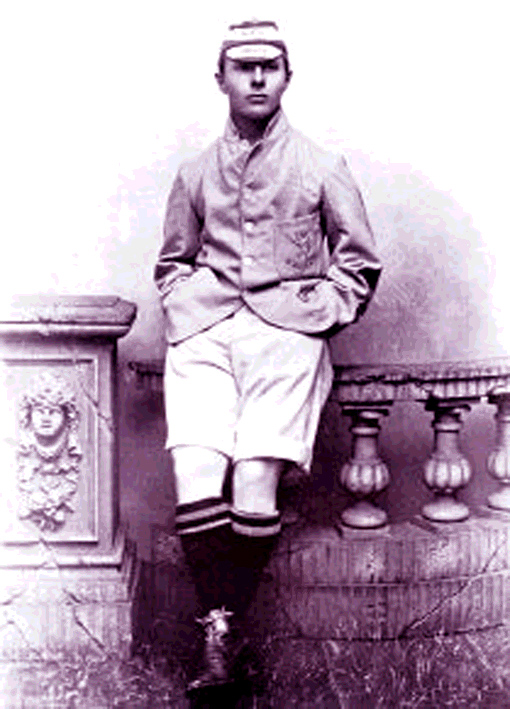 Pinky Burnup (1875-1960)
Pinky Burnup (1875-1960)
Cuthbert Burnup was born into an affluent family in Blackheath, and went to Cambridge after attending Malvern School. He won Blues in football and cricket, but after taking up stockbroking remained an amateur in both sports. He played football 79 times for Corinthians as outside-left, and won a cap for England against Scotland at Celtic Park while still a student. He became best known, however, as a solid opening batsman for Kent, scoring the county’s first century before lunch in 1896, and in 1900 notching its first double century. Having captained Kent in the 1903 season, he led the national batting averages with an average of 67.06 in 1906, when Kent won their first County Championship. Aside from scoring a thousand runs in a season eight times, he could bowl a bit, and while playing for MCC became the only man to concede ten runs off a single ball, the consequence of an abortive experiment with the scoring rules.
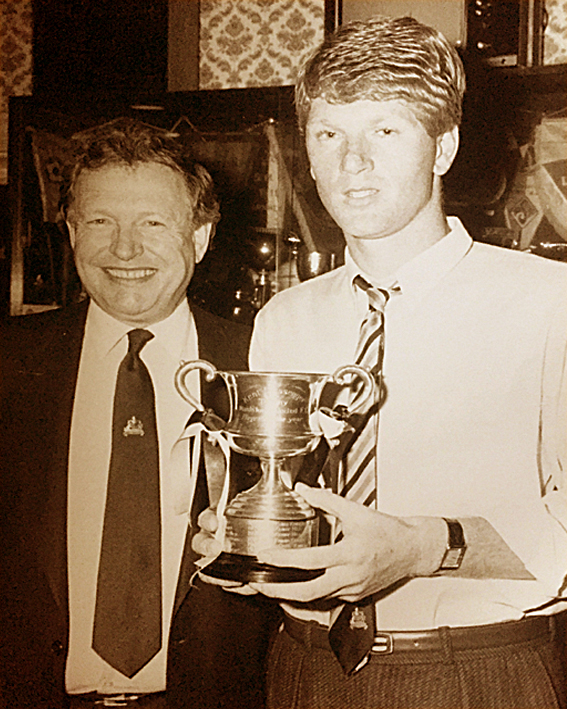 Steve Butler (b 1962)
Steve Butler (b 1962)
A Brummie by birth, Stephen Butler played for Brentford in the Third Division before joining Maidstone United in 1985. After a relatively quiet first season, he was to prove a goal-scoring sensation, finishing as top scorer in five consecutive seasons. He accompanied the Stones on their three-season adventure in the Football League, but left for Second Division Watford when opportunity beckoned. After a decade that also took in Cambridge United, Gillingham and Peterborough United, he returned to the re-formed Maidstone as player-coach in 2001 at the age of 39, providing invaluable experience in a season that brought a league-and-cup double, and endeared himself to a new generation of fans by scoring a hat-trick in an FA Cup tie at local rivals Tonbridge Angels. He left again to join Peter Taylor in a coaching role at Hull City, but returned briefly as assistant manager in 2010. He remains Maidstone United’s all-time top scorer, with 178 goals in 315 appearances.
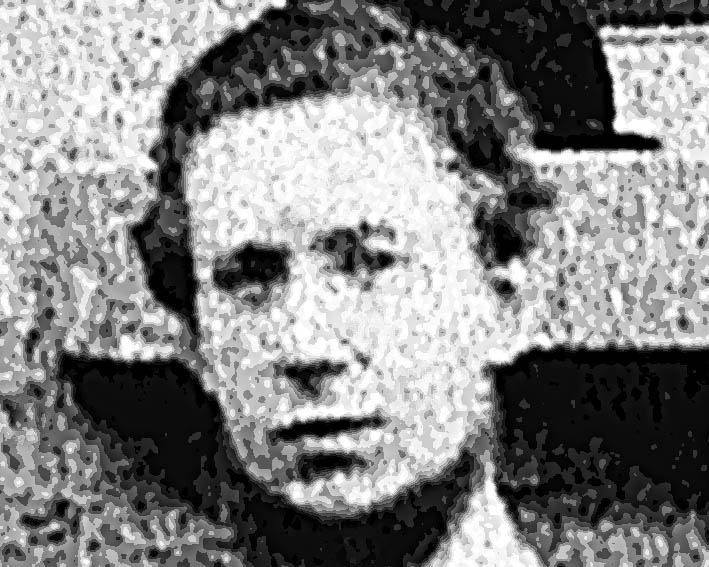 Francis Maule Campbell (ca 1844-1920)
Francis Maule Campbell (ca 1844-1920)
One of the greatest travesties in world sport is an imposter’s name on the World Cup of Rugby Union. The myth that Revd William Webb Ellis created the sport in 1823 by carrying the ball while playing football was fabricated by Rugby School in 1895. Ellis wasn’t even involved in the instance of cheating that prompted it. The name on the Cup should in fact be Blackheath-born Francis Maule Campbell’s. In 1863, when football was still a unified sport, he became Treasurer of the new Football Association, the youngest of its three officials. It was Campbell’s decision to withdraw his club Blackheath FC from the FA late in the day, on the grounds that the new laws made the game less masculine. He thereby created the schism in football that paved the way to the creation of the Rugby Football Union in 1871. Later in life, Campbell became a wine merchant and moved to Wales.
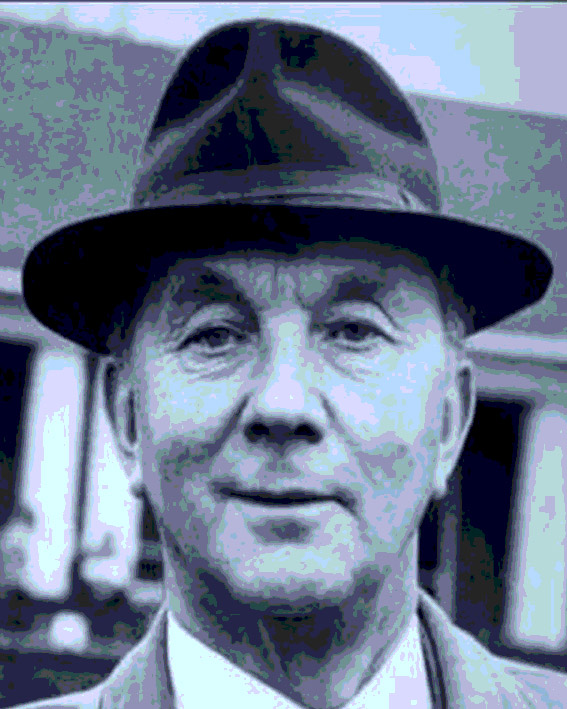 Peter Cazalet (1907-73)
Peter Cazalet (1907-73)
Peter Cazalet was literally to the manor born, at the family pile of Fairlawne in Shipbourne. He played cricket for Kent 22 times, the highlight being a partnership of 204 with Frank Woolley when his personal score was 150. At 23, however, he turned to horse racing. He became a National Hunt jockey while building race stables at Fairlawne, which he inherited after both his elder brothers died in wartime. After serving as a tank major in WW2, he became a noted racehorse trainer. He trained horses owned by both the Queen and the Queen Mother, had over a thousand winners, and was champion trainer three times. The incident for which he is best remembered, however, was a calamity. In the 1956 Grand National, Cazalet’s jockey Dick Francis was riding the Queen Mother’s horse Devon Loch to certain victory when, with 50 yards to go, it inexplicably jumped a phantom fence and collapsed. Cazalet himself now lies buried in Shipbourne church.
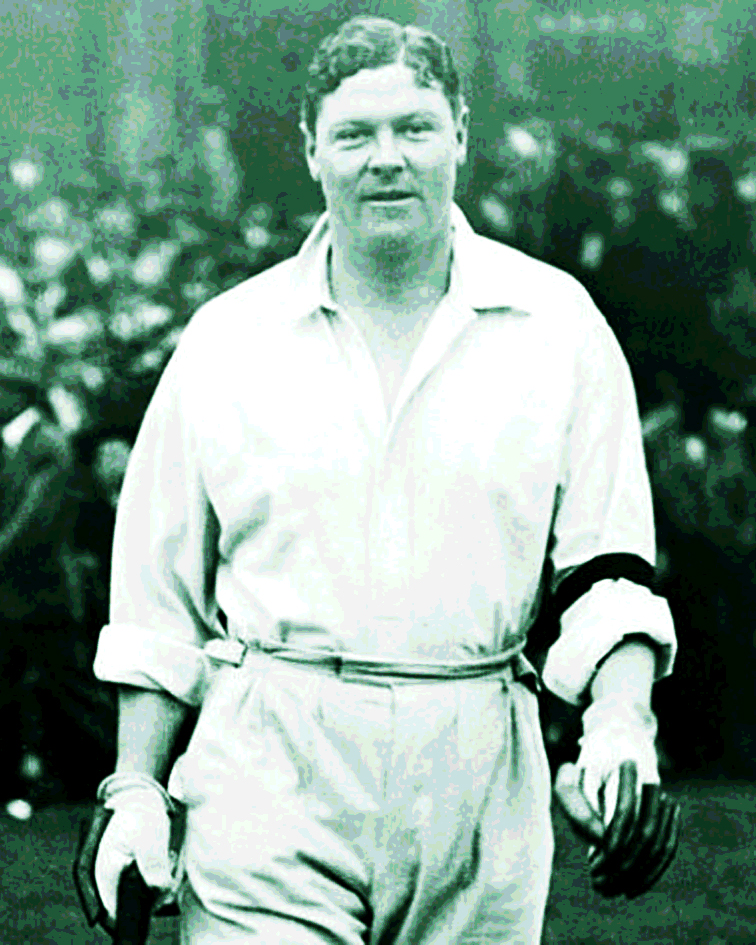 Percy Chapman (1900-61)
Percy Chapman (1900-61)
Arthur Chapman was born in Reading, Berkshire. The son of a schoolteacher, he went to Cambridge before joining the local H & G Simonds Brewery, which happened to own Mackeson in Hythe during the 1920s. Relocated to Kent, he qualified to play cricket for the county as an amateur. His batting style was Bothamesque: he once scored 260 in three hours against champions Lancashire at Maidstone, but was inclined to score fast and get out. Nevertheless, he could also count outstanding fielding and inspirational leadership in his arsenal, and became a national hero when, in 1926, he came in as England captain for the 5th Test and regained the Ashes after 14 years. Then, in the 1st Test of England’s 1928-9 Ashes tour, he engineered an astonishing 675-run victory, still a record. His Achilles heel, however, was alcohol. He put on weight, and would appear drunk in public. Following his divorce, his waning years were blighted by loneliness and illness.
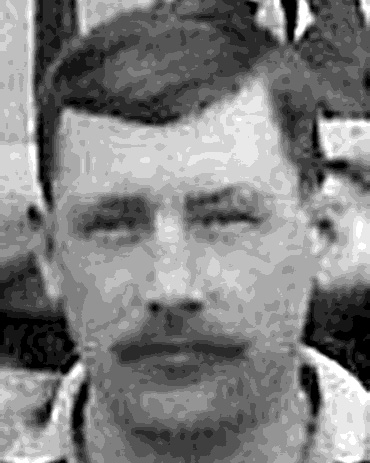 Tommy Chapman (1871-1929)
Tommy Chapman (1871-1929)
Thomas Chapman was born in Newtown, Montgomeryshire, and played for his local club for five years. He went on to join Manchester City in Division 2 for one season. In 1895 he was selected for Wales, which he represented as a centre-half seven times, scoring twice. His team-mate in both teams, the great Billy Meredith, described him as a man who never knew when he was beaten. Chapman moved next to Grimsby Town, where he stayed for two seasons, before moving south to non-League Chatham Town. In 1901, the club folded on account of financial difficulties, so he moved down the road to Maidstone United of the Kent League. There he formed a seemingly unbreakable partnership with former West Bromwich Albion and Luton Town midfielder Billy Ford. By the time he retired in 1907, at the age of 36, he’d racked up the best part of 250 appearances. He lies buried in Chatham cemetery.
 Charlton Athletic Football Club
Charlton Athletic Football Club
Charlton Athletic was one of three major clubs alongside Chelsea and Crystal Palace to be founded in 1905. Its base was the village of Charlton-near-Woolwich, so named to distinguish it from Charlton-near-Dover. Opportunity knocked in 1913 when Arsenal moved out of the area. The Addicks, who had played youth football till then, formed a senior side with the aim of becoming the new local top dog. After WW1, an army of fans was impressively persuaded to dig out a new stadium from a chalk pit that became the famous Valley. The club played one season in the Kent League and another in the Southern League before joining the Football League in 1921. Incredibly, it finished runners-up in Division 1 above Arsenal in 1936-37, and won the FA Cup ten years later. The Addicks – nicknamed after fishmonger Arthur Bryan’s habit of gifting the players ‘addick and chips – still have many fans in Kent.
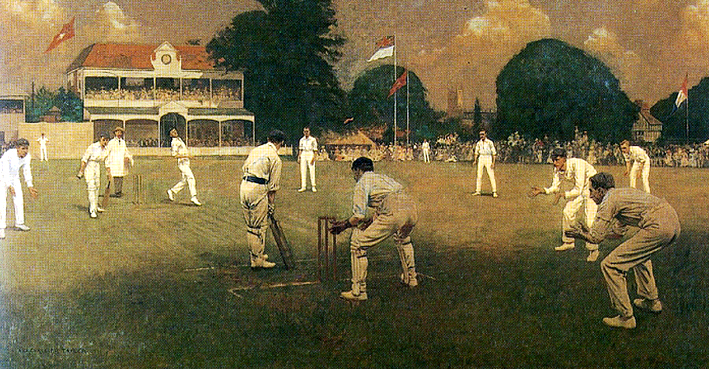 Chevallier Tayler’s ‘Kent Vs Lancashire at Canterbury’
Chevallier Tayler’s ‘Kent Vs Lancashire at Canterbury’
The 1890s were difficult for Kent cricket fans to swallow. The county had long been pre-eminent in English cricket, but the formal County Championship inaugurated in 1890 seemed to be largely the preserve of Surrey. It was not until 1906 that things finally came together and Kent landed its first Championship. The club president Lord Harris decided that the event needed to be commemorated definitively, and commissioned an oil painting by the eminent artist Albert Chevallier Tayler. Much thought went into the subject matter, the upshot being that it would represent a ‘real’ moment in a match against Lancashire during Cricket Week at the St Lawrence Ground in Canterbury. Some details were cheated slightly, but it makes for a unique image. The club sold the picture in 2006 for £680,000, and it now hangs in the Lord’s Long Room. The whole story is told graphically in a book by former Kent CCC president Jonathan Rice.
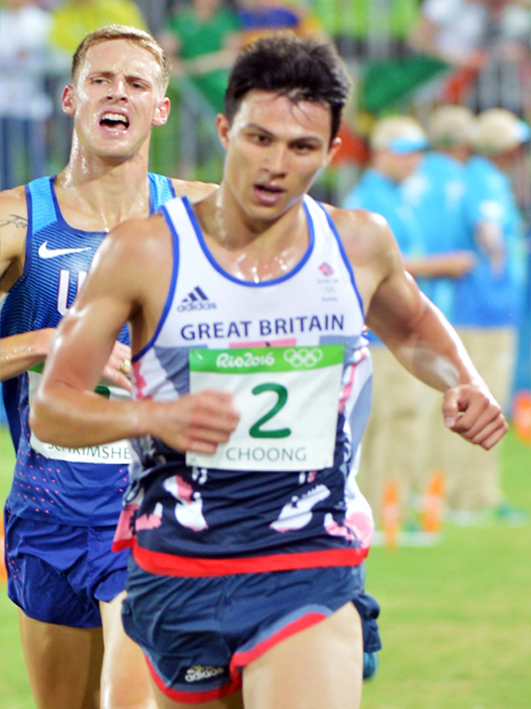 Joe Choong (b 1995)
Joe Choong (b 1995)
Joseph Choong was born in Orpington, the son of a Kentish mother and a Chinese Malaysian father. He attended prep school in Sevenoaks, where he played a lot of rugby, and learned to swim to a national standard in Dartford. When he and his brother Henry went to Whitgift school in Croydon, they were ushered into biathlon, from which both progressed into modern pentathlon. At 15, Joe won the under-17s European championship, and by the age of 18 was ranked the world youth No. 1. No dumb jock, he went to the University of Bath to study Mathematical Sciences and to perfect his pentathlon techniques. Following graduation, he won his first Senior medal, a European silver. His real breakthrough, however, came in 2019, when he won gold at the World Cup and silver at the World Championships. Ranked world No. 1 and brimming with confidence, he surprised few by winning gold at the Tokyo Olympics in 2021.
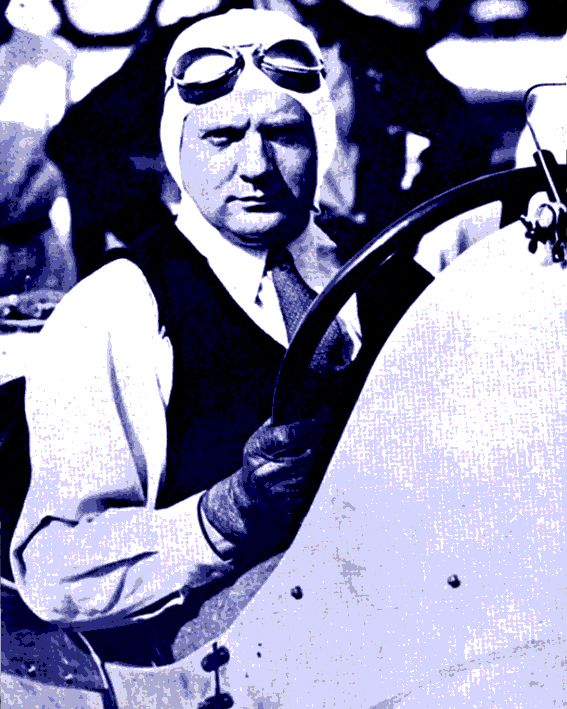 Squadron Leader John Cobb (1899-1952)
Squadron Leader John Cobb (1899-1952)
Cobb was fortunate to be born at Esher, close to the Brooklands circuit. After attending Eton and Cambridge, he made his racing debut there, and won his first event at the West Kent Motor Club in 1925. Part of the generation that relished racing-cars with inordinately large engines like Louis Zborowski’s Chitty Bang Bangs, the ‘Gentle Giant’ drove similar monsters in numerous events and locations, and entered history in 1938 by setting a new world land-speed record of 350 mph in his Railton Special at Bonneville Salt Flats. It lasted only a day, but he recovered it in 1938, and in 1947, after serving in the RAF during WW2, achieved 394 mph – a record that lasted 17 years. Attracted by the challenge of being simultaneously the fastest man on water, he made an attempt on September 29th, 1952 on Loch Ness. While exceeding 200 mph for the first time, his vehicle Crusader ran fatally out of control.
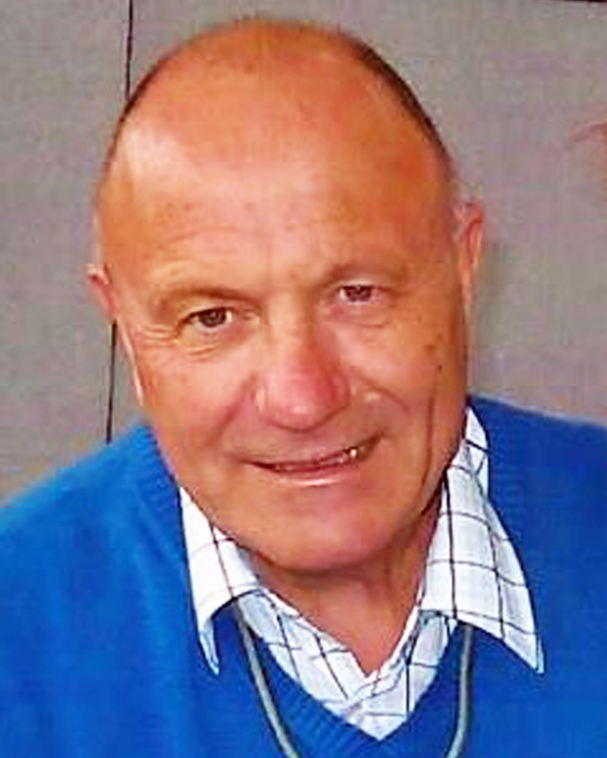 George Cohen (1939-2022)
George Cohen (1939-2022)
Footballer George Cohen was the only member of England’s World Cup winning team of 1966 to have an enduring connection with Kent. His playing style as a full-back was like the man himself: stolid, straight, and dependable. England and Fulham were the only two teams he ever played for. He stayed with the Cottagers for 13 years, racking up 459 competitive performances. He had a short career in management at Tonbridge Angels, lifting the Kent Senior Cup in 1975 – his only other trophy. Thereafter he settled in Tunbridge Wells, at first in real estate, and then in retirement. His life was beset by traumas: a knee injury that ended his career, bowel cancer that recurred twice, his mother’s death under a juggernaut, his brother’s decease after a nightclub brawl. Yet he remained the sort to count his blessings. Extraordinarily, his nephew Ben Cohen also won a World Cup medal, with the 2003 England Rugby Union team.
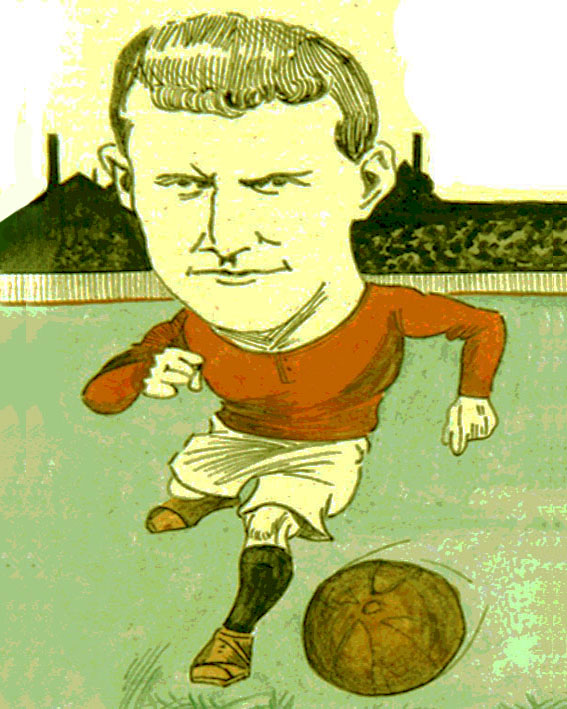 Tim Coleman (1881-1940)
Tim Coleman (1881-1940)
John George Coleman, known for some reason as ‘Tim’, started playing football around 1900 at his home-town club, Kettering Town. He spent a season at Northampton Town before joining Woolwich Arsenal, then of the Second Division but soon the First. A natural goal-scorer, he played 172 competitive matches as a Gunner, racking up 79 goals, and appeared once for England. After five seasons, he transferred to Everton for two years, also in the top flight, and squeezed in Sunderland, Fulham, and Nottingham Forest before WW1 intervened. After the War, he got a goal a game for Tunbridge Wells Rangers, and ended his career as player-coach for Maidstone United. He brought with him his son Arthur, a useful outside-right; the two actually played together in a friendly against Charlton Athletic, a rare case of a father and son appearing in the same team. Still playing at 40, Coleman had registered over 200 goals.
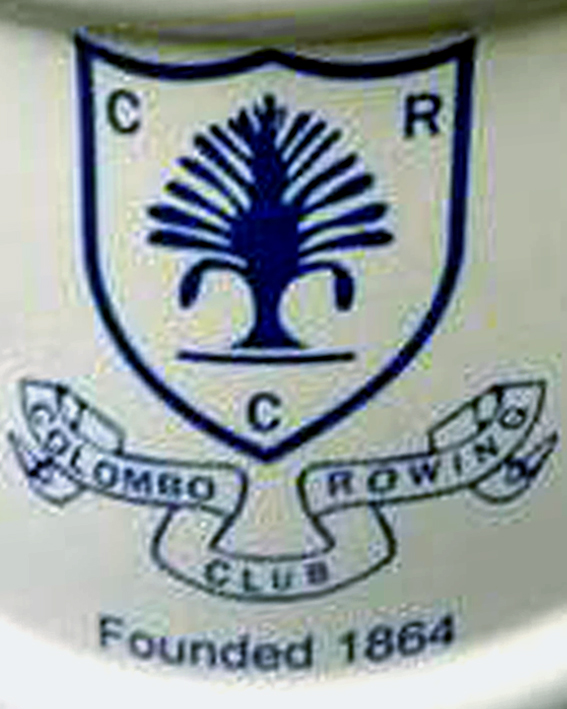 Colombo Rowing Club
Colombo Rowing Club
Bexley-born lawyer Edward Creasy became chief justice of Colombo, Ceylon in 1860. Four years later, as president of the Royal Asiatic Society’s Ceylonese branch, he set up a rowing club. Its crews were kitted out in Oxford’s dark blue – rather magnanimously, since he was himself a Cambridge alumnus. In 1898, the club instituted a competition with Madras’s boat club on the lines of the Varsity Boat Race, making it the second oldest regular challenge between institutions in the world; the trophy is still competed for today during the annual Madras-Colombo Regatta. Originally the preserve of colonists, the club developed a distinctly Sri Lankan membership after independence in 1948. From its purely sporting origins, the CRC has grown into a prestigious social club, whilst hosting several regattas every year. One event held is the Harry Creasy Men’s Coxed Fours, named after Creasy’s son, who co-established a Colombo law firm that still thrives today.
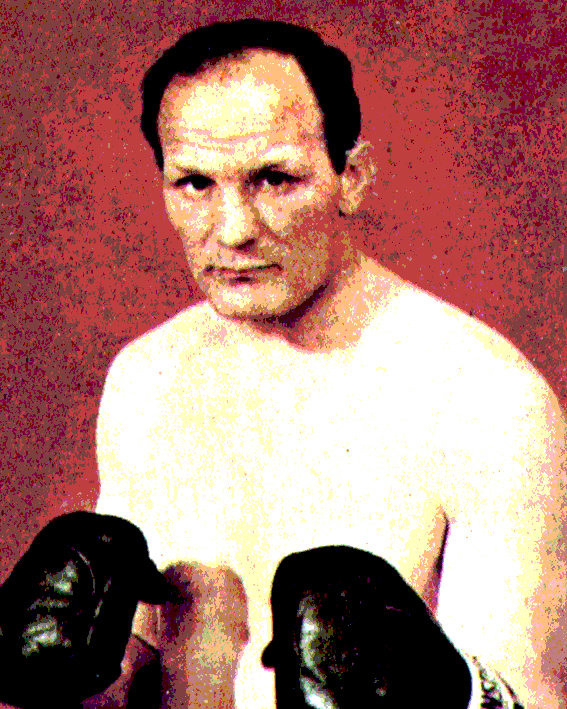 Sir Henry Cooper (1934-2011)
Sir Henry Cooper (1934-2011)
Until Frank Bruno came along, Cooper was the undisputed heavyweight boxing hero of Great Britain. Though born in Lambeth, he grew up in Bellingham, earned pocket-money recycling golf balls at Beckenham, and at 15 took up boxing at Eltham Amateur Boxing Club. His career was patchy in terms of results, but he did progress to the stage of holding the British, Commonwealth and European titles simultaneously. The left-hander won the nation’s hearts with two epic struggles against the young Cassius Clay, later known as Muhammad Ali. In the first, he actually floored ‘The Greatest’, who only kept going because his coach illegally administered smelling-salts. Unfortunately, Cooper’s Achilles heel, his eyes, let him down. After an ignominious defeat against Joe Bugner, he became a familiar face on TV, starring in road-safety films and, most memorably, Brut aftershave commercials featuring his catchphrase “Splash it on all over!” He was twice BBC Sports Personality of the Year.
 Martin Corry (b 1973)
Martin Corry (b 1973)
At 6 feet 5 and nearly 18 stones, Martin Corry was not the man you wanted bearing down on you on a rugby pitch. He was born in Birmingham but raised from a young age in Tunbridge Wells, where he played for the Grammar School, the town, and the county. He spent time at both Gosforth and Bristol before joining the superlative Leicester Tigers of the late 1990s and early 2000s. Playing at lock, flanker or number eight, he was a mainstay and captain of the team that won four Championships and twice raised the European Cup. He also played for England 64 times, eventually as captain; he was in the England squad that won the 2003 World Cup, when he played in one group match, and then again the 2007 squad that finished runners-up. He even captained the British Lions. He retired from rugby in 2009, and now works for a customer relationship company.
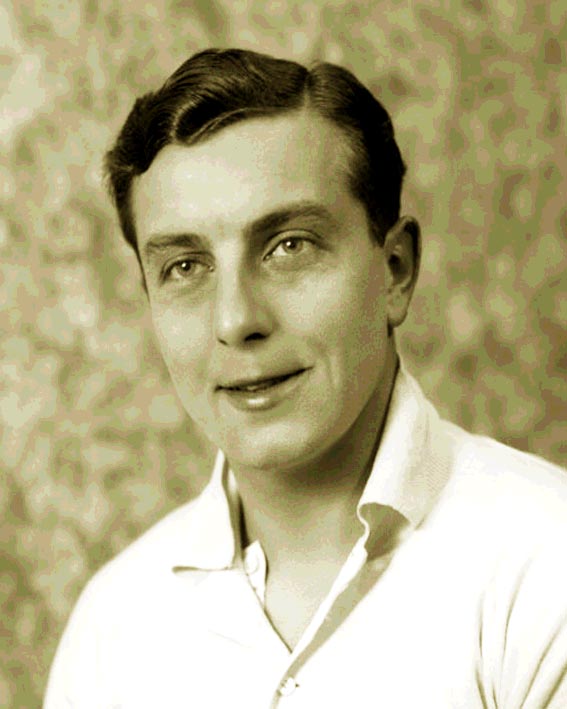 Sir Henry Cotton (1907-87)
Sir Henry Cotton (1907-87)
Thomas Henry Cotton was born in Cheshire, but grew up in Dulwich. In addition to cricket, he took up golf in Honor Oak at 13. He was still only 19 when he became the golf pro for Langley Park Golf Club near Beckenham, and played at Lamberhurst. He stayed for six years before going to work in Belgium. He made his mark on golf history by winning the British Open at Royal St George’s in 1934, posting a record second round of 65 – an achievement commemorated by the vintage Dunlop 65 ball. He was to win the title twice more, in 1937 and 1948. He also captained the Ryder Cup team in 1947. Cotton relished fame and wealth: he married an Argentinian beef heiress called Isabel-Maria Estanguet de Moss, drove a Rolls-Royce, and indulged ostentatiously in the dolce vita. After retiring, he started designing golf courses, and wrote several golf books. He was knighted immediately before his death.
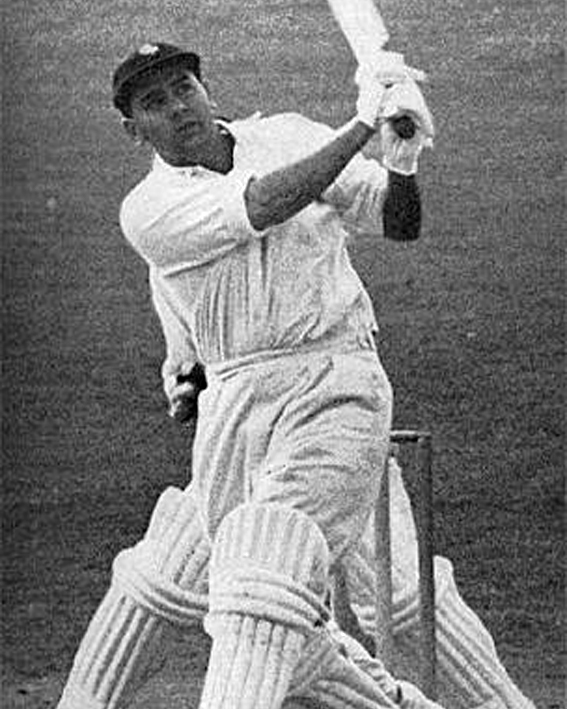 Lord Cowdrey of Tonbridge (1932-2000)
Lord Cowdrey of Tonbridge (1932-2000)
Michael Colin Cowdrey’s initials revealed his father’s determination that he should become a cricketing legend. Born on the family’s tea plantation in India, ‘Colin’ left for England aged five, and scored 93 in his first match at his new prep school. After WW2, he went to Tonbridge School, where he showed more of his precocious talent. He became Kent’s youngest ever cap at 18, captain of Oxford University at 21, and an England debutant at 22 in Australia, when he scored the first and best of his 22 centuries in 114 Tests. He subsequently overtook Wally Hammond’s records for both Test runs scored and catches taken. Though enjoying hero status at Kent, where he spent his entire professional career, he was the epitome of the English gentleman in both his elegant batting style and unassuming manner. As well as 107 first-class centuries, he left behind a cricketing dynasty: sons Chris and Graham and grandson Fabian all played for Kent.
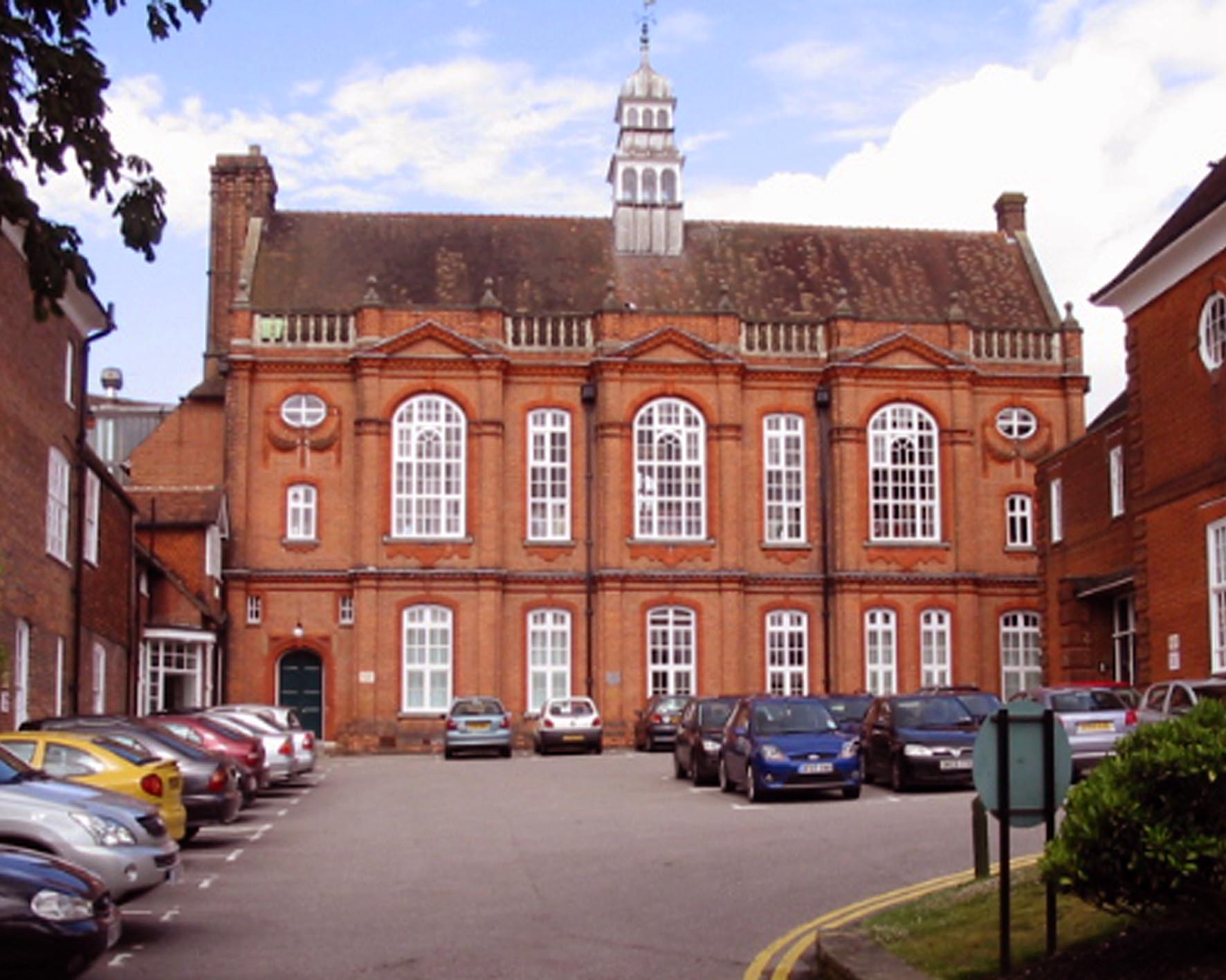 The Cranbrook School of sports commentary
The Cranbrook School of sports commentary
The Queen Elizabeth’s Grammar School, now known as Cranbrook School, boasts a remarkable record of nurturing outstanding sports commentators. Either side of WW2, it produced no fewer than three. The first was local boy Peter West (1920-2003), who for nearly four decades remained the smiling face of BBC test cricket, also covering Wimbledon and the Olympics and occasionally amusing by unintentionally nonplussing interviewees with his coruscating erudition. Not dissimilar was London-born Barry Davies (b 1937), who for three decades rivalled John Motson as the BBC’s senior football commentator, and is still revered for his colourful evocation of great moments in numerous world sports. The knowledgeable Brian Moore (1932-2001) from Benenden headed up ITV‘s football coverage for thirty years while amiably hosting various other sports programmes. Hearing a recording of any of them today is liable to remind sports fans how much better served they were before intellect and eloquence went out of fashion in sports broadcasting circles.
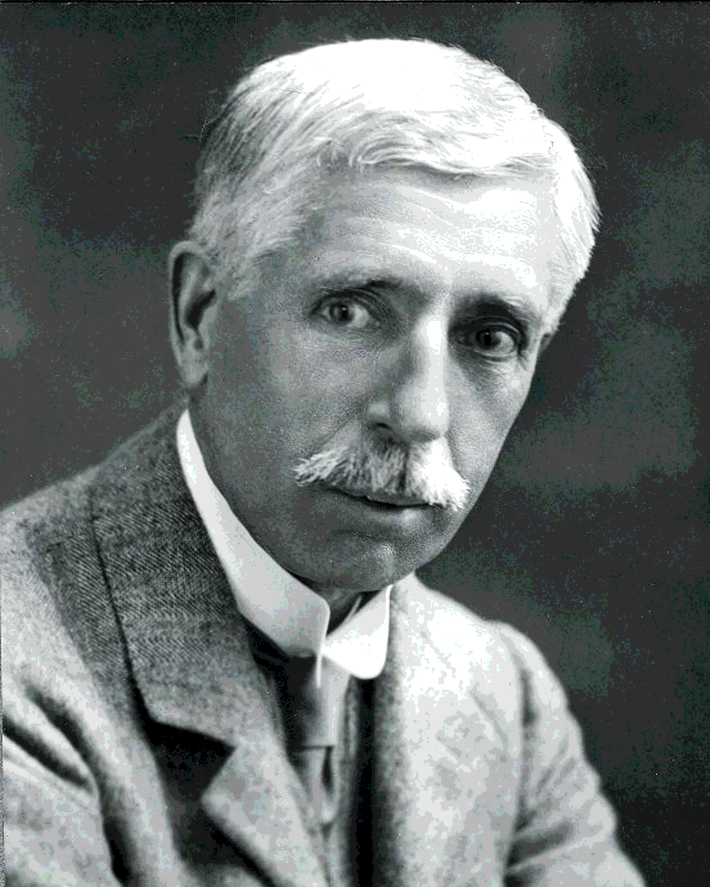 CS Craven (1863-1940)
CS Craven (1863-1940)
By the time Charles Samuel Craven came south in the early 1890s, he already had a remarkable sporting record. This Chesterfield-born man was not only a co-founder of Darlington FC in 1883, serving as both secretary and goalkeeper; he went on in 1889 to found the Northern League, also known as the Craven League. His administrative skills led Leeds Cricket & Rugby Club to poach him in 1890 to work on the launch of Headingley, home of Yorkshire cricket. Having moved to Maidstone by 1894, he took a team of English players abroad to take on Holland. In 1895 he became the first secretary of the Maidstone Athletic Ground and, the following year, secretary of both the Maidstone Cricket Club and Mid Kent Football Club that he had co-founded to play there; he was goalkeeper for the latter. He also chaired the Maidstone League, and even did a bit of refereeing. A purist, he was a fervent supporter of the amateur ideal.
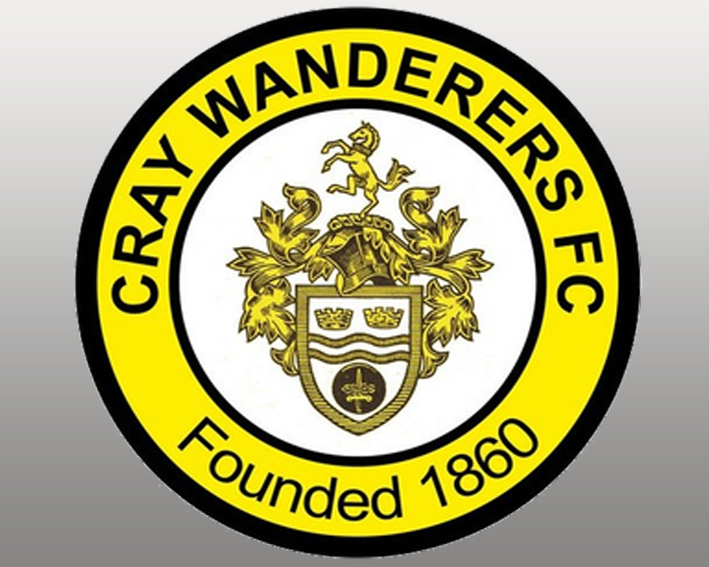 Cray Wanderers
Cray Wanderers
The oldest extant football club in the world is Sheffield FC (1857), still competing in the Northern Premier League. What is less well known is that the second oldest is quite possibly Cray Wanderers. The club’s foundation myth has its origins in the construction of a viaduct carrying the new London, Chatham & Dover railway line across the Cray Valley. The itinerant workers supposedly played matches against the locals on the land beneath it, now the St Mary Cray cemetery in Star Lane. Around 1860, they formed a club bearing the village’s name, and in 1887 that club became Cray Wanderers. The Wands have not achieved a great deal in their long life, still playing only in the Isthmian League; but the club’s antiquity certainly deserves to be celebrated on its badge. There’s only one issue: the viaduct was actually built between 1858 and 1860. It’s just possible that Cray ran Sheffield an even closer second.
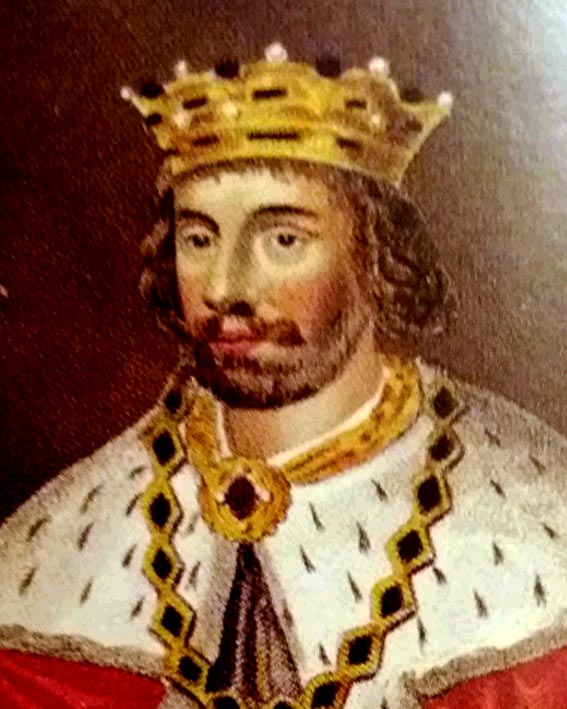 Creag’
Creag’
Investigations into the origin of cricket inevitably founder upon one tantalisingly inconclusive piece of evidence. An official document of 1200 lists expenses of £6 incurred by the young Prince Edward in playing a game of creag’. Was this the first record of cricket? A shift from ‘g’ to ‘ck’ is not improbable in the transition from Middle to Modern English; nor is ‘ea’ to ‘i’. As for that apostrophe, it was quite normal to indicate a common suffix that way, such as ‘-et’. Wishful thinkers have no doubt about it; yet the doubt remains. One thing is for sure: if it wasn’t cricket, we’ve not a clue what he was playing. What’s intriguing here, though, is that the game was played at Newenden, in the Weald of Kent. As for the future King Edward II, we can only hope he was a better cricketer than monarch. He ended up suffering a notoriously grisly fate involving a red-hot poker.
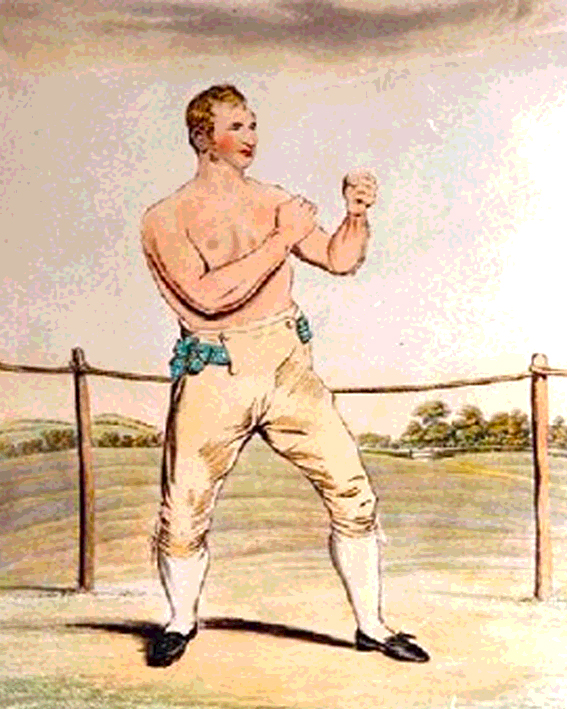 Tom Cribb (1781-1848)
Tom Cribb (1781-1848)
Any visitor to the ‘Tom Cribb’ pub in London’s West End might reasonably wonder whom it was named after. The answer is a Bristolian bare-knuckle champion who ended up retiring to Woolwich, where he is further commemorated with a street name and a grandiose lion memorial over his grave. Cribb first moved to London at 13, and eventually became a coal porter. He had turned 23 when he took on his first bare-knuckle fight, early success convincing him to turn professional. Two years later, he ground out a victory over Jem Belcher, who had recently been English champion for five years, and in 1808 beat Bob Gregson in 23 rounds to become the champion himself, a title he retained for 14 years. In that time, he beat Belcher again, and twice defeated the self-proclaimed American champion Tom Molineaux. He later became the landlord of the Union Arms, which stood on the site of today’s ‘Tom Cribb’.
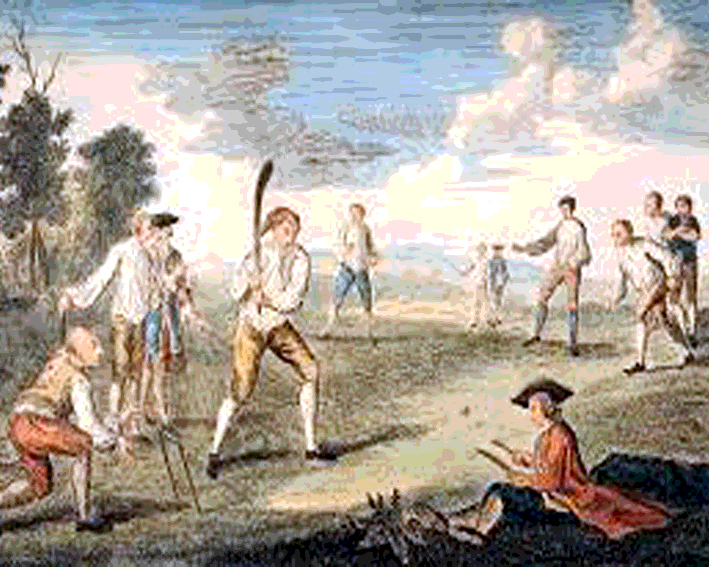 Cricket
Cricket
There is no dispute that cricket was invented long ago in the Weald. It may even have been introduced by the Saxons. It simply needed a flat patch of land deforested for pasture, with a wicket gate to aim at or else defend with a shepherd’s crook. The first legal record of ‘cricketing’ comes from Guildford around 1550. That aside, the firsts are almost uniformly Kentish: the first recorded match (Chevening 1610), first mention as a respectable pursuit (Ruckinge, 1629), first religious denunciation (Maidstone, 1640), first match for money (Coxheath, 1646), first record of player names (Malling, 1705), first county match (Dartford Brent, 1709), first ‘county champions’ (Kent, 1728), first England match (Bromley Common, 1739), first match scores (Kent vs All England, 1744), first recorded century (Sevenoaks, 1769), first scorecards (Sevenoaks, 1776), etc. Alongside innovations in bat and ball making, round-arm and over-arm bowling, and the third stump, Kent has an unmatchable claim to inventing the first world sport.
 ‘Cricket: An Heroic Poem’
‘Cricket: An Heroic Poem’
Writing as James Love in honour of his wife, née Lamour, James Dance (1721-74) created something unprecedented: the first known poem concerning a cricket match. Although it’s unclear where Dance was from, the tale could not read better for Kent fans. In mock-heroic form, it tells how the county’s evidently peerless cricketers threw down a challenge to the nation. It was accepted by an ‘All England’ team, most of whom actually came from one Sussex village. The match was staged at the historic Artillery Ground, Finsbury on Tuesday, June 2nd, 1744. Though some details are sketchy, Dance describes, better than anyone previously, who played, what happened, and who won. With Kent batting last, the result was in the balance until the very end, when the normally dependable Waymark dropped a skier and Kent were victorious. As the poet put it, “And now the Sons of Kent compleat the Game,/And firmly fix their everlasting fame.”
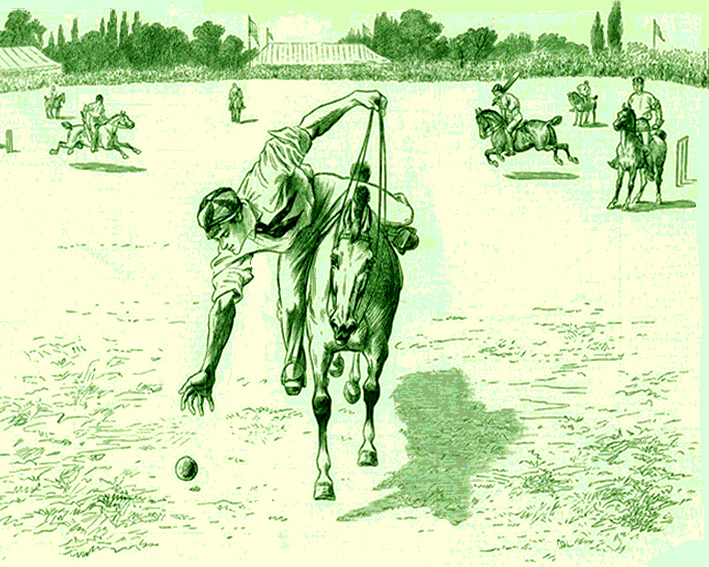 Cricket on horseback
Cricket on horseback
Decades before a British Army officer from Sussex imported polo from India, Kent witnessed an alternative to his horseback hockey: horseback cricket. In 1794, the ‘Kentish Gazette’ ran an advert publicising a “very singular” match in Linsted Park, with the teams – the Gentlemen of the Hill, and the Gentlemen of the Dale – playing for a prize of one guinea a man. Nothing is known of the result, nor indeed how exactly the game was played. Six years later, however, another contest was staged by Sir Horatio Mann, famous for his private First-Class cricket ground at Bourne Park further east along the London to Dover road, not to mention his association with the Mozarts. Horseback cricket evidently did not catch on, presumably because of such difficulties as the need for a new fetlock-before-wicket rule. It was nevertheless the subject of a light-hearted TV reconstruction in 2010 by ‘sports historian’ turned comedian Alex Horne.
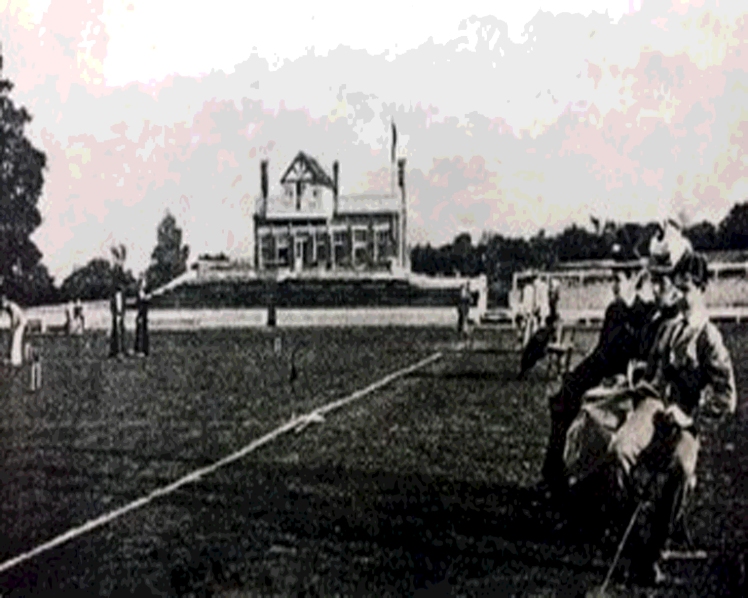 Croquet
Croquet
When the Athletic Ground opened in London Road, Maidstone in 1895, it had grander aspirations than to be the non-League football ground it eventually became. It was meant primarily as a cricket ground, but catering for a wealth of other sports. One such was croquet. Although today a fringe sport, croquet was immensely popular with early Victorians; witness the croquet scene in ‘Alice’s Adventures in Wonderland’, written in 1865. The sport had been on the wane when, in the 1890s, Mrs Hill and Mrs Machonochie initiated an open tournament on Maidstone’s Lockmeadow, sparking a revival of croquet as a popular mixed-sex sport. Today’s national body, the Croquet Association, was actually founded in the town in 1896. An annual tournament started at the Athletic Ground in 1897, its first lady champion being the delightfully named Miss Elphinstone-Stone. Unfortunately, the Maidstone Typhoid Epidemic struck, and Wimbledon subsumed croquet into its formal name, the ‘All England Lawn Tennis & Croquet Club’.
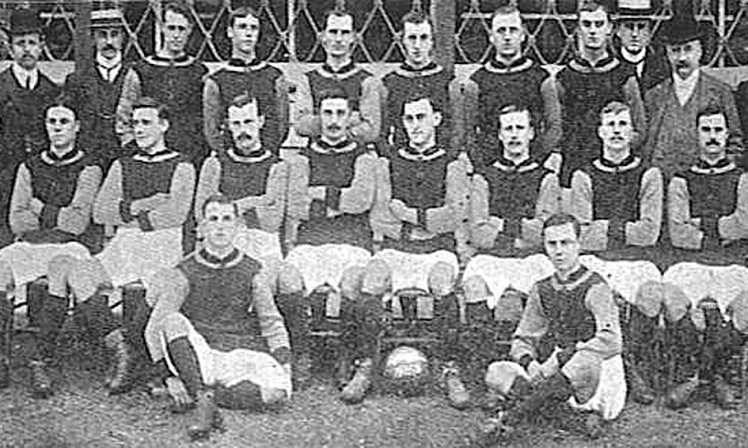 Crystal Palace FC
Crystal Palace FC
The magnificent Crystal Palace was constructed for the 1851 Great Exhibition in Hyde Park. Being too good to waste, it was moved afterwards to Penge Place in Surrey. Its capacious grounds embraced both a cricket ground, where Kent used to play, and a football ground. An amateur football club formed to play there in 1861 – a founder member of the FA – reached the semi-final of the first ever FA Cup competition, but folded in 1876. In 1905, the owners of the Palace decided to start up a new professional club. By then, all of Penge had formally been transferred to Kent, so the new club, Crystal Palace FC, was officially Kentish. The club was obliged to leave during WW1, and eventually moved into its new stadium, Selhurst Park in Croydon, in 1924, four years after joining the Football League. The Glaziers have never been FA Cup winners or Football League champions, but continue to compete in the top flight today.
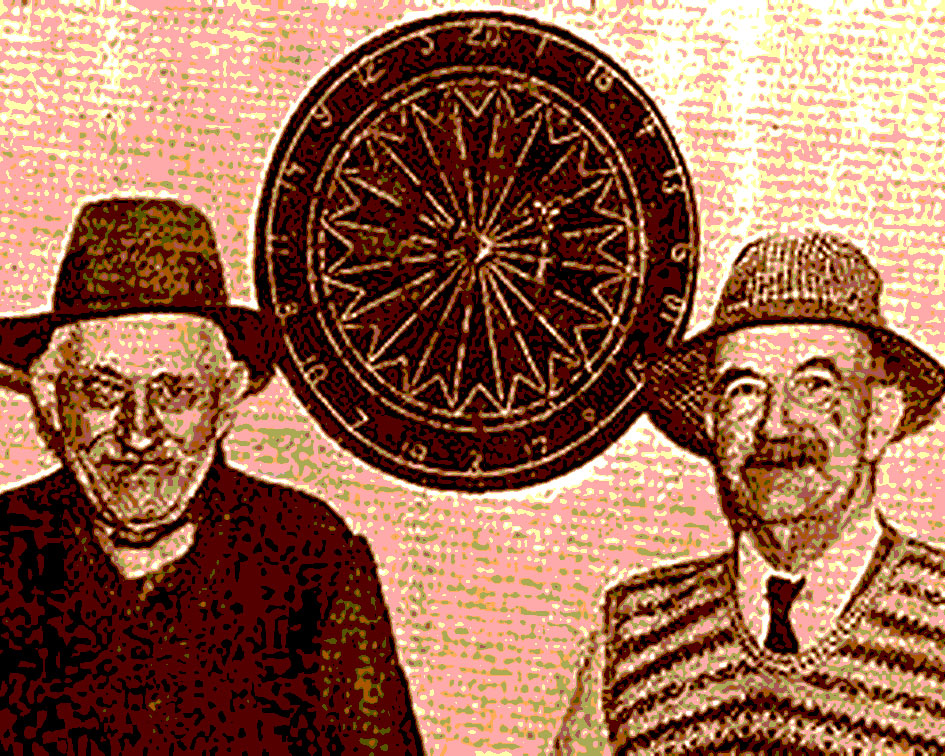 Dartboards
Dartboards
People have been throwing pointed objects at targets since time immemorial. Modern darts has its roots in a French game, although the version dating from the 1860s that has spread around the world is distinctly English. Despite the historical preponderance of Northern English world champions, Kent has had two major influences on the development of the game, specifically concerning the dartboard. Traditionally the board was a circular slice of tree-trunk, dyed black to contrast with the metalwork. Half a dozen regional layouts evolved, one of which was the ‘Kent doubles’; the later ‘Tunbridge’, with its familiar chevrons and coloured doubles ring, similarly has no outer bull or trebles ring. Early boards had to be soaked after each game in order to close up the dart holes. In 1931, however, Kent publican Frank Dabbs (1901-72) proposed the use of sisal fibres. With an East End chemist called Ted Leggat, he developed the resilient surface that today is standard.
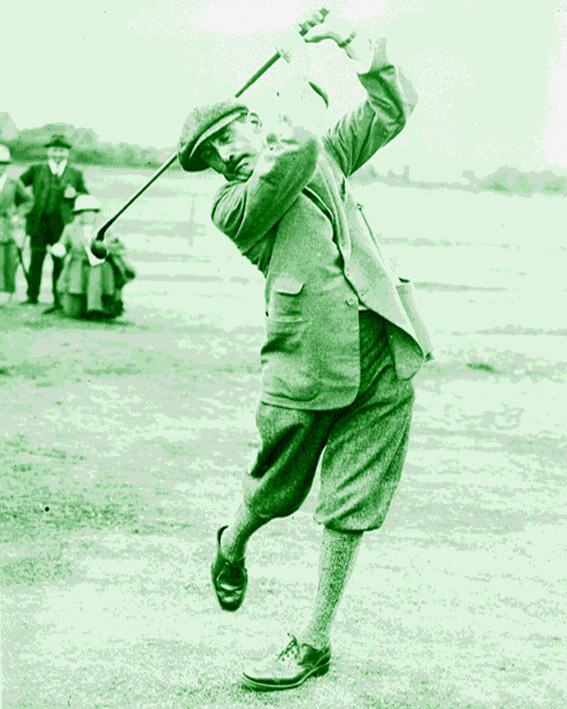 Bernard Darwin (1876-1961)
Bernard Darwin (1876-1961)
Uniquely among the high-achieving Darwin clan, Bernard had no scientific or industrial pretensions, but sporting ones. Born at Down House, the grandson of Charles Darwin and son of Francis, the botanist, he lost his mother to a fever four days after his birth. He went to Eton and studied law at Cambridge, but his preference was for sports journalism. He became such a proficient reporter and commentator on golf that he was once described as the world’s greatest. Although no professional golfer, he reached a sufficiently high playing standard that, when covering the first Walker Cup as non-playing captain at 45, he stood in for a missing British player, and actually won his singles match. On top of dozens of books on golf, he made the occasional excursion into biography, including WG Grace and even Charles Dickens, of whom he had a deep knowledge. Buried at Downe, he became an inductee to the World Golf Hall of Fame in 2005.
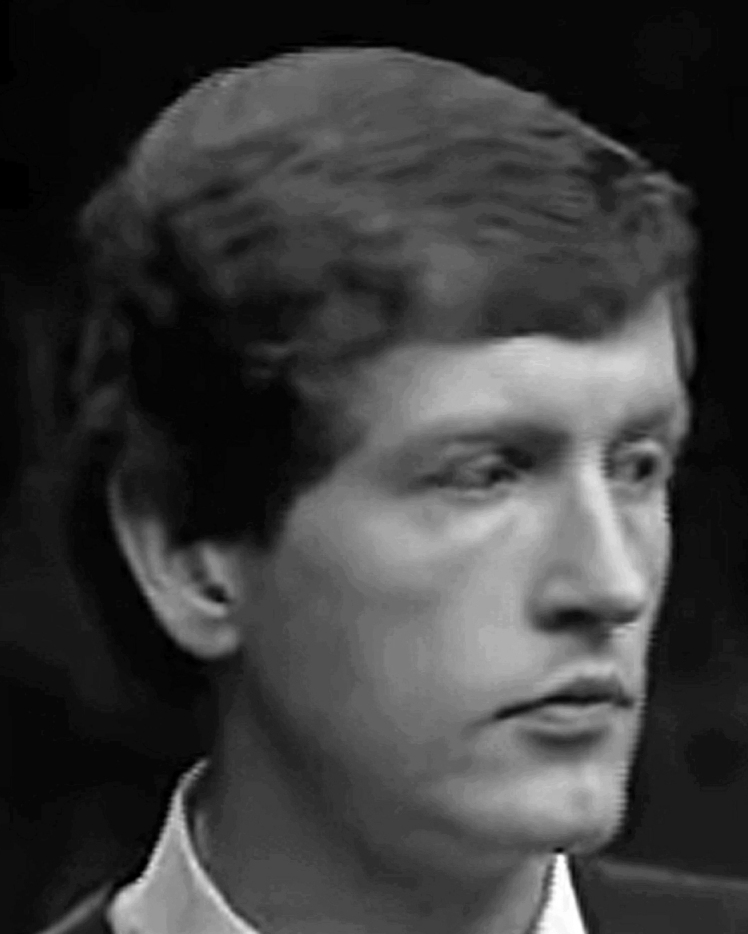 Steve Davis (b 1957)
Steve Davis (b 1957)
Plumstead’s six-time snooker World Champion had a most unfortunate TV nickname: Steve ‘Boring’ Davis. He was never boring in the slightest: he just had a mild-mannered disposition and a tendency to sound somewhat overawed by his own brilliance. The epithet was instead a back-handed compliment to his playing style. Davis offered none of the crowd-pleasing theatrics of a Hurricane Higgins or Whirlwind White, but was actually a far more effective player on account of his sublime accuracy. He became so hard to beat in the 1980s that he remained the world’s imperturbable number one for seven years; he could almost have modelled his unflappable persona on his near contemporary, legendary tennis-player Bjorn Borg. The one time he ever sounded fazed was after his cliff-hanging loss to Dennis Taylor in 1985, before a record TV audience of 18.5 million. His remarkable record has won him an OBE, but strangely he has not yet been knighted.
 Ted Dillon (1881-1941)
Ted Dillon (1881-1941)
An exceptional rugby player, Edward ‘Ted’ Dillon played not only for Blackheath – where he had gone to school – but also Harlequins, Barbarians, and four times for England, including all three matches in the Home Nations Championship of 1904. Yet he saw greater success as a cricketer. An elegant left-handed batsmen and occasional bowler, he was born at Penge when it was still part of Surrey, but brgsn playing first-class cricket in the year when it was transferred to Kent, for which reason he started his career with WG Grace’s London CCC but immediately joined Kent CCC. At the time, he was still studying at Oxford, which he represented at both cricket and rugby. A shipbroker by profession, he played as an amateur, leading Kent to the County Championship three times in four years after taking over the captaincy in 1909. During WW1, he served in Gallipoli and Palestine, and appeared for Kent a few more times after the War.
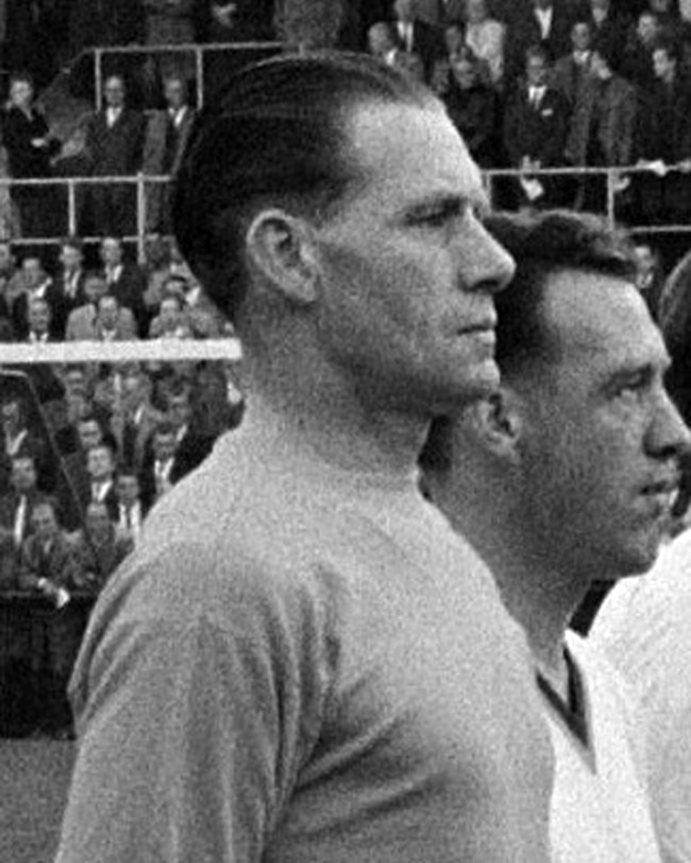 Ted Ditchburn (1921-2005)
Ted Ditchburn (1921-2005)
Edwin Ditchburn from Gillingham was one of those unfortunates whose footballing career was seriously compromised by the outbreak of war, in his case when he was nearly 18. Luckily he was a goalkeeper, so he still had 20 playing years left in him after 1945. He’d started his working life as a papermaker, playing football for Tottenham Hotspur’s feeder club Northfleet United. After serving as an RAF physical training instructor, he became practically a fixture in the Spurs first eleven for eight seasons after the resumption. In that period, he starred in the team that won promotion from Division 2 in 1949-50 and the following season became Champions; team mates included Bill Nicholson and Alf Ramsey. Owing to stiff competition, however, he played only half a dozen times for England. After 418 competitive matches for Spurs, he joined Romford in Essex as player-manager, staying for six further years. After retiring from football, he ran a sports outfitters.
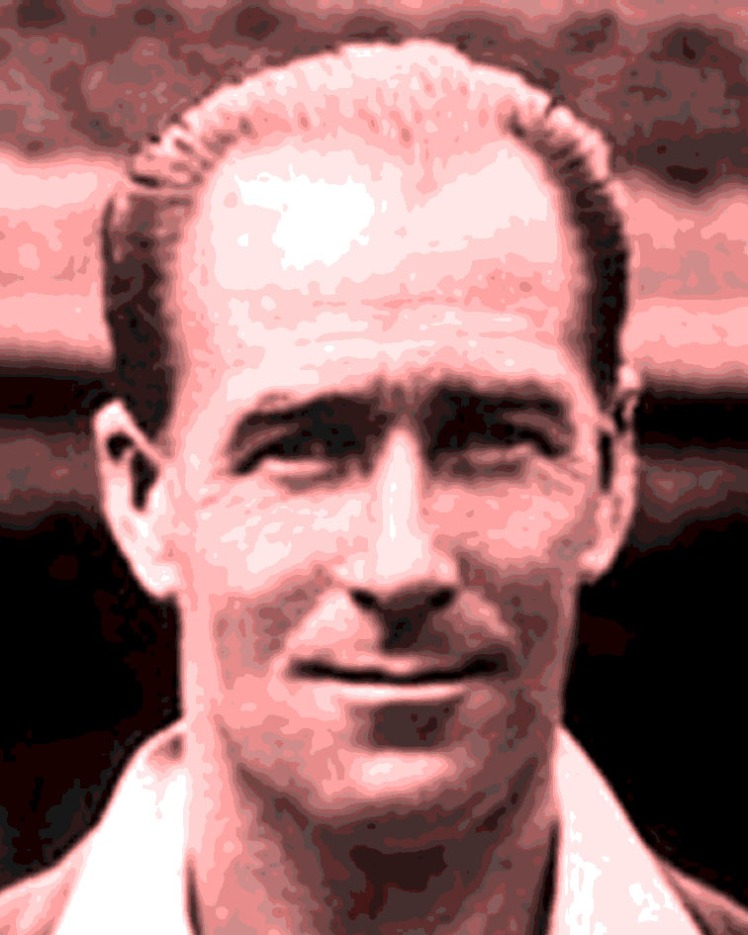 Andy Ducat (1886-1942)
Andy Ducat (1886-1942)
Andrew ‘Mac’ Ducat was one of that rare breed who have played both football and cricket for England. Born in Brixton, he grew up in Southend, where he began his football career. It was however at the Manor Ground in Plumstead that he made his name, playing 175 times competitively for Woolwich Arsenal. He represented England six times, either side of the Great War, and continued playing with first Aston Villa and then Fulham until the age of 38. Thereafter he spent two years as Fulham manager. As a cricketer, he played for Surrey, for whom he made 52 centuries and a top score of 306 not out. In his only test match, against Australia, he was famously dismissed two ways with one ball, when he was out both caught and hit wicket when his bat shattered. He also has the unlucky distinction of being the only man to die at Lord’s while playing in a match.
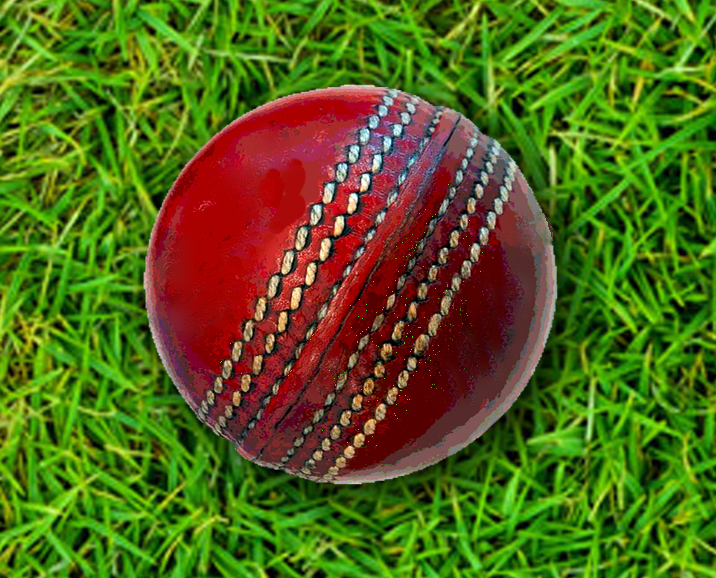 The Duke cricket ball
The Duke cricket ball
The manufacture of cricket balls has always been as typically Kentish as growing cherries. The Duke family of Penshurst starting making balls as a cottage industry as long ago as 1760, until which time cricketers had generally made their own. Within 15 years the Dukes had won a royal patent, and five years later invented the six-seam ball that became the cricket standard. In 1920, Duke & Son merged with cricket-bat manufacturer John Wisden, and in 1961, under pressure from the Australian Kookaburra ball, joined Gray-Nicolls to form Tonbridge Sports Industries. This in turn was sold to its current owner, Dilip Jajodia’s British Cricket Balls, in 1987. The company experienced controversy concerning the white Duke ball produced for the 1999 World Cup, which according to tests swung more than normal balls; the tournament saw a record number of wides. Nevertheless, the trusty Duke brand is still used by England and West Indies in test matches.
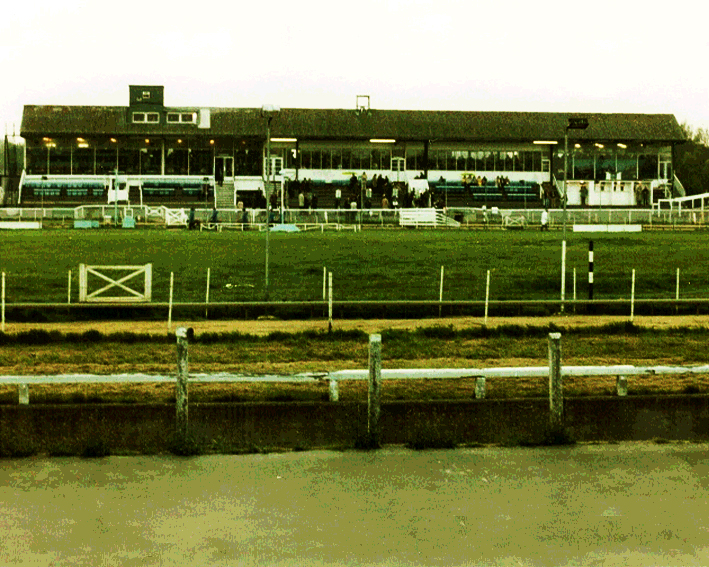 Dumpton Park
Dumpton Park
Like Dover Priory, Dumpton Park is a railway station whose name retains a resonance of an association that no longer survives. Greyhound racing first developed from coursing in Norfolk in the C18, but the artificial lure originated in America in 1912. The Greyhound Racing Association was set up to import the new sport into Britain, starting at Manchester Belle Vue in 1926, and followed by White City. Eighteen more stadia were soon added, including Ramsgate Stadium, aka Dumpton Park, which opened in 1928. As part of a national circuit, the stadium hosted the sport’s leading owners and their dogs, while one locally trained dog, Blossom of Annagura, won back-to-back Grand Nationals in 1949/50. New owners Northern Sports supplied a new grandstand in 1984, in front of which the superlative Scurlogue Champ quickly set a track record. Before long, however, the owners went broke, and the stadium closed in 1996. The site is now covered by housing.
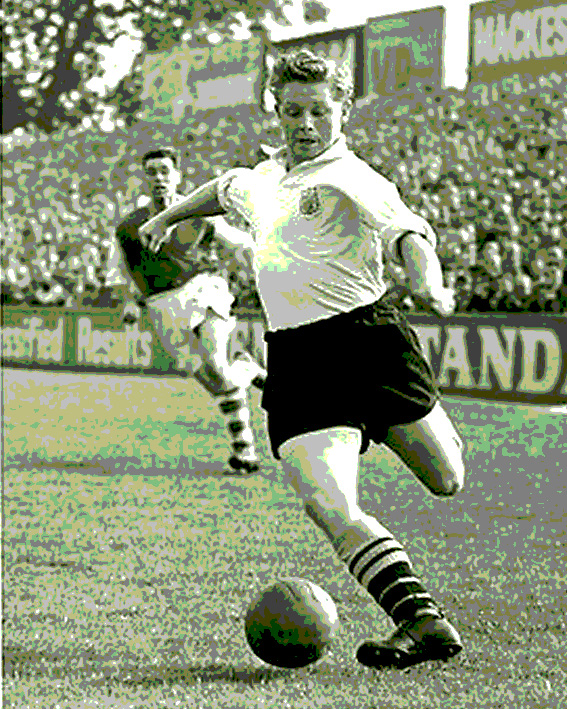 Roy Dwight (1933-2002)
Roy Dwight (1933-2002)
There is a simple reason why Royston Dwight shared his surname with Reg Dwight, alias Elton John: they were first cousins. Roy, from Belvedere, was a career footballer. Although a winger, he was a prolific goal-scorer, who notched 54 times in 72 games for Fulham. In 1958, he was bought by Nottingham Forest for £10,000, and scored 21 more times in 44 games. His highlight and lowlight both came in the 1959 FA Cup Final, when he scored the opener against Luton Town but was then stretchered off with a broken leg – the only time a team has won the Cup short of an injured player. After a season at Gravesend & Northfleet, he returned to League football at Coventry City and Millwall before taking up management at Dartford. He then became a PE teacher at Forest Hill, and managed the Catford and Crayford & Bexleyheath greyhound stadiums. He died at Woolwich.
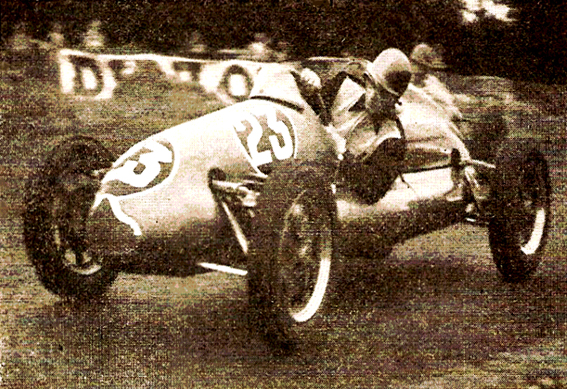 Bernie Ecclestone (b 1930)
Bernie Ecclestone (b 1930)
The biggest name in Formula 1 motor racing for nearly 40 years was the Suffolk-born son of a Kent family. At seven he moved to Bexleyheath, attended Dartford West Central Secondary School, and studied Chemistry at Woolwich Polytechnic. His passion was for motorcycles, and straight after WW2 he ran a dealership, Compton & Ecclestone, in Bexleyheath. He started racing cars at Brands Hatch, but after several accidents turned instead to management, specifically of the gifted young local driver Stuart Lewis-Evans, and the later F1 world champion Jochen Rindt, both of whom were killed while racing. In the 1970s, he became owner of the Brabham F1 team, and co-founded the Formula One Constructors Association. He grew mega-rich and uniquely powerful by controlling F1’s TV rights. Despite several controversies, two broken marriages, and triple heart-bypass surgery, he survived as F1 Supremo until 2017, when he took on an advisory role. In his 90th year, he fathered his fourth child.
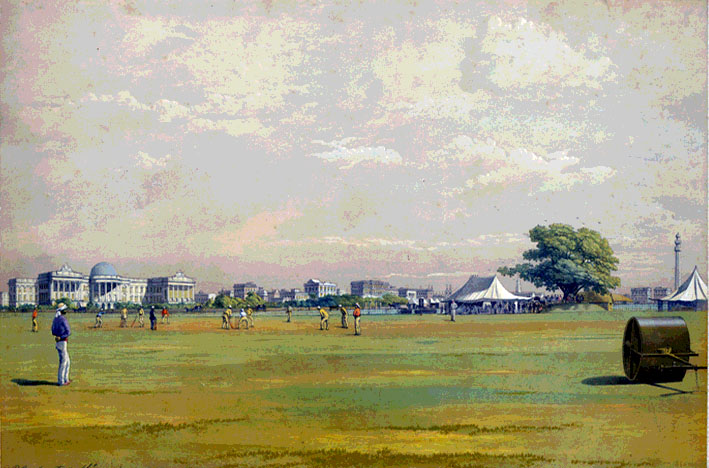 Eden Gardens Cricket Ground
Eden Gardens Cricket Ground
Eden Gardens in Kolkata, the “home of Indian cricket”, was the first ground to be built on the Sub-Continent, and is now the third largest in the world, with plans to become considerably larger. India first played test cricket there in 1934 against England, eight years after Lord Harris’s historic ICC meeting extended the franchise to India. The parkland on which it was built in 1864 was known originally as Auckland Circus Gardens and then Eden Gardens because, according to local tradition, it was gifted to Beckenham-born Lord Auckland and his sisters Emily and Fanny Eden as thanks for helping save the life of Rani Rasmani’s daughter. Now home to the Kolkata Knight Riders, it is world-renowned as a cauldron. It hosted the 1987 World Cup final, but has also been the scene of repeated disturbances, and a disaster in 1980 when a stampede caused 16 deaths at a football match.
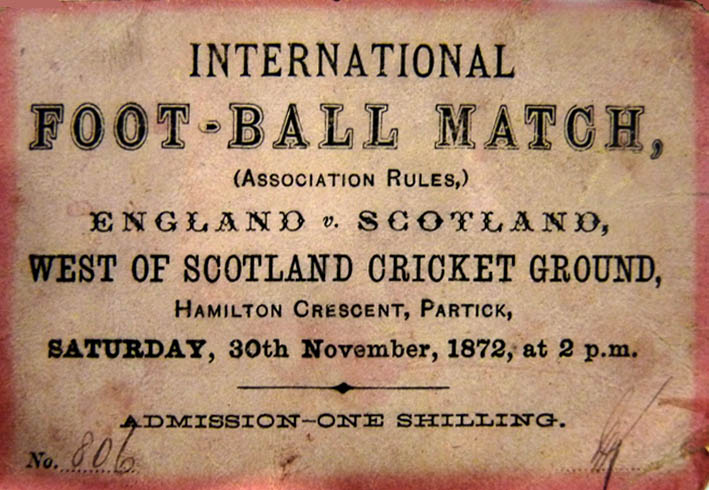 England’s No. 1
England’s No. 1
Every player who pulls on an England football shirt is awarded a ‘legacy number’, according to his place in the order of first appearances. Today’s regular goalie, Jordan Pickford, is No. 1,225; but who was, and is, No. 1? The answer is Robert Barker (1847-1915), a Man of Kent born in Wouldham. At Marlborough School, he played both Rugby and Association football, but afterwards concentrated on the latter, representing Kent, Middlesex, and the Wanderers among others. He won his one and only England cap in the first ever full international at Partick Thistle’s ground in Scotland in 1872. He only played in goal because the first-choice keeper was injured, and Barker was the biggest, oldest, and slowest player in the squad, with a rugby player’s safe hands to boot. Having kept a clean sheet, he was allowed to take a turn as an outfield player in the second half. He eventually made a living as a civil engineer, and died in Hertfordshire.
 English Bowling Association
English Bowling Association
As if dominating cricket for four decades weren’t enough – not to mention distinguishing himself at athletics and playing numerous other sports – WG Grace decided to adopt yet another pursuit in his fifties: bowls. On retiring from Gloucestershire CCC in 1899, he was invited to establish a new London County Cricket Club on the Crystal Palace ground where Kent had played. Ironically, in 1900, the whole of the Crystal Palace became formally part of Kent. On moving to Sydenham, just minutes away, WG took up bowls enthusiastically. In 1903, in the cricket pavilion, he co-founded the English Bowling Association, becoming its first president. He quickly arranged the first ever international bowls series there, with England, Scotland, Wales, and Ireland competing. For good measure, he next created England’s first indoor bowls club, named after the Crystal Palace. He even secured a club pavilion for the use of the Womanhood Bowling Club, helping cement the game’s appeal to both sexes.
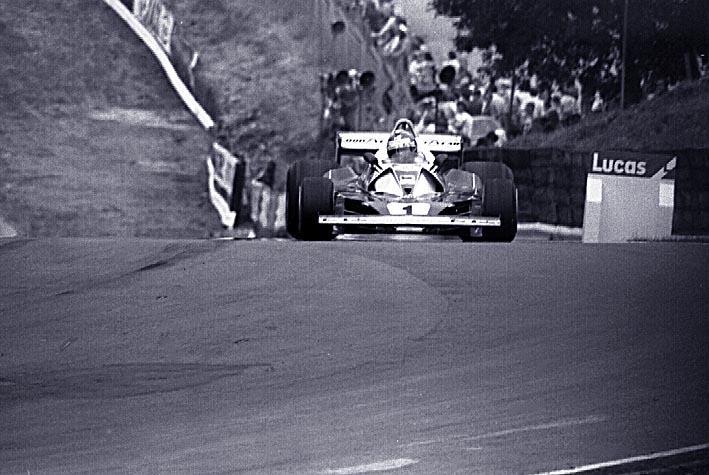 F1 World Champions
F1 World Champions
Most nations with an F1 tradition have but one GP capital – like the Nürburgring in Germany or Monza in Italy – that has played host to the greats. Today in Great Britain, that capital is Silverstone; yet Kent has also been a familiar venue to world champions, thanks to Brands Hatch. Fans still remember the 1976 British GP, when world champion James Hunt was retrospectively deprived of a controversial victory. Other British world champions who displayed their skills in Brands GPs were Mike Hawthorn, Graham Hill, Jim Clark, John Surtees, Jackie Stewart, and Nigel Mansell. The event welcomed many overseas champions too: Jack Brabham, Jochen Rindt, Emerson Fittipaldi, Alan Jones, Jody Scheckter, Keke Rosberg, Nelson Piquet, and Niki Lauda. The first British GP at Brands in 1964 came too late for ‘El Maestro’ Juan Fangio, but he did a celebratory lap there in 1980 in a Mercedes 300-SLR with former teammate Stirling Moss, who had famously cut his teeth at Brands.
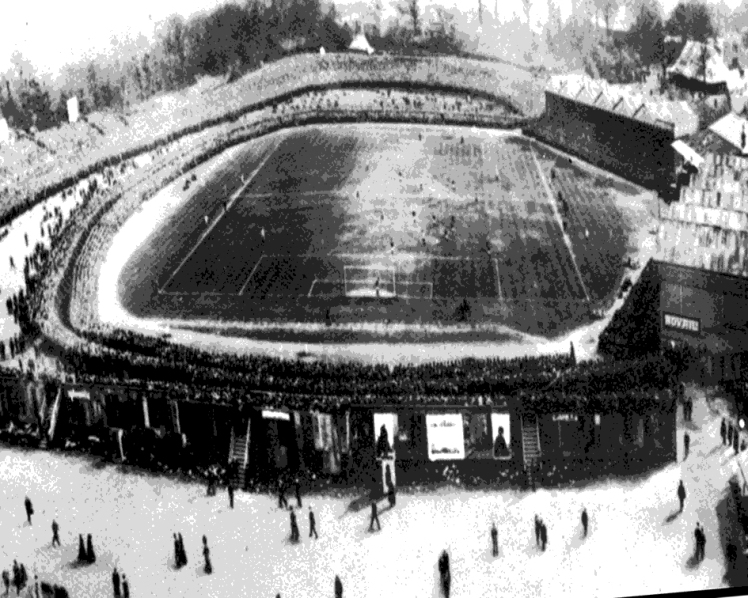 The FA Cup final
The FA Cup final
From their inception in 1872 until 1892, most FA Cup finals were played at The Oval in Kennington. In 1895, the venue was switched five miles further out of town to the football stadium at the Crystal Palace in Penge, Surrey. This immediately attracted far larger crowds, though without affecting the Northern and Midlands clubs’ total monopoly on finalists. The change came in 1900, when Penge was turned into the Penge Urban District and transferred to Kent, bringing the Crystal Palace ground with it. On April 20th, 1901, Southern League minnows Tottenham Hotspur took on high flyers Sheffield United in front of 114,815 fans; Spurs lifted the trophy after a replay. That crowd remained a record until 1913, when Aston Villa and Sunderland were watched on Kentish soil by 121,919 – an attendance surpassed in English football only by the White Horse final of 1923. It took WW1 to end Kent’s run of 13 consecutive FA Cup finals.
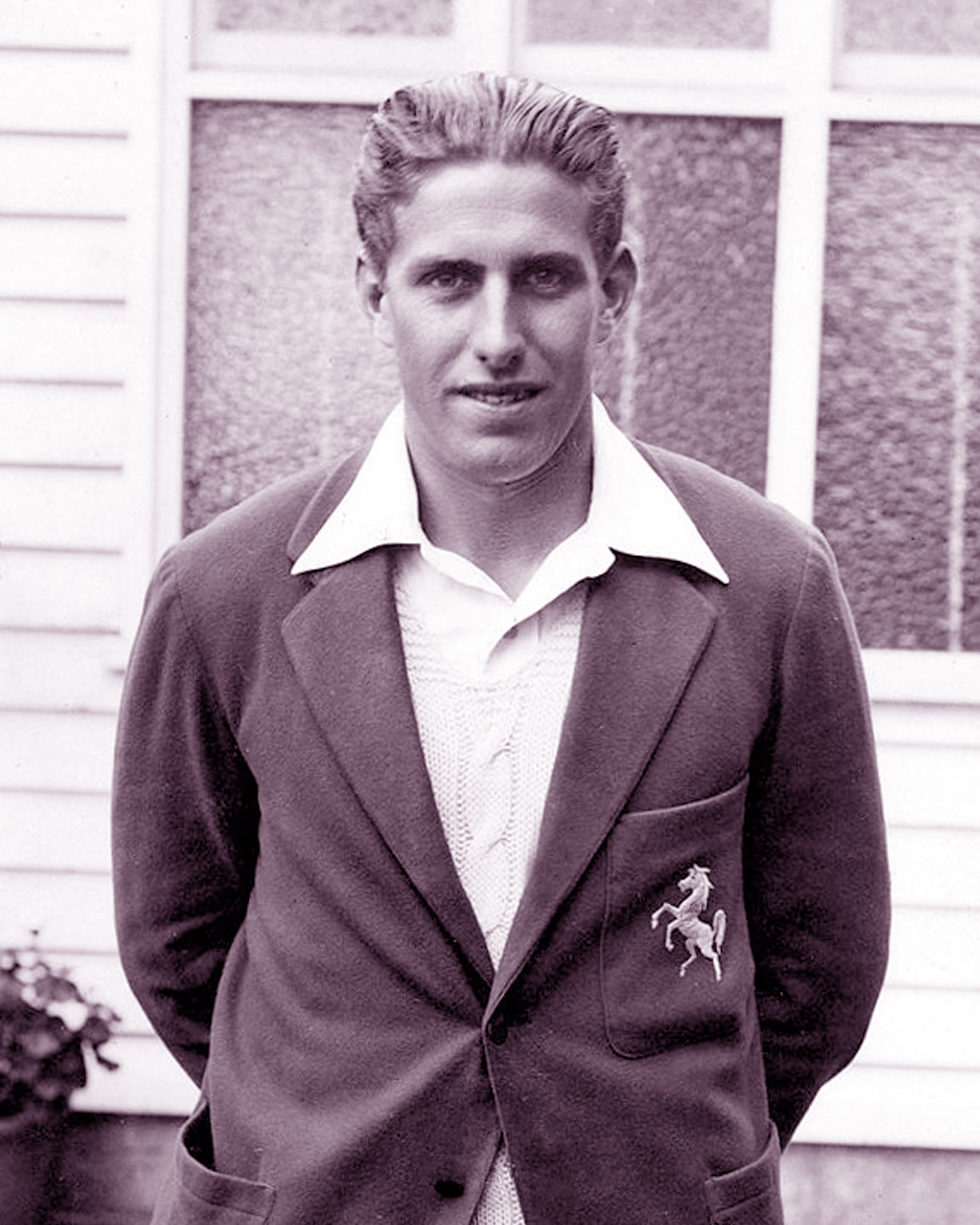 Arthur Fagg (1915-77)
Arthur Fagg (1915-77)
In the mid-1930s, batsman Arthur Fagg from Chartham Hatch had the world before him. Having made his debut for Kent at 17, he now had the opportunity to establish himself as England’s opening batsman with Len Hutton. Disastrously, he contracted rheumatic fever on a tour of Australia, and missed a whole season. It was the start of a litany of ill health. Nevertheless, on returning in 1938, he set a world record in a match against Essex by scoring a double century in both innings. WW2 wrecked his test career after just five matches, but he returned to complete a career tally of 27,291 First Class runs before retiring in 1957. He then started afresh as a test umpire. He racked up 17 tests between 1967 and 1975, and endeared himself to fans in 1973 when, after the West Indians disputed a decision, he declined temporarily to return to the field. He died in Tunbridge Wells.
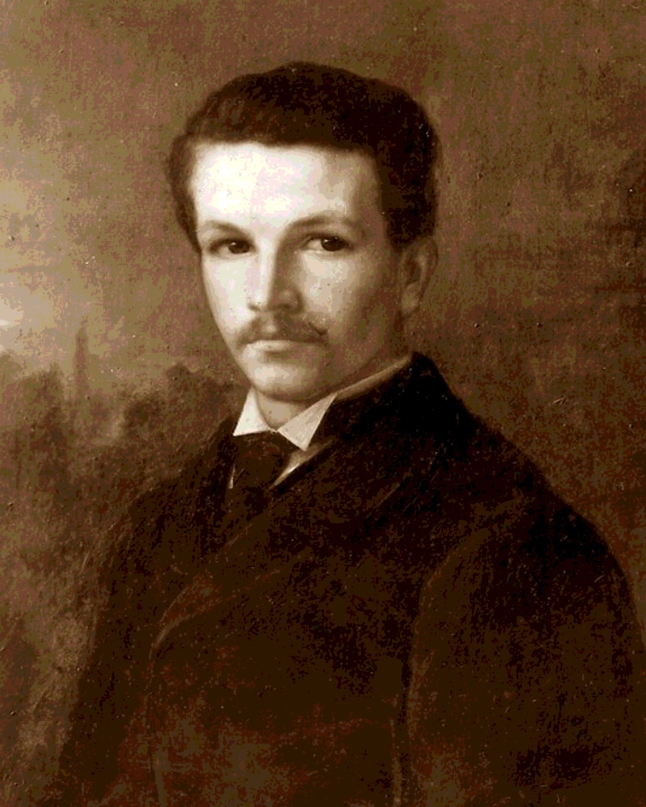 Chapman Delaune Faunce-De Laune (1843-92)
Chapman Delaune Faunce-De Laune (1843-92)
Kennington Common lay where two main routes crossed: one linking Kent to the ferry at Vauxhall, and another from the South West to London Bridge. It was therefore a natural venue for gentlemen arranging sporting ‘matches’ for gambling purposes; which is why the first ever football club, the Gymnastic Society, used it in the C18. It naturally became home to the Kennington Oval, site of the inaugural FA Cup final and the first international cricket and football matches on English soil. The estate immediately north-east of the Common belonged to Chapman Faunce-De Laune, of Sharsted Court in Doddington. The Sheriff of Kent and a true philanthropist, he created a sporting institute in New Street, Kennington (now Braganza Street) catering for a dozen sports. Two of his clubs even survive today. The Delaune Cycling Club still holds a regular memorial service near his Kentish home; and the Lynn Boxing Club is now the oldest amateur club in the country.
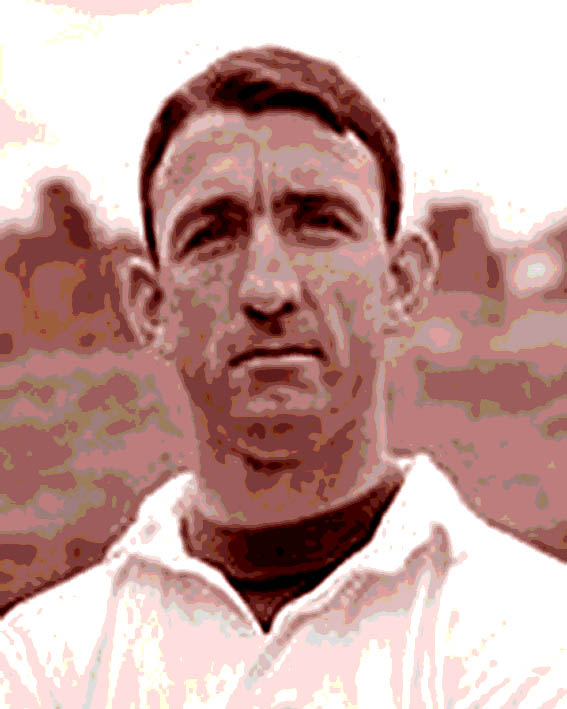 Eddie Firmani (born 1933)
Eddie Firmani (born 1933)
South African striker Firmani qualified to play for Italy because of his grandfather’s citizenship, and scored twice in his three appearances for the Azzurri. He divided his club career between England and Italy. The former was mostly with Charlton Athletic, which he played for in three stints between 1950 and 1968, scoring 88 times in 175 matches; he was additionally at Southend United. Meanwhile, in 1955, he was sold to Sampdoria for £35,000, then a British record; he was to register 115 goals in 207 appearances in Italy, appearing also for Inter Milan and Genoa. He moved on to a career in management, initially as player-manager with Charlton, but better known from 1975 in North American soccer. The clubs he managed during his two-decade career there included New York Cosmos, with Beckenbauer, Pele, and Carlos Alberto among his charges. He also coached in the Middle East, where he was taken prisoner during the Gulf War.
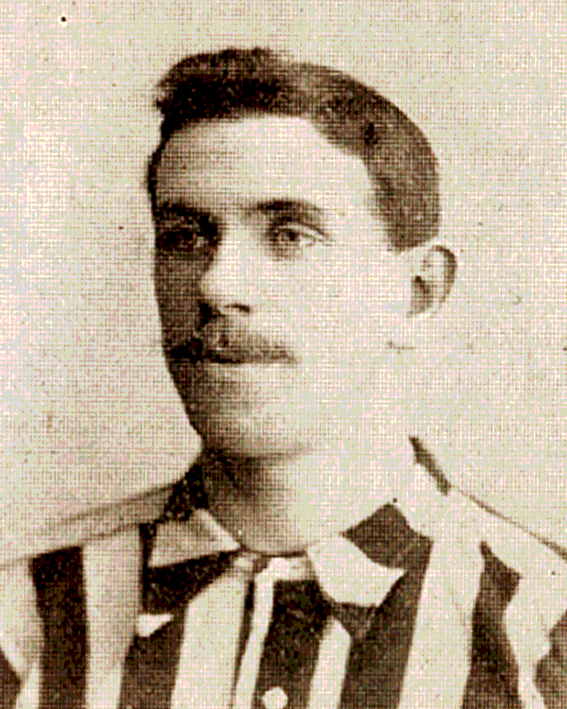 Billy Ford (1876-1951)
Billy Ford (1876-1951)
The son of a military family, William Gracey Ford was born in Scotland to Irish parents who’d married in Chatham. He made his footballing way south from Dundee via West Bromwich Albion to New Brompton (later Gillingham), which he skippered, before spells at Luton and Gravesend. In 1900, still only 24, he joined Maidstone United as captain. Apart from a short break at Chatham, he would stay at the club for eleven years and rack up over 315 appearances, also serving at times as trainer. With Welsh international Tommy Chapman and former Thames Ironworks (i.e. West Ham United) player Gus Older, he led the best set of half-backs Maidstone ever had. His talents extended as far as writing columns for the South Eastern Gazette that showed far more sophistication than the ‘sick as a parrot’ school of player journalism. On retiring in 1911, he emigrated to Australia, but still kept in touch with readers by post.
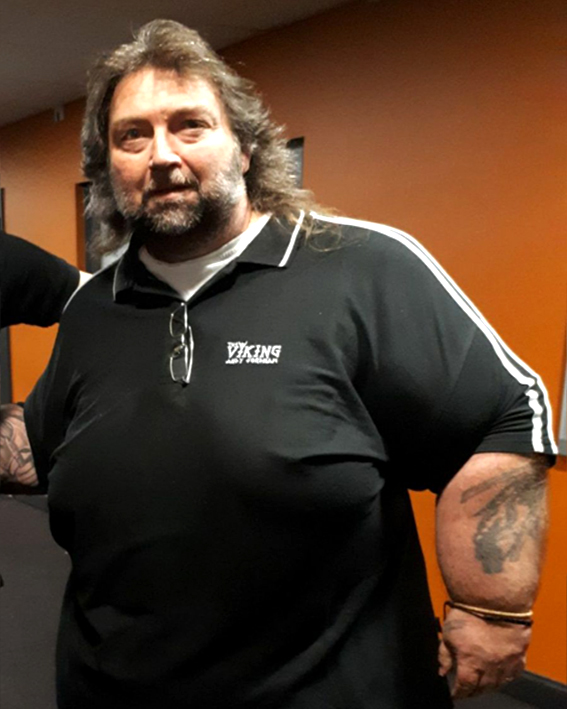 Andy Fordham (1962-2021)
Andy Fordham (1962-2021)
In the Northern-dominated BDO World Darts Championship, Andy ‘The Viking’ Fordham from Erith wrought a rare success for the South. He first competed in the competition at 33, when he was knocked out in the semi-final by the eventual champion. The same happened the following year, setting a pattern of disappointment that, aside from a BDO World Masters title in 1999, dragged on until 2004. Then, at Lakeside, he beat the reigning world champion in the semi-final, one of the most dramatic games in living memory, and triumphed in the final to bring the trophy home to Kent. He was then matched against PDC champion Phil Taylor in ‘The Showdown’, but pulled out in mid-contest with breathing difficulties. A prolific drinker, especially before matches, he had evidently lost 75% of his liver function. Although he shed 17 stones in weight, the damage was done. He never achieved the same heights, and died suddenly at Woolwich.
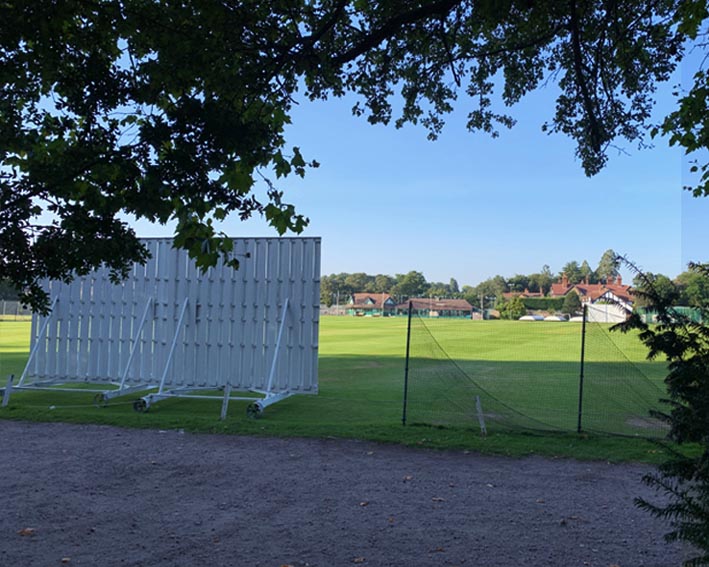 Foxgrove Road
Foxgrove Road
Even many Kentish sports fans will not know the Foxgrove Road sports ground in Beckenham, yet it is steeped in sporting history. Originally farmland, it was adopted as Beckenham Cricket Club’s headquarters in 1866. Starting in 1886, Kent CCC used it for First Class matches until 1905, including one against the South Africans. It was however not for cricket but tennis that it would earn world renown. The ‘Kent Championships’, known as a dress rehearsal for Wimbledon, took place there annually from 1886 to 1996, attracting many Wimbledon champions. Not only that, but Foxgrove Road provided the traditional venue for the Varsity hockey match from 1909 to 1957. Although it no longer enjoys the same prestige as in the past, Foxgrove Road is still a busy sporting hub, playing host to Beckenham CC, now of the Kent Cricket League, and Bromley & Beckenham Hockey Club, as well as catering for tennis, football, netball, and squash.
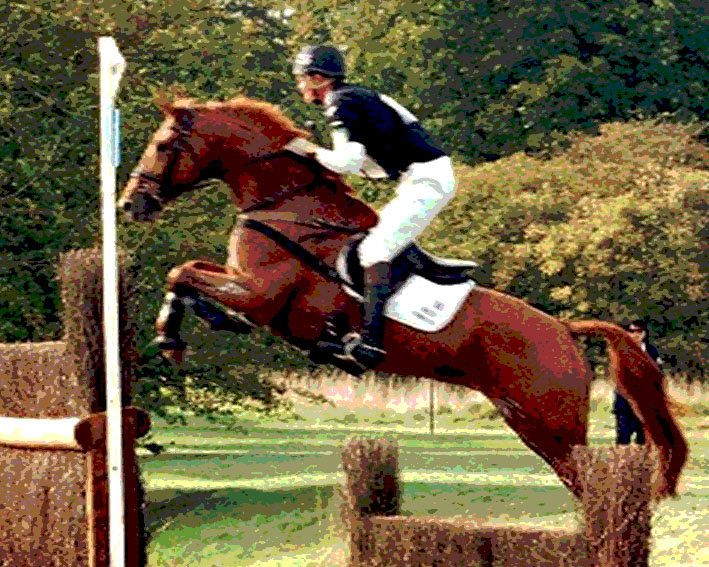 William Fox-Pitt (b 1969)
William Fox-Pitt (b 1969)
It was a foregone conclusion that Fox-Pitt would become a top horse-rider, both his parents having completed Badminton and Burleigh. Although he was born in London, the family’s traditional home was at Knowlton Court near Canterbury, and he attended school at Wellesley House in Broadstairs. From 1995 he became a mainstay of British eventing. His track record of team medals includes two silvers and a bronze at the Olympics, as well as a world championship gold and silver, and six European golds. His individual record is also impressive: he has been the FEI world No. 1 five times. In 2015 he suffered a bad fall that left him comatose for two weeks, but he recovered to take part in the 2016 Olympics. He is now based in Dorset, where he owns an eventing school with his wife, broadcaster Alice Plunkett. He relaxes by fishing in the local river, which by happenstance is called the Stour.
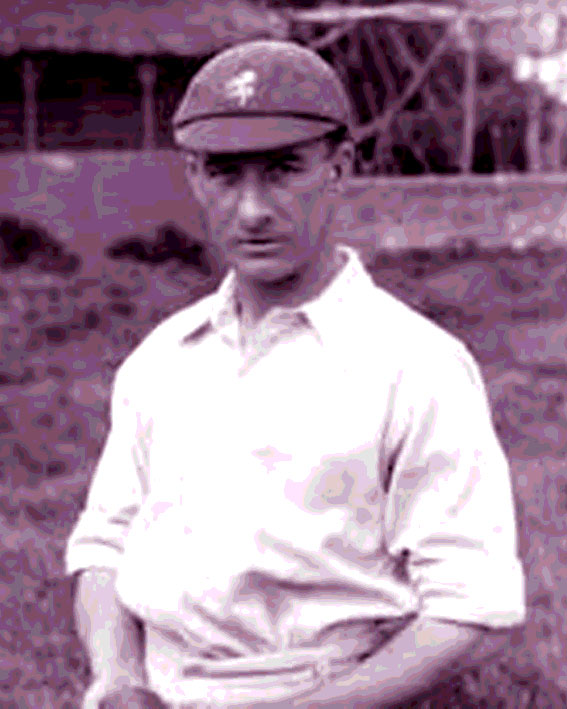 Tich Freeman (1888-1965)
Tich Freeman (1888-1965)
AP Freeman from Lewisham had a very obvious nickname, being just 5 feet 2 inches tall. He was nevertheless sturdily built, and could bowl and bowl. He came along at the right time for Kent CCC, just as Colin Blythe was retiring. His Kent career stretched from 1914 to 1936, during which time he also played twelve times for England. Despite losing the WW1 years, he established himself as a legendary wicket-taker with his lethal top-spinner. Incredibly, he took over 250 wickets every season from 1928 to 1933, and in 1928 became the only man ever to top 300. Uniquely, he took seventeen in a match not once, but twice. He ended up with more career wickets than anyone in the world bar Wilfred Rhodes, who played in nearly twice as many matches. Freeman later launched a chain of sports shops with former Kent wicket-keeper Jack Hubble, and retired to a house in Bearsted called ‘Dunbowlin’.
 Kate French (b 1991)
Kate French (b 1991)
As long ago as 2013, Kate French from Meopham came to the media’s attention as a member of the GB team that won gold in the Modern Pentathlon at the World Championships in China. She had attended Cobham Hall School prior to taking a Sports Performance degree at Bath University. On taking up modern pentathlon at 11, she was required to perfect her prowess in fencing, swimming, horse-riding (her best event), and combined running and shooting, and already at 19 had won a team gold at the Junior World Championships in Hungary. Eight years later, at the same venue, she won an individual silver in the European Championships, a feat she repeated a year after at Bath. Her years of perseverance paid off at the delayed Tokyo Olympics in 2021, when she became a national heroine overnight by comfortably overturning a substantial deficit on the last event to secure the individual gold medal at 30.
 Major-General Sir Lovick Friend (1856-1944)
Major-General Sir Lovick Friend (1856-1944)
Friend was born in Sidcup and lived at Woollett Hall, North Cray as a child. He attended the Royal Military Academy before joining the Royal Engineers. He was present at the Battle of Omdurman (1898) as an aide to Kitchener. During WW1, he served as Commander in Chief, Ireland; he was on leave when the Easter Uprising occurred, which led to his replacement. When he served next in France in administrative roles, however, he won the Croix de Guerre and the Légion d’Honneur. By then his sporting career was a memory, but still a good one. A wicket keeper, he was one of the Royal Engineers’ best batsmen, scoring ten centuries, including 198 against Lord Harris’s Band of Brothers. He also played several times for Kent, and against Kent for the MCC. He was a footballer, too, and played in goal for the Royal Engineers in the 1878 FA Cup final, though he conceded three against the victorious Wanderers.
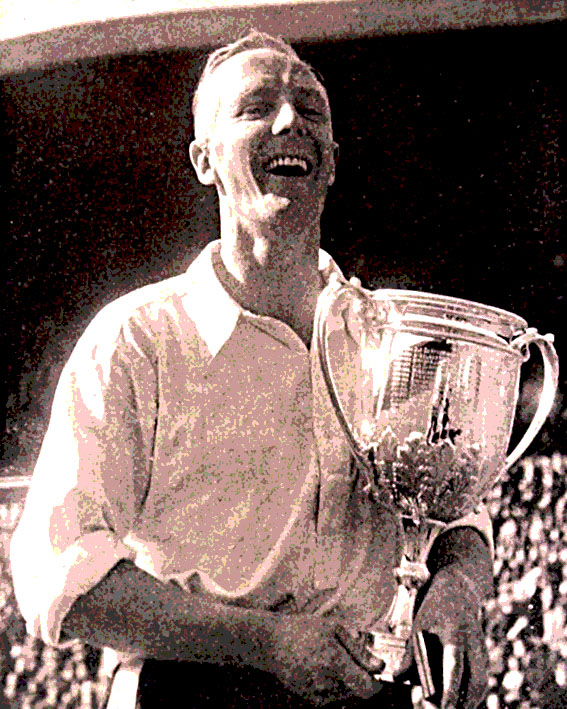 Eric Fright (1917-95)
Eric Fright (1917-95)
Eric Gautrey Fright, born at Eastry in Hampshire, recovered from infantile paralysis to become an Olympic-level footballer. After starting his career as an amateur at Margate and then Shorts Sports, he made his name as a prolific goal-scorer at Bromley, which he helped win the FA Amateur Cup in 1949 in front of 95,000 at Wembley; he was carried shoulder-high from the pitch afterwards. He picked up 18 England amateur caps, and was selected to play four times as captain of Great Britain at the 1948 Olympics under the management of Matt Busby, when England lost to Denmark in the bronze-medal playoff. Not long after scoring four goals against Maidstone United in an 11-0 rout, he swapped sides, becoming manager of the Stones from 1951 to 1954; he also played regularly for the first team in the Corinthian League in his late thirties. The owner of a large sports shop in Bromley, he was still living in Maidstone when he died.
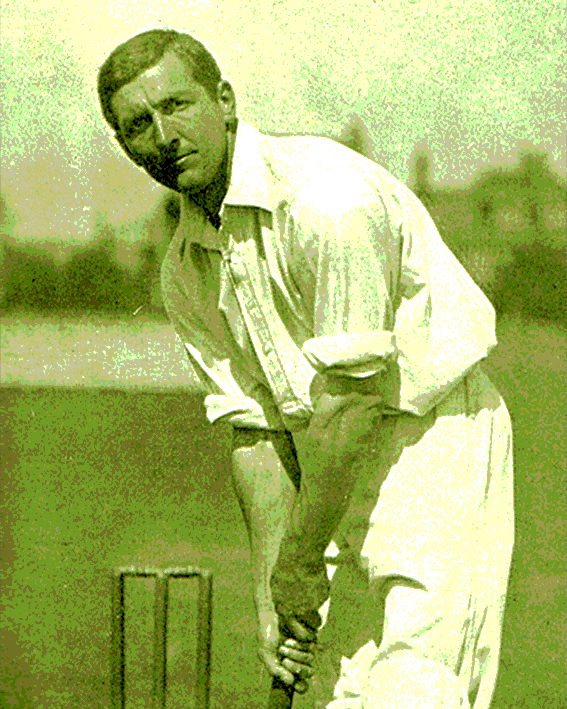 CB Fry (1872-1956)
CB Fry (1872-1956)
Charles Burgess Fry was perhaps the most versatile sportsman England ever produced, yet suffered much misery. A civil servant’s son, he was born in Croydon and went to Repton School, where he was an outstanding scholar and captain of cricket and football. At Oxford, he won blues in those two sports as well as athletics; he actually equalled the world long-jump record in 1893. He then played county cricket for Sussex and Hampshire, reached football’s FA Cup final with Southampton, and represented England at both sports. He also found time to play for the Blackheath rugby union club. His best-remembered feat was a party trick that involved squatting in front of the fireplace, leaping upwards, performing a turn, landing on the mantelpiece, and bowing. He was even offered the throne of Albania. Unfortunately, he was cursed with mental health problems, not helped by marrying a much older woman who was a brutal psychopath.
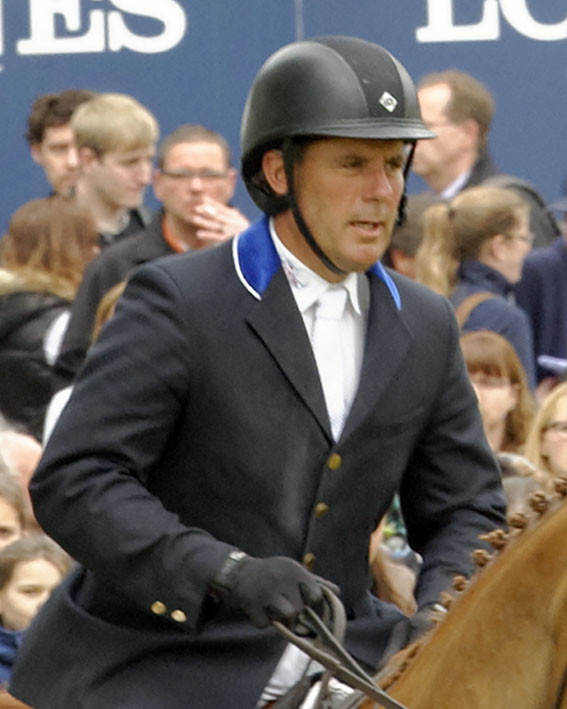 William Funnell (b 1966)
William Funnell (b 1966)
An international show-jumper, Funnell was born in Ashford and attended the North School. His parents owned a farm at Challock where they kept horses, being keen hunters. He learned to ride ponies as a child in his spare time. At the age of 16, he had the option of leaving school and going into farming, but instead chose to accept an offer as second stable jockey in Sussex. He first competed at the Hickstead Derby at 17, and finally won it 23 years later; he has now won it a total of four times, one of only five riders to do so. His long record of international competition was crowned by a team gold in the 2013 European Championships. In 1993 he married the eventer Pippa Nolan, possessor of three Olympic eventing medals, who was born just the wrong side of the Sussex border. The two now run the Billy Stud at Dorking along with breeder Donal Barnwell.
 ‘The Game and Play of Chesse’
‘The Game and Play of Chesse’
Chess was invented in India by the C7, legendarily to occupy the spare time of Emperor Sharvavarman. It spread to the West via Persia, where it acquired its name from ‘shah’, meaning ‘king’; checkmate means literally ‘the king is dead’. The first chess book in English was published by Wealden man William Caxton in the 1470s, making it one of the very first English books. It was based on an Italian work by Jacopo da Cessole, who used the different pieces’ moves to infer lessons about moral conduct. That book was written around 1300, even before the rules of chess had been finalised. In its different forms, the game subsequently became uniquely popular around the globe. It formed the basis of Lewis Carroll’s not unconnected ‘Alice Through the Looking Glass’ in 1871; and many of today’s computer strategy-games borrow from its military and hierarchical configurations. This ‘game of kings’ is now recognised by the International Olympic Committee as a sport.
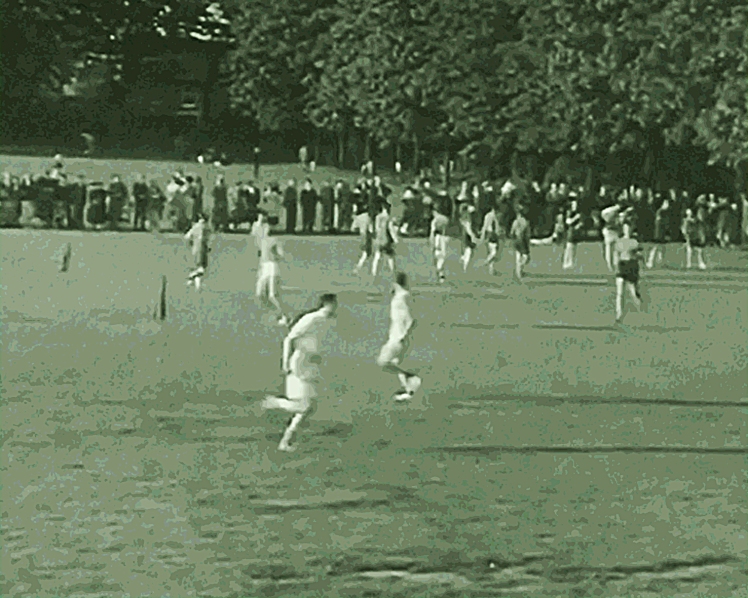 Goal Running
Goal Running
Previously known as ‘stroke bias’, goal running was a peculiarly East Kentish sport that only died out after being practised for several centuries. We know this because, in his ‘Travels Over England’ (1700), James Brome wrote about it as a Kentish tradition. As late as the early C20, an annual championship was held at Maidstone Athletic Ground. It was actually a complex form of tag. Two teams, representing villages, lined up on their own patch, called a ‘goal’. Each player would then jog around a flag 30 yards away – 20 yards from the opponents’ flag – and return to his goal. If it seemed opportune, however, he could loop around the opponents’ flag and attempt to return to goal without being tagged. Rather like sprint cycling, it made for an exciting combination of cat-and-mouse and hell-for-leather. The sport was eventually eclipsed between the Wars by football. Efforts to revive it have gone down well, but a comeback remains elusive.
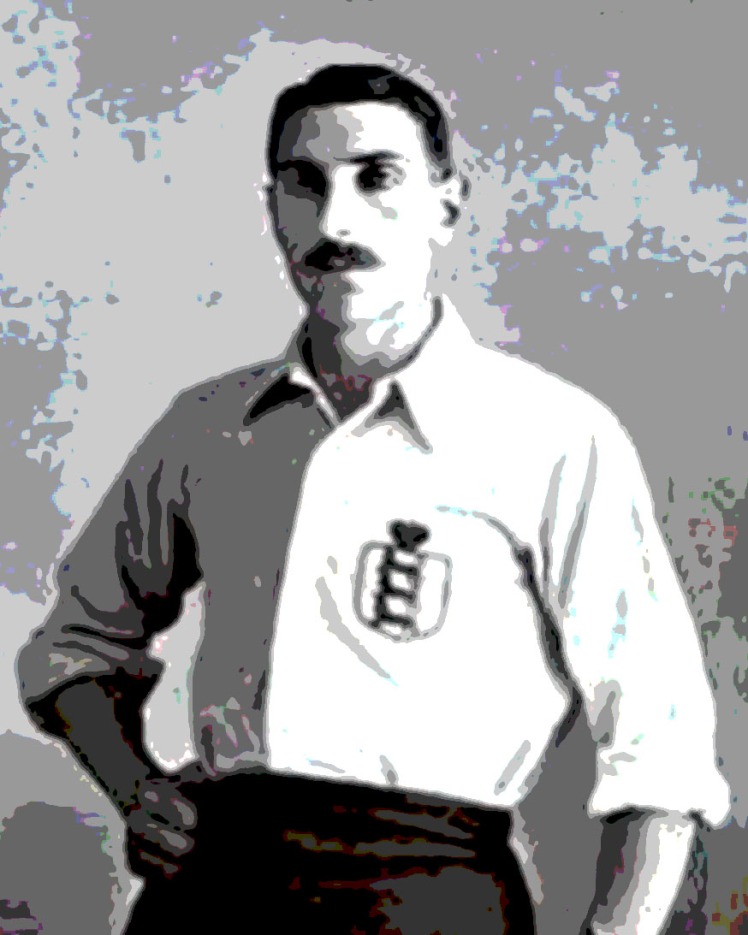 RC Gosling (1868-1922)
RC Gosling (1868-1922)
Robert Cunliffe Gosling was in every sense an aristocrat. An Eton and Cambridge educated banker, in later life he became Sheriff of Essex and a justice of the peace. He was a natural sportsman, playing cricket for Essex. He was also one of the dying breed of gentleman footballer, and a seriously good one too. He was in fact reckoned to be the wealthiest Englishman ever to represent his country. He won five football caps between 1892 and 1895, in an era when very few internationals were played, scoring twice and captaining the England team at least once. Even on the pitch he looked every bit the aristocrat, but distinguished himself with his unselfish play as an inside forward. At the time, Maidstone’s town football club was a gentlemanly affair, and Gosling was persuaded to turn out for it several times in the early 1890s while a current England international – well before even Woolwich Arsenal had such a player.
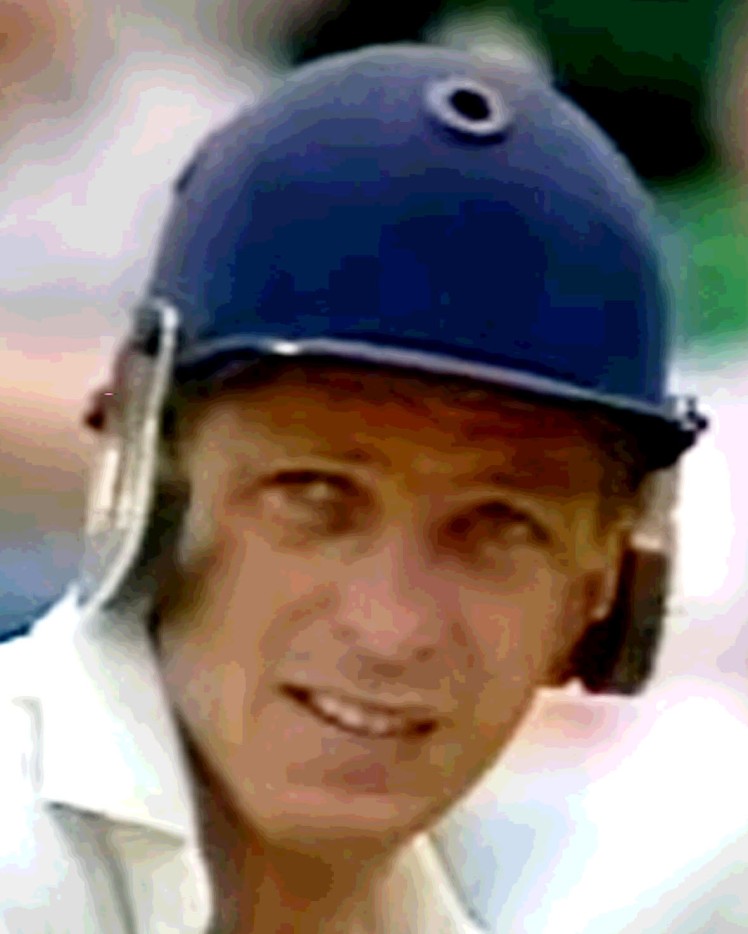 David Gower (b 1957)
David Gower (b 1957)
David Gower is a bad case of the one who got away. He was truly of Kentish stock, being born in Tunbridge Wells to a former head boy of the King’s School in Canterbury. He himself attended Marlborough House prep school in Hawkhurst before becoming a Scholar at King’s, where he was captain of cricket. After spending a few months at University College, London, he somehow slipped into the clutches of Leicestershire. He made his debut for England at 21, and went on to make 8,231 Test runs, then the second highest total in history. He always provided an elegant counterpoint to the power of Botham, Gatting, Gooch, and Lamb, his one perceived weakness being a lack of stickability. Though no record-breaker at county level, this maker of 26,339 First Class runs would have come in handy for Kent in the lacklustre 1980s. After retiring, he went on to replace elegance with eloquence as a well-liked Test Match commentator.
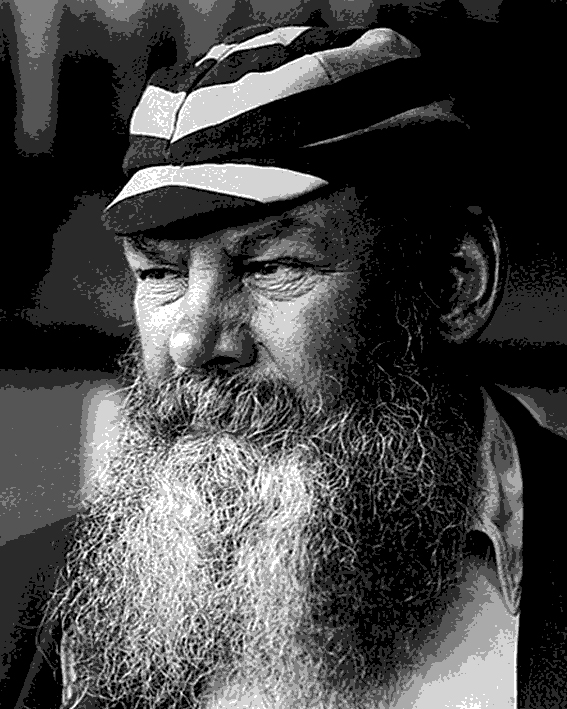 WG Grace (1848-1915)
WG Grace (1848-1915)
It is a measure of Grace’s stature, in all senses, that he is still known, a century after his death, by his initials. A Bristolian, he was by profession a medical doctor, though it is as an ‘amateur’ cricketer that he became immortal. He was a champion hurdler and decent footballer before joining Gloucestershire. A giant of a man, he proved a demon with ball in hand and in the field, yet best of all with the bat. In the first ever Test match in England in 1880, he scored 152. He racked up all manner of records for county and country, and the fact that he was also given to gamesmanship and money-grubbing seemed not to matter much. His career was so long – a record-equalling 44 seasons – that it included time after his retirement from Gloucestershire to move to Kent in 1899 and play local cricket for Eltham for some years. He now lies in Beckenham Cemetery.
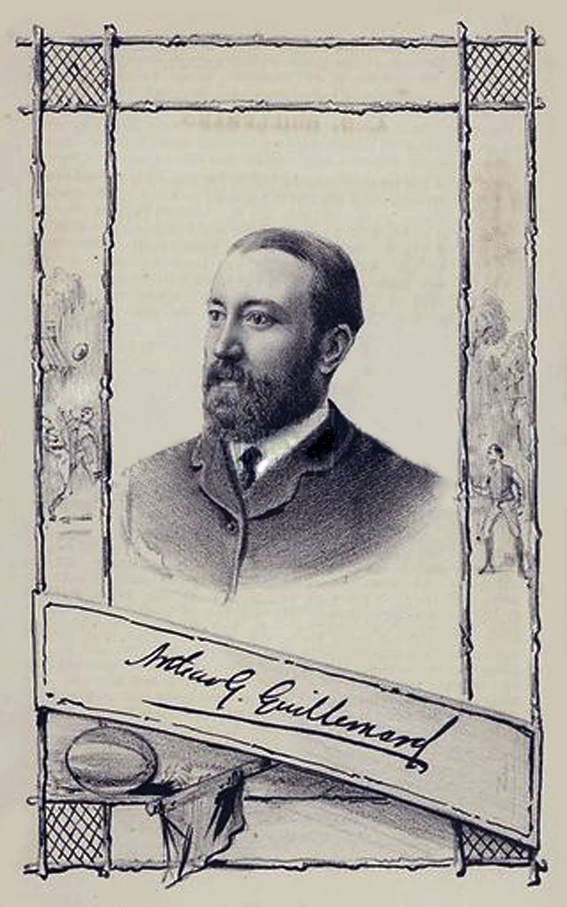 AG Guillemard (1845-1909)
AG Guillemard (1845-1909)
Arthur George Guillemard was born in Eltham and attended Rugby School, where he was Captain. In 1867, together with other Old Rugbeians, he co-founded West Kent Football Club, based at Chislehurst, which became one of the RFU’s founding members in 1871. When Scotland hosted the first-ever rugby international that year, Gallimard was England’s fullback; he reprised the role in 1872 in the return match at Kennington Oval. He became the RFU‘s secretary from 1872 to 1878, and was elected its president a record four times, in which role he took receipt of Calcutta FC’s Cup – still the traditional trophy for the annual England vs Scotland match. As well as proving an effective administrator, he made history by becoming the first referee in sole charge of a rugby international, replacing the previous two umpires. He even played soccer for Forest FC (later The Wanderers), and co-founded Butterflies Cricket Club. He died back in Eltham.
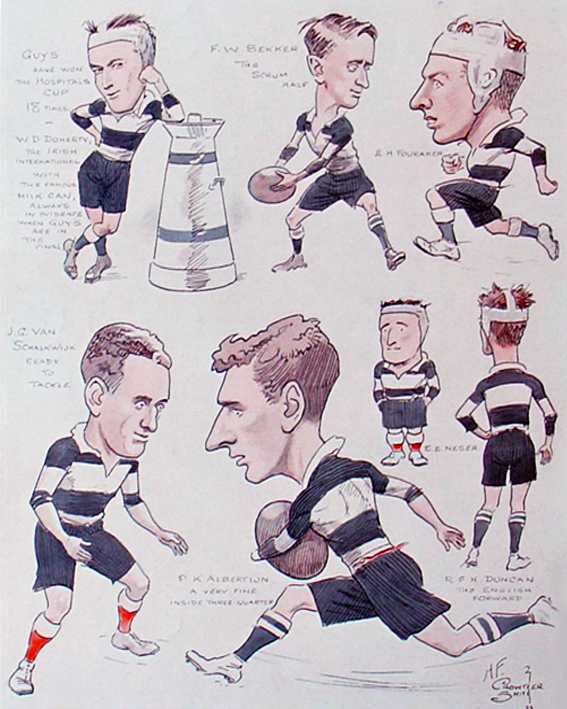 Guy’s Hospital Football Club
Guy’s Hospital Football Club
Although Guy’s Hospital is located in Southwark in historical Surrey, its rugby football club has always played in Kent. It claims to be the oldest football club in the world, on the strength of an 1883 programme referring to its 40th season. It originally played on Blackheath and, after Blackheath FC was founded in 1858, the two clubs shared a dressing room. Like Blackheath, Guy’s Hospital was one of the 21 clubs that founded the RFU in 1871. It was home to renowned England captain Lennard Stokes, as well as Ireland’s captain George Doherty, under whom it became arguably the strongest club in the land between the Wars. In the 1990s, Guy’s Hospital FC merged first with St Thomas’s Hospital RFC and then another founder club, King’s College Hospital RFC, both from Dulwich. The merged club, GKT, currently plays in the Kent Metropolitan 5th Division at the Guy’s Hospital Athletic Ground in Honor Oak Park.
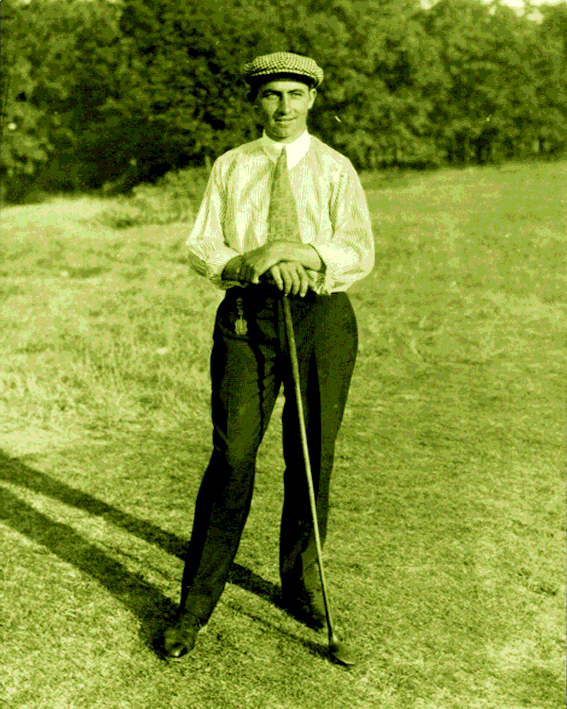 Walter Hagen (1892-1969)
Walter Hagen (1892-1969)
With 11 majors to his name, Walter Hagen was the greatest golfer in history until Jack Nicklaus came along. He was from Rochester: not on the banks of the Medway, but Lake Ontario. He won the US Open in 1914 and 1919, but it was in the 1920s that he truly dominated the sport. He created controversy when he turned up in 1920 at the Royal Cinque Ports Golf Club in Deal for the first British Open since WW1. As a vocal champion of professionalism, he was barred from the clubhouse, and earned opprobrium by ostentatiously using a chauffeur-driven limousine parked outside as his changing-room. Two years later, at Royal St George’s in Sandwich, he became the first American to win the British Open. He repeated the achievement there in 1928, his fourth and last Open title. Hagen played for the money and, though he loved to flaunt his wealth, especially sartorially, he undeniably advanced the status of professionalism.
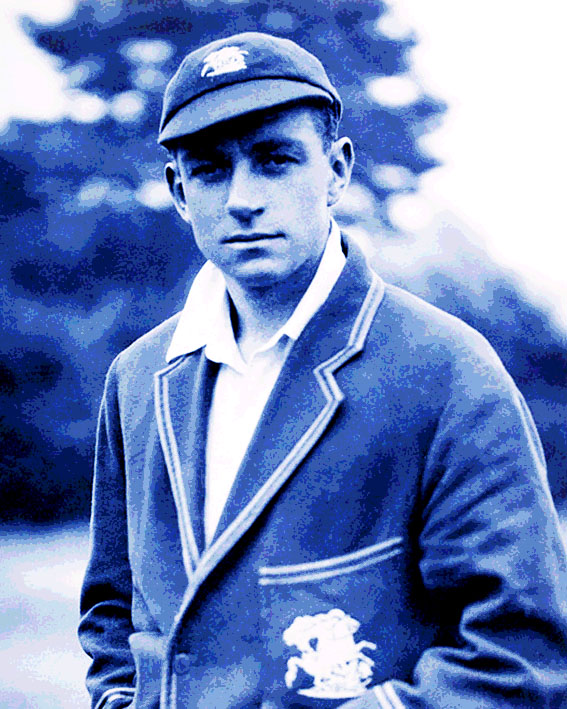 Wally Hammond (1903-65)
Wally Hammond (1903-65)
If losing David Gower to Leicestershire was a disappointment, letting Wally Hammond slip was a disaster. WG Hammond was born actually inside Dover Castle. When he was just five, his soldier father was posted overseas, and the family went with him. They never returned before WW1 arrived, and his father was killed in action. Mrs Hammond took her son not back to Dover but to Portsmouth. Young Wally excelled in cricket at Cirencester Grammar School. After he was snapped up at 17 by Gloucestershire, the Kent-based MCC president Lord Harris, knowing of Hammond’s Kentish provenance, stalled his debut; but there was no going back. Hammond became England captain, and an all-time cricketing great. He could have had a career just with his fast-medium bowling, but proved superlative at batting and slip fielding. Unfortunately, he was not a nice person. He had all the symptoms of a classic personality disorder: excessive risk-taking, arrogance, and resentment. Perhaps Kent was lucky after all.
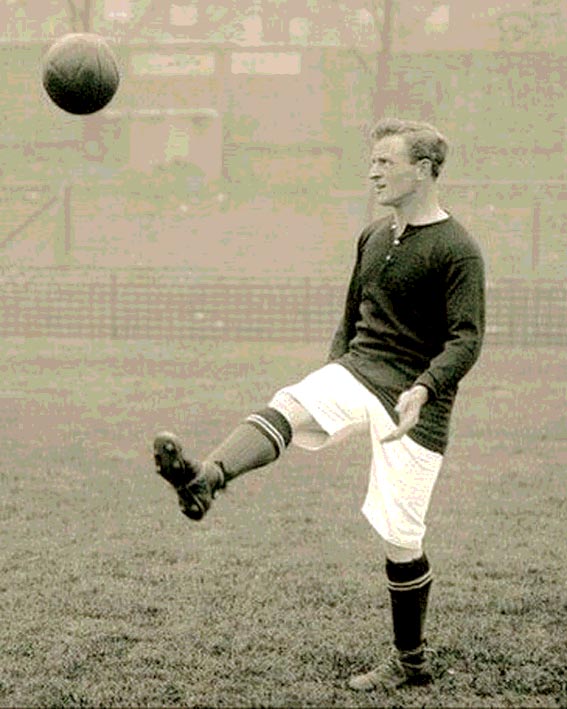 Wally Hardinge (1886-1965)
Wally Hardinge (1886-1965)
The son of a Greenwich seaman, Harold Thomas William ‘Wally’ Hardinge was handy at both cricket and football. After joining Maidstone United at 17, he was top scorer in both seasons he spent there, notching 74 goals despite being suspended for a month for disobeying instructions. He was then poached by Newcastle United, for whom he scored a hat-trick in both halves of a reserve game. He moved to Sheffield United and then Woolwich Arsenal, retiring in 1920. He had made his debut for Maidstone as “A Newman”, already being well known after precociously making his cricketing debut for Kent two years earlier. He went on to become a prolific batsman, amassing 33,519 runs for the county in a 31-year career. Oddly, he played for England only once, against Australia, just as he represented his country at football just once, against Scotland. After retiring, he managed Tottenham Hotspur briefly as caretaker.
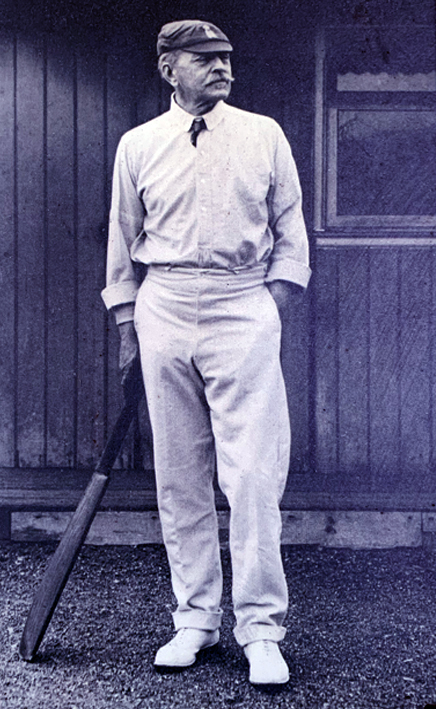 The 4th Lord Harris (1851-1932)
The 4th Lord Harris (1851-1932)
Colonel George Harris, 4th Baron Harris, was a classic imperial administrator, best remembered for his time as Governor of Bombay. That he coped less than admirably with famine and riots may have been due in part to his dedication to his first love, cricket. He’d become an official of Kent CCC as early as its inaugural meeting, chaired by his father, in 1870. He devoted much effort to propagating the game in India, and ran the 1926 Imperial Cricket Conference meeting that spread test cricket to India, New Zealand, and the West Indies, where he’d been born. No mean cricketer himself, he enjoyed a first-class career that spanned 42 years, during which time he captained both Kent and England. On October 23rd, 1889, when he was also president of the Kent County Football Association, he made a well-received speech arguing the importance of sporting provision to the nation. He lived and died at the family pile, Belmont in Throwley.
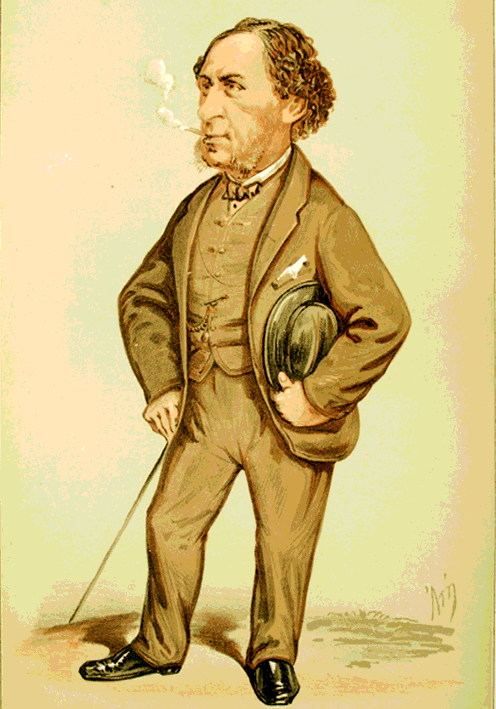
Sir Joseph Hawley, 3rd Baronet (1813-75)
When the Derby was instituted at Epsom, Surrey in 1780, the big-money Classics were the province of rich English gentleman. One was Joseph Hawley, son of Sir Henry Hawley, the owner of Leybourne Castle, which he inherited in 1831. He married in his mid-twenties, and served as Sheriff of Kent in 1844. Having already trained in Wiltshire, he set up a stables at Leybourne, later known as Leybourne Paddocks. There he bred not only racehorses, but champion ones. He won the Derby with Teddington in 1851, and repeated the feat with three other horses, Beadsman, Musjid, and Blue Gown, within 18 years. Not only that, but he also won the Oaks with Miami (1847), the 1,000 Guineas with Aphrodite (1851), the 2,000 Guineas with Fitz-Roland (1858), and the St Leger with Pero Gomez (1869), completing the set of all five Classics. His equestrian achievements were an inspiration to the literary career of his nephew, Henry Hawley Smart from Dover.
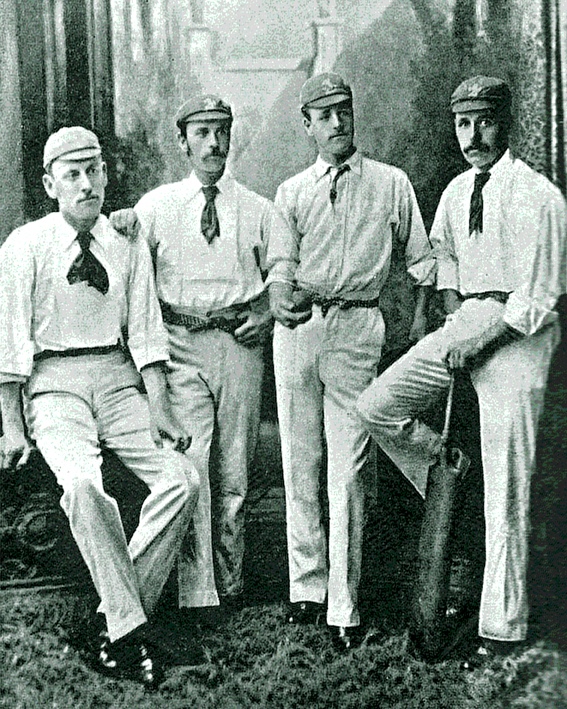 The Hearnes
The Hearnes
The Hearnes were one of the most remarkable of cricketing clans. George Hearne (1829-1904) was born in Chalfont St Giles, Bucks and played cricket for Middlesex, as did his older brother Tom (1826-1900), who in 1861-2 additionally became one of the first-ever party of Englishmen to tour Australia. In 1872, George came to live in Catford and took over as Kent CCC’s groundsman there. His three sons George (1856-1932), Frank (1858-1949), and Alec (1863-1952) were all born in Ealing, Middlesex but played for Kent; Alec was Kent’s top wicket-taker and run-scorer when he retired. George also had two cousins, Herbert (1862-1906) and Walter (1864-1925), who played for Kent; sadly, their illustrious brother Jack (1867-1944), who took over 3,000 wickets in his career, opted to play for Middlesex. Of the 13 Hearnes in the cricket world, four (Alec, George Jr, Jack, and ‘Young Jack’) played for England, one (George, son of Frank) for South Africa, and one (Frank) for both.
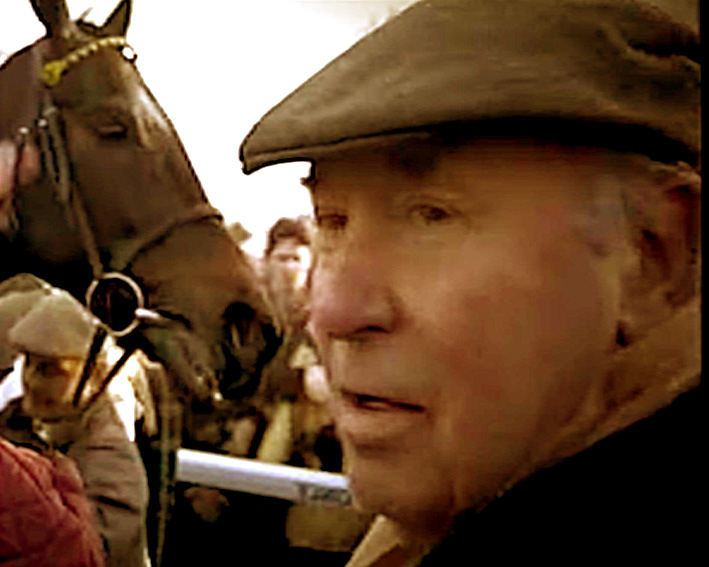 Trevor Hemmings (1935-2021)
Trevor Hemmings (1935-2021)
Despite looking the quintessential Lancastrian in his trademark cloth cap, Trevor Hemmings was born in Woolwich, the son of a worker at the Royal Ordnance Factory. He became a bricklayer, but ended up a robust businessman in the leisure industry: he owned Blackpool Tower via Leisure Parcs Ltd, and the Pontin’s holiday camp chain twice, in the 1980s and the 2000s. He expended his wealth on his sporting interests, which above all else meant horse racing. One of his horses, Trabolgan, won the Hennessy Gold Cup in 2005, and no fewer than three won the Grand National – Hedgehunter in 2005, Ballabriggs in 2011, and Many Clouds in 2015. The popular Hemmings also owned a fourth horse called Cloth Cap that was favourite for the 2021 race, but pulled up towards the end. In 2010, he bought Preston North End football club, and was still chairman when he died while living on the Isle of Man.
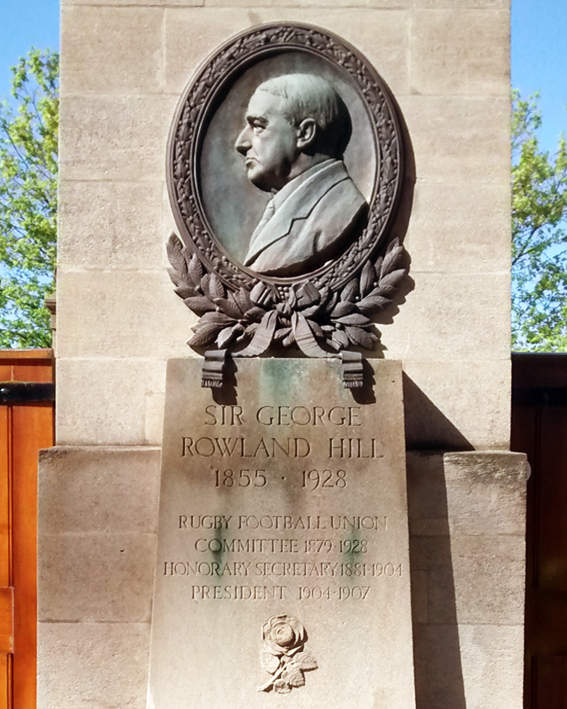 Sir George Rowland Hill (1855-1928)
Sir George Rowland Hill (1855-1928)
George Hill from Greenwich was one of the great sporting administrators. He became secretary of the RFU in 1881 and remained in the post for 23 years. Consequently, it was on his watch that rugby union faced two of its greatest crises: first when, in 1887, the other home nations set up the IRFB, depriving the RFU of its role as lawmaker; and then in 1895, when northern clubs broke away to establish the professional game that became the Rugby League. The latter was in large part a consequence of Hill’s utter dedication to the amateur ideal. After relinquishing his post, he received the ultimate vote of confidence in being elected RFU president three times in succession. He also co-founded the precursor of Reading RFC, and represented Greenwich on London County Council. His 49 years on the RFU Committee were rewarded with the landmark Memorial Gate at Twickenham, and the first knighthood awarded for services to rugby.
 Roy Hodgson (b 1947)
Roy Hodgson (b 1947)
After starting his career as a youth at Crystal Palace, Hodgson played for some years at Tonbridge and then Gravesend & Northfleet. In 1971, he joined his former Croydon school-mate Bobby Houghton at Maidstone United as a full-back. When Houghton was sacked at the end of the season – the club’s first in the Southern League – Hodgson departed for Ashford Town. He also played in South Africa and for Carshalton Athletic before turning to club management in 1976. He took charge of a number of Swedish clubs, enjoying stunning successes, before moving to Switzerland in 1992. A number of top appointments followed over the next 20 years, starting with the Swiss national team and including Inter Milan and Liverpool. In 2012 he landed the England job, but departed after failures at the 2014 World Cup and Euro 2016. He then returned to Crystal Palace, which he kept in the Premier League until his retirement in 2021.
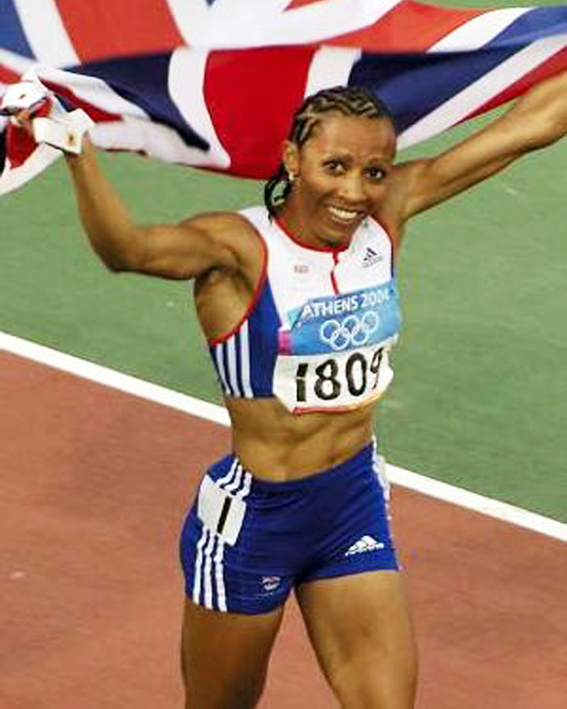 Colonel Dame Kelly Holmes (b 1970)
Colonel Dame Kelly Holmes (b 1970)
Holmes is the true Golden Girl of British athletics. Though born in Pembury, she was always a Hildenborough girl. Her father left home when she was a baby, although her young mother married seven years later. After school in Tonbridge, she joined the WRAC as a driver before becoming a PT instructor and later Army judo champion. She burst onto the middle-distance running scene in the mid-1990s, winning one Commonwealth and two European Cup golds, but her career was beset by injuries. She suffered from depression that induced self-harming. Holmes picked herself up, however, and in 2004 decided with just five days to go to compete in both the 800m and 1500m events at the Athens Olympics. On August 23rd, she astonished the world, and herself, by winning the 800m gold at 34. Five days later, she pulled off a miracle double in the 1500m. She now helps others with mental-health problems. Her life is surely worth a biopic.
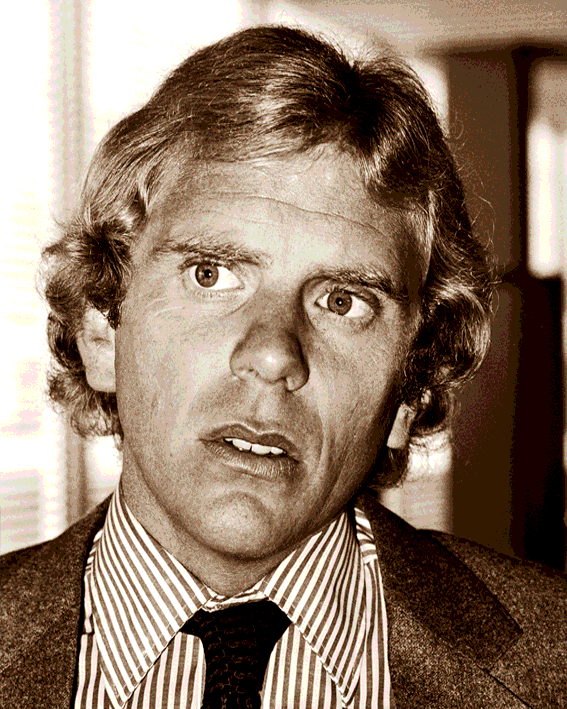 Bobby Houghton (b 1947)
Bobby Houghton (b 1947)
Bob Houghton was on the books of both Fulham and Brighton & Hove Albion before being appointed player-manager for Hastings at the tender age of 23. After a season, he was snapped up by Maidstone United chairman Jim Thompson for the new semi-professional squad created at the start of the club’s journey to the Football League. With his distinctive blond curls atop the new all-white kit, he looked every bit the charismatic leader. He was unlucky not to make promotion first time, missing out by a point; but his failure sufficed to earn him the sack. It was a cloud with a golden lining. He left to assist Bobby Robson at Ipswich before becoming manager of Malmö, which he took to the 1979 European Cup final against Brian Clough’s Nottingham Forest. After moving to Bristol City in the early 1980s, he went on to a 30-year managerial career overseas that included both the China and India national teams.
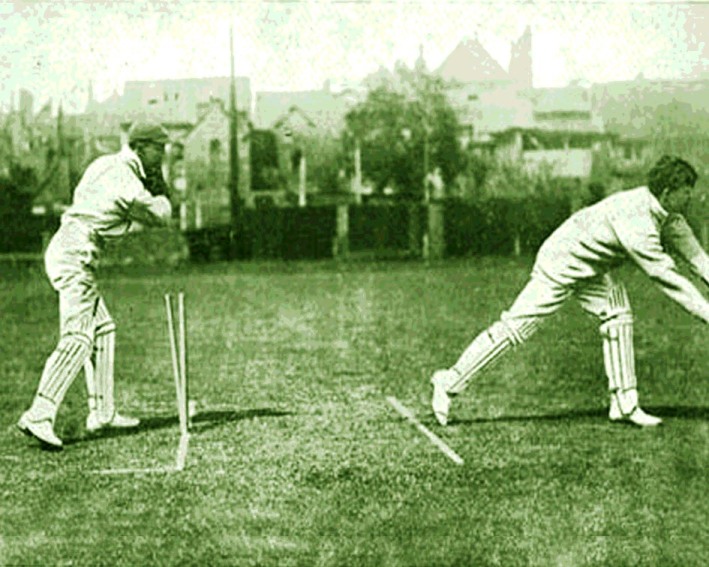 Jack Hubble (1881-1965)
Jack Hubble (1881-1965)
John Charlton ‘Jack’ Hubble from Wateringbury played inside-right for Maidstone United before joining Kent CCC and becoming a household-name wicket-keeper. During his two years in Maidstone’s first team, he was not the most prolific goal-scorer, but did get the winner in a Kent Senior Cup final against Ashford, as well as an FA Cup hat-trick that put out Folkestone. He gave up football on taking up cricket full-time in 1904. Though he was never capped, his precision behind the stumps was a significant part of Kent’s haul of four County Championships between 1906 and 1913, and increasingly so as Fred Huish approached retirement. In 1923, he dismissed ten Gloucestershire batsmen in one match. He remained in First Class cricket for 25 years, always at Kent. Having opened his own sports shop in 1910, he set up two others after he finished playing cricket: one with Les Ames in Gillingham, and another with Tich Freeman in Maidstone.
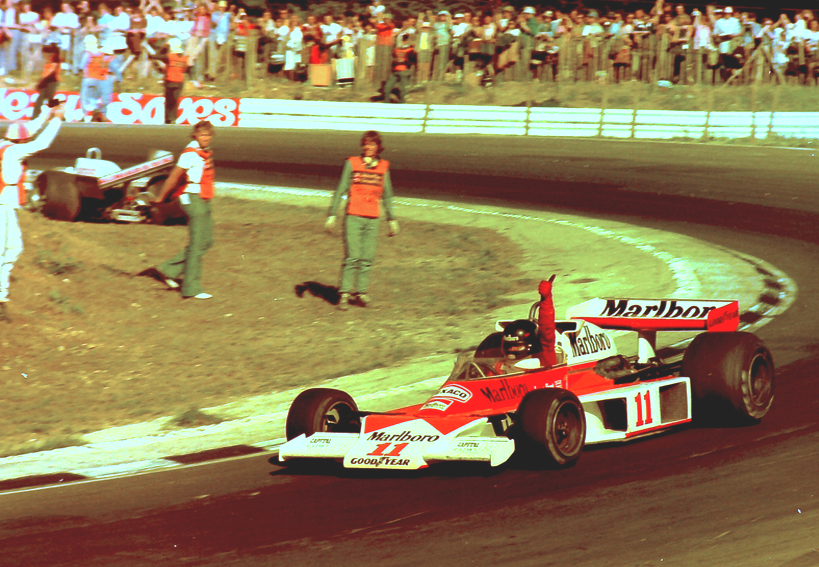 James Hunt (1947-93)
James Hunt (1947-93)
For an F1 world champion, James Hunt had a remarkably short career. The Surrey-born public-school educated Hunt started racing in Formula Ford at 20, winning his first race at Lydden and setting a short-circuit track record at Brands Hatch. After earning the nickname ‘Hunt the Shunt’ for his aggressive driving with Hesketh Formula 3, he was signed in 1975 by McLaren F1. The following season, despite being disqualified after apparently winning the British GP at Brands, he narrowly won the world title; his intense but mutually respectful rivalry with Niki Lauda was celebrated in the 2013 movie ‘Rush’. After retiring in 1979, Hunt commenced a 13-year career on BBC TV as co-commentator with Murray Walker, whose boyish enthusiasm he punctuated, and sometimes punctured, with his laconic wit. Hunt, the ultimate playboy, once claimed to have slept with every hostess on the London-New York air route. Fans were not altogether surprised when he died suddenly of a heart attack.
 Kenneth Hutchings (1882-1916)
Kenneth Hutchings (1882-1916)
Hutchings, the son of a surgeon, was born in Southborough, attended Tonbridge School – where he was captain of cricket – and started work as a papermaker for Wiggins Teape at Dover. This did not stop him playing for Kent as an amateur, as did two of his three brothers. He developed an elegantly aggressive batting style, and was said to strike the ball even harder than his older contemporary, the legendary Gilbert Jessop. His annus mirabilis was 1906, when he scored 1,454 runs (average 60.58) to help secure Kent’s first County Championship. He also notched 1,000 runs in each of the next five seasons, which embraced two more Championships, and won seven England caps, including in two Ashes series. He was working in Lancashire when WW1 broke out, and it was while serving with the King’s Liverpool Regiment that he was struck by a shell at the Battle of the Somme; his remains were never located.
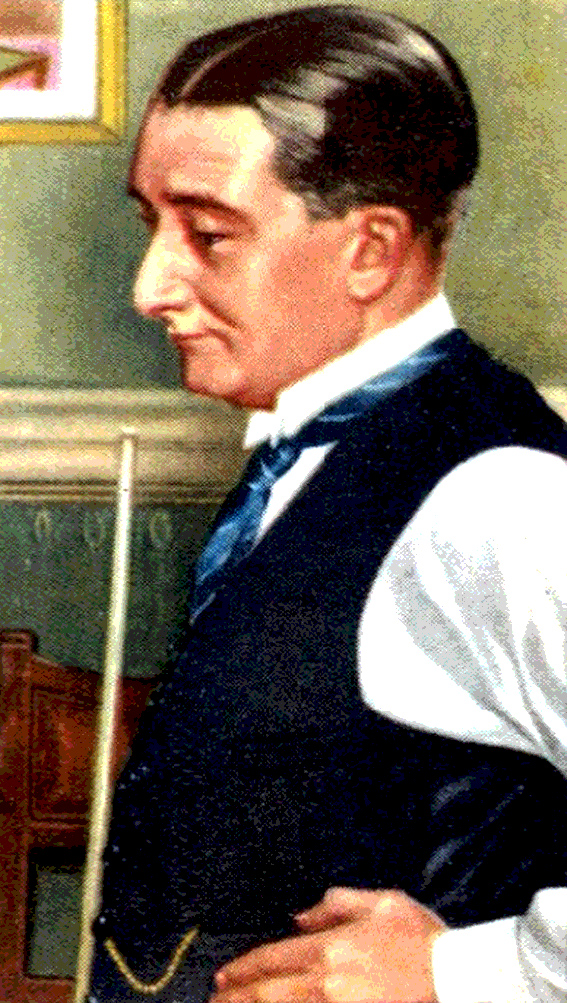 Melbourne Inman (1878-1951)
Melbourne Inman (1878-1951)
Melbourne Inman was born not in Australia but Twickenham, Middlesex, his first name being simply a homage to an uncle of that name. The son of a billiard hall manager, he came from the ultimate billiards family, his father, two uncles, and three brothers all recording 100 breaks. Already a marker at 14, Inman was remarkably short, and never popular, but had excellent tactical nous. He dominated the game for a decade, winning world championships in 1908, 1909, 1912, 1914, and 1919; a replica cue bearing his image was manufactured to celebrate one of his breaks. Visiting New York in 1914, he thrashed the champion of French billiards, William Hoppe, at English billiards; the contest attracted much attention, providing a major boost for the game in America. Less successfully, Inman tried his hand at the World Snooker Championship in 1927. In later life he lived at Bromley, and died in hospital at Farnborough, Kent.
 Asif Iqbal (b 1943)
Asif Iqbal (b 1943)
The sight of Asif Iqbal sauntering to the wicket to join Colin Cowdrey, after Mike Denness and Brian Luckhurst had got an innings off to a sprightly start, was enough to warm any Kentish heart. His batting style was best described as swashbuckling. Though technically accurate and elegant, he liked to take bowlers on, and no cause was lost while he was still out there. He had in fact started out as a fast bowler, but changed his game after a back injury. He remained an excellent medium-pacer, making him worth two players. He stayed at Kent for 14 seasons. He also represented Pakistan in 58 tests as well as two World Cups, in 1979 as Captain. Kent and England fans’ feelings were mixed on August 27th, 1967. In the 3rd test at The Oval against England, with three Kent club-mates in the home team, he scored a courageous 146 for Pakistan while batting at number 9.
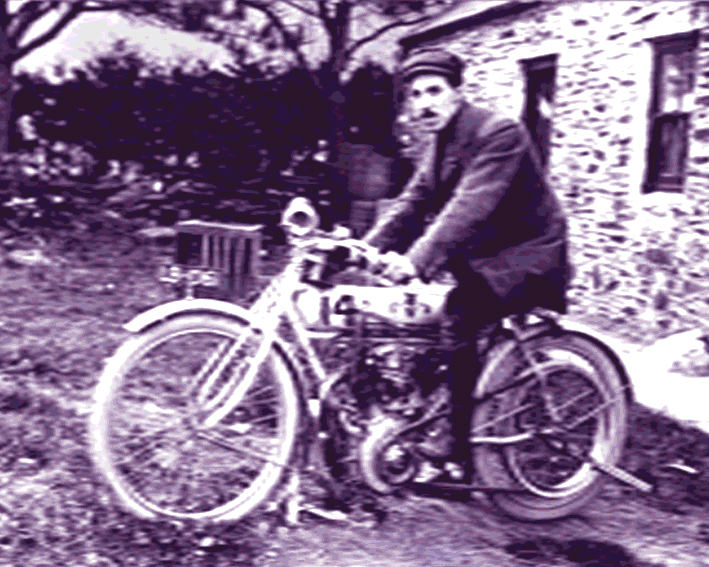 The Isle of Man TT
The Isle of Man TT
Motor racing first came to the Isle of Man in response to a blanket 20mph speed limit on British roads introduced in 1903. The very first Isle of Man Tourist Trophy (TT) race took place on May 28th, 1907. Among the competitors were two brothers from Plumstead, Charlie and Harry Collier, whose father Henry manufactured the Matchless motorcycles they raced on. The race consisted of ten laps of the 15.8 mile circuit. Harry retired on lap 9, but Charlie won in a time of four hours eight minutes, eleven minutes ahead of second place. His average speed was a stately 38 miles an hour, although to be fair his single-cylinder bike produced just 3.5 HP. When he won the race again three years later, he averaged 50 mph. It is funny to think that, half a century later, Maidstone‘s Bill Ivy would become the first rider on the Isle of Man to lap at over 100 mph.
 The Isle of Thanet Races
The Isle of Thanet Races
Dent-de-Lion Court in Garlinge skirts a housing estate that incongruously features a grand medieval gatehouse, the sole remnant of the Dandelion manor house that burned down in 1888. Two centuries ago, however, it used to host a major sporting attraction, the Isle of Thanet Races, first held on September 20th, 1820. The estate already boasted a First Class cricket ground which appears to have doubled up for equestrian use. The serious prize money, typically £50 a race, drew interest from the national racing community, and an associated array of family entertainments would attract 15-20,000 people from all over Kent with the aid of special excursions arranged by the South Eastern Railway. Two-day meetings continued for over two decades. They resumed from 1863 to 1871 a stone’s throw away at Shottendane Farm – close to where Margate football and cricket clubs now reside – which itself will soon be disappearing under a housing estate.
 Bill Ivy (1942-69)
Bill Ivy (1942-69)
William ‘Bill’ Ivy from Sutton Valence was just 5’3”, but a superlative motorcyclist. He first raced a 50cc bike at Brands Hatch at the age of 17. Six years later, he got a lucky break when a Yamaha rider was injured in Japan and, standing in, Ivy outperformed Yamaha’s other riders. The next year, he got a regular place on the team, and in 1967 completely dominated the 125cc World Championship. He might have won the 250cc world title the following year as well, if only teammate Phil Read had not disobeyed Yamaha’s team instructions. The disgruntled Ivy left to take up Formula Two racing. In 1969, however, he returned to race a 350cc bike for Jawa. During practice at the Sachsenring in East Germany, his engine seized up, his head impacted at speed with a fence post, and he died instantly. His body was brought home and, after a service at Ditton, cremated on Bluebell Hill.
 Gordon Jago (b 1932)
Gordon Jago (b 1932)
Born at Poplar in the East End in 1932, Charlton Athletic loanee Gordon Jago made his first-team debut for Maidstone United at the age of 17, holding down his place at centre-half for some weeks before reverting to the reserves. By then he’d already started playing for England Youth, and captained them against Scotland in February 1951. He stayed at Charlton for the rest of his playing career. In 1967 he made his first foray into US soccer, coaching first the Baltimore Bays and then the United States national team. After returning to manage Queen’s Park Rangers and Millwall for three seasons apiece, he left again to take charge of Tampa Bay Rowdies, and finally the Dallas Sidekicks, with whom he remains associated today. His role in promoting the Dallas Cup – an international youth tournament – brought him quite some celebrity in American soccer, and in Britain he was awarded the MBE.
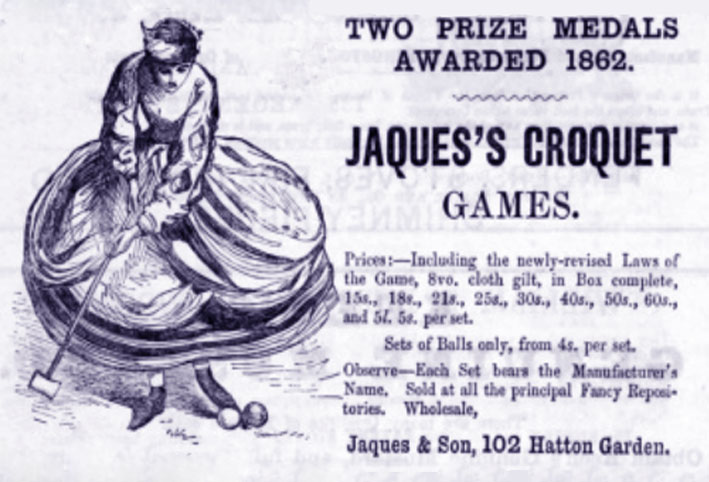 Jaques of London
Jaques of London
Even few Kentish people know that the world-famous games and sports-equipment manufacturer Jaques of London is now, geographically speaking, Jaques of Kent. The business was founded in 1795 by Thomas Jaques from Wiltshire, who used his traditional Huguenot craft skills to make ornamental artefacts, including Tunbridge Ware. His grandson John junior diversified into games, commencing one of the world’s great stories of innovation. In 1849, he introduced the Staunton chess set, whose unprecedentedly accessible design made it the game’s standard. The company then invented or patented a phenomenal succession of parlour games, including such household names as Happy Families, Ludo, Snakes & Ladders, and Tiddledy-Winks (sic). Jaques also influenced the development of various sports, including croquet, clock golf, and table tennis, for which it trademarked the name Ping Pong. Having left London after being bombed in the Blitz, the company moved its headquarters to Edenbridge in 2000. The Jaques family still owns it after eight generations.
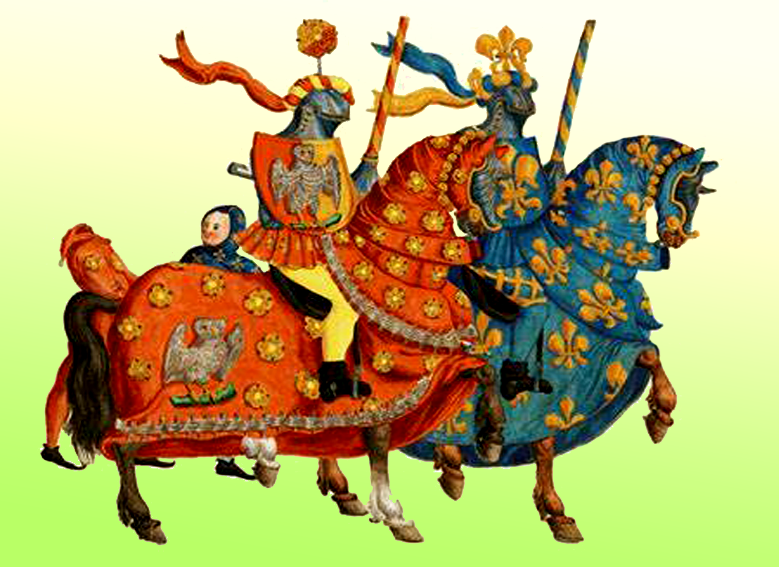 Jousting
Jousting
In days of old, when cricket was still a pastime for pastoralists and yet to develop into a pretext for gentlemanly gambling, jousting had already developed from its bloody military roots into a regular sport with formal rules. Its early medieval origins were continental, the name deriving from the French for single combat; but it was given a major fillip in Kent in the C16 thanks to the sporty Henry VIII, who built a prestige tiltyard at Placentia Palace. Despite the sport being outlawed in France after its King Henry II was accidentally killed while jousting in 1559, Elizabeth I held spectacular jousts annually on her accession day, her champion being Kent-born Sir Henry Lee. The sport died out after the reign of her successor James I, and three centuries would pass before fast bowlers devised new ways to knock off an opponent’s helmet. Jousting displays are still staged occasionally at Hever Castle and Leeds Castle.
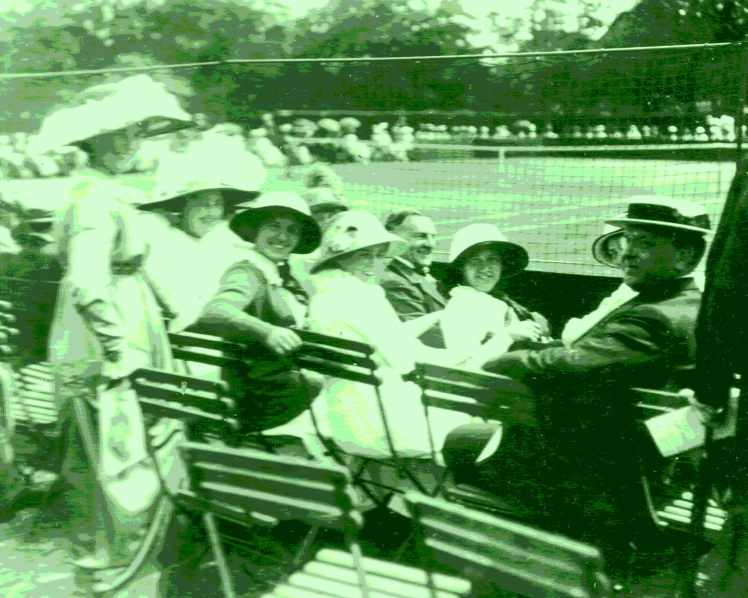 The Kent All-Comers’ Championships
The Kent All-Comers’ Championships
Every June for more than a hundred years, the Foxgrove Road cricket pitch at Beckenham staged one of the nation’s most prestigious tennis tournaments. Starting in 1886, the ‘Kent Championships’ came to be known as the traditional dress rehearsal for Wimbledon. As from 1963, the competition was the first to attract a commercial sponsor, Rothmans; and five years later it became an Open event, only the third after the British Hard Court Open at Bournemouth and the French Open. It drew competitors of the highest calibre from around the world. A total of 33 players won both the Beckenham and Wimbledon titles; winners included such legends as John McEnroe and Billie Jean King. In 1996, for want of a new sponsor, the Kent All-Comers’ Championships were killed off, and the county went from boasting two tennis tournaments of international standing at the start of the C20 to none at the end of it.
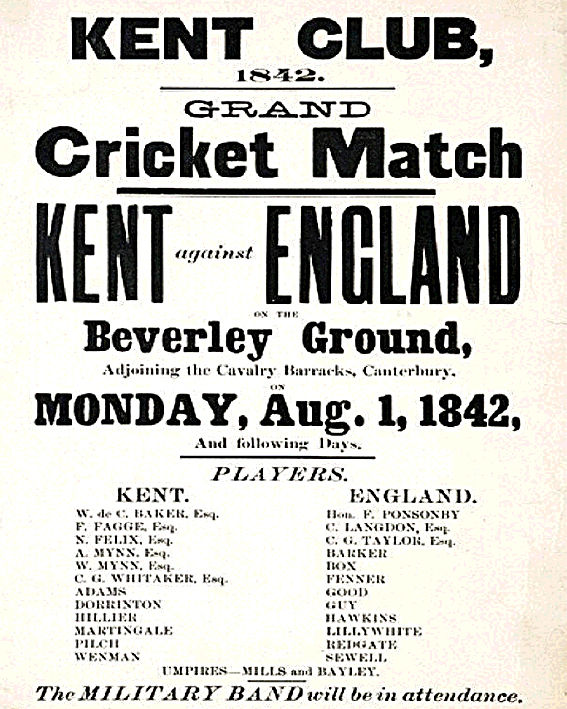 Kent County Cricket Club
Kent County Cricket Club
To Kent’s long list of cricketing firsts can probably be added another: the first county to have a representative eleven. Early in the C18, Edwyn Stede started picking Kent teams for gambling purposes. A familiar opponent was All-England, who sometimes gave Kent a good game. When several Northern counties formed clubs in the mid-C19, however, the balance of power shifted. Kent was hamstrung by having not one representative club, but two: Beverley Kent in Canterbury, and Kent County in Maidstone. Beverley owned Canterbury Cricket Week, but had no money. In 1870, they put aside their differences and merged at the Bull Inn, Rochester under the auspices of the 3rd Baron Harris. In 1906, 16 years after the start of the County Championship, Kent perfected a powerful squad that chalked up the first of four titles before WW1. Only during the 1970s, when three more were added, has the St Lawrence Ground seen such glory again.
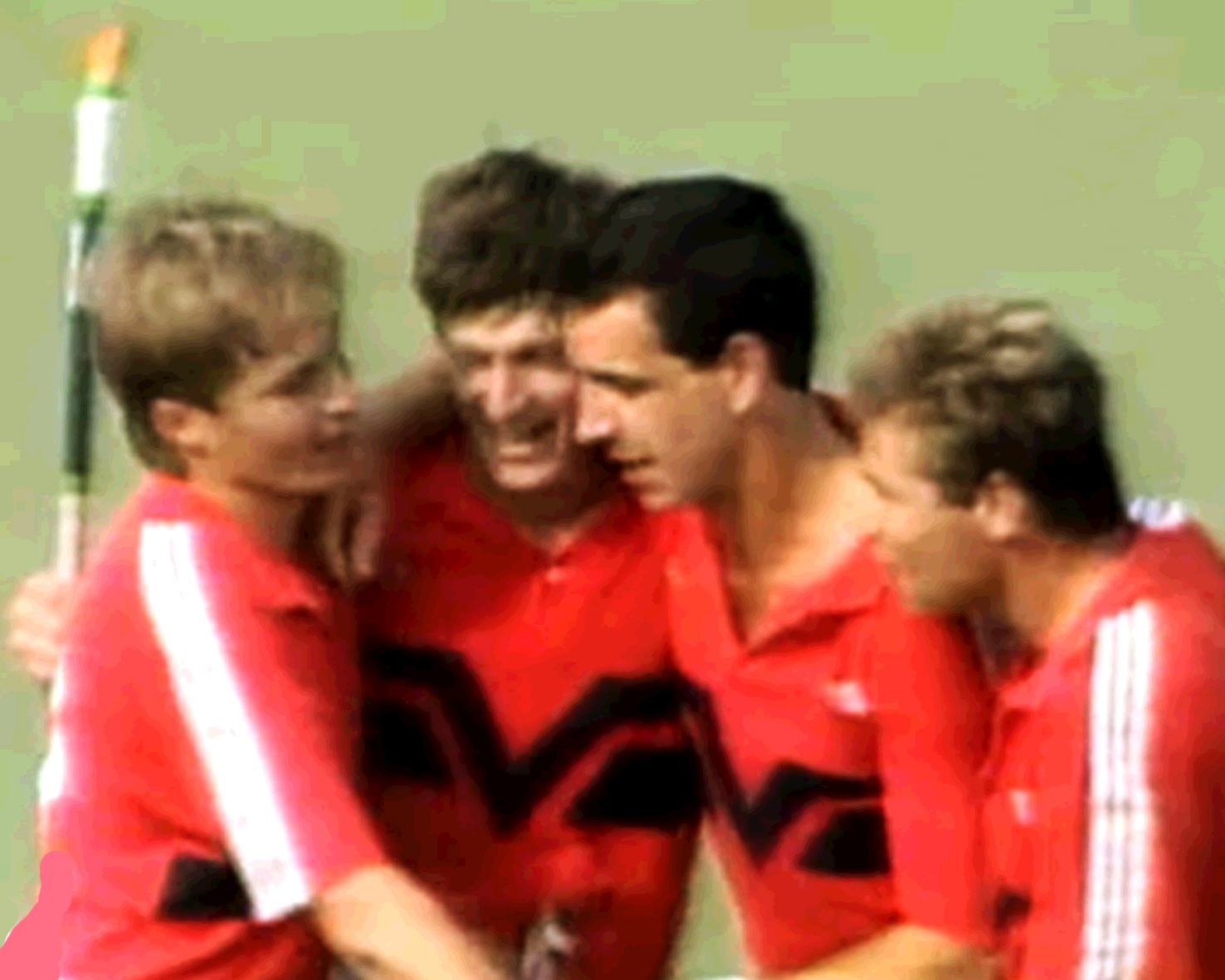 Sean Kerly (b 1960)
Sean Kerly (b 1960)
The outstanding personality in the British hockey squad that won gold at the Seoul Olympics was Sean Kerly. An out-and-out Man of Kent, he was born in Whitstable, went to school at Chatham House Grammar in Ramsgate, and played hockey for Canterbury and Herne Bay, as well as Southgate. With a bronze medal under his belt from the 1984 Olympics and a silver from the 1986 World Championships, he had his work cut out when facing Australia in the 1988 Olympic semi-final. Kerly turned in a performance that was an echo of Gary Lineker’s two years earlier at the football World Cup: he scored an enthralling hat-trick, delighting everyone with his skill, athleticism, and winning smile. He netted again in the final as Great Britain completed a remarkable 3-1 victory against favourites West Germany. Kerly, who scored a total of eight goals in the competition, has subsequently worked as a TV commentator.
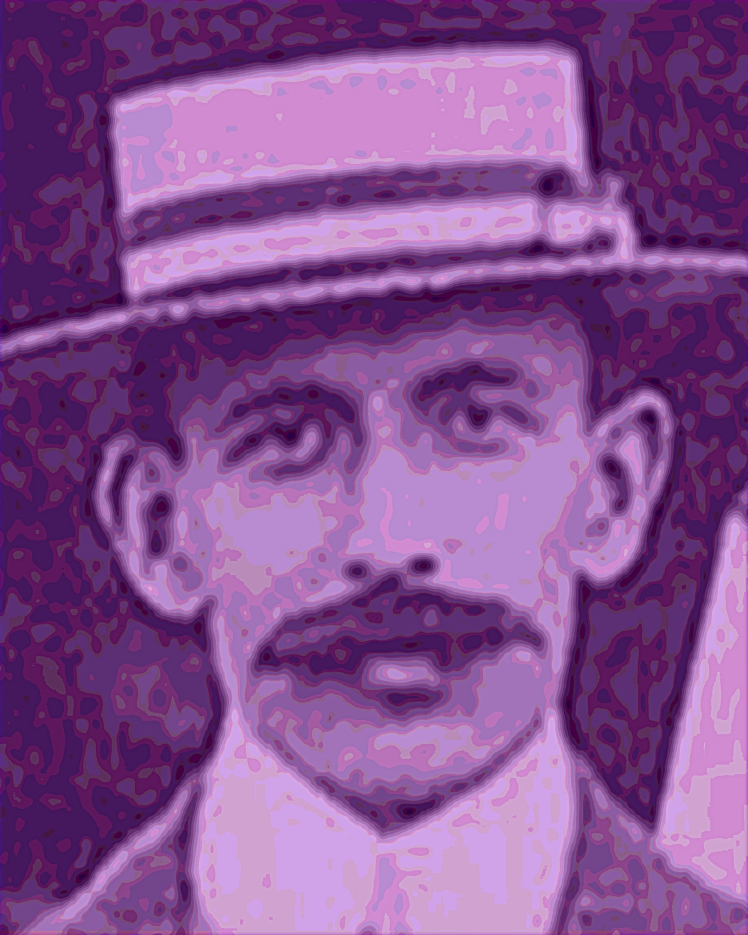 Syd King (1873-1933)
Syd King (1873-1933)
Chatham-born Ernest Sydney ‘Syd’ King was the true King of Upton Park. After attending grammar school in Watford, he started playing as captain and full-back for Northfleet, during which time he once scored a hat-trick of own goals. He nevertheless progressed to New Brompton for two seasons, and then to Thames Ironworks, which broke up in 1900 but quickly re-formed as West Ham United. He became player-manager before retiring from playing, but would continue as manager for an incredible 30 years. In that time, he got the club out of the Southern League and, in 1923, into Division One. Sadly, it all ended in tears. King was known to like a drink. After relegation in 1932, it got the better of him at a board meeting, and he was sacked. It emerged that he had also been less than honest with club funds. With his career in ruins, and the balance of his mind disturbed, he gruesomely killed himself.
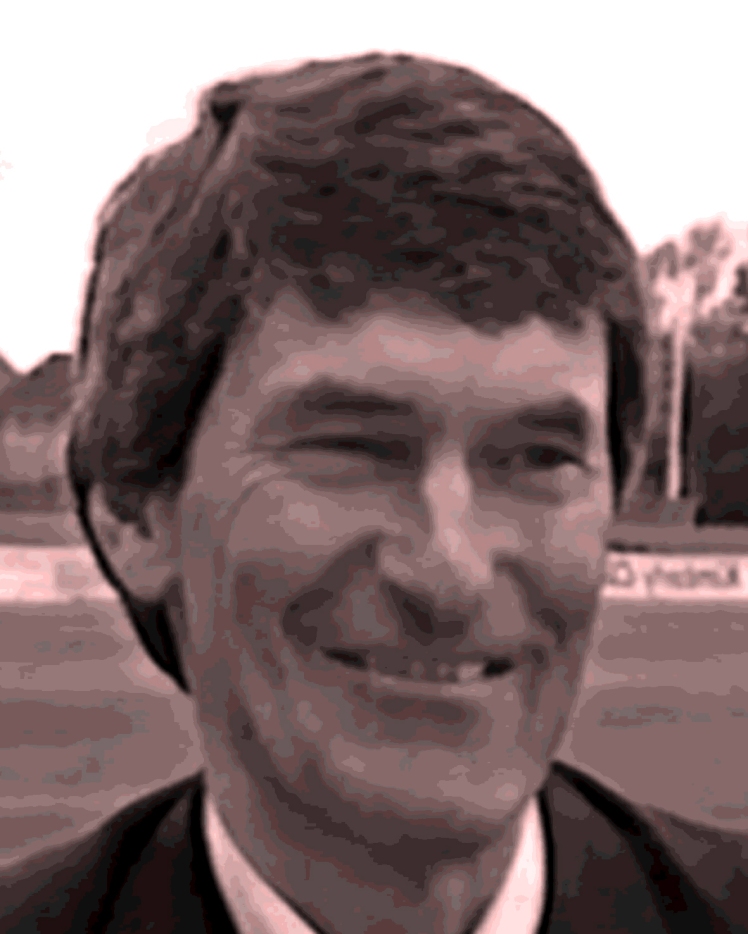 Alan Knott (b 1946)
Alan Knott (b 1946)
When A.P.E. Knott from Belvedere made his England debut in 1967, the many Kent fans watching were only anxious that he should not disgrace himself. After all, this amiable 21-year-old looked an unlikely candidate to replace Jim Parks as wicket-keeper, with his impish face, his lightweight physique, and those initials that underscored his simian gait. When he got a duck, all feared the worst; but he conceded only one bye in two innings, which boded well. Before long, the world could see that his was no ordinary talent. Not only did it become a schoolboys’ game to guess how many batsmen the athletic Knotty would catch or stump in an innings; he also blossomed as an elegant batsman, possessing a cut as productive as anyone’s. While forming a lethal partnership with Derek Underwood for county and country, he played 95 times for England, a record. In 2013, he was named in Wisden’s best Test World XI of all time.
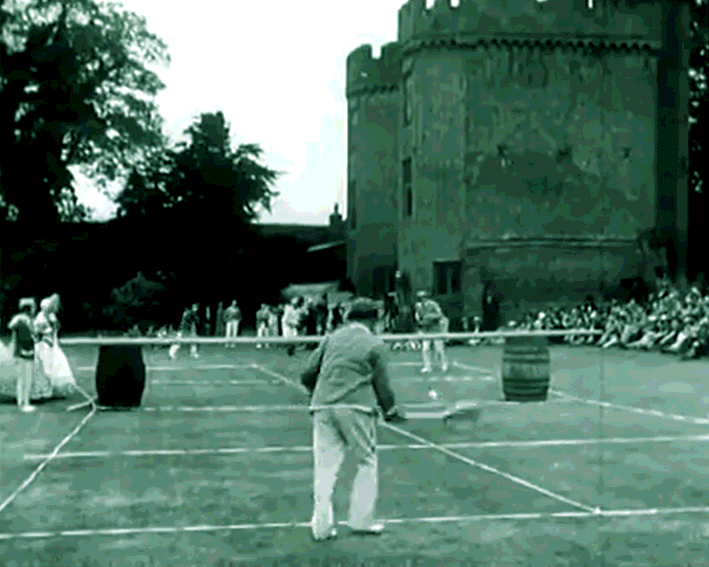 Lawn Tennis
Lawn Tennis
During the 1870s, for reasons to do with the preparation of playing surfaces by new-fangled lawnmowers, it was the Marylebone Cricket Club that took the lead in drawing up rules for the nascent game of Lawn Tennis. In 1877, with a new tournament slated at Wimbledon, a committee of three convened to devise the definitive rules that have survived largely intact to the present day. Among them was John Heathcote, a barrister and champion real-tennis player. Four years earlier, he had come to Kent to demonstrate the sport with the former world champion rackets player, MP Sir William Hart Dyke, who owned the venue: Lullingstone Castle. In 1938, that landmark exhibition match would be celebrated in a filmed reconstruction at Lullingstone, complete with period dress. Hart Dyke and Heathcote also participated in 1875 in the MCC’s original attempt to draw up tennis rules, which decided upon an hourglass-shaped court, its net bizarrely being narrower than the baselines.
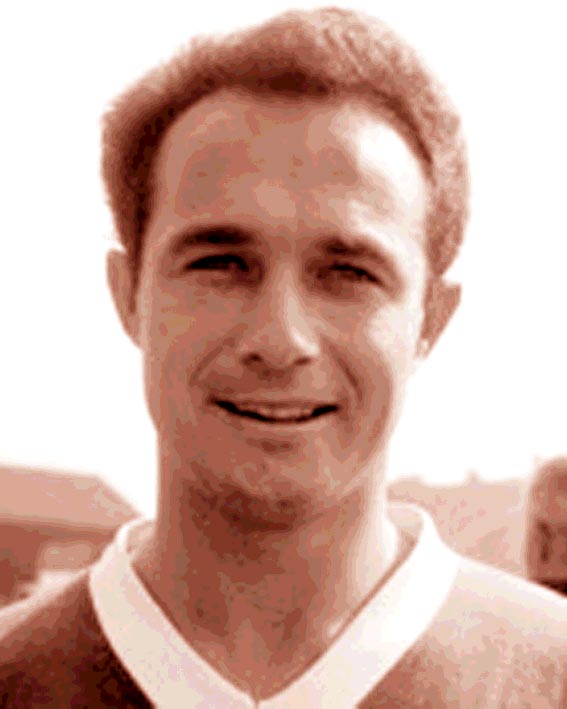 Stuart Leary (1933-88)
Stuart Leary (1933-88)
There are few sadder stories in Kent sport than that of South Africa-born Stuart Leary. Blessed with tremendous all-round sporting talent, he first came to England at 17, when he was signed by Charlton Athletic. He played at centre-forward, in which position he proved a natural goal-scorer, racking up 153 goals in 376 competitive matches. After remaining an Addick for 12 years, he joined Queens Park Rangers for four further seasons, scoring another 29 goals. Meanwhile, in the summer, he was busy playing cricket for Kent as an all-rounder. In his 20-year career, he scored 16,517 runs and took 146 wickets; he continued playing until the age of 38. After retiring, he became a coach. His premature death came about when he took a cable-car to the top of Table Mountain, and leapt off the edge. He was known to suffer from depression, and there were rumours about his marriage and his sex life.
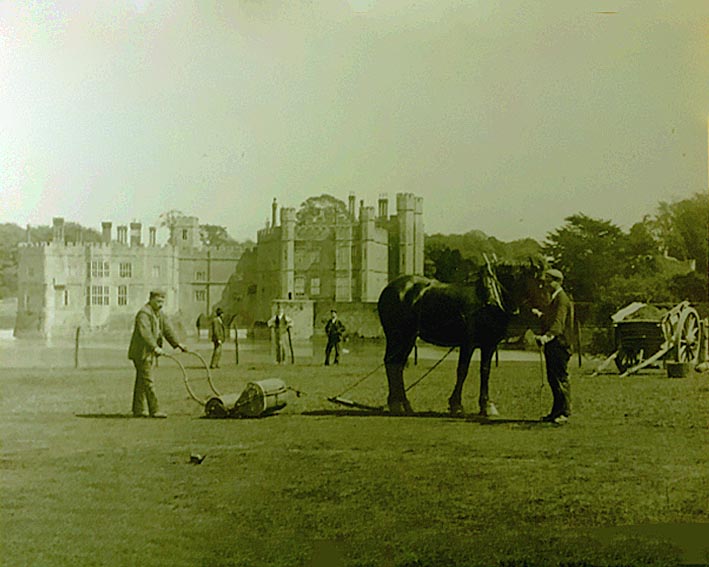 Leeds Park Cricket Club
Leeds Park Cricket Club
Cricket in the Georgian era was mostly concerned with gambling. Gentlemen would put together a team of any agreed number to take on another for money. It was therefore not unusual for a man of wealth to invest in a strong team capable of taking on all comers like a prize-fighter. This could of course be an expensive enterprise. One man who didn’t shy at the cost was Charles Wykeham Martin, the owner of Leeds Castle. In 1829, deciding that his Leeds Park Cricket Club needed an upgrade, he recruited the services of the mighty Alfred Mynn, the ‘Lion of Kent’, as well as his brother Walter. Along with other reinforcements, they made the club so powerful that it beat MCC and Surrey in both 1834 and 1835, celebrating afterwards at the Park Gate Inn on the Ashford Road. Leeds Park was reckoned to be a match for any team in England, which then meant anywhere.
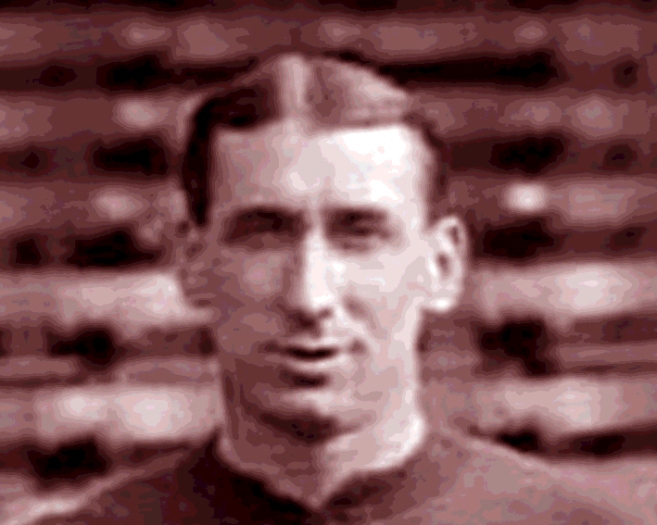 Charlie Lewis (1886-1967)
Charlie Lewis (1886-1967)
Despite being born in Plumstead, Charles Henry Lewis did not sign immediately for his local club Woolwich Arsenal. He cut his teeth first at Eltham, and then spent the 1906-07 season at Maidstone United where, playing at either inside-right or centre-forward, he finished top scorer with 31 goals. The First Division Gunners signed him up on the strength of it, and he spent an incredible 14 years with them, playing in every forward position. Unfortunately, Kent’s senior club was struggling on the pitch, and had money troubles off it. Lewis survived the bankruptcy crisis of 1910, when the club was forced to sell its best players. In 1912-13, Woolwich Arsenal’s relegation season, he was top scorer with just four goals. Unluckily, WW1 arrived as his career was reaching its peak. He would play only five games for the renamed ‘Arsenal’ at Highbury, but did nevertheless amass 220 appearances. He even managed to squeeze in time at Margate before retiring.
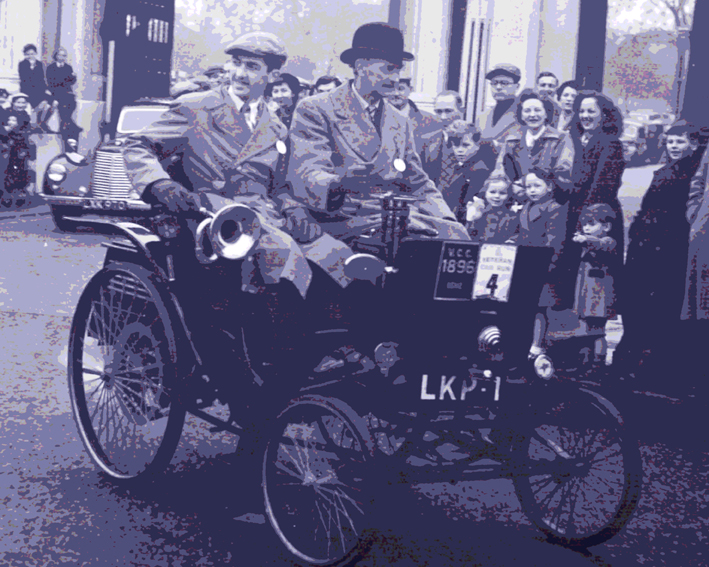 The Lewis-Evanses
The Lewis-Evanses
Lewis ‘Pop’ Lewis-Evans was born in Plumstead in 1899. During WW1, he trained in the Royal Flying Corps, but afterwards joined Vauxhall Motors at Luton, where his son Stuart was born in 1930. Owner of a Vauxhall-Bedford main dealership in Welling from 1935, Pop possessed an 1896 Benz that he drove regularly in the London-Brighton Rally, and in 1951 acquired a Cooper Mk IV with which the pair started racing. Pop became an early stalwart of Brands Hatch, and later contributed a Lewis-Evans Trophy. Stuart meanwhile, who won the Kentish Trophy there, took up F1, and in his second season drove in the Vanwall team that won the inaugural Constructors’ Championship. In the last race of the 1958 season, the Moroccan Grand Prix, he crashed when his engine seized up and he died of his burns, precipitating Vanwall’s demise and the temporary retirement of Stuart’s close friend and manager, Bernie Ecclestone. Pop died in 1987 at Herne Bay.
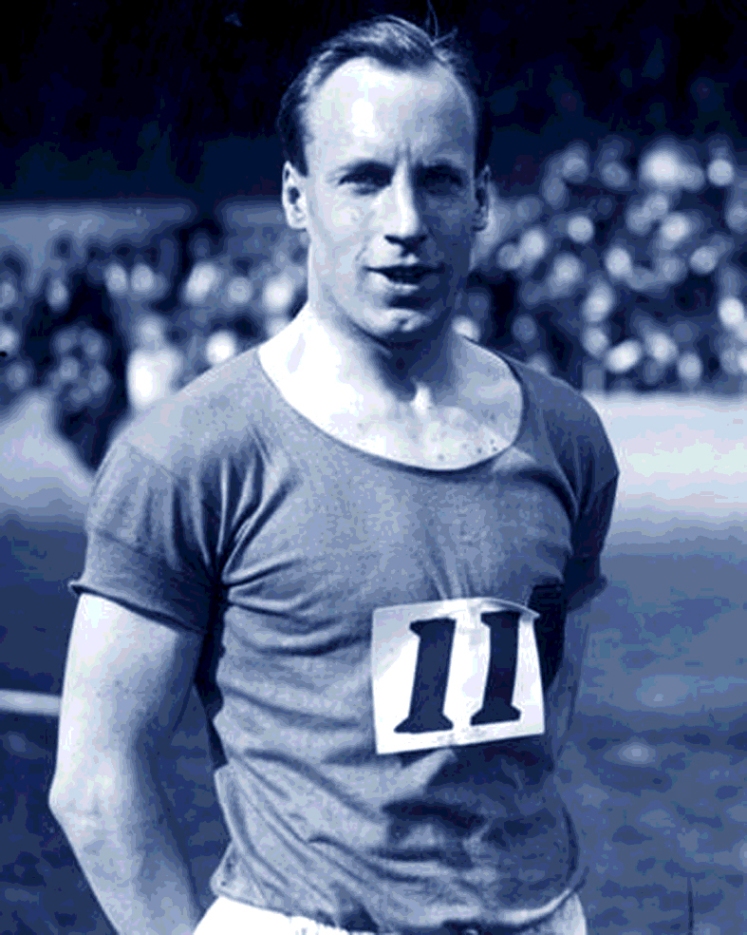 Eric Liddell (1902-45)
Eric Liddell (1902-45)
Liddell might have been forgotten were it not for the fact that his story was recorded by an Oscar-winning British movie, ‘Chariots of Fire’, in 1981. He was born in China, the son of Scottish missionaries. He was sent to Eltham College, where he captained the school rugby and cricket teams, and won the Blackheath Cup as the year’s best athlete. His parents took him to Edinburgh, where he made his debut for the Scottish rugby union team in 1920, going on to make seven appearances and score four tries. At the 1924 Olympics in Paris, he declined to take part in the 100 metres, his best event, because the heats were on a Sunday. He won bronze in the 200 metres, and gold in the unfamiliar 400 metres with a world-record time. He returned to missionary work in China, and died in a Japanese internment camp during WW2. Some in China consider him their first Olympic champion.
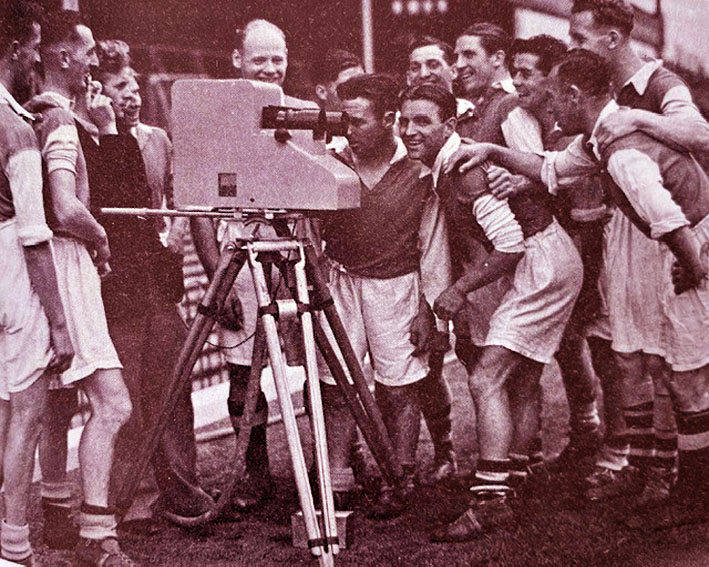 Live football on TV
Live football on TV
Thursday, September 16th, 1937 was a historic day in TV sports broadcasting. The BBC had plans to broadcast its first-ever live football match. For a trial run, it turned to Highbury Stadium, home of Kent-born club Arsenal, which had also featured in the first-ever live radio broadcast in 1927; it just so happened that the BBC transmitter at Alexandra Palace was conveniently close. The contestants in the match were Arsenal’s First XI and Arsenal Reserves, alternatively known as Margate FC. The prospective champions had adopted the Kent club as their nursery team in 1934, in emulation of Tottenham Hotspur’s highly successful arrangement with Northfleet United. Only a quarter-hour of the match was transmitted, using one camera on the halfway line and one beside each goal. Although no trace remains, the event served its purpose. Eight months later, the BBC screened its first complete live match, featuring Stanley Matthews and Bill Shankly, when Scotland beat England 1-0 at Wembley.
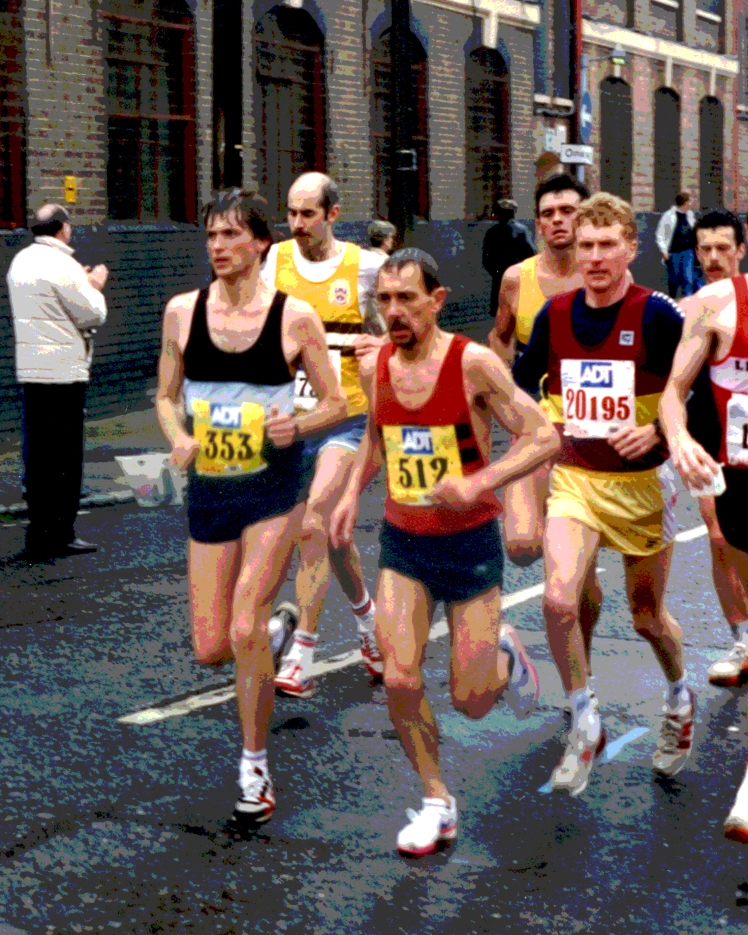 London Marathon
London Marathon
The first Olympic marathon in 1896 was run between Marathon itself and Athens, a distance of 25 miles. Not until 1908 was the now standard distance of 26 miles 385 yards set in the London Olympics. Yet today’s London Marathon is not a home-grown idea. It was actually suggested by the New York Marathon, in which Great Britain steeplechasers Chris Brasher and John Disley competed in 1979. Impressed by its cosmopolitan sociality, they pinched the idea. The first London Marathon in 1981 was organised to begin in Blackheath and run around Canary Wharf via Tower Bridge, before finishing at The Mall after some good sight-seeing. 7,055 participants started, a number that has since expanded six-fold. There are nowadays three starts for different categories: at Charlton Way, St John’s Park, and Shooter’s Hill Road, initially heading east and converging at Woolwich. The record time of 2:02:37 was set in 2019 by Kenya’s Eliud Kipchoge.
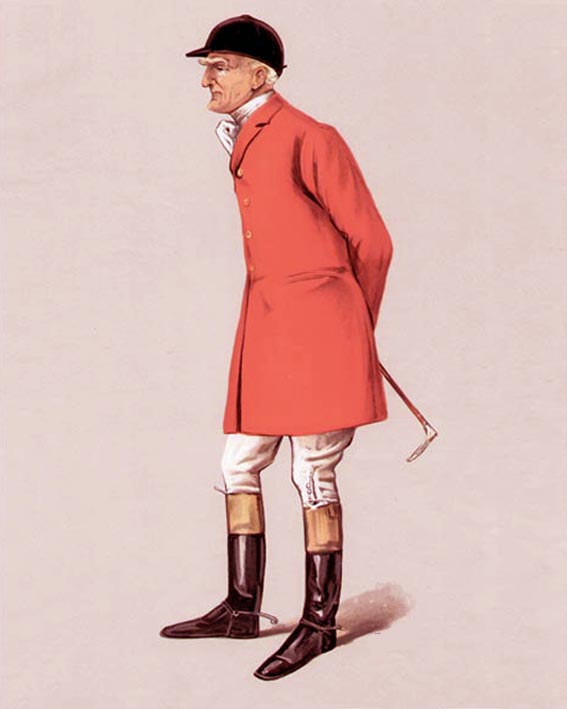 The Lubbocks
The Lubbocks
Sir John Lubbock of High Elms sired an extraordinary sporting dynasty. Of his seven sons, three were outstanding sportsmen. One, Edgar, played in four FA Cup finals, winning with both Wanderers and Old Etonians. In the 1875 final replay, he and brother Alfred played in the same team – a first. Edgar also represented England in all five ‘pseudo internationals’, and later became a top tennis-player. Furthermore, Edgar and Alfred played cricket for Kent, as did brother Nevile. Alfred additionally played for MCC, and as a batsman was considered the equal of WG Grace. Sir John’s most famous son, also John, had no time for sport because of his political and scientific activities; but his son, a third John, surprised nobody by turning out a superb all-rounder. As well as getting a football blue for Cambridge, he appeared for Oxford University in an FA Cup final, played cricket for the MCC, won a real-tennis blue, and was a scratch golfer.
 Lydden Hill Race Circuit
Lydden Hill Race Circuit
Lydden, tucked away off the A2 near Wootton, may seem an odd choice of location for a motor-racing circuit, but it is pleasantly scenic and very convenient for anyone arriving at Dover from the continent. The Lydden Circuit was originally built in 1955 by Bill Chesson for stock-car and grass-track racing. In 1962, he tarmacked it for road racing, although construction stalled when his budget ran out, leaving the 1,591-yard elbow-shaped circuit – the shortest in Britain. It was further upgraded in 1965, and three years later James Hunt won his first ever race there in Formula Ford. In 1967, Lydden staged the birth of rallycross, Egerton’s Trevor Hopkins winning the first three British titles. It also hosted world championship rallycross races from 2014 to 2017, and was reinstated in 2023 for the new all-electric competition. The circuit, owned since 2008 by four-time British rallycross champion Paddy Doran, also hosts sports- and saloon-car events in addition to motorcycle racing.
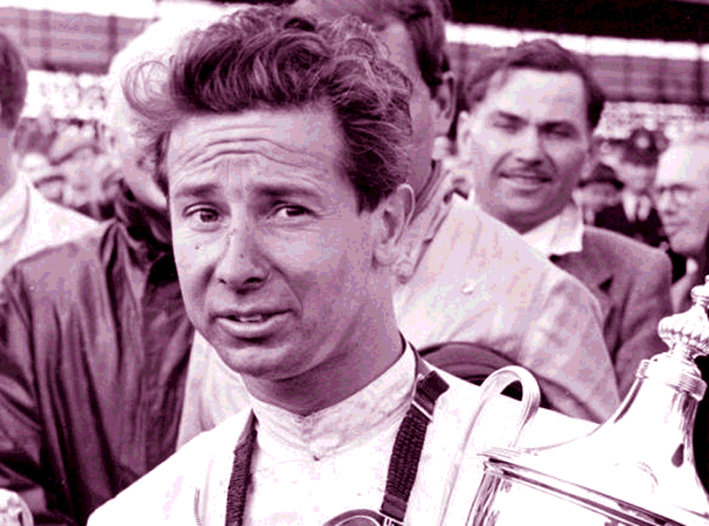 Lance Macklin (1919-2002)
Lance Macklin (1919-2002)
Amiable playboy Lance Macklin, a Londoner, was central to the worst disaster in motor-racing history. He had been driving competitively for seven years when, on June 11th, 1950, he turned out for Austin-Healey in the 24 Hours of Le Mans. At 6.20pm, he was driving down the main straight at 150mph when, right in front of him, race leader Mike Hawthorn braked his Jaguar hard to enter the pit lane. Macklin took evasive action, putting him in the path of Pierre Levegh, whose Mercedes ran over Macklin’s tail and literally took off. The vehicle disintegrated on colliding with an embankment, and a ton of metal scythed through the packed crowd. The driver and 83 spectators were killed. Hawthorn won the race insouciantly, whereas Macklin felt unfairly blamed, and quit racing after witnessing another fatal crash shortly afterwards. Hawthorn was killed in a road accident in 1959, while Macklin ended his days in Bethersden, his memories finally obliterated by dementia.
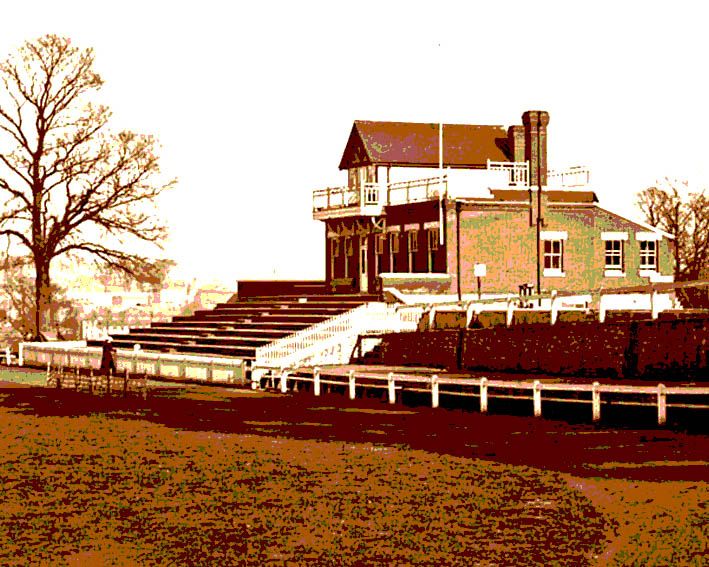 Maidstone Athletic Ground
Maidstone Athletic Ground
The Athletic Ground opened in 1895 as Britain’s first privately owned multi-sport centre. The owner of Springfield Paper Mill had made available 13 acres on the opposite bank of the Medway, and joined nine others in raising £6,500 to level the land and erect a pavilion. It was a splendid affair, with seating for 2,000 and first-rate changing and catering facilities. Though designed for cycling and athletics while providing for rugby, tennis, croquet, quoits, and tug-of-war, it was principally meant to house the new Maidstone Cricket Club, boasting an attractive pavilion. Nevertheless, it quickly proved a commercial flop. The cricket club struggled to compete with The Mote, and other sports attracted too small audiences. An amateur football club was created to play there from 1896, but had little success and fizzled out after two years. Salvation depended on acquiring a professional football club. Maidstone United took occupancy in April 1898, and the Ground became a sporting and social hub for 90 years.
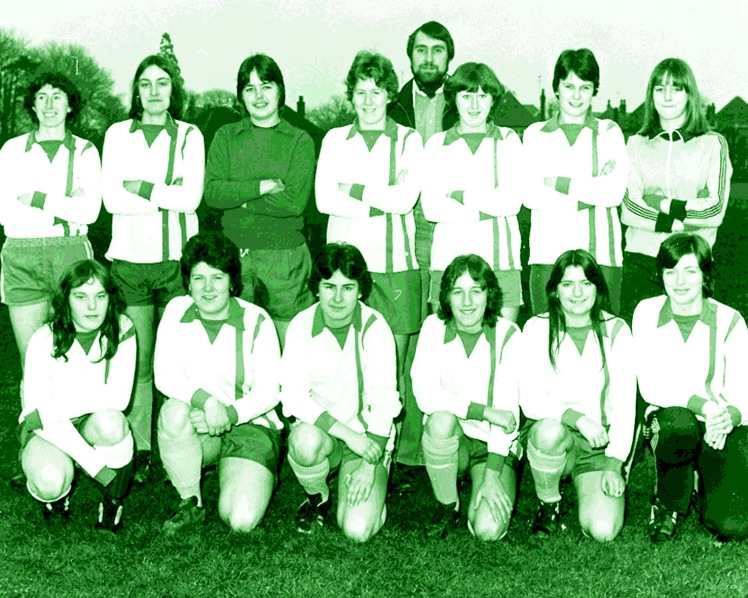 Maidstone Ladies Football Club
Maidstone Ladies Football Club
When the FA recognised women’s football in 1970, Maidstone was fast to react. Three local men founded Mote United (later Maidstone) Ladies so that their daughters could play. With Luton’s John Ryan as president, they bossed the Kent Women’s League, and played an annual friendly against Spurs Ladies. In the 1970s, Maidstone hosted probably the first visit by a German ladies team – the runners-up in the inaugural West German championship, Eintracht Erle – and a Possibles v Probables full England trial. Five years after Maidstone Ladies had played in the first ever televised women’s match, at Norwich City in 1981, several players broke away to form Maidstone Tigresses FC. Under the presidency of Spurs manager Terry Venables, the club became part of the inaugural Women’s Premier League in 1991-92, finishing fifth. It folded three years after the demise of parent club Maidstone United. Both women’s clubs had reached the semi-final of the Women’s FA Cup, and together had fielded seven full England internationals.
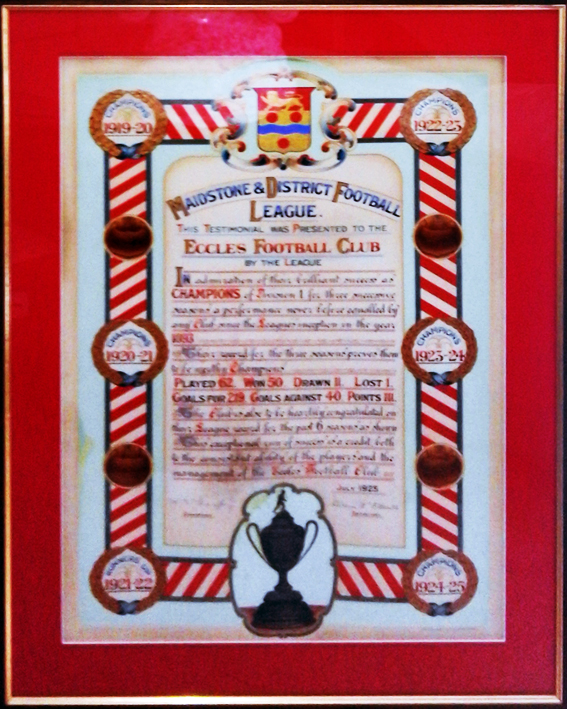 The Maidstone League
The Maidstone League
The Maidstone Football Club founded in 1891 – a soccer club, not to be confused with the 1870 rugby union club of that name – always suffered from a lack of players. In 1893, its founders started up a Maidstone League to nurture local talent, and contributed a cup to be awarded annually to the champions. Later renamed the Maidstone & District League, it was quite likely the first ever such local football league. The first entrants were Arkcoll’s, Hook & Co of Snodland, Loose, Malling, Maidstone Church Institute, Maidstone West End, Royal West Kent Depot, and champions Maidstone Invicta. The idea of a feeder league was never more than a partial success, however, local clubs being loath to give up their best players to the town team, which duly folded in 1895. Nevertheless, it would prove the longest-lived of all such leagues nationally, thriving for nearly 125 years before declining interest killed it off in 2018.
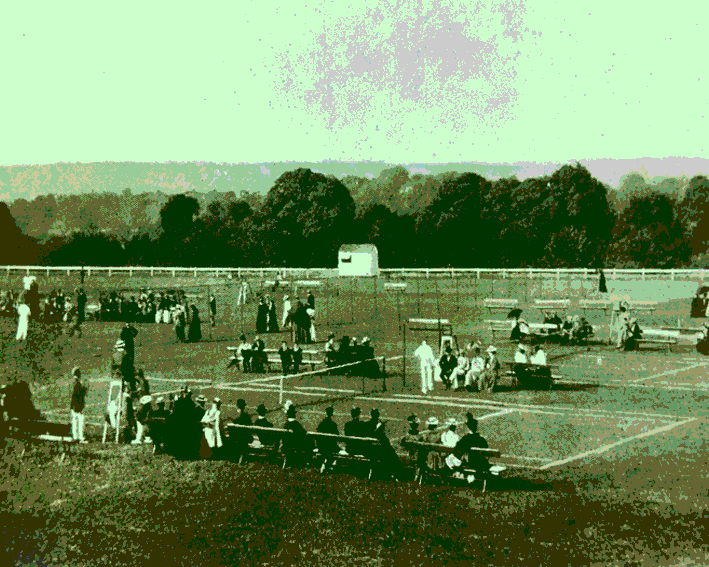 Maidstone Tennis Tournament
Maidstone Tennis Tournament
At the end of the C19, Maidstone briefly enjoyed a reputation as a sporting venue of national standing, albeit not for football or cricket. The town had become an international tennis venue in 1881 as part of the Men’s World Tour; a two-day tournament was won by Scottish-born Richard Mercer via a walkover in the final. The opening of the Athletic Ground on London Road in 1895 precipitated an annual open grass tournament. Within five years, both ladies and gentlemen were competing for 10-guinea singles trophies. Renamed the Mid-Kent Championships from 1900 until 1910, it resumed for just two years after WW1. Its most exotic winner was the German Otto Froitzheim, a future Wimbledon finalist, in 1908. After being held as a PoW, getting engaged to Leni Riefenstahl, and having an affair with Pola Negri, he refused to serve with the Brownshirts; it was only Göring’s admiration of his tennis that saved him.
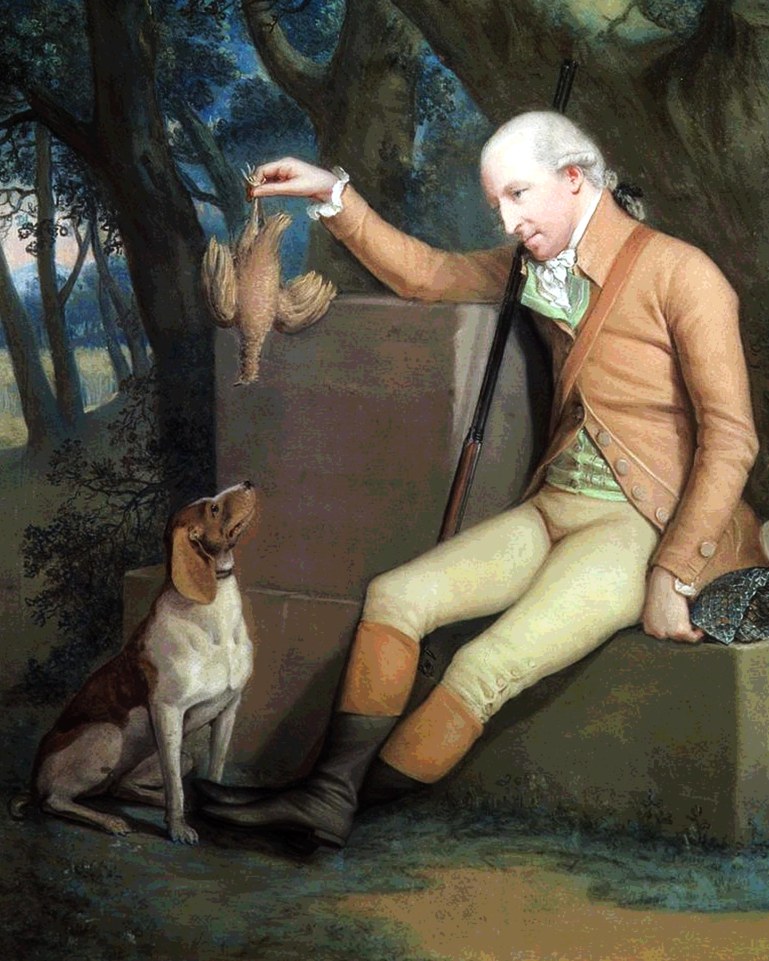 Sir Horatio Mann, 2nd Baronet (1744-1814)
Sir Horatio Mann, 2nd Baronet (1744-1814)
Horatio (or Horace) Mann was best described as a wastrel. His father Galfridus Mann died when he was just 12, leaving him a £100,000 fortune, as well as both Boughton Place and Linton Place. Not content with those, young Mann moved to Bourne Park near Canterbury, to which he invited the Mozarts. There he also indulged one of his favourite passions, cricket. The one achievement for which he deserves credit is Bourne Paddock, a ground where a lot of First Class cricket was played during the 1770s and 1780s. He did not play much himself, but happily sponsored Kent teams, and became a member of the ground-breaking Hambledon CC. He did have a political career, serving as MP for first Maidstone and then Sandwich. After his death, however, his nephew and heir James Cornwallis lamented only one thing: that Mann had left behind a shadow of what should have been the biggest estate in Kent.
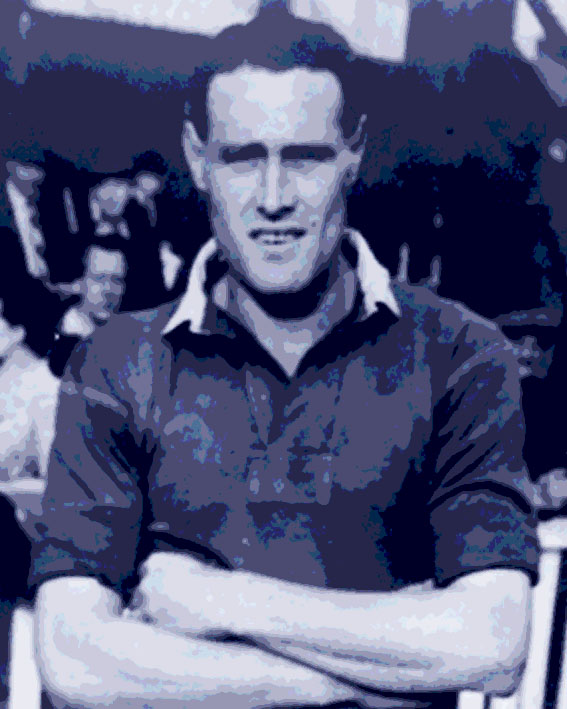 Charlie Marks (1919-2005)
Charlie Marks (1919-2005)
Before WW2, the industrial area north of the London Road out of Maidstone produced a whole crop of good footballers. The most talented of all was Eccles-born Charlie Marks. He played for his home village and Maidstone Paper Sacks in his teens, before joining Maidstone United as a full-back in 1937. Though a nephew of manager Bill Wood, he blotted his copy-book by joining local rivals Gillingham in 1943. He went on to become a club legend there, racking up 15 years’ service and 392 competitive appearances. He is remembered best of all for his cannonball shooting. His most celebrated moment came in a match at Northampton in 1955, when he burst the net with a penalty; the repair was still visible years later. On leaving the Gills, he joined Tonbridge at nearly 40. After retiring from football, he worked as a stock controller in the paper-making industry while living with his wife Gladys at Larkfield.
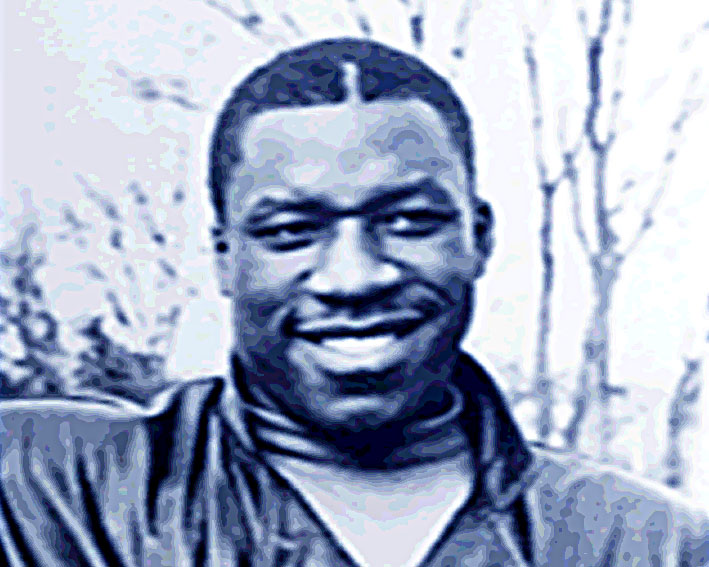 Gary Mason (1962-2011)
Gary Mason (1962-2011)
Mason’s life was proof that guts and determination are not always enough. He was born in Jamaica, but came to Britain as a baby, and spent his early years in South London. With his powerful physique and steam-hammer punch, he was a natural to take up heavyweight boxing. From his base at Chatham, he notched 35 consecutive victories, most by a knockout, and became British champion. The wheels came off in a European title fight at Wembley in 1991. A young Lennox Lewis cannily targeted the detached retina on which Mason had recently undergone an operation. Though Mason was in front after six rounds, the referee humanely stopped the fight. Two more pointless contests, and Mason’s career was over. He irrepressibly tried everything – rugby league, a jeweller’s, taxi-driving, broadcasting, music, arm-wrestling – but nothing worked out. He was getting fit for his new drumming therapy charity before dawn in Croydon when his bike was fatally struck by a van.
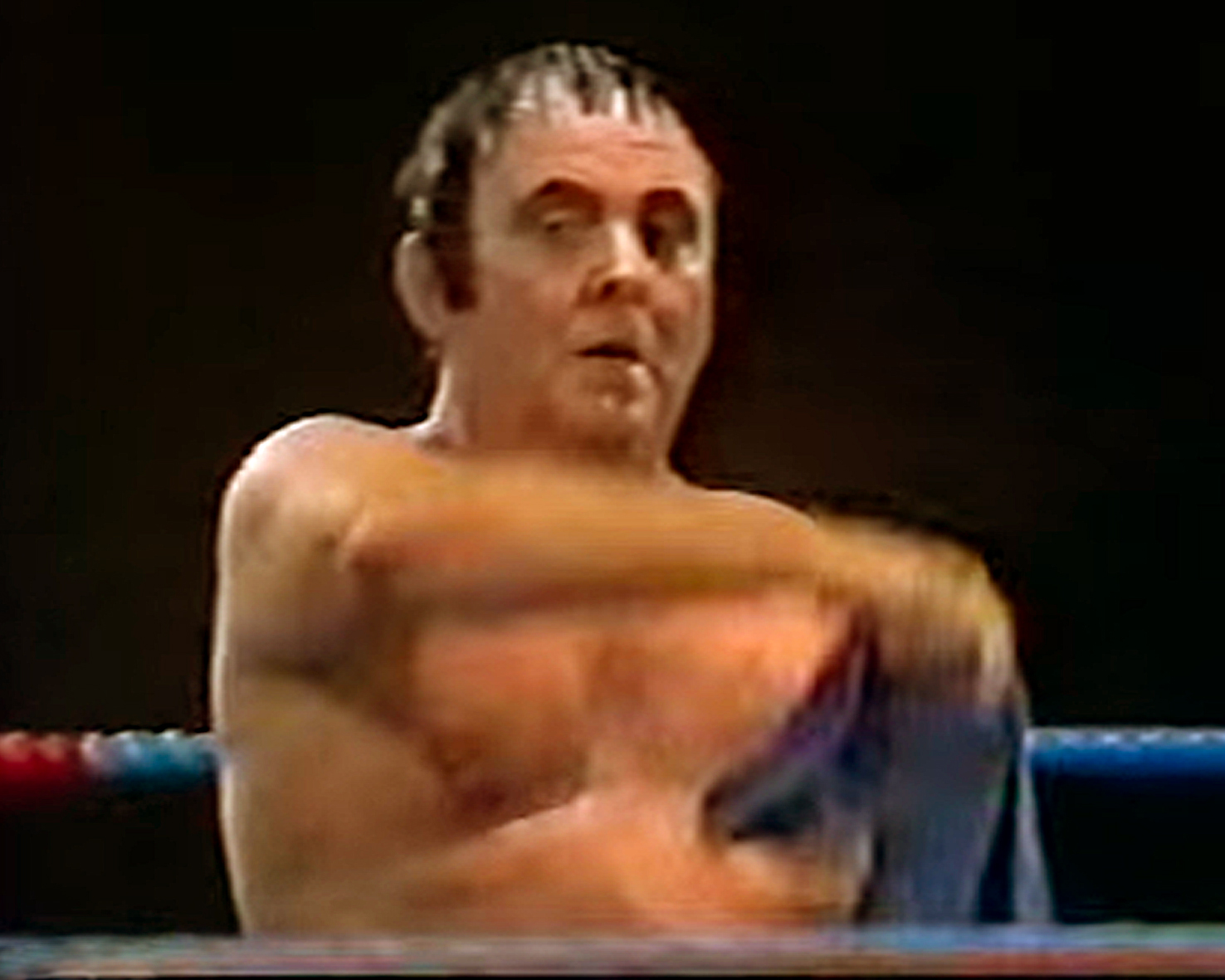 Mick McManus (1920-2013)
Mick McManus (1920-2013)
Half a century ago, 4 o’clock on Saturday afternoon meant something special to women over 50: a date with professional wrestling on ITV. It was more entertainment than sport, but earned a huge following, and made stars of Jackie Pallo, Big Daddy, Catweazle, and the like. Arguably the best was Mick McManus from New Cross. He played a ‘heel’, the bad guy who wound up the audience with dirty tricks and the demeanour of a pantomime villain. In real life, McManus was Billy Matthews, a family man with a nice smile who created his mean appearance by donning black trunks and dyeing his hair black. Although professional wrestling was hokum, McManus could wrestle to the extent that he won the bona fide British welterweight and middleweight titles, and was four times European middleweight champion. Although he later went into PR and developed an interest in porcelain, he remains unforgettable as ‘The Man You Love To Hate’.
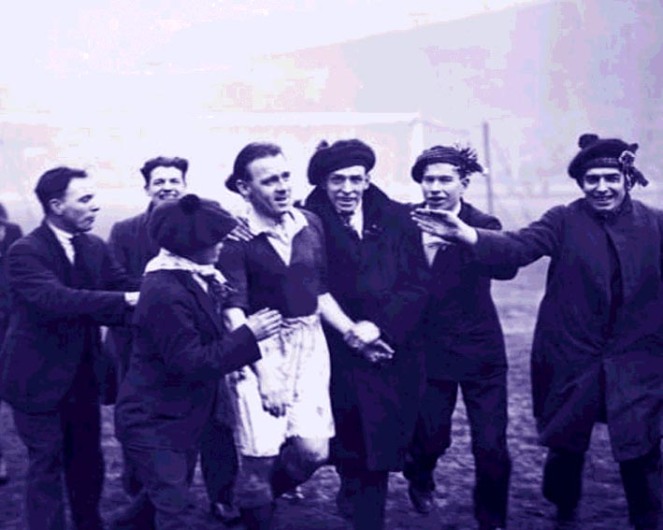 Jimmy McMullan (1895-1964)
Jimmy McMullan (1895-1964)
In the early 1920s, Sir Edward Sharp’s son Herbert hoped to turn Maidstone United into a top club. He invested heavily in professional players, the best of them being left-half Jimmy McMullan. Scottish FA Cup holders Partick Thistle had been planning to sell him to Newcastle United for £6,000 when Sharp controversially poached him. As player-manager, McMullan helped the club win a flurry of silverware, including two Kent League titles. A letter to the Kent Messenger summed him up: “undoubtedly an artist of the first order”. He left after two seasons, but always spoke afterwards of his affection for Maidstone. Three years after returning to Partick on a free transfer, he was sold to Manchester City for £5,000. He was made captain at Maine Road, and in 1928 skippered Scotland’s famous ‘Wembley Wizards’ who defeated England 5-1. In 1958, he appeared on the ‘This Is Your Life’ TV show dedicated to his old friend and teammate Matt Busby.
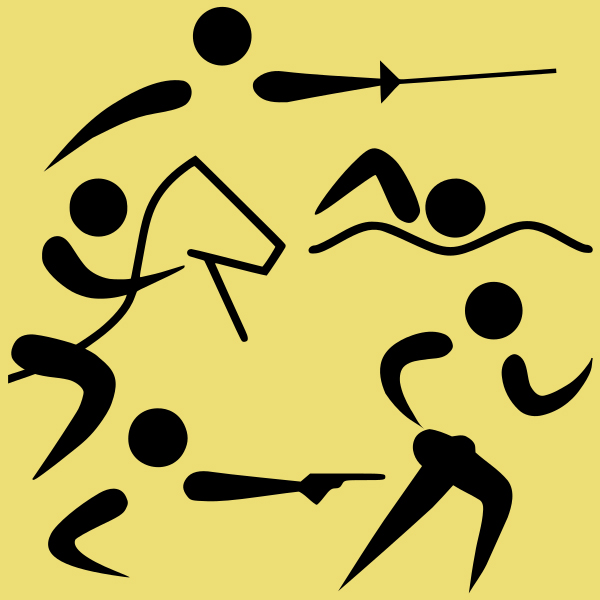 Modern Pentathlon
Modern Pentathlon
The men’s individual Modern Pentathlon became a core Olympic sport in 1912, but no team event existed until 1952. Shortly afterwards, Tommy Bunyard of Maidstone Harriers became an official of the Modern Pentathlon Association of Great Britain, sowing the seeds of Kent’s special association with the sport. His son Major Terry Bunyard, a member of GB’s 1972 Olympic squad, became President of the Association and collaborated closely with fellow REME officer Captain Jim Fox, leader of the GB team that won Olympic gold in 1976. Their unstinting efforts to promote the sport sowed the seeds of further successes in the C21, including Canterbury-born, Benenden-educated Georgina Harland’s individual bronze in 2004. It was however two historic days in July 2021 that staked Kent’s claim to world pre-eminence, when Kate French and Joe Choong – born 11 miles apart in Meopham and Orpington respectively – won the women’s and men’s Olympic titles: a unique achievement for any country, let alone county.
 Sir Bobby Moore (1941-93)
Sir Bobby Moore (1941-93)
With his glory years over, former West Ham United and England football captain Bobby Moore had a chequered retirement. He came to Maidstone three times on footballing business, twice as Southend United’s manager, and once to play for charity in George Best’s XI. He was welcomed as a celebrity, famed for accepting the World Cup from Her Majesty the Queen at Wembley in 1966. Yet it was already evident that England’s Golden Boy had a major drink problem. It had brought him two drink-drive convictions, catalysed fellow Essex-born superstar Jimmy Greaves’s descent into alcoholism, and was probably already contributing to Moore’s early death from cancer. Nevertheless, football connoisseurs prefer to recall one moment of magic from the epic World Cup finals encounter with Brazil in 1970, when with perfect timing Moore dispossessed the lethal Jairzinho as if taking candy from a baby; it’s still called “the perfect tackle”. The mutual respect between him and Pele afterwards was palpable.
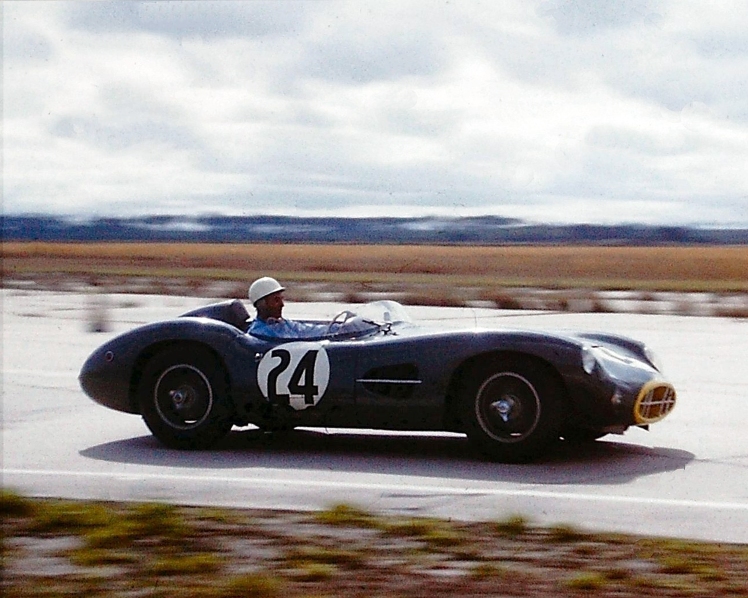 Stirling Moss (1929-2020)
Stirling Moss (1929-2020)
It is incomprehensible that London-born Stirling Moss never won the F1 World Championship. It was not for want of trying. He finished second four times and third three times in a seven-year period, racking up 16 Grand Prix victories. Although these included two British Grand Prix, he never won one at Brands Hatch, even though he was a regular visitor; he was in fact one of the demonstrators at the circuit’s opening ceremony in 1950. He did win the Kentish 100 race in 1958, an F2 event, and the Silver City Trophy in 1961, which was run there to F1 rules without being part of the Championship. Unlike many drivers in that dangerous age, he survived to an age of 90, a life that included three marriages. It is funny to think that, had his Jewish grandfather not changed his name, sarcastic policemen across Britain would for decades have asked speeding motorists, “Who are you, then – Stirling Moses?”
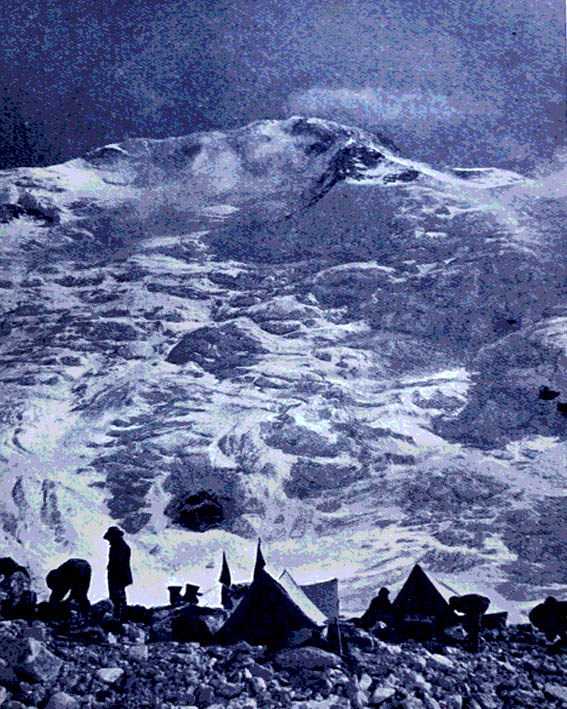 Mountaineering
Mountaineering
It is extraordinary that a county whose highest point is just 823 feet boasts an outstanding contribution to the sport of mountaineering. In 1895, when Albert Mummery from Dover died on the first ever attempt to climb a Himalayan ‘eight-thousander’, Rochester-born Martin Conway was knighted for actually mapping the Karakorams, home to K2. Old Tonbridgian Aleister Crowley led the first assault on Kangchenjunga in 1905, and Maidstonian FS Smythe was the main British climber on the 1930 expedition. He thought that peak so dangerous that it wouldn’t be climbed for generations; but it was in 1955, and one of the pair who got there first was Old Elthamian George Band. Two decades earlier, an 18-year world altitude record had been set by Conrad Cooke in his solo conquest of nearby Kabru North without oxygen; he died of old age at Maidstone. Less fortunate was Tunbridge Wells resident Julie Tullis, who perished on the disastrous 1986 K2 expedition.
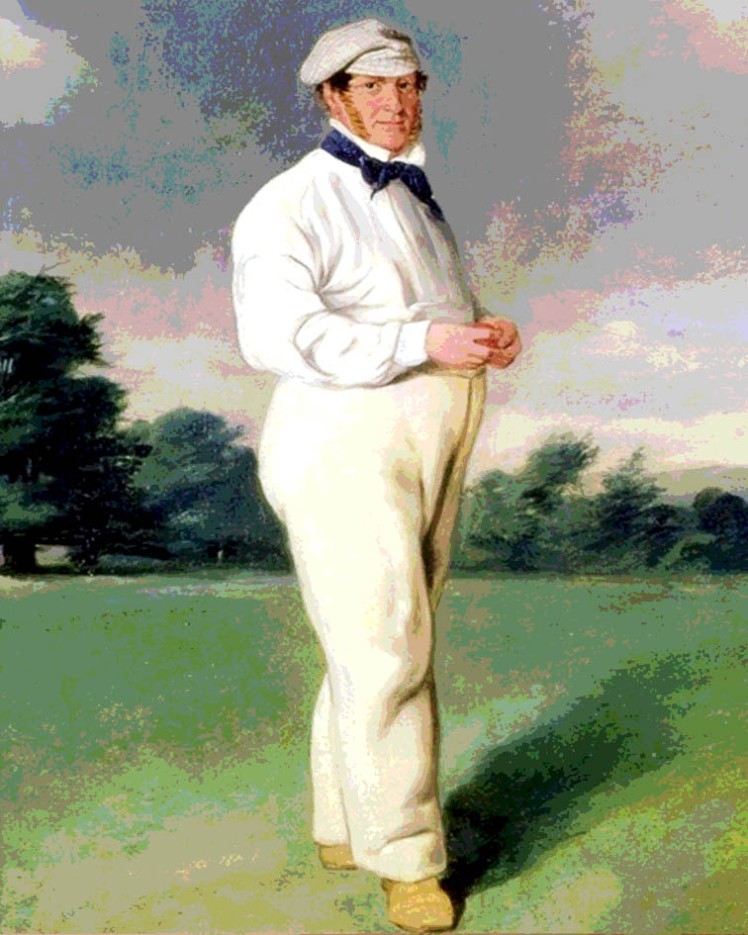 Alfred Mynn (1807-61)
Alfred Mynn (1807-61)
It is Alfred Mynn’s misfortune that WG Grace was born after him, the latter’s larger-than-life persona now eclipsing the equally great Mynn’s. Having been born in Goudhurst, Mynn was a natural to play for both Kent and England. A veritable giant among men at the time of round-arm bowling, he could hurl a projectile almost unplayably at the wicket; it was he who necessitated the introduction of wicket-keepers’ gloves. He became wildly popular wherever he went; not for nothing was he known as the ‘Lion of Kent’. Alongside his brother Walter, he made Leeds Park CC for two years probably the best in the world. Among the anecdotes attached to him was the story of a long-stop, providing the wicket-keeper with some necessary cover, who was struck on the chest by a Mynn delivery and was still spitting blood a fortnight later. Mynn retired to Bearsted, where the Lion of Kent pub (now the Yeoman) was named in his honour.
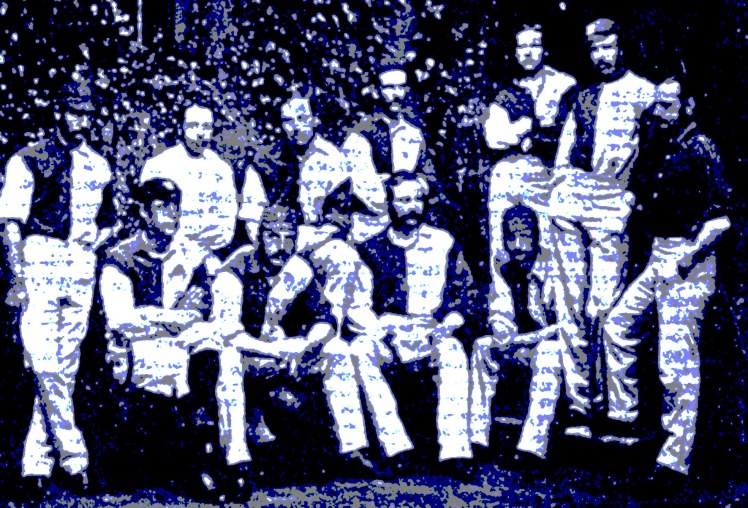 Charles Nepean (1851-1903)
Charles Nepean (1851-1903)
Charles Edward Burroughs Nepean was an outstanding Mayfair-born sportsman whose career was cut short by his appointment as vicar of Lenham. Primarily a cricketer, he played from the age of 19 for Oxford University and then Middlesex. He also won a football blue at Oxford, which led to his selection for four of the five ‘pseudo-internationals’ that preceded the first recognised international between England and Scotland in 1872. Though an Englishman, he was actually picked for the ‘Scotch’, reportedly on the strength of having a Scottish relative by marriage. He kicked off one match and scored in another, playing in various positions, but never finished on the winning side. His most famous footballing achievement was winning the FA Cup as goalkeeper for Oxford University in 1874. At 23 he was ordained, and remained at Lenham church until his death 28 years later. Highly popular, he was commemorated by a brass plaque in the chancel and a stained-glass window.
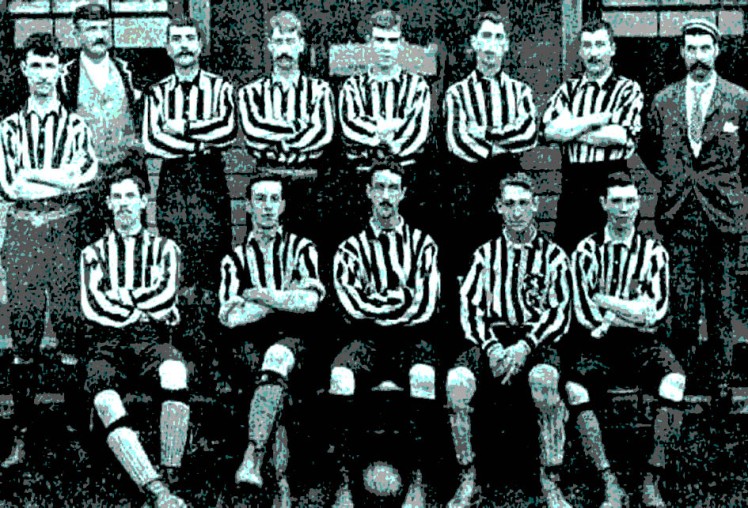 New Brompton Football Club
New Brompton Football Club
When New Brompton was founded in 1893, neighbours Chatham United had already been in existence for 11 years, and even reached the quarter-finals of the FA Cup; yet it was New Brompton who went on to dominate in modern-day Kent. Primarily using players from Chatham Excelsior, the club was formed by local businessmen on land that later became the Priestfield Stadium. It thrived partly because the New Brompton railway station facilitated travel to the capital. The club initially competed in the Southern League, which became the Football League Division Three in 1920. By then, the club’s name had changed to Gillingham FC. Voted out of the League in 1938, it was re-elected in 1950, and spent half a century in the bottom two divisions. Gillingham’s heyday was the early C21, when it enjoyed five seasons in the Championship, achieving 11th place in 2003. It also reached the quarter-finals of the FA Cup in 2000, losing 0-5 to Chelsea.
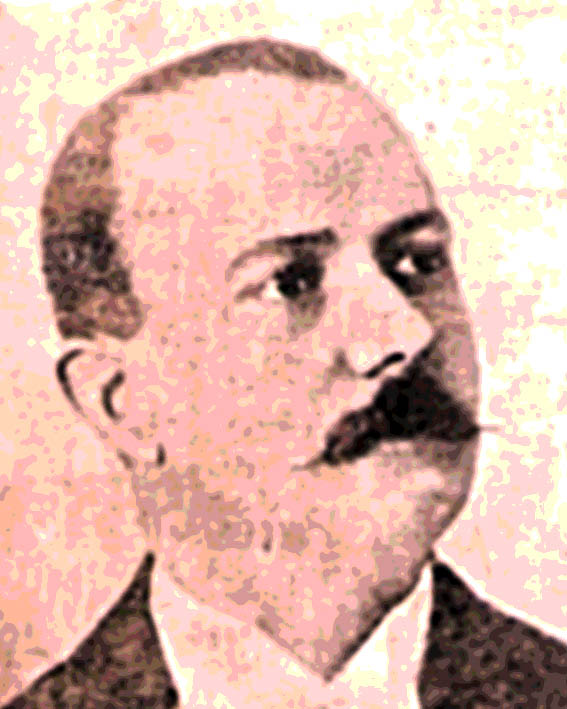 Isaac Newell (1853-1907)
Isaac Newell (1853-1907)
The name of Isaac Newell is little known outside of avid footballing circles, but he was one of the most influential Kent men in the history of the game. Newell was born in Strood, but emigrated to Rosario in Argentina, where he set up a school. There was a lot of local interest in the exciting new sports imported by British immigrants, and the school’s Old Boys’ Society started up its own football team. Co-founded by Newell’s son Claudio, the ‘Newell’s Old Boys’ club became one of the greatest in Argentinian football. Playing in red and black after the English and German flags, it has been champion of Argentina on no fewer than six occasions. Particularly noteworthy is its roster of former players, which includes Diego Maradona, Gabriel Batistuta, Lionel Messi, and Mauricio Pochettino. Bizarrely, the club’s nickname is ‘Los Leprosos’, acquired after playing a charity match on behalf of a leprosy clinic nearly 100 years ago.
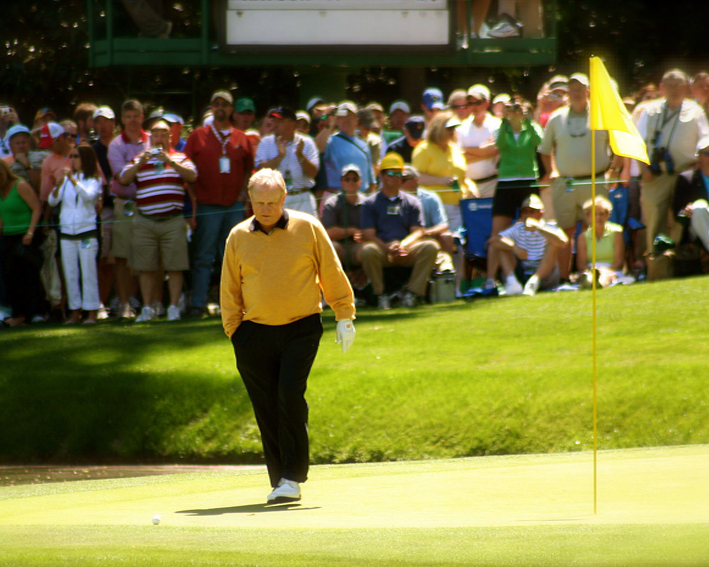 Jack Nicklaus (born 1940)
Jack Nicklaus (born 1940)
Brands Hatch is associated with the likes of Jack Brabham, Niki Lauda, and Nelson Piquet; but Jack Nicklaus? There is actually a connection: the London Golf Club, on the opposite side of the motorway from the race circuit. Its two courses, the Heritage and the International, were the handiwork of his now famous golf-course design business in 1993. By then, Ohio-born Nicklaus was a golf legend, having won 117 titles, including 18 majors – still a world record. He came to mark the official opening in July 1994 with an 18-hole skins match against Seve Ballesteros on the Heritage course, losing 10-8. Nicklaus, known as the ‘Golden Bear’ on account of his strapping physique and fair hair, has a higher opinion of the London than of Kent’s premier club, Royal St George’s, which he used to detest. To be fair, however, the British Open was never held there when he was in his prime.
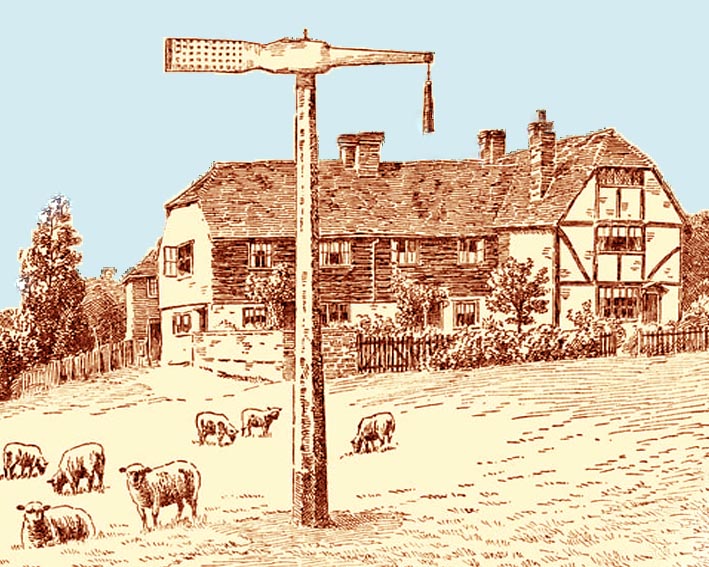 The Offham quintain
The Offham quintain
Jousting was highly popular in the Middle Ages as a means for young men to practise their martial skills against each other without too much danger of being killed. Nevertheless, fatalities did still occur, even after rules were tightened to reduce its belligerency. A genuine sport that emerged from such health & safety concerns was quintain, in which competitors faced no greater danger than public embarrassment. The quintain itself – whose name meant ‘fifth’, but is of uncertain origin – was a target mounted on a swivelling pole that riders had to strike with the end of their lance; it could be a shield, or panel, or mannequin. A successful tilt caused it to rotate, carrying a heavy sack around with it that might knock a sluggish rider off his horse from behind. An example of a quintain survives on the village green at Offham, thought to be the only surviving example still in situ in the country.
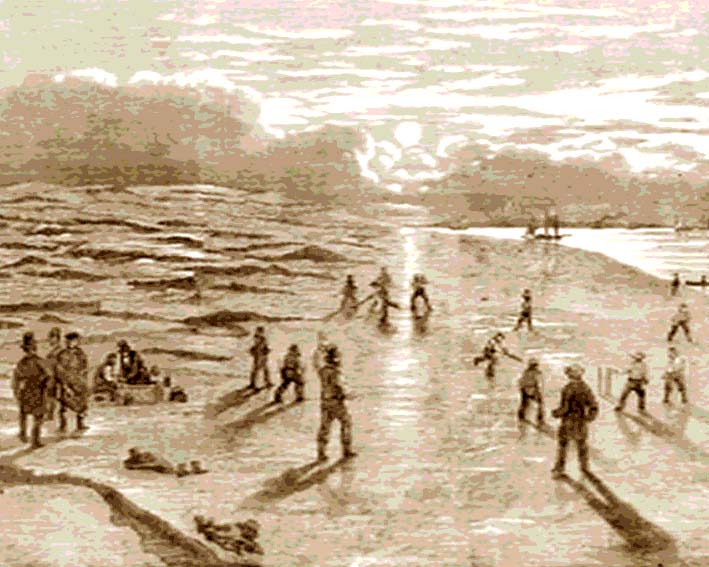 Offshore sports
Offshore sports
Of all the places in the world where sports have been played, the English Channel must rank among the scariest. Although the Goodwin Sands, nearly four miles off Deal, are best known as a deadly danger to shipping, their exposure twice a day at low tide makes them an attraction to day-trippers. As early as 1813, some cricketers held a miniature game there, which was surpassed in 1824 by a more ambitious one in which one player scored 67. Several other matches followed, including the one in 1985 that featured a Kent XI including Chris Cowdrey and Derek Underwood. Not only cricket has been played there. Back in 1922, four members of the Royal Cinque Ports Golf Club improvised a round on what amounted to the world’s largest bunker surrounded by the world’s largest water hazard. Three boatloads of New Zealanders played some informal rugby in 1921, and there are reports of bowls, croquet, and even cycling.
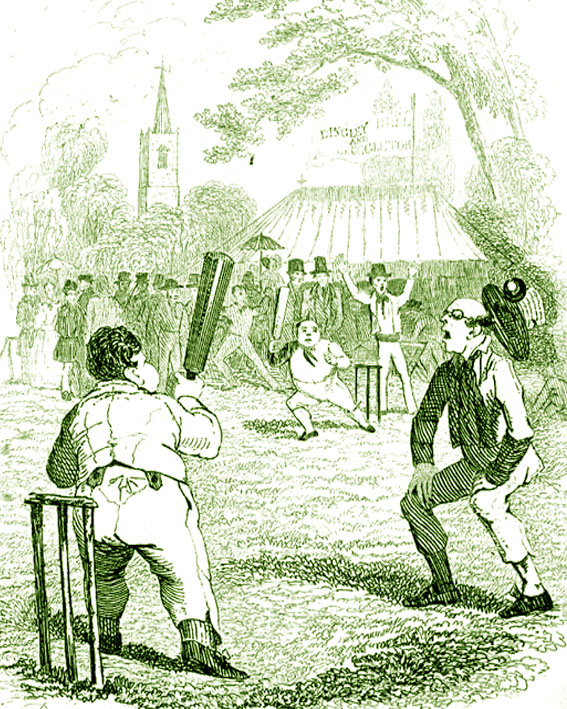 The Old County Ground
The Old County Ground
As long ago as 1705, the Old County Ground in Town (now West) Malling staged an 11-a-side contest between West Kent and Chatham; it was arranged for a wager amounting to 11 guineas per player. Local sides used the Ground from 1799, and in 1827 two partners in a local law firm founded the Town Malling Cricket Club there. Three years later, a match against Benenden drew a crowd of 8,000; it might even have been an inspiration for the Muggleton versus Dingley Dell match in Dickens’ ‘Pickwick Papers’. With the 2nd Baron Harris providing the funding, the great Fuller Pilch was brought in as groundsman. Ten matches played by Town Malling between 1836 and 1841 were later accorded First Class status, and are considered the first Kent county games. The Beverley club later took precedence in Kent, however. After 1890, the Ground lost its county status, following complaints about the facilities. Town Malling CC still plays there.
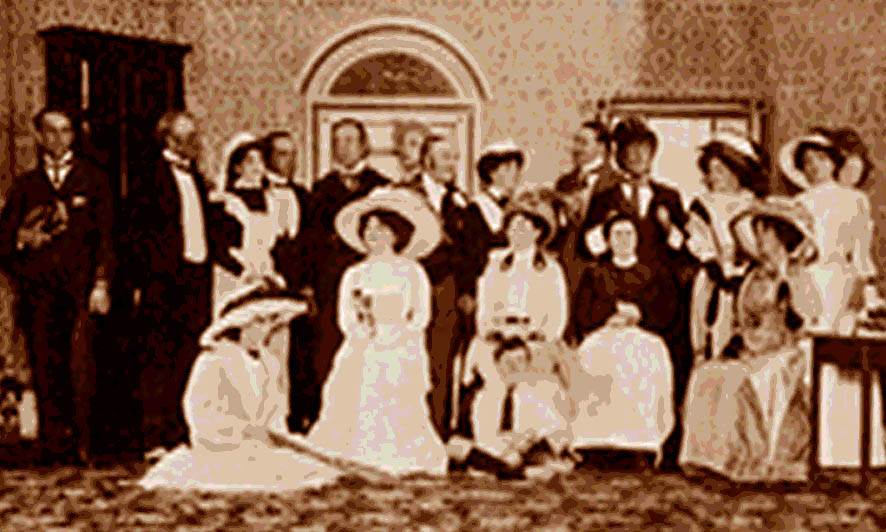 The Old Stagers
The Old Stagers
In 1842, the Beverley Cricket Club, based in Canterbury, was reconstituted as the first Kent County Cricket club, 28 years before today’s incarnation. It turned out a landmark not only for cricket. The creation of the county club marked the start of Canterbury Cricket Week, which became the hallmark of Kent’s cricket headquarters, and survives as the oldest such institution in England. To add to the first Cricket Week’s jollity, I Zingari co-founder Frederick Ponsonby created the ‘Canterbury Old Stagers’, an amateur dramatic society, which proved such a success that it lived on. From 1847 to 1861, it even included among its performers the legendary ‘Lion of Kent’, Alfred Mynn. Now into its ninth decade, it is possibly the world’s oldest am-dram company; a collection of its programmes, publicity, and photos is held at the Canterbury Cathedral Archives. Today’s Old Stagers recently moved from the Gulbenkian to the Malthouse Theatre, just across the railway from Beverley Meadow.
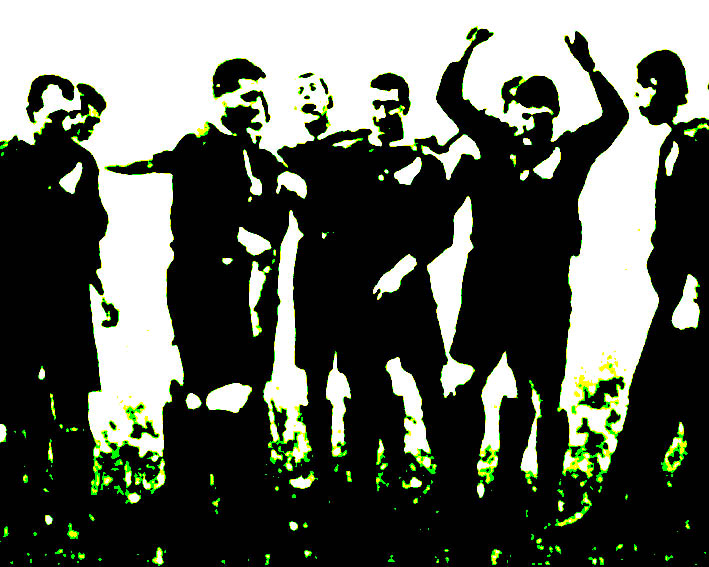 The Original All Blacks
The Original All Blacks
The home nations must have assumed that the lead they had enjoyed in rugby union since the first international in 1871 was unassailable. All that changed in the course of a fortnight in 1905. The first ever touring team had arrived from New Zealand in September. Wearing black kit and performing a strange ritual before each match that they called a ‘haka’, the Kiwis had set about English club opposition with an intensity never seen before. One opponent after another was dispatched with ease, including Blackheath, who were shockingly thrashed 32-0. Scotland and Ireland fared little better. On December 2nd, England took on these All Blacks, known nowadays as ‘The Originals’, at the Crystal Palace in Kent. In front of nearly 100,000, they too went down heavily, by 15-0. Only Wales salvaged some pride, pulling off a controversial 3-0 win. Any hopes that the tour was a flash in the pan have been squashed flat by subsequent rugby history.
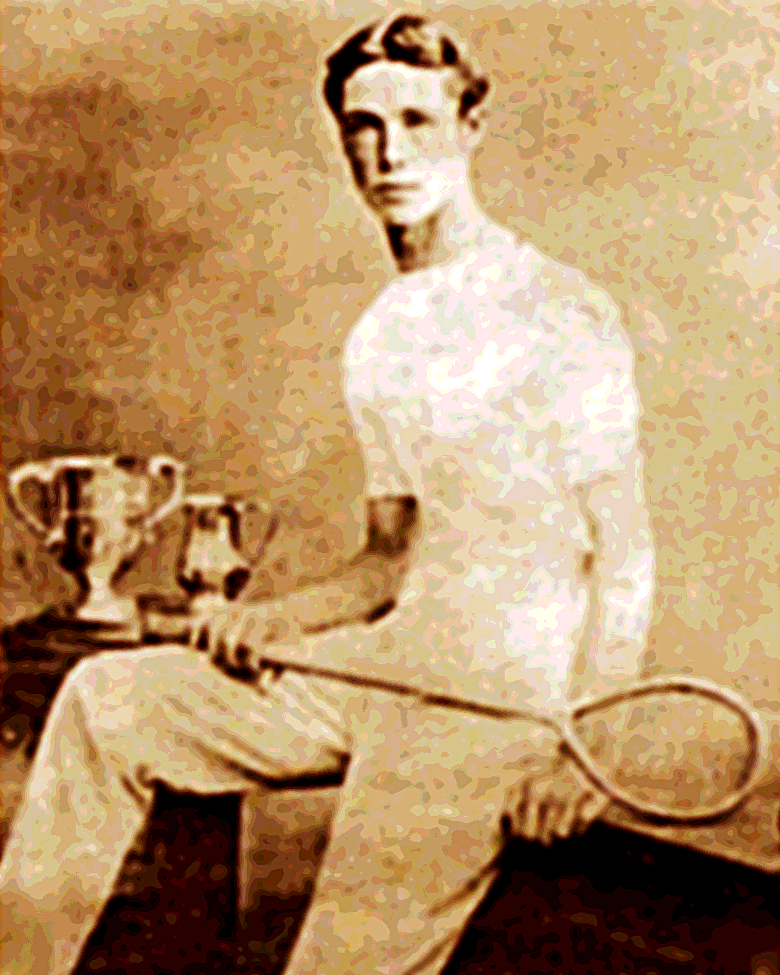 Cuthbert Ottaway (1850-78)
Cuthbert Ottaway (1850-78)
Although barely remembered nowadays, Cuthbert Ottaway was perhaps the greatest all-round sportsman of his time. He was born in Dover, the son of a former mayor, and became a barrister. By then, he had attended Eton and Oxford. He represented the latter at five sports, a record. He played cricket for Kent, and opened the batting for England alongside WG Grace. He also excelled at football. A fine sprinter, he was both fast and skilful. He played for the Crystal Palace and Marlow clubs, but also represented the Old Etonians in one FA Cup final and Oxford University in two, once on the winning side. His greatest achievement, however, was captaining England in the first-ever recognised international match, against Scotland in 1872. Unfortunately, he had a reputation as a snob, and the southern amateurs in the team cold-shouldered him. Aged 27, he fell sick with a mystery respiratory illness, and died suddenly.
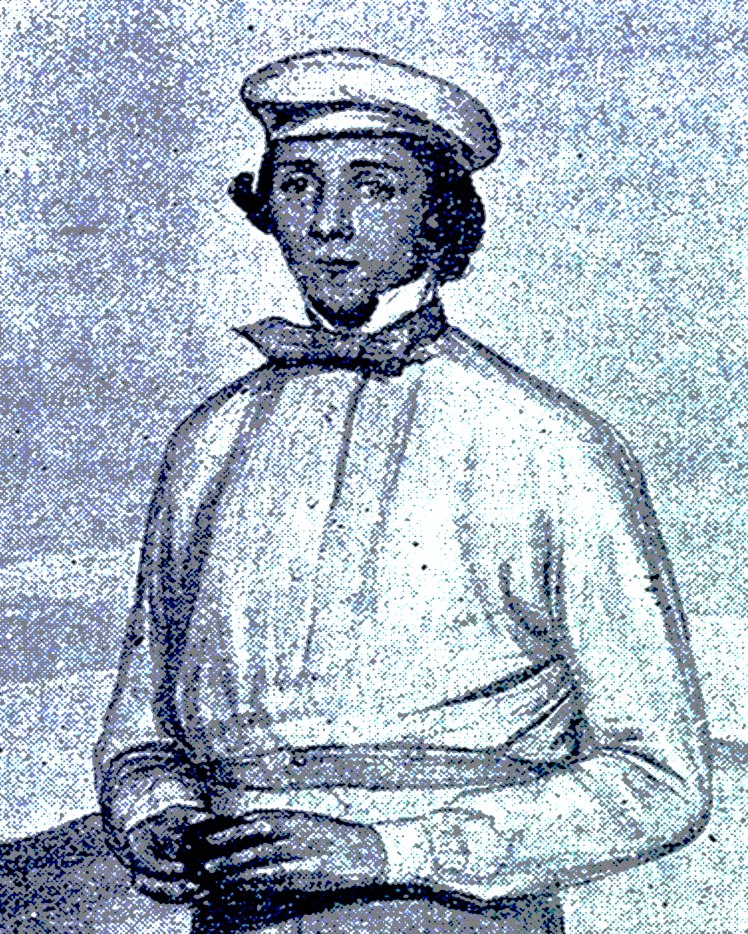 Over-arm bowling
Over-arm bowling
Round-arm bowling was legalised in 1835, but always remained fraught with problems. The law was that the ball must be delivered from between waist and shoulder height. Bowlers were frustrated at being no-balled when their releasing hand strayed too high, and ex-bowlers among umpires were not unsympathetic. The issue was deliberately brought to a head on August 26th, 1862 by Kent player Edgar ‘Ned’ Willsher, from Rolvenden. Playing for England against Surrey at The Oval, he deliberately bowled six ‘high’ deliveries in succession. After being correctly no-balled each time by umpire John Lillywhite, he and the other eight professionals in the England team left the pitch, leaving two amateurs behind. The game continued the next day with a new umpire. The MCC responded to the manufactured crisis in 1864 by introducing the law that applies today. Some authorities consider that this formal introduction of overarm bowling constitutes the true start of First Class cricket.
 Gary Pallister (born 1965)
Gary Pallister (born 1965)
Manchester United‘s Steve Bruce and Gary Pallister formed the first great centre-back pairing of the Premier League era. The two had travelled in opposite directions, the Geordie Bruce starting his career at Gillingham, and Pallister moving as a child from Ramsgate to the North-East. He stayed for five years at Middlesbrough, making his international debut while the club was still in the Second Division. It prompted Alex Ferguson to pay £2,300,000 to bring him to Old Trafford – then a record for a defender. Apart from representing England 22 times, the 6‘4“ Pallister helped United land 15 titles in the 1990s, including the Premier League four times, the FA Cup three times, and the European Cup Winners’ Cup in 1991. After 10 seasons and 317 competitive appearances, he was lured back to Middlesbrough by former clubmate Bryan Robson. He retired at 36, and has subsequently been a pundit on both BBC and ITV.
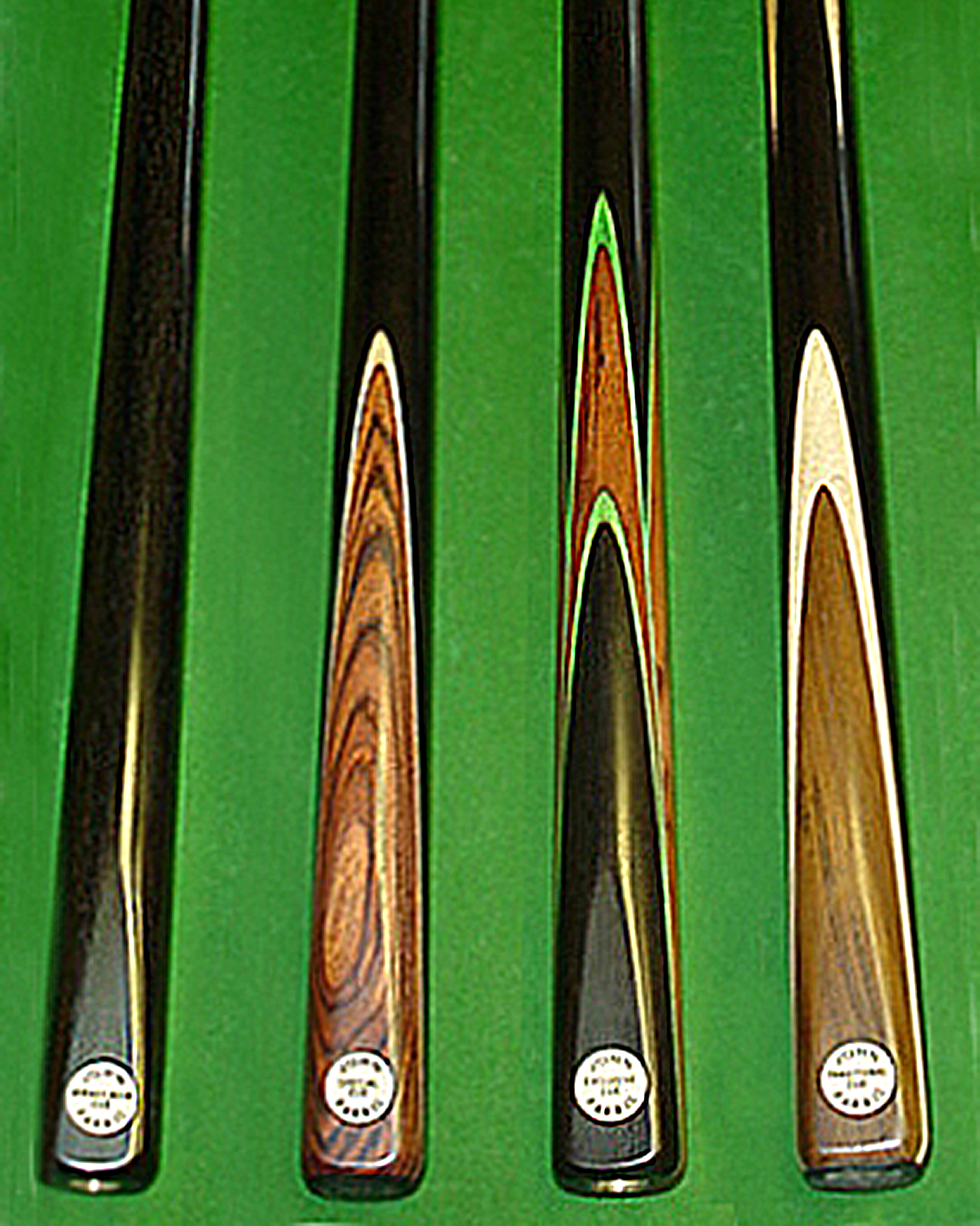 Parris snooker cues
Parris snooker cues
The first major manufacturer of snooker cues was the immigrant Frenchman Léopold Peradon, who started his business in Middlesex in 1885. A century later there was a new kid on the block: John Parris, born in 1952 in Forest Hill. He began customising cues as a hobby, and started making his own in Bromley. The business moved to larger premises in Forest Hill in 1984, where his factory still thrives today. The first star he made a cue for was Alex Higgins, although he most famously reconstructed Steve Davis’s world championship-winning cue after it snapped under the ferrule. Part of Parris’s success, alongside top-quality materials and workmanship, is his human touch, which has sustained his reputation with a new generation of snooker stars. Generally reckoned the best in the world, Parris Cues now accounts for between a half and three-quarters of cues used in major tournaments, and boasts a global clientele including several celebrities.
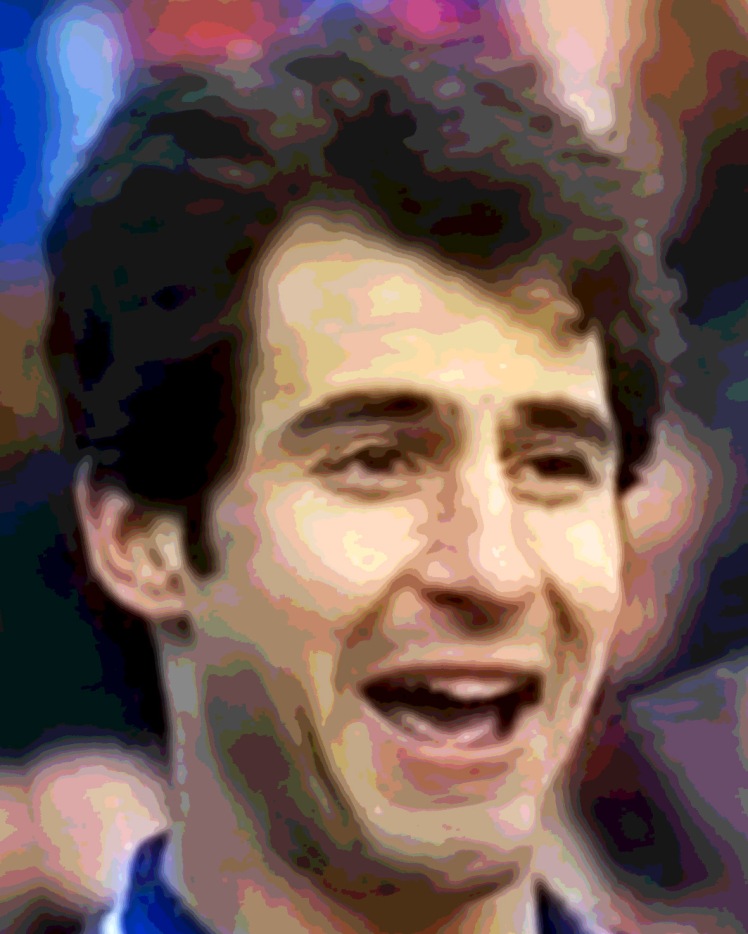 Gavin Peacock (born 1967)
Gavin Peacock (born 1967)
As Keith Peacock’s son, it was inevitable that Gavin’s inherited skill would equip him to become a textbook career footballer. He was raised in Crayford and attended Bexley Grammar School while becoming a schoolboy international. An attacking midfielder or striker, he joined Queens Park Rangers and played 17 times for the first team while in his teens. After being signed by his father for Gillingham, he moved to Bournemouth and then Newcastle United, which he helped get promoted to the Premier League under Kevin Keegan. The peak of his career was playing for Chelsea for three seasons, during which time he reached the FA Cup final. He returned to QPR for six seasons before retiring, having amassed a total of 557 competitive performances. He then became a familiar TV pundit, always pleasing with his cheery disposition and intelligence. After preaching at his local church in Wilmington, he emigrated to be a pastor in Canada.
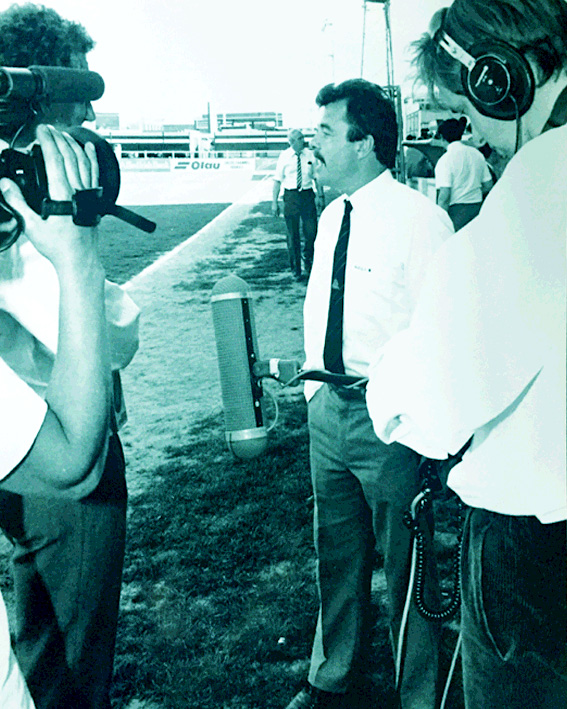 Keith Peacock (born 1945)
Keith Peacock (born 1945)
Born in Barnehurst in the last week of WW2, Peacock attended Erith Grammar School before becoming a footballer at Charlton Athletic. He remained there for the rest of his professional career, registering over 500 performances as a midfielder. He gained fame of sorts by becoming the first ever substitute in the Football League in 1965, when he came on for goalkeeper Mike Rose. After leaving Charlton in 1979, he moved to America, joining his old colleague Gordon Jago at Tampa Bay Rowdies. He returned to take up management at Gillingham, where he spent six years. He then joined Maidstone United, who had just entered the Football League. In his first season, he came close to promotion, but unluckily missed out. A year later, he was sacked by demanding club chairman Jim Thompson. He later took on only lesser roles at Charlton and West Ham United, but had passed on his footballing talent to son Gavin.
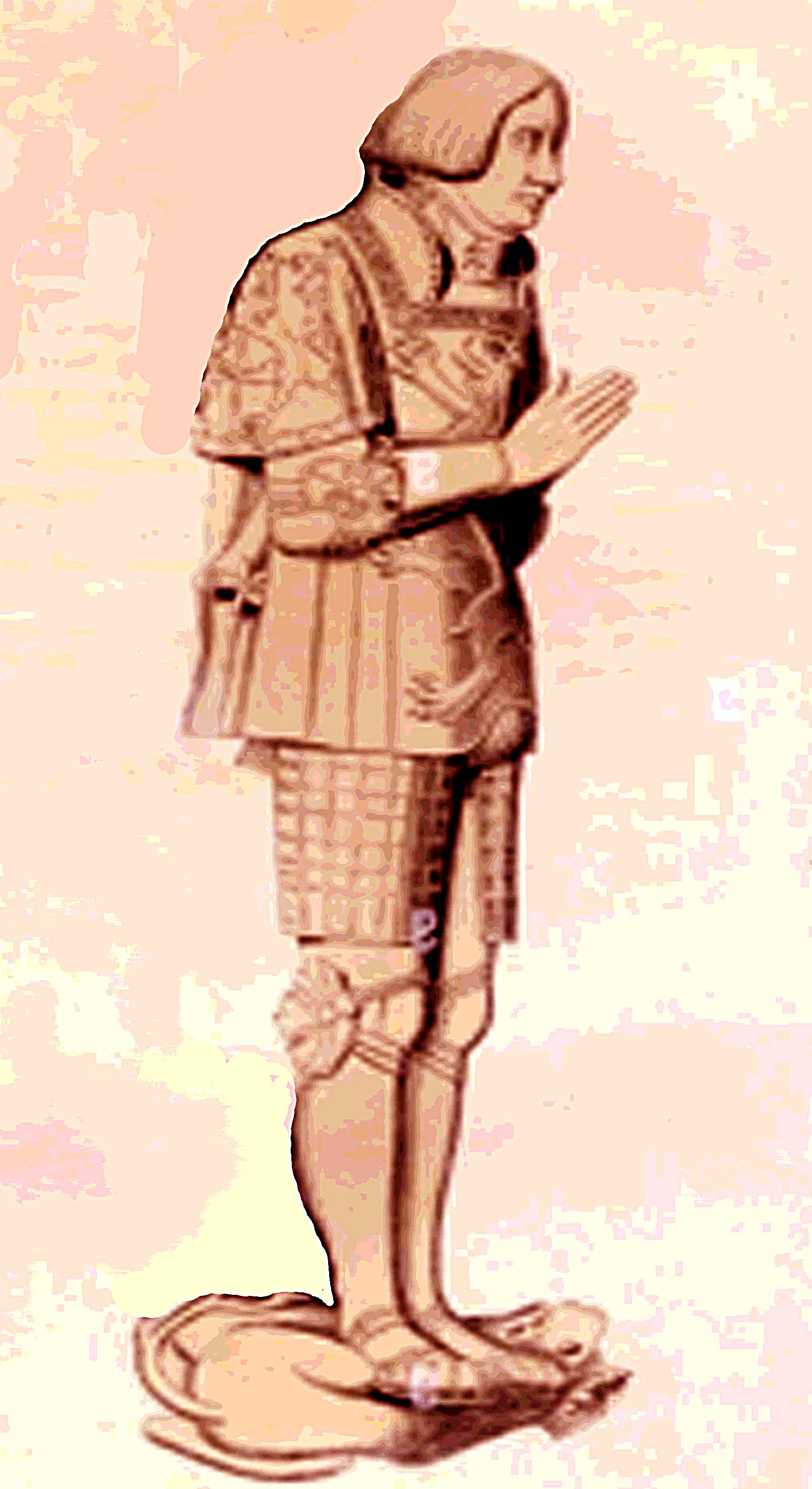 Sir John Peche (1450-1522)
Sir John Peche (1450-1522)
The son of William and Beatrix Peche of Lullingstone Castle, just ten miles from the famous tiltyard at Eltham Palace, John turned out an outstanding jouster. When Prince Henry was made Duke of York at three, Peche was one of four eminent knights, including two earls, who competed in a celebratory tournament at Westminster. Peche undertook 24 tilts, during which he broke 14 lances, and was declared victor ludorum. Two ladies, Anne Neville and Anne Percy, ceremonially presented him to young Princess Margaret, who awarded him the prize of a gold ring with a ruby. Peche rebuilt his home as the current ‘castle’ in 1497, boasting its own tiltyard outside the gatehouse. Henry, who himself grew up an enthusiastic jouster, not unnaturally adopted Peche as one of his favourites, and visited him at his home. When Peche died, he was buried in a grand tomb in Lullingstone church within the castle grounds.
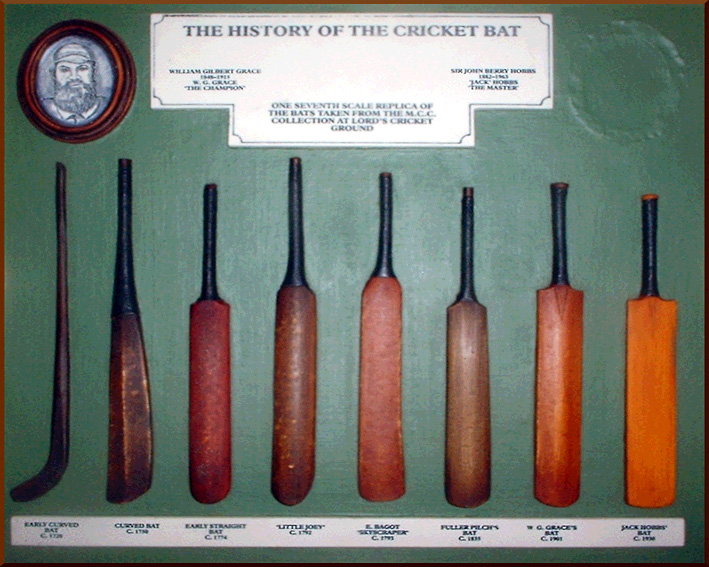 The Pett cricket bat
The Pett cricket bat
The world’s oldest branded cricket bat, dated 1745, says much about the antiquity of cricket in Kent. In the C18, three of the seven known bat-makers, all south-eastern, worked in Sevenoaks. One was William Staples, another Thomas Pett, and the third William Pett, his father, who lays claim to that oldest named bat, now in the possession of the Sevenoaks Vine Cricket Club. Pett, who died in 1786, was primarily a coffin maker, it being nothing unusual for carpenters to make bats as a sideline. Nevertheless, by the 1770s, cricket bats were plainly becoming big business, since Pett’s bats could be found for sale at shops across London. The oldest known bat of unknown manufacture, now residing at The Oval, belonged to one John Chitty, and is dated 1729. It looks to us more like a hockey stick, reflecting the game’s probable origin as a diversion for Wealden shepherds who used their crooks for bats.
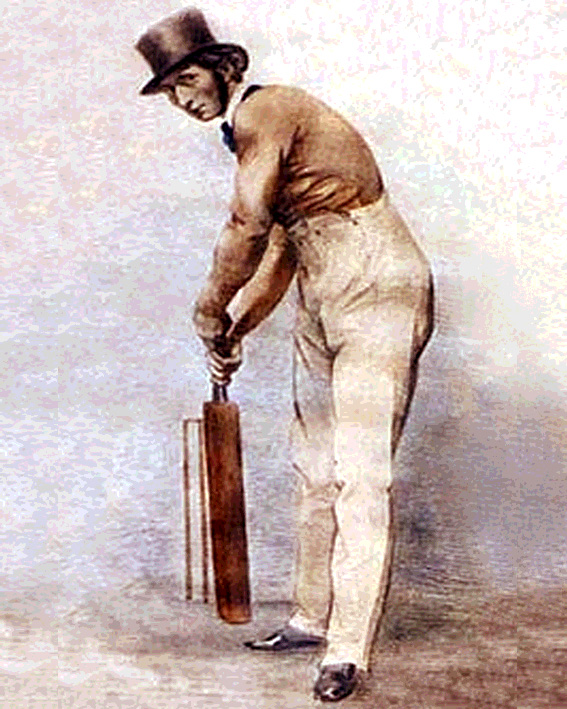 Fuller Pilch (1803-70)
Fuller Pilch (1803-70)
He may sound like one of those traditional ales you find in a West Country pub, but Fuller Pilch was the greatest batsman in the game of cricket until WG Grace surpassed him. He was born in Norfolk, and played for that county for 16 years before joining Kent. However, he then remained for 18 years, longer than for any other of the six counties he played for on and off. He was renowned for his atypically forward play, his trademark attacking shot being known as ‘Pilch’s poke’. With runs being hard to come by in those days, his stats look nothing much; but he was reckoned a phenomenon in his lifetime for the ten centuries he accumulated. He also excelled at single-wicket cricket. As well as representing the MCC, he started playing professionally for Town Malling in 1835, running a tavern beside the ground. Seven years later, he left to run the ‘Saracens Head’ in Canterbury, where he died.
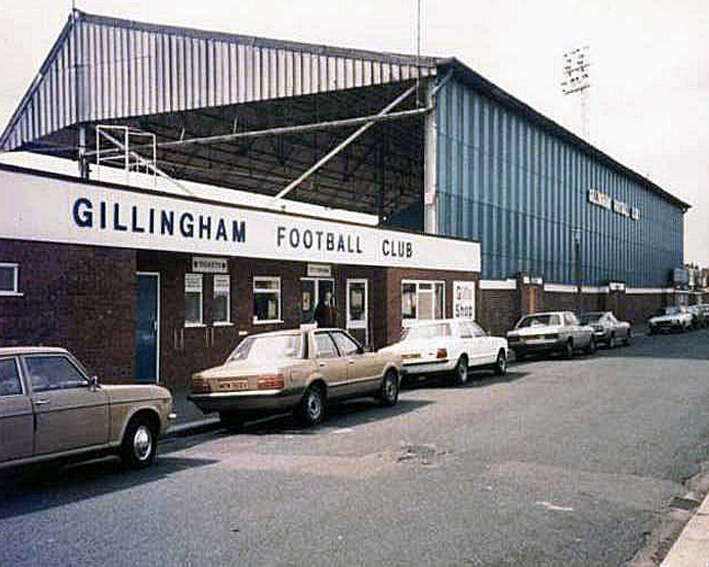 Priestfield Stadium
Priestfield Stadium
For a stadium whose imminent demise has so often been predicted, Gillingham’s Priestfield Stadium is remarkably durable. It was built in 1893 specifically to house New Brompton FC. Its zenith was an FA Cup tie against QPR in 1948, when 23,002 packed in. The ground long resembled a classic Fourth Division affair, with a main stand that looked disconnected from the other piecemeal viewing facilities around the ground. All that changed after the arrival of Paul Scally in 1995. Step by step he upgraded it to create the cohesive stadium that exists today. It was already considered sufficiently modern to house a women’s World Cup qualifier in 2006, drawing a crowd of 8,068. The ground’s fundamental problems remain: a chronic lack of parking, and a neighbourhood that in a 2004 ‘Observer’ poll brought Priestfield the title of the worst ground in England. Yet, like Old Father Thames, it keeps rolling along.
 The Primary Club
The Primary Club
As charities go, the Primary Club has much to say for itself. First, you can just imagine the moment of its creation in 1955, when four slightly drunk cricketers at Beckenham Cricket Club decided to start an association for players who have been victims of a golden duck. Second, it is highly effective at raising money for the visually impaired: despite yielding only £45 by 1964, its tally now is close to £3 million. Third, its Patron is the esteemed Derek ‘Deadly’ Underwood, the Kent and England spinner whose talents were tailor-made for creating potential new members. Fourth, it caters for membership of either sex, the women qualifying for a brooch in place of the men’s tie. Fifth, it has exactly the kind of serious intent with a sense of humour that makes cricket the game it is. The club now has 9,000 members, as well as a counterpart in Australia.
 Emma Raducanu (born 2002)
Emma Raducanu (born 2002)
One of the most spectacular of sporting achievements in recent memory was Emma Raducanu’s meteoric ascent through the world of tennis during 2021. Born in Toronto, Canada to Romanian and Chinese parents, she had moved to England at the age of two. She attended Bickley Primary School and Newstead Wood School (formerly Orpington Girls Grammar), the same school as Dina Asher-Smith. She took up tennis early, being taught at Parklangley Club in Beckenham and joining Bromley LTSC. In 2021, ranked 338 in the world, she entered Wimbledon on a wildcard and made exceptional progress before withdrawing in the 4th Round with breathing difficulties. Two months later, ranked 150, she amazed everyone by progressing through nine rounds of the US Open without dropping a set. In the final, aged just 18, she beat Canada’s Leylah Fernandez 6-4, 6-3, becoming the first qualifier to win the title, and the first Briton since her fellow Kent resident Virginia Wade in 1968.
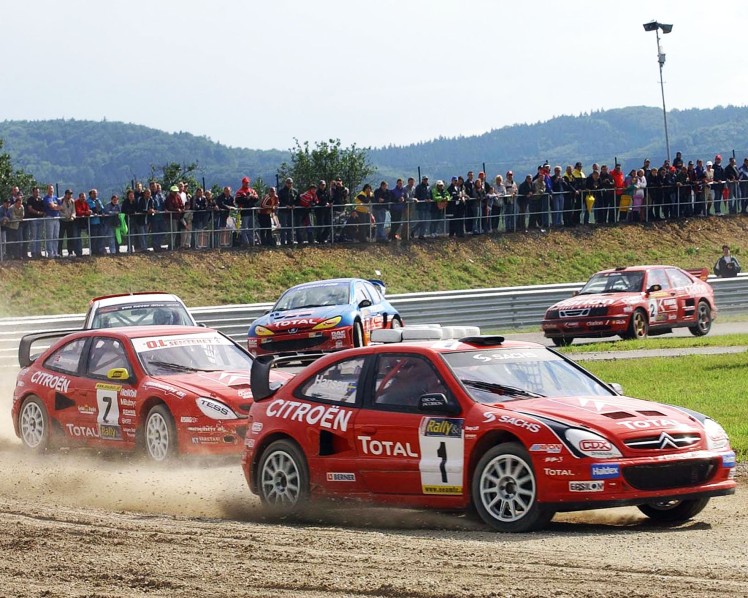 Rallycross
Rallycross
The sport of rallycross started life at the Lydden Hill Race Circuit north-west of Dover. It was devised by Robert Reed for ITV‘s ‘World of Sport’ in 1967. For the benefit of the uninitiated, it is a form of motorsport designed to appeal to petrolheads who find Formula One a bit dull. The format is not unlike speedway, with a limited number of contestants setting off simultaneously around a dirt and asphalt track and completing only four or six laps. What makes it special is that the cars are seriously souped-up production vehicles capable of accelerating faster than F1 cars. As it is important not to get behind, the starts can be thrillingly chaotic. For added interest, there is a ‘joker lap’ that each driver has to complete, helping prevent a procession. Since 2014, the sport has had its own World Championship, whose UK leg took place at Lydden until 2017. The sport is dominated by fearless Scandinavians.
 Phil Read (1939-2022)
Phil Read (1939-2022)
Known as the Prince of Speed, Phil Read from Luton garnered an astonishing tally of motor-cycling titles, considering that his career coincided with Mike ‘The Bike‘ Hailwood and the King himself, Giacomo Agostini. Between 1961 and 1975, Read won 52 Grand Prix, yielding one world championship in the 125cc class, four in 250cc, and two in 500cc, making him the first man to win all three titles. He owed his success to his fiercely competitive nature, which overstepped the mark in 1968, when Yamaha’s team orders were that he should take the 125cc title and teammate Bill Ivy the 250cc. Instead he grabbed both, gravely unsettling the ill-starred Kent man. After he joined MV Agusta, his immoderate criticism led to a much resented boycott of the Isle of Man TT course, and he was derided for returning there when the prize money was increased. The hard-living Read spent his last years in Canterbury, and died there.
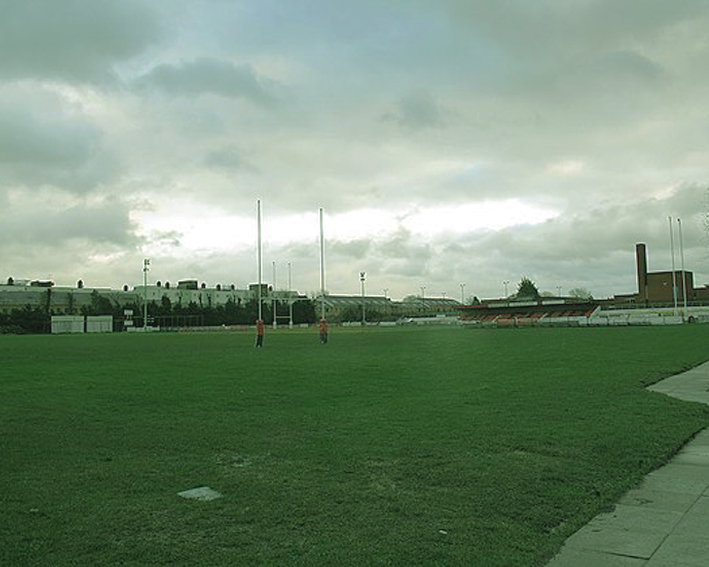 Rectory Field
Rectory Field
Located on a five-acre plot east of Blackheath lies a rather unremarkable municipal sports facility that is nevertheless steeped in history. Blackheath FC developed the Rectory Field stadium on the site of the former Charlton Rectory after its previous ground was sold in 1882. Because of the Club’s eminence in rugby, the ground also served as one of England’s two national stadia, alongside Richmond Athletic Ground, until Twickenham was built in 1910. In total, 15 internationals were staged there, including the notorious 1884 confrontation with Scotland, but also tour matches against New Zealand Maori (1889) and the first Wallabies (1909). It was however a multisport facility from early on, with Blackheath Cricket Club playing there from 1886 and facilities also for tennis. Kent CCC used the ground almost annually from 1887 to 1972, the record individual score being Colin Cowdrey’s 250 against Essex in 1959. It was not until 2016 that Blackheath RFC departed for Well Hall.
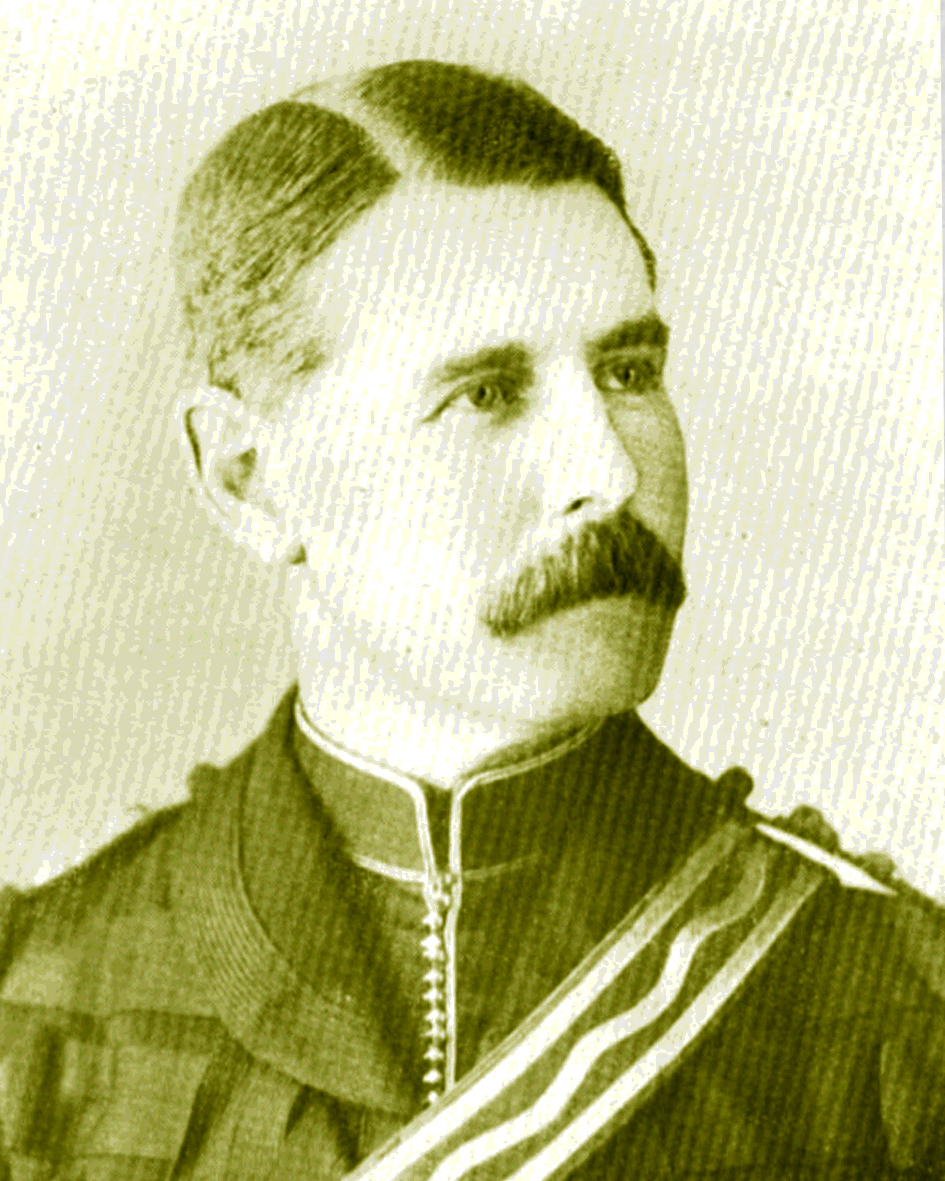 Henry Renny-Tailyour (1849-1920)
Henry Renny-Tailyour (1849-1920)
Famous for being the only man ever to represent Scotland at both football and rugby, Renny-Tailyour strangely enough also represented Kent at cricket. The reason was that this son of a Scottish soldier based in India joined the Royal Engineers, and played cricket for them at the Garrison Ground in Gillingham. It got him noticed by Kent, for whom he played for a decade, albeit not often. He was more distinguished as a footballer. As well as playing in one 1871 ‘pseudo-international’ against England, he was in the Scotland team that in 1873 lost 2-4 in the first-ever full international in England, when he scored Scotland’s first official international goal. He also played for the Royal Engineers in three FA Cup finals, including the very first. In 1875, he scored in both the final and the replay to help beat Old Etonians. Renny-Tailyour ended up a British Army colonel, and went on to be managing director of Guinness.
 David Rocastle (1967-2001)
David Rocastle (1967-2001)
‘Rocky’ Rocastle was a footballer in the mould of Glenn Hoddle, able to pass the ball sublimely but also dribble around defenders and occasionally score memorable goals. The son of West Indian immigrants living in Lewisham, he joined the Arsenal Academy from school in 1982 after Millwall had turned him down. At first he struggled, at least until the Club realised he desperately needed contact lenses. He would subsequently help Arsenal win the First Division championship twice – in 1989 and 1991 – while playing 228 competitive games as a right winger or midfielder and scoring 23 goals. At 25, he moved on to Leeds United in the Premier League, and later both Manchester City and Chelsea. He also appeared 14 times for England. Not long after his retirement, he was diagnosed with non-Hodgkin’s lymphoma, which proved untreatable. Now ranked an “Arsenal legend”, he is commemorated in the name of the Arsenal Academy’s indoor centre.
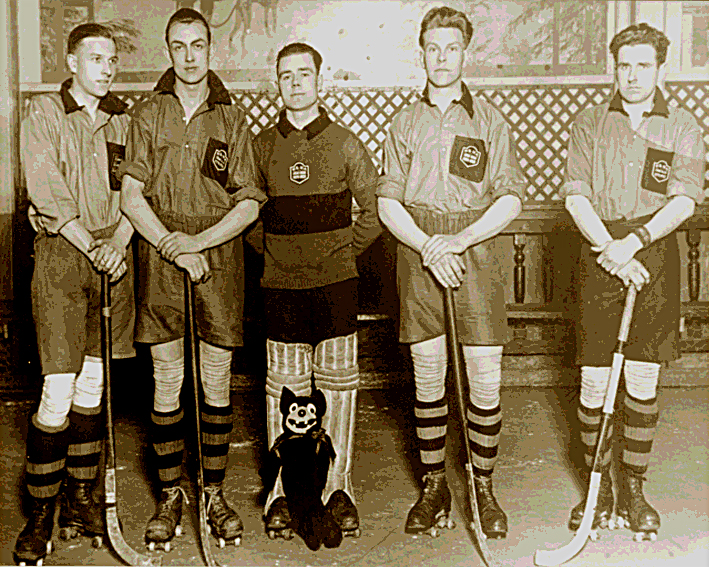 Roller hockey
Roller hockey
Roller hockey, originally known as ‘roller polo’, was first played in Denmark Hill, Surrey in 1878. Over time, the sport migrated from being played primarily on inline wheels to roller skates, with one wheel at each corner. Herne Bay quickly established North Kent’s international credentials by hosting six of the first ten European Championships, starting in 1926. Extraordinarily, in 1930, the Nations Cup tournament in Montreux was won by five men from the same street in Faversham, who proved so dominant that they finally beat even a select international team 5-1. Two years later, that same competition was won by Herne Bay United, which had spun out of Herne Bay in 1924. HBU was long the dominant club in England: as well as recapturing the Nations Cup in 1938, it won 12 National Cups between 1935 and 2019, and 16 Premier League titles between 1993 and 2010. It still holds the record number of English titles.
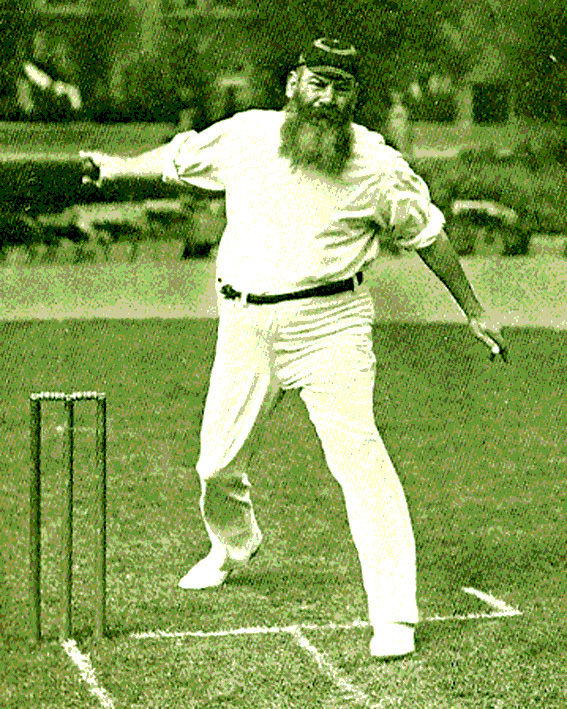 Round-arm bowling
Round-arm bowling
Amid the drivel that peppers the internet nowadays, one of the most irritating canards for cricket fans is the one concerning the development of round-arm bowling. This has it that Christiana Willes of Headcorn invented the technique while practising with her brother John, because her very wide dress prevented her from bowling underarm. Apart from the fact that there is no documentary evidence of this, and even her daughter knew nothing of it, paniered Rococo dresses had gone out with the French Revolution. The fashion by her time was the figure-hugging Regency dress, as one minute’s research will verify. Her brother, a Kent player, had actually been trying since 1807 to get the C18 Hambledon bowler Tom Walker’s round-arm technique made legal. On being no-balled at a match between MCC and Kent on July 15th, 1822, Willes theatrically rode off on his horse. It prompted other bowlers to defy the MCC, who eventually modernised the law in 1835.
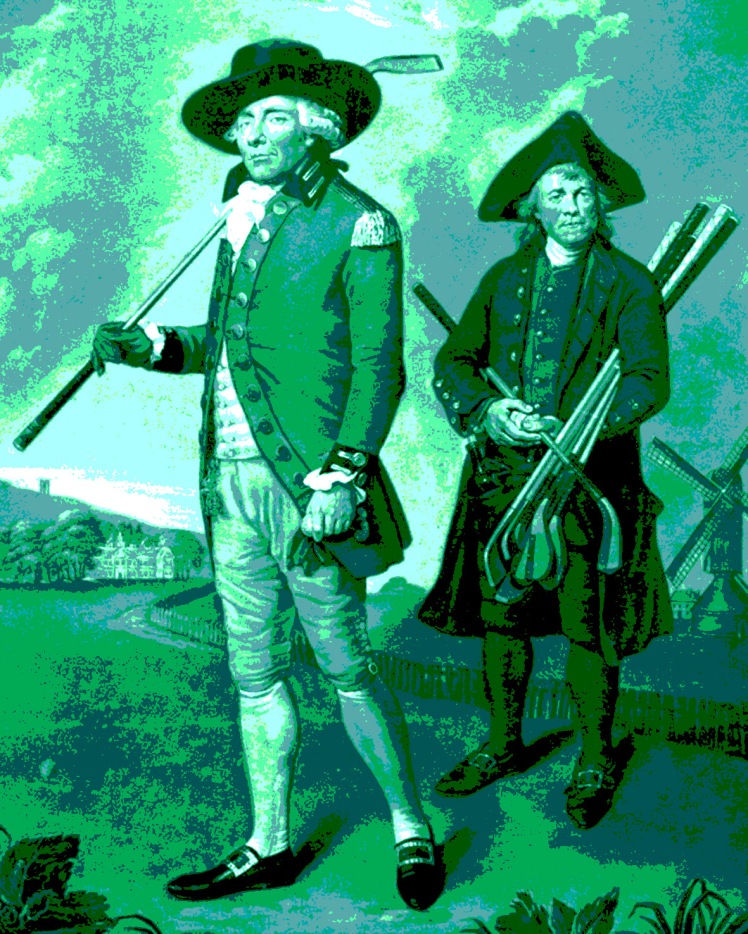 Royal Blackheath Golf Club
Royal Blackheath Golf Club
There’s little doubt that Scots invented golf, or that Scots started the first golf club; but where that happened is another matter. The Royal Blackheath Golf Club was launched in 1608 by Scottish nobles who had accompanied King James VI of Scotland on his way south to become King James I of England. Their preference in this foreign land was to relax in their familiar way, playing golf. This they did on Blackheath Common. Obviously Caledonian Scots dispute this, the St Andrews links having been played on as early as 1400; but the fact remains that the Royal & Ancient Golf Club of St Andrews wasn’t established until 1754. The finest ever golf writer Bernard Darwin, Britain’s first Walker Cup captain, asserted that Blackheath was the oldest in the world “as all the world knows”. What is beyond question is that Blackheath founded the first ever open competition as long ago as 1847, thirteen years before the British Open.
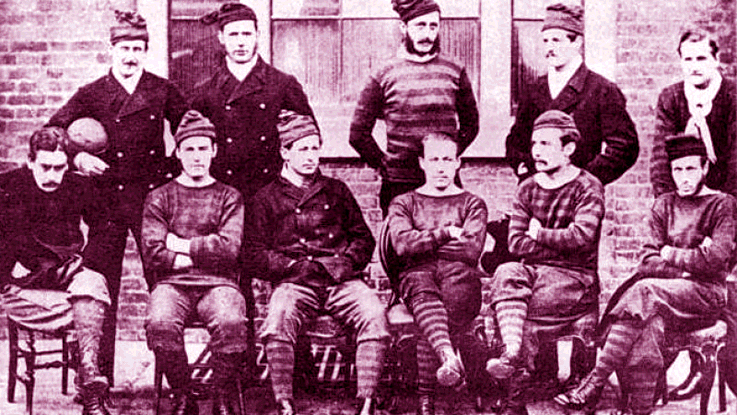 Royal Engineers AFC
Royal Engineers AFC
In 1863, the very year in which Association Football was created, the Royal Engineers started up a football club at their base in Chatham. At the time, football was all about hoofing the ball forward and everyone rushing after it; the ball would be passed only when it had to. It was the REAFC that pioneered so-called ‘combination football’ – the progenitor of today’s passing-based game – as was testified to by even the great FA Secretary Frederick Wall. Consequently, from 1871 to 1875, they won 84 of 87 matches and reached three of the first four FA Cup finals. Although they lost the first 0-1 to Wanderers and the third 0-2 to Oxford University, it was third time lucky in 1874-75 as they beat Old Etonians 2-0 in a replay after a 1-1 draw, Henry Renny-Tailyour scoring all three of their goals. The club went backwards when the professional game took over in 1888, but still survives.
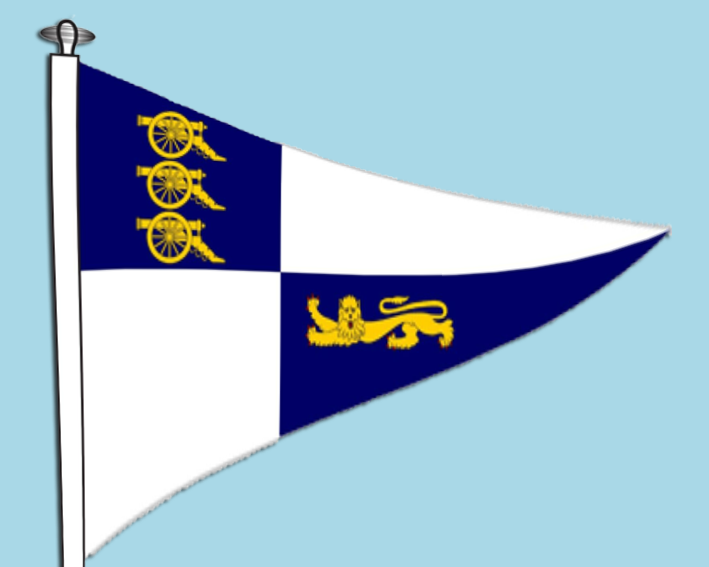 The Royal Engineer Yacht Club
The Royal Engineer Yacht Club
Because Sappers needed to master aquatic skills, the Royal Engineers set up a sailing club during the Napoleonic Wars. In 1846, it was formalised as the Royal Engineer Yacht Club. Operating from a raft at St Mary’s Creek, Chatham, it raced cutters – small, fast vessels for patrolling coastal areas. In 1899, General Sir Charles Warren, who was then commanding Thames & Medway, initiated an annual 12-oared rowing race on the Medway, fiercely contested by teams from the Army and Navy, with a shield awarded to the winner. At first only Sappers studying submarine mining were invited, but after 1905 the competition was thrown open to landlubbers too. The REYC still operates four yachts from moorings at Chatham and Upnor, and holds an annual event on the Medway for the Mary Cup. It also competes with the Navy on the Solent for the Ilex Trophy, a silver model of the REYC yacht that won the second Fastnet Race in 1926.
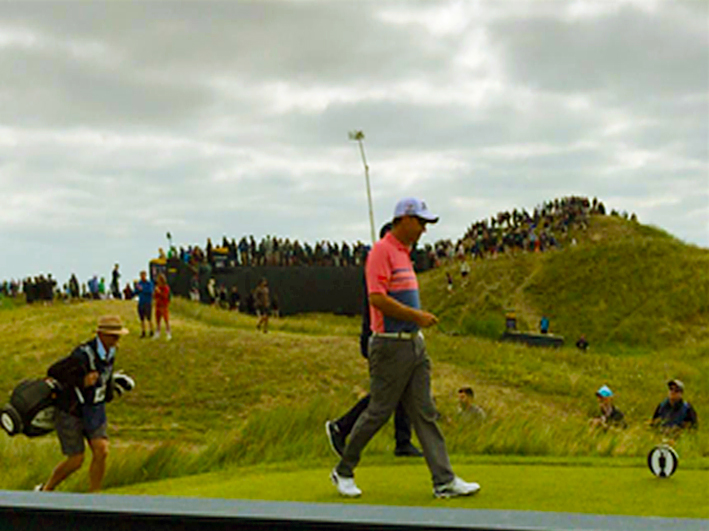 Royal St George’s Golf Club
Royal St George’s Golf Club
The world-famous course at Sandwich was founded in 1887 by Scottish surgeon William Laidlaw Purvis, intending it as a rival to St Andrews. Unfortunately, it was built on sand dunes, and some of its more challenging features at first made parts of it more like crazy golf. Most of its blind spots were later ironed out, although the notorious bunker on the fourth hole remains the deepest in the world. As from 1894, it became a British Open venue, the first outside of Scotland and still the only one in the South. It has hosted the Championship 14 times, previous winners including Harry Vardon, Walter Hagen, Henry Cotton, Bobby Locke, Sandy Lyle, Greg Norman, and Darren Clarke. It is now considered one of the world’s greatest courses. One keen member, Ian Fleming, based the ‘Royal St Marks’ club in ‘Goldfinger’ on it. The British Open was most recently staged there in 2021.
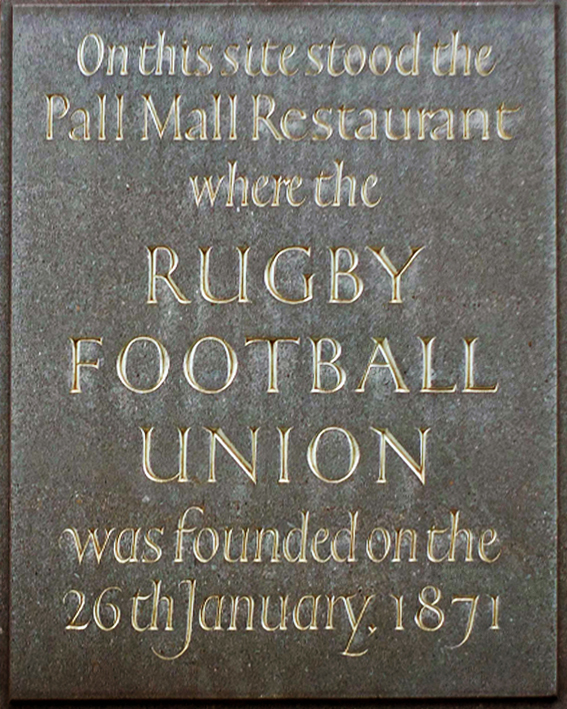 The Rugby Football Union
The Rugby Football Union
A letter in ‘The Times’ urging a rugby code of practice, sent in December 1870 by Blackheath FC secretary Benjamin Burns and his Richmond counterpart Edwin Ash, led directly to the formation of the Rugby Football Union. Of the 21 football clubs that turned up at the Pall Mall restaurant in Regent Street on January 26th, 1871, no fewer than five played in Kent: Blackheath, Guy’s Hospital, and Marlborough Nomads (Blackheath); Queen’s House (Greenwich); and West Kent (Chislehurst). In addition there were two Peckham-based clubs, of which Gipsies FC was founded by three Old Tonbridgians, and Lausanne soon moved to New Cross Gate. When the first-ever rugby international took place two months later, these clubs provided nine of England’s 20 players, including their captain, Blackheath’s Frederick Stokes. Furthermore, in the RFU’s first 18 seasons, its annual president came from a Kent club 12 times. Sadly, as with soccer, Kent’s peninsular inaccessibility eventually turned this ground-breaking region into a rugby backwater.
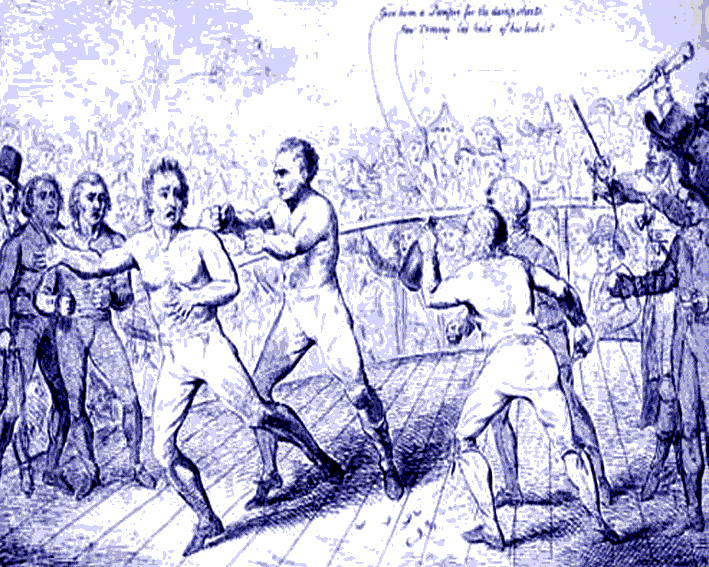 The Rumble in Wrotham
The Rumble in Wrotham
Boxing before the Queensbury Rules was not for the faint-hearted. No gloves were used, and a round lasted as long as it took for a contestant to be flattened, which might happen over 100 times in a fight. It was all over when one or the other was beaten unconscious. This was all done for the sake of gambling, and the prize money was eye-watering. One of the great contests took place on January 17th, 1791 at Wrotham. Tom Johnson from Derby, the overwhelming favourite, was the champion of England and possibly the World. He was a beast of a fighter, although hopeless at managing his affairs. He was matched against the Bristolian Benjamin Brain, known as ‘Big Ben’ despite being only 5 foot seven and 11 stones 10 pounds. The challenger started with such ferocity that the champ lost his cool. He broke a bone in his hand, and Brain beat him to a pulp in 21 minutes.
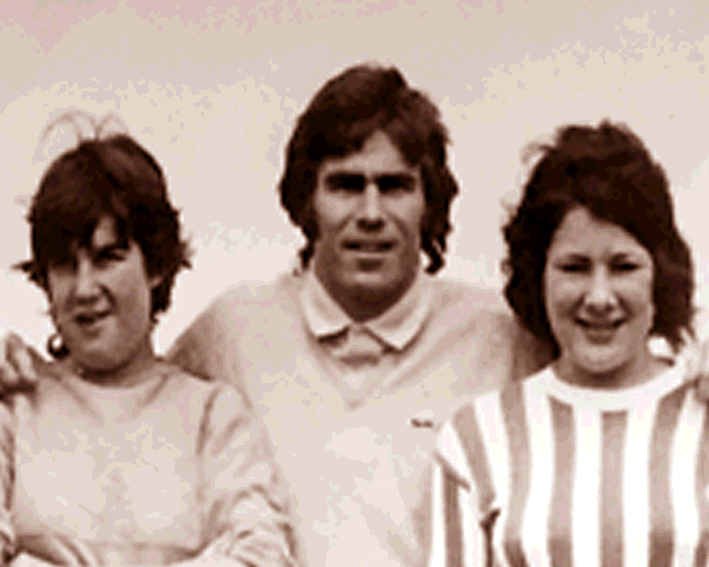 John Ryan (born 1947)
John Ryan (born 1947)
Born in Lewisham, John Ryan went to Maidstone Grammar School, and was only sixteen when he made his debut for Maidstone United in 1964 as a left-sided forward. He was signed by Arsenal in 1965, but never made the first team before being moved on. He then had a distinguished career, mostly as a left-back, at Fulham, Luton Town, Norwich City, Sheffield United, and Manchester City, before short spells at some lower-division clubs. He kept in touch with Kent by adding a further distinction to his CV: president of Maidstone United Ladies. In 1985, 21 years after leaving Maidstone United, he returned as player-coach and then assistant manager, simultaneously working for the family haulage business. He later managed Sittingbourne, Dover Athletic, and Dulwich Hamlet. In 2001, he set up a soccer school under the auspices of the Kent County Football Association, but then became a PFA coach, and in 2001 left to run youth development in Thailand.
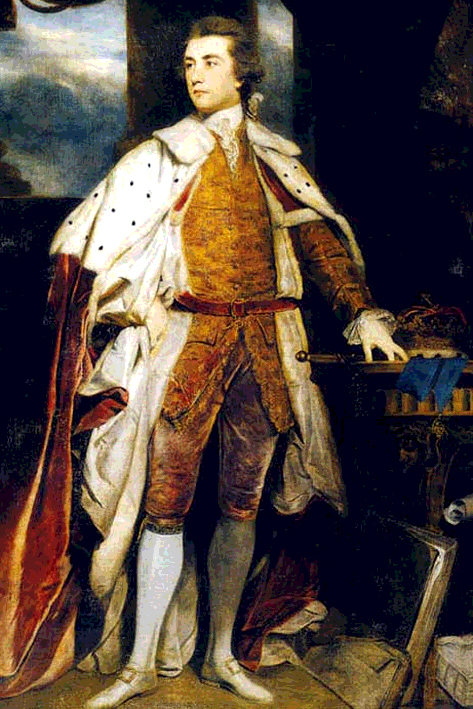 John Sackville, 3rd Duke of Dorset (1745-99)
John Sackville, 3rd Duke of Dorset (1745-99)
Born at Knole, the third Duke of Dorset ably continued the Sackville tradition of shameless philandering, his conquests even including the prime minister’s paramour; his own mistress was the prominent ballerina Giovanna Baccelli. Sackville’s favourite pastime, however, was playing (and gambling on) cricket. Representing Kent, as his father and uncle had, he played it as masterfully as he did tennis and billiards. Once, after fruitlessly warning fielders to stop crowding him, he flattened one of them with a full-blooded stroke. Then, when his team performed inadequately at the Artillery Ground, a riot ensued. More positively, he joined the pre-eminent Hambledon CC alongside Sir Horatio Mann, and gifted The Vine to Sevenoaks. After being sent to Paris as Ambassador in 1784, he even arranged a match on the Champs Élysées. He organised the first overseas tour in 1789, but had to cancel when the French Revolution broke out on his watch. At 45, he finally married and sired three legitimate children.
 David Sadler (born 1946)
David Sadler (born 1946)
Sadler, from Yalding, made his Maidstone United debut aged 15 as a forward, scoring twice. So precocious was his goal-scoring talent – 37 goals in his 50 appearances – that he was picked for England Schoolboys. Since Maidstone Boys’ Tech also wanted him for school matches, he sometimes faced conflicting demands on his time. He inevitably attracted the attention of First Division clubs like Manchester United, Tottenham Hotspur, and West Ham United. It was the first of these who secured his signature in 1962. Matt Busby paid £750 for the prodigy, letting him continue to play for the Stones for three months. After being converted to a (versatile) centre-half, Sadler went on to represent England four times under Alf Ramsey, as well as winning the Football League twice and the European Cup alongside the likes of George Best, Denis Law, and Bobby Charlton. The ever popular Sadler finished his playing career at Preston North End, and still lives in Greater Manchester.
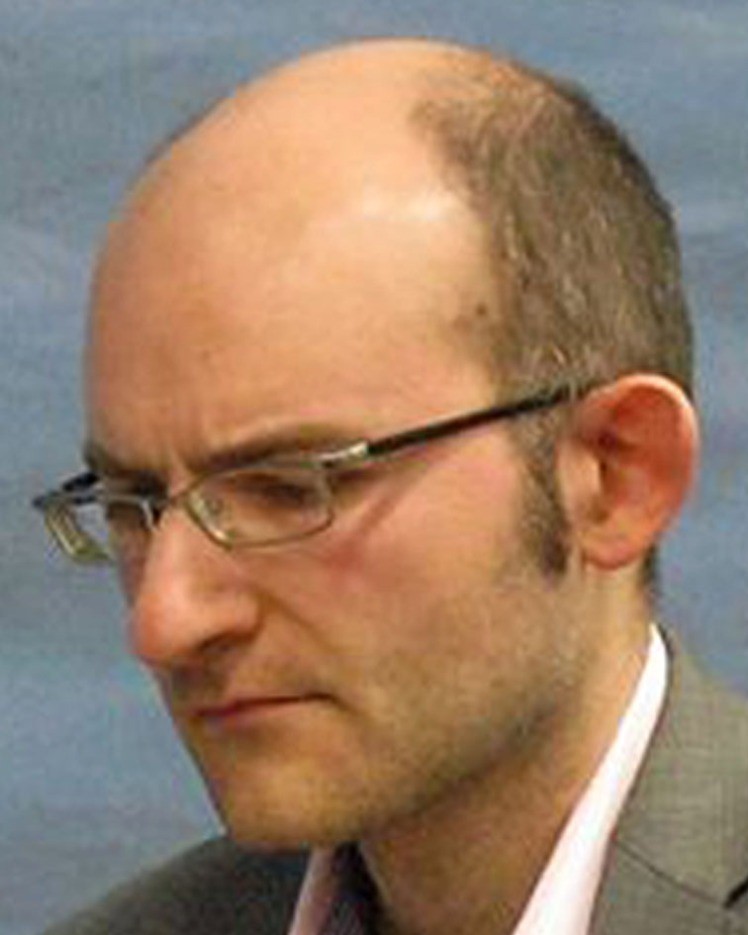 Matthew Sadler (born 1974)
Matthew Sadler (born 1974)
Matthew Sadler from Chatham was part of the extraordinary 1990s blossoming of English chess-playing talent. After attending Rochester Maths, he led the Maidstone Invicta Knights team to the inaugural 1993-4 Four Nations Chess League title. At 21, he became British chess champion, and two years later shared the title with Michael Adams. With Jonathan Speelman, Julian Hodgson, and Nigel Short – who had played Gary Kasparov in the 1993 World Chess Championship final – those two made up the team that unprecedentedly beat Russia to the European Team Championship in 1997, England’s only tournament gold. Playing on board 4, Sadler personally scored 7/9, the team’s best individual tally. Extraordinarily, he turned his back on chess, which he found all-consuming, and took up a career in IT in Holland. He did make a brief comeback, scoring some stunning successes, but now regards chess as no more than a hobby. Nevertheless, he is still ranked No. 2 in England, just behind Adams.
 St Lawrence Ground
St Lawrence Ground
Kent CCC’s headquarters beside the Old Dover Road in Canterbury got its name from a C12 leper hospital that once occupied the site. It was closed in the C16 and replaced by a manor house that itself was demolished by 1839. The owner, the 4th Baron Sondes, made the site available for Canterbury Cricket Week in 1847, although it was still used for pasture for the rest of the year. Not until 1864 was a local club, St Lawrence, founded to play there. Improvements were made after Kent CCC was formed in 1870, and the Club bought the ground in 1896. Among the records associated with St Lawrence is the first ever triple century, scored by WG Grace for MCC in 1876. The famous lime tree standing within the playing area was laid low by a storm in 2005. In 2013, the 15,000-capacity ground was renamed the ‘Spitfire Ground’ after the Shepherd Neame beer that sponsors it.
 Jimmy Seed (1895-1966)
Jimmy Seed (1895-1966)
Born in County Durham, Seed started work in a coalmine at 14. He was signed by Sunderland FC in 1914 but, after twice being gassed in France in WW1, was released in 1920, and ended up at Tottenham Hotspur. He stayed for seven years as an inside forward, scoring five goals in the 1920-21 campaign to win the FA Cup, and won five England caps. In 1927-28, he helped Sheffield Wednesday avoid relegation, ironically at Spurs’ expense. After retiring in 1932, he became manager first of Clapton Orient but then most famously of Charlton Athletic, which he led in three years from the Third Division to runners-up spot in the First, and then to FA Cup glory in 1947. After a brief spell at Bristol City, he joined Millwall in 1958, where he remained as a director until his death at Farnborough, Kent during the 1966 World Cup. He is commemorated in the name of The Valley’s South Stand.
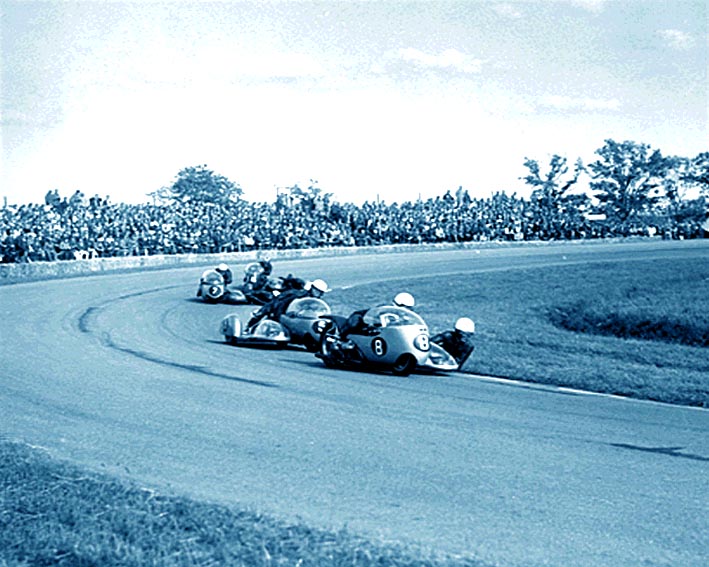 Colin Seeley (1936-2020)
Colin Seeley (1936-2020)
From his earliest years, Colin Seeley from Crayford was into motorbikes. He started out as a mechanic in Bexleyheath, where Bernie Ecclestone had a dealership, and then Dartford. In 1954, he rented his first premises in Belvedere and began racing bikes at Brands Hatch. After finishing sixth in the 1961 Isle of Man TT sidecar event in 1961 on a Matchless with a Canterbury sidecar, he enjoyed a solid career until 1967. He then began making his own race bikes under the now legendary Seeley brand-name. Barry Sheene won the 1971 British 500 cc championship on a Suzuki-powered Seeley frame, and had Seeley to thank for his first victory over Giacomo Agostini in 1973. Having made himself a reputation as one of the world’s best motorcycle designers, Seeley produced Honda-powered road bikes that still fetch good prices today; and, in 1986, Ecclestone gave him a senior job at Brabham F1. Seeley’s extraordinary career was recorded in a two-volume autobiography.
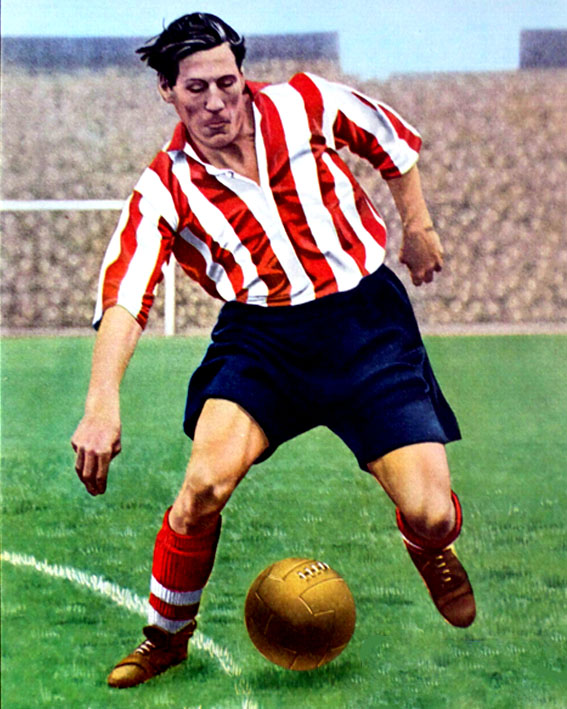 Len Shackleton (1922-2000)
Len Shackleton (1922-2000)
This son of a Yorkshire decorator joined Bradford Park Avenue at 14. In 1939, he played for London Paper Mills at Dartford in the Kent League, then spent WW2 assembling radios before starting his career in earnest. He scored six on his debut for Newcastle United, but after a fallout with the directors left for Sunderland, where he remained for nearly a decade. He represented England five times, his only goal being a sublime chip against world champions West Germany in 1954. Nevertheless, his bolshy attitude made him many enemies. A showboater, he liked to humiliate defenders, and once at Highbury paused a dribble to comb his hair. Having excoriated the maximum wage, he continued to lambast the football authorities after becoming a sports journalist, and in his highly popular autobiography ‘The Clown Prince of Soccer’ left a page blank under the heading ‘The average director’s knowledge of football’. The anarchist band Chumbawamba commemorated him with an eponymous song.
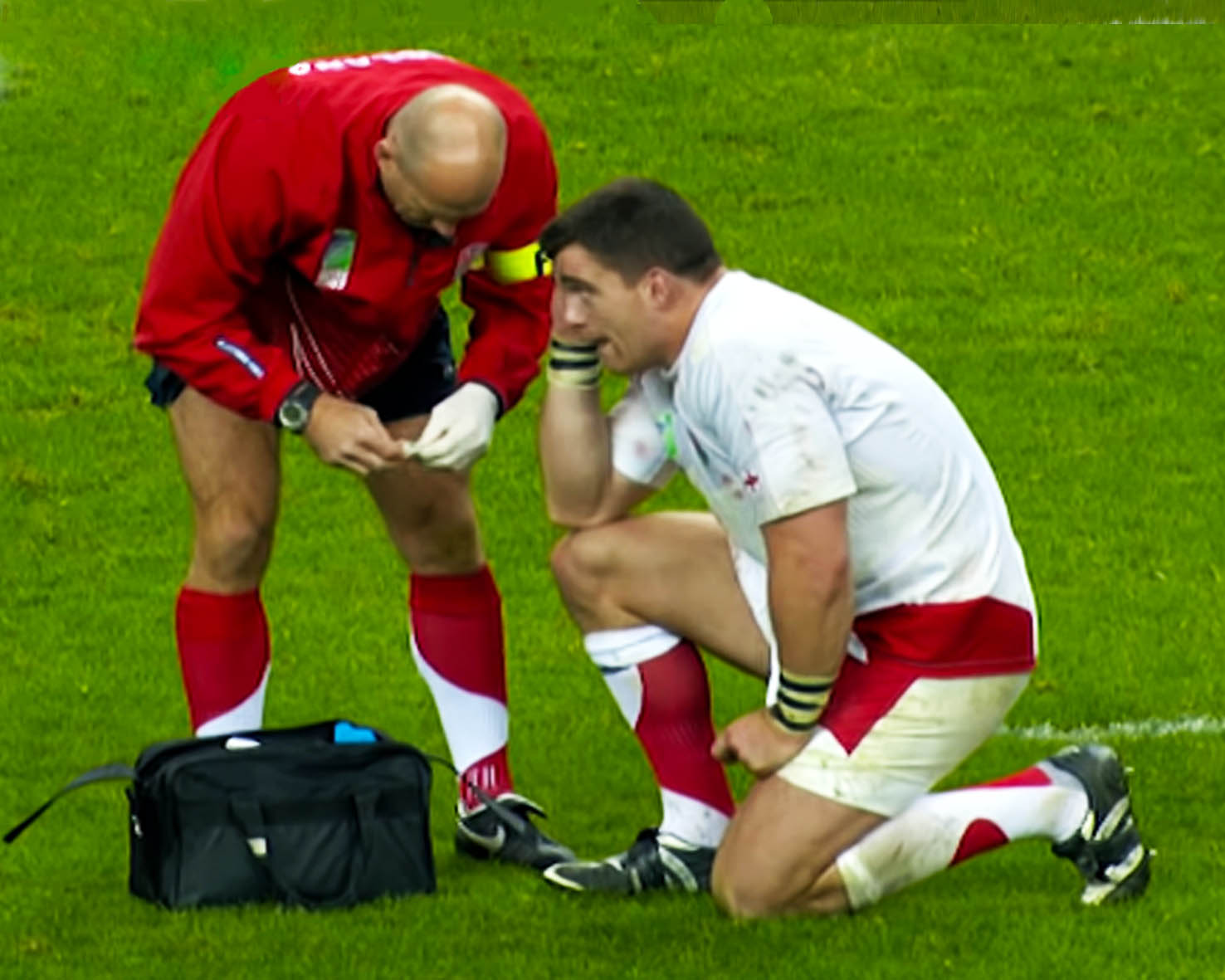 Andrew Sheridan (born 1979)
Andrew Sheridan (born 1979)
Sheridan started playing rugby with Old Elthamians at nine, having been born at nearby Petts Wood. While at Dulwich College, he was selected for England Under-16s, by which time he was developing the towering build that would peak at 6’ 5” and 20 stone and prove sufficiently powerful to bench-press nearly 500 lbs. His physique was not ideally suited to the role of lock, so he was converted at Bristol Shoguns to a loosehead prop. His spell there ended in relegation, a blessing in disguise as he next joined Sale Sharks, who in 2006 were to win their first ever Premiership. By this time he had made the full England squad. He went on to earn 40 caps, including playing the whole of the 2007 World Cup final against South Africa; he also toured twice with the British Lions. In 2013, now with Toulon, he won the Heineken Cup. In between, he unexpectedly recorded an album of acoustic rock.
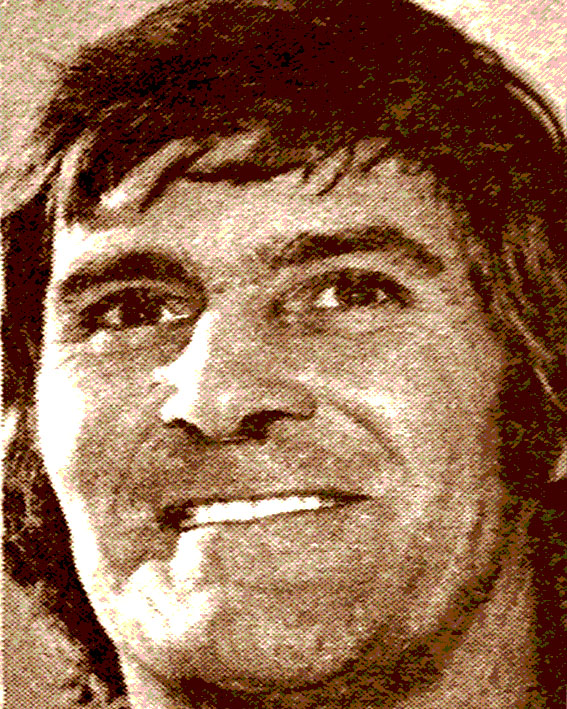 John Simpson (1933-93)
John Simpson (1933-93)
Having been born just south of the Humber, it was no surprise that John Simpson began his professional goalkeeping career with Lincoln City. He had only played for them five times when, in 1957, he was signed up by Gillingham for £750. It was a good investment, because they would not be needing another goalkeeper for 15 years. In that time, Simpson was a fixture in the first team, accompanying the club down into Division 4 on account of the Football League restructure in 1958, winning promotion to Division 3 in 1964, and then being relegated again in 1971. His 571 League appearances are still a club record, although Ron Hillyard later overtook his total appearance record. In 1972 he went to Margate on loan, and then joined Maidstone United, which he helped gain promotion to the Southern Premier League. He remained for two years before leaving to become a newsagent near Priestfield Stadium.
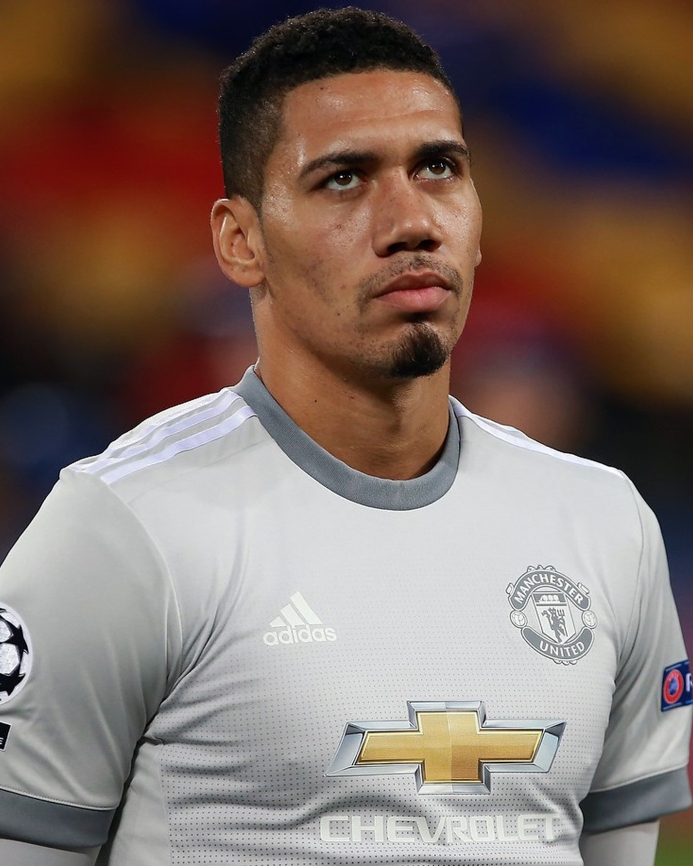 Chris Smalling (born 1989)
Chris Smalling (born 1989)
Smalling was born in Greenwich and, while at Chatham Grammar School, joined Millwall’s Academy. At 14, he joined Maidstone United, making his first-team debut in 2007. He won the regular centre-back role in unusual circumstances, when his predecessor was arrested and then jailed on serious criminal charges. Playing for England Schools meant that he not only missed a lot of matches but was also spotted by Fulham; he left in 2008, shortly after scoring his first senior goal at East Thurrock United. The Premier League club paid £10,000 plus an appearance bonus, but it was only two years before he was sold on to Manchester United for an amount around a thousand times higher. He racked up over 200 appearances there, winning the Premier League twice and every other major club trophy bar the Champions League. He’d won 31 England caps when he was dropped by Gareth Southgate in 2017. He joined Roma in 2019-20.
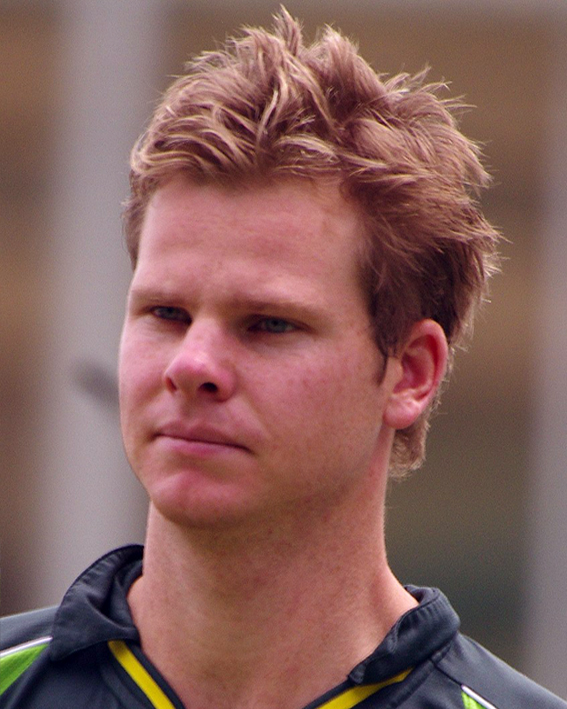 Steve Smith (born 1989)
Steve Smith (born 1989)
In 2007, a 17-year-old Australian made his debut for the Sevenoaks Vine 2nd XI against Blackheath. Steve Smith was a spin bowler, but opened the batting and, chasing a target of 367 in 50 overs, scored 185. Plainly this was no ordinary prospect. His mother was English, so he possessed dual citizenship. Had he accepted Surrey’s offer of a contract, he might have represented England; but his father was determined that he should play for Australia. Eleven years later, Smith was back in Kent as captain of the Australian touring team. At Canterbury, he scored 111 retired before taking three wickets in Kent’s second innings. By that time, he had established himself as the world’s No. 1 batsman, with a test average second only to Sir Don Bradman’s. He blotted his copybook in 2018 in a ball-tampering controversy, costing him a one-year ban and great unpopularity; but his thoroughly unorthodox but spectacular batting style still entertains.
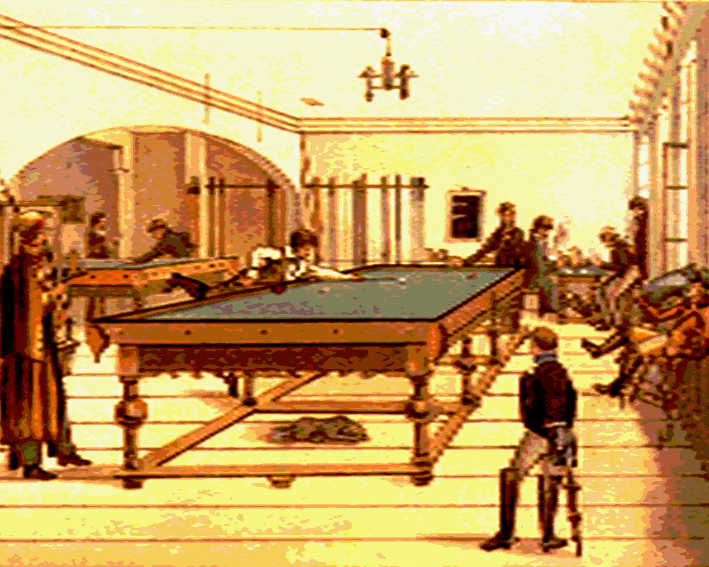 Snooker
Snooker
Like badminton, snooker was invented in the 1870s by bored British Army officers serving in India under the Raj. A lot of time was whiled away in the officers’ mess playing variants of pocket billiards, the players paying into a ‘pool’ of money that went to the winner. In 1875, Lieutenant Neville Chamberlain of the 11th Devonshire Regiment, stationed at Jubbulpore, merged two of the variants, ‘black pool’ and ‘pyramids’. His popular new game made its way back to England, and was played at the Royal Military Academy in Woolwich. It so happened that any new recruit there was known as a ‘snooker’, a term probably meaning ‘one who sneaks about’. Chamberlain jokingly told an officer who had missed a pot that he was “a regular snooker”, prompting the new name ‘snooker’s pool’. Little did they know that the dominant world champion a century later would come from next door in Plumstead.
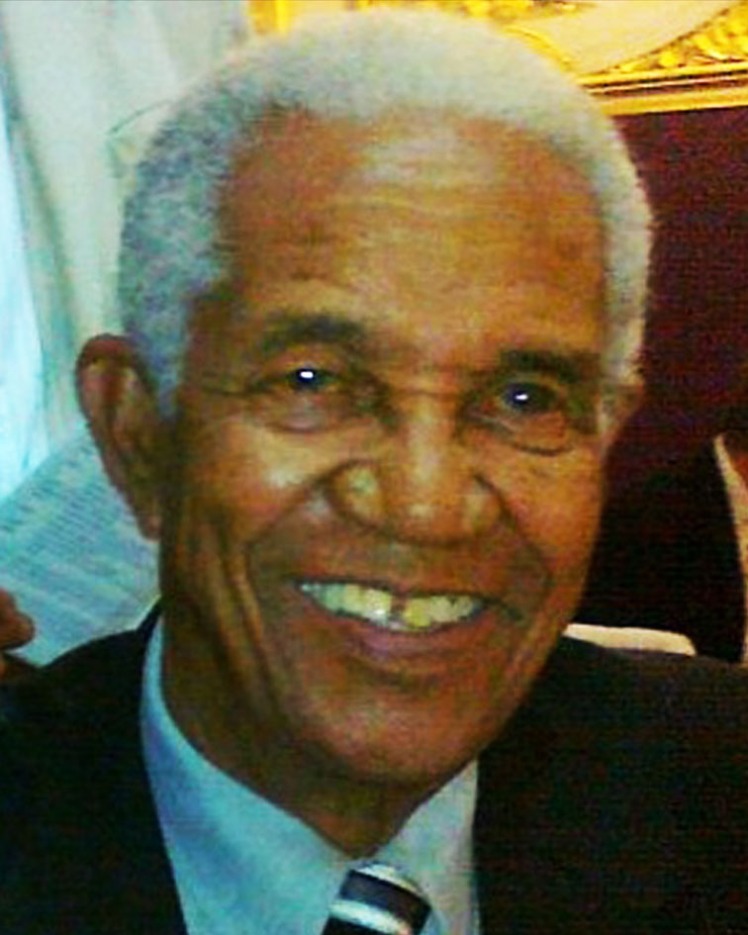 Sir Garfield Sobers (born 1936)
Sir Garfield Sobers (born 1936)
Gary Sobers was not so much a cricketer as a one-man team. The West Indies’ Barbadian captain bowled fast, medium, and slow, could bat nearly as well defensively as he did aggressively, and was a brilliant fielder. In 1968, after a rule was passed letting each English county hire one overseas player, seven tried to sign him; it was Nottinghamshire that got lucky. In August, he came to Dover, with Kent needing a win to keep up a title challenge. Sobers demolished the home team’s chances by taking five wickets bowling fast in the first innings, then six bowling spin in the second, and finally smashing the fastest century of the season. He ended that month by becoming the first man to hit six sixes in an over. He is reckoned probably the best all-rounder ever. Kent all-rounder John Shepherd, who used to field beside him in the Windies slips, said Sir Garfield had just one fault: excessive modesty.
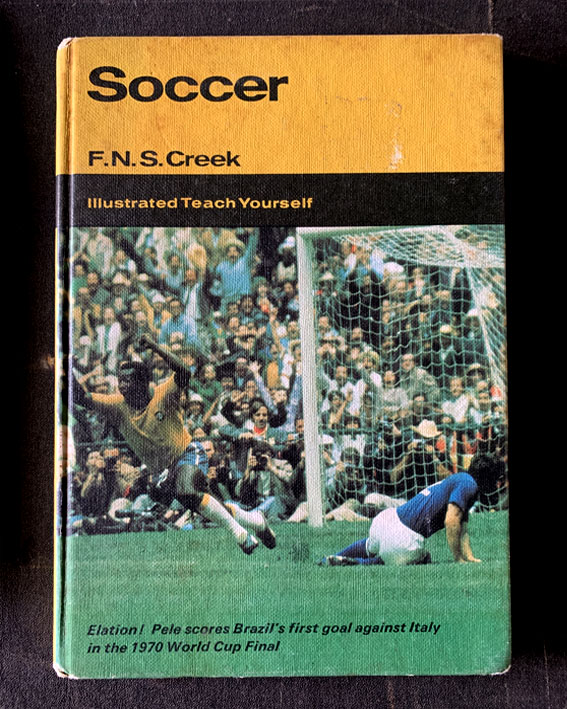 Socca
Socca
After the Rugby Football Union split from the Football Association in 1871, public schoolboys differentiated the two codes with the nicknames ‘rugger’ and ‘soccer’; or so the story goes. However, the Oxford English Dictionary records no written example before 1889, three years after Arsenal was founded in Woolwich. It appeared in a letter penned by poet Ernest Dowson from neighbouring Lee, in which he expressed no interest in watching. Interestingly, he spelt it not ‘soccer’ but ‘socca’, which admittedly was taking fewer liberties phonetically. ‘Soccer’ remained commonplace in Britain until the late C20, when commercially minded Americans started using it conspicuously to discriminate it from their own ‘football’, i.e. American football. In a British backlash, ‘soccer’ was aggressively side-lined, while ‘football’ became the obligatory term, in line with most other footballing nations around the world. Many rugby union clubs, incidentally, still call themselves ‘football club’, an example being Maidstone FC, which predates Maidstone United FC by more than a decade.
 Edwyn Stede (1701-35)
Edwyn Stede (1701-35)
The Georgian era was an excellent time to be an English gentleman. Edwyn Stede, from Stede Court near Harrietsham, perhaps took his gentlemanly pleasures to excess. One of his hobbies, not to say vices, was gambling; and the form of gambling he preferred was arranging cricket matches against his friends, with an eye-watering pot at stake. He tended to bill his teams as ‘Kent’, which justifiably entitled him to be called the ‘Father of Kent Cricket’, and also perhaps of county cricket. He did actually play, usually captaining his team, and did so for both Kent and the powerful Dartford team up until his early death. It brought him friends who included the Prince of Wales. Though he put a lot into the game, however, he did not take much out. He ended up blowing the family fortune, and was perhaps lucky not to live long enough to regret his recklessness.
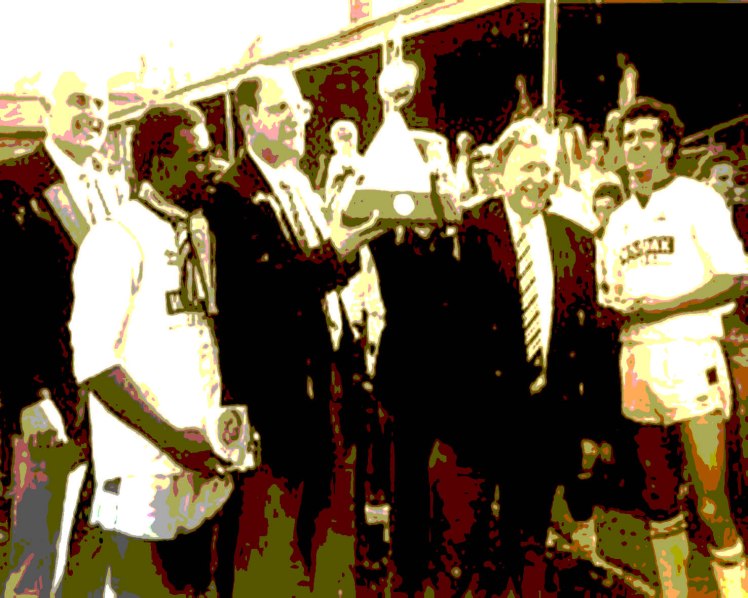 John Still (born 1950)
John Still (born 1950)
After playing a solitary Football League game for Leyton Orient, John Still, born in east London, was a defender at three non-League clubs before moving into club management. After a decade at Leytonstone and then Dartford, he took over at Maidstone United in November 1987. In just his second season, he managed the club to the Alliance Premier League title before dramatically leaving immediately afterwards. He went on to repeat the achievement at both Dagenham & Redbridge and Luton Town, making him the only man in history to have taken three clubs into the Football League. He actually had four spells at Dagenham & Redbridge, three at Barnet, two at Leytonstone, and one each at Dartford and Peterborough United. He also endured a season as assistant manager at Bristol Rovers. In January 2019, Still came out of retirement to re-join Maidstone United after 30 years, though too late to stave off the club’s relegation from the National Conference.
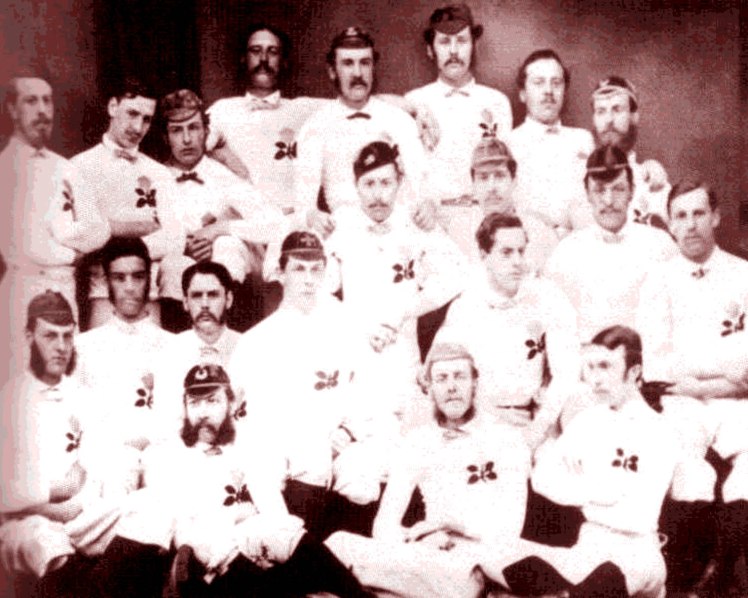 The Stokeses
The Stokeses
In the Victorian era, North-West Kent produced a second family of outstanding sportsmen to rival the Lubbocks of High Elms. Henry Stokes, a solicitor from Greenwich who was an official at the Admiralty, had six sons, five of whom went to Rugby School. All went on to play rugby for the famous Blackheath Football Club, which for some years was almost invincible. One, Frederick, was particularly noteworthy, because he participated in the foundation of the Rugby Football Union in 1871, and then served as England’s captain in its first three matches, all against Scotland. His younger brother Lennard, supposedly the best player alive, also captained England, making 12 international appearances. Both brothers became RFU president, Frederick still being the youngest ever at 23. Not short on versatility, they also played cricket for Kent, as did brother Graham. It is satisfying to see the family name now attached to an England cricketer who plays like six men in one.
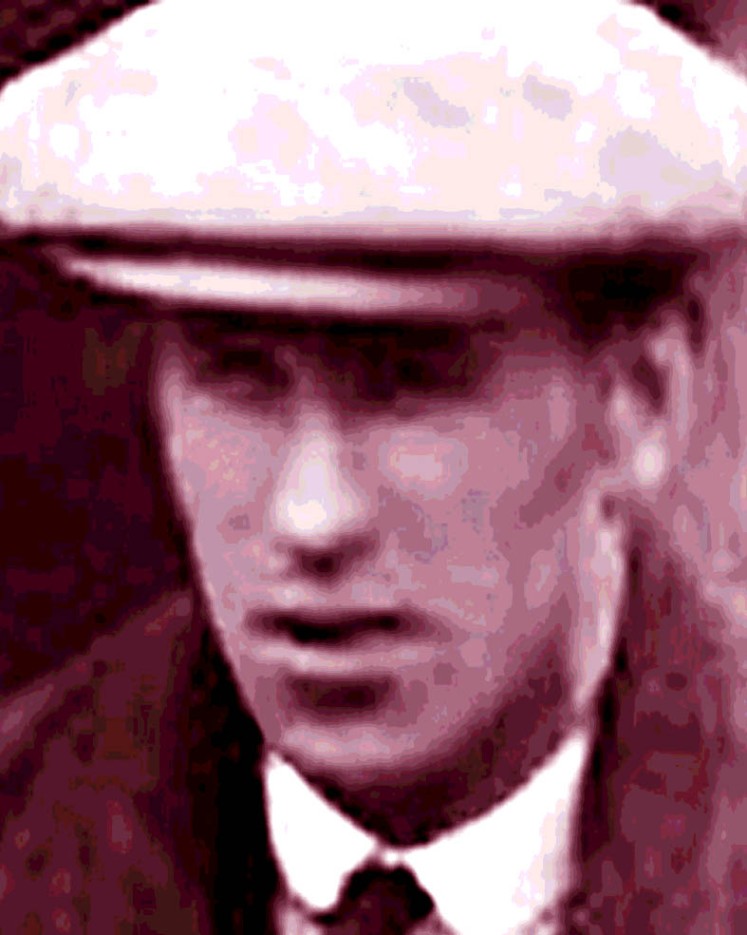 Stiv Stonley (1889-1967)
Stiv Stonley (1889-1967)
Stephen ‘Stiv’ Stonley is the man who scored the last ever goal at Plumstead before Woolwich Arsenal severed its connection with Kent. A centre-forward from Sunderland, he played for Northampton Town and Newcastle City before joining the Gunners, for whom he was top scorer in 1913-14, registering 14 goals in 39 starts. That landmark goal came in a 1-1 draw with Middlesbrough on April 26, 1913 in front of just 3,000, the Arsenal having already finished bottom of Division 1. He was in the squad for the match against Leicester Fosse in September 1913, the club’s first at Highbury under its new name, ‘Arsenal’. He squeezed in a couple of months at Brentford of the Southern League before WW1 broke out, when he served as an actual gunner. He joined Maidstone United in 1919, and in the one season he stayed was top scorer with 27 goals. After playing for Sheppey United, he remained in the South, and died at Greenwich.
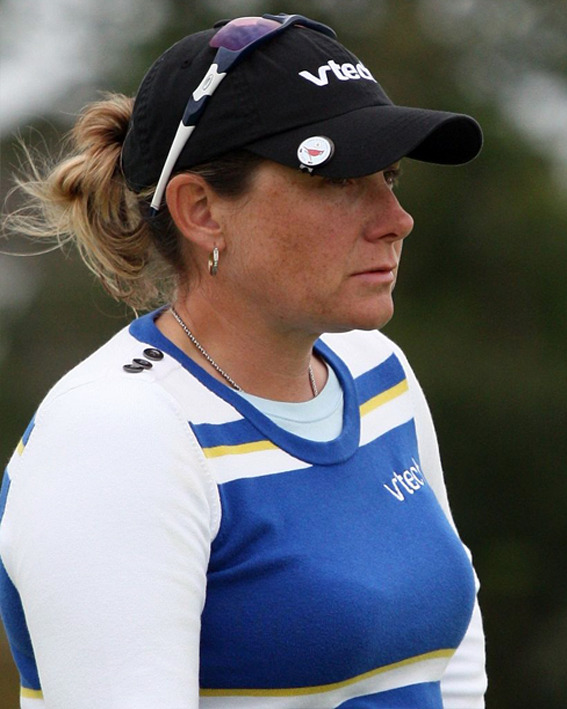 Karen Stupples (born 1973)
Karen Stupples (born 1973)
Stupples’ skill as a golfer has taken her from her home in the South-East of England to another in the South-East of the USA. She was born in Dover, the daughter of a member of the Prince’s Golf Club in Sandwich for whom she would caddie for pocket money. She went on a golf scholarship to Arkansas before transferring to Florida. She twice represented Great Britain in the Curtis Cup, once on the winning team. After turning professional, she came home. She was working as a waitress when a generous customer offered to sponsor her. She and her husband sold up and moved to Florida, and he became her caddie. She had middling success until 2004, when she won the Welch’s Fry’s Championship by a record score and then the Women’s British Open, during which she achieved the feat of starting her final round with an eagle and an albatross. Now retired, she still lives in Orlando, Florida.
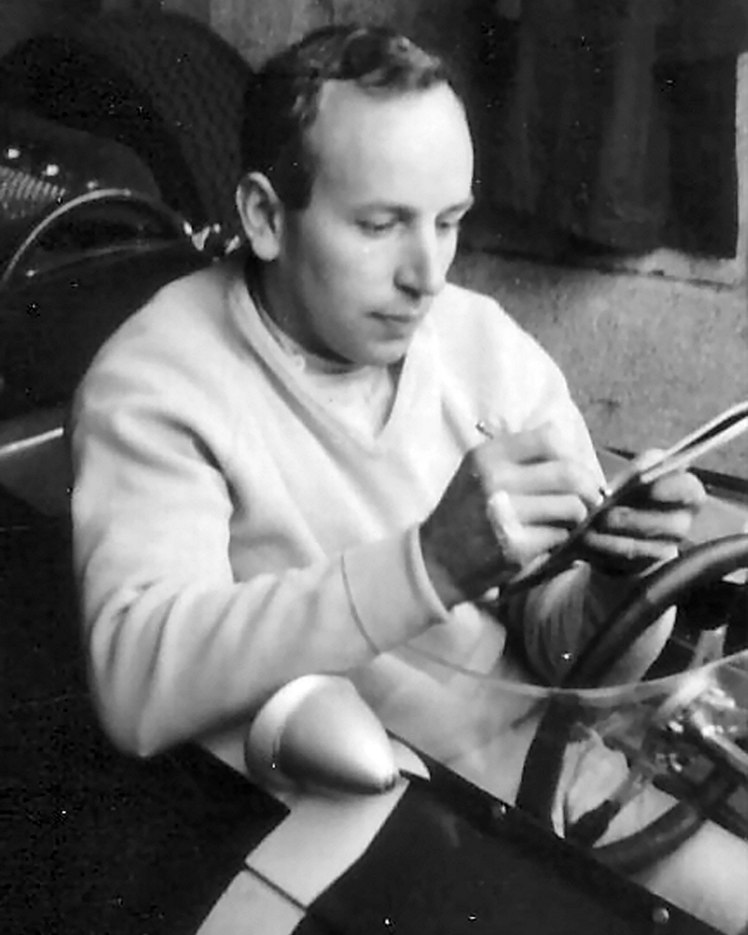 John Surtees (1934-2017)
John Surtees (1934-2017)
The son of a motorcycle dealer, Surtees from Surrey was one of those rarities, a sportsman who excels on the world stage and goes on to have a successful career outside of the media. He earned world fame by winning the 500cc Motorcycle World Championship four times, and then becoming the Formula One World Champion in 1964 – the only man ever to win both titles. After entering 111 grand prix and winning six, he set up his own motor-racing team, Surtees, which competed through the 1970s, and in 1972 won the Formula 2 European championship with Mike Hailwood at the wheel. Meanwhile, he was dealing in motorcycles in West Wickham and cars in Edenbridge. He later took over and revitalised the Buckmore Park Kart Circuit near Chatham, which is now run by his daughter Leonora. His son Henry was continuing the family motor-racing tradition until he was killed in a freak accident at Brands Hatch in 2009.
 EW ‘Jim’ Swanton (1907-2000)
EW ‘Jim’ Swanton (1907-2000)
Ernest William Swanton was born such a big baby that he earned the nickname ‘Jumbo’, later famously abbreviated to Jim. His stockbroker father was treasurer of the local cricket club, Forest Hill, and took him along in his pram when they played WG Grace’s London CCC. An academic duffer, Swanton went into journalism straight from school. By 1927, he was writing about cricket, and incredibly would continue doing so for 70 years, making him the foremost cricket correspondent of the C20. After playing three times for Middlesex just before WW2, he spent three years in a Japanese slave camp sustained only by his ‘Wisden’. Afterwards he joined the ‘Daily Telegraph’ and settled at Sandwich with his wife Ann, serving as president of both the local cricket club and, in 1981, Kent CCC. His rich voice and traditionalist views on cricket remained familiar to BBC listeners for three decades. He won the CBE in 1994, and died at Canterbury.
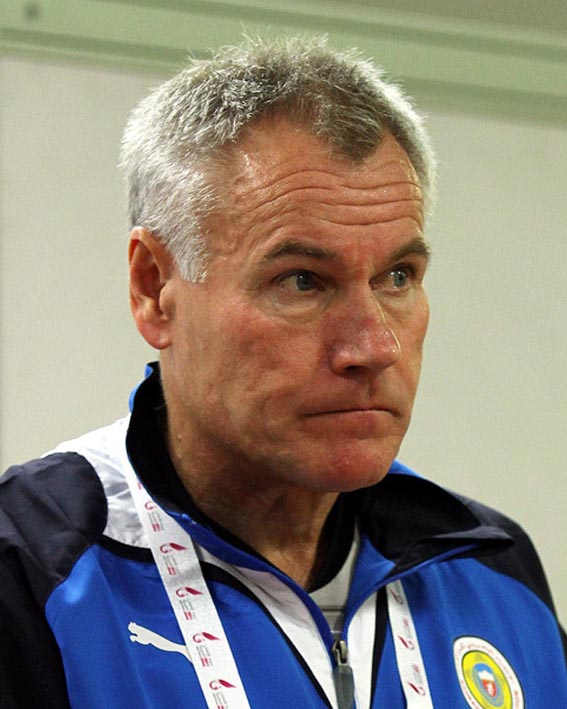 Peter Taylor (born 1953)
Peter Taylor (born 1953)
Best known to younger football fans as a veteran football manager, Essex-born Taylor was in his time an outstanding footballing talent. He made his name at Crystal Palace after two seasons at Southend. Two years later, he scored twice in four appearances for England, before being sold for £200,000 to Tottenham Hotspur, where “Peter, Peter Taylor… on the wing” became a huge favourite. After a time at Leyton Orient, he moved to Maidstone United in 1983, returning briefly the following year after a few months’ absence at Exeter City. From 1986 to 1990 he was player-manager at Dartford. His 30-odd years in management have also embraced Southend United, Leicester City, Brighton & Hove Albion, Hull City, Crystal Palace and Gillingham, culminating in two spells in charge of England U21s and a single match as caretaker manager of England, when he made David Beckham captain for the first time. His most recent appointment was at Dagenham & Redbridge.
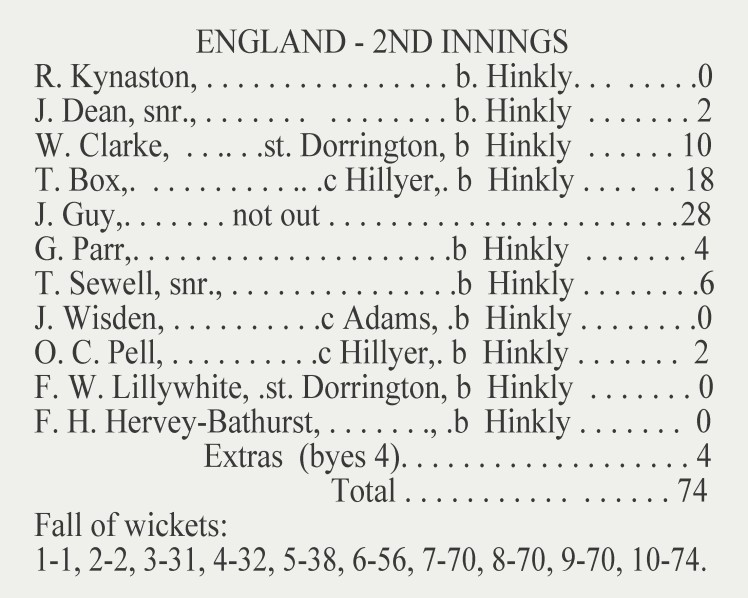 Ten wickets in an innings
Ten wickets in an innings
Cases of a bowler taking all ten opposition wickets in an 11-a-side game are few and far between. The first recorded instance was on July 11th, 1848 in a match at Lord’s between England and Kent. The bowler was Edmund Hinkly, born in Benenden, who strangely enough had not started playing for Kent until he was 29, but would continue doing so until he was in his forties. He also played four times for England teams. On this occasion, he single-handedly demolished the England batting, which included such great cricketing names as Wisden and Lillywhite. Unfortunately, his full bowling analysis was not recorded. It was not enough to save the match, however, which England won by 55 runs. Hinkly is not the only bowler to have achieved the feat for Kent, as Colin Blythe and George Collins later did likewise. Only one man in history has done it three times, all in his forties: another Kent great, Tich Freeman.
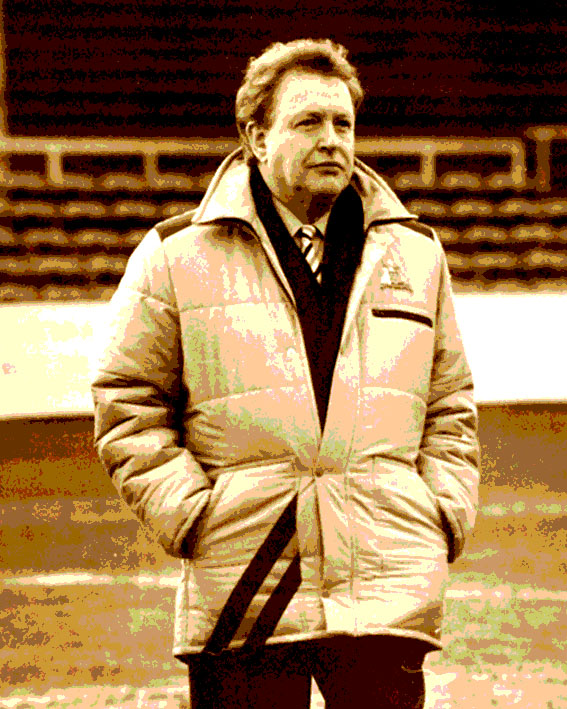 Jim Thompson (1933-2009)
Jim Thompson (1933-2009)
After making his name in advertising sales, James Craig Thompson, a Geordie, headed south to take up a senior position at the KM Group. In 1968 he joined the committee of Maidstone United, and two years later became its chairman. He then set about his goal of catapulting the club into the Football League within ten years. After shrugging off a 1984 boardroom revolt and assuming ownership, he presided over the sale of the Maidstone Athletic Ground and moved in with Dartford FC, which he also took over. Both clubs went bust. Thompson gave up football in 1993 after being banned by the FA for misconduct. His one lasting achievement, as inaugural chairman of the Alliance Premier League, was the creation of a genuine Football Pyramid. It was largely due to his efforts that the Football League’s closed shop was terminated and automatic promotion to Division 4 introduced. Thompson died while still dwelling at Otham.
 Andy Thomson (born 1955)
Andy Thomson (born 1955)
After making a name for himself as a junior bowls champion in Scotland, Andy Thomson from Fife really hit the headlines after coming to live in Kent in his twenties and deciding to play for England. He joined the Cyphers club in Beckenham, and with Gary Smith won his first gold medal in the men’s pairs at the World Indoor Bowls Championships in 1993 – the first of three such titles. In the next two years he won back-to-back men’s singles world titles, completing a hat-trick 17 years later. To these he could add the world outdoor men’s fours gold he had won in 1996. That he did not win more owed something to his rivalry with Edinburgh-born Alex Marshall, the six-time indoor singles world champion. Thomson, a crowd-pleaser known as the Statesman of Bowls, nevertheless won a record number of England caps. A resident of New Eltham, he retired from playing in 2021 to coach the Australian team.
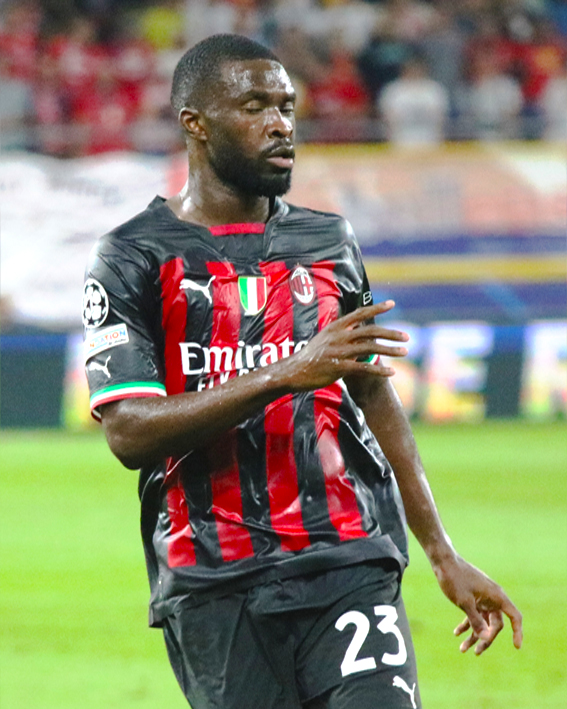 Fikayo Tomori (born 1997)
Fikayo Tomori (born 1997)
A talented footballer from an early age, Tomori could have played for any one of three nations, having been born in Canada of Nigerian parentage but moved to North Kent as a baby. He joined Riverview United, a Sunday league club, at six, was signed up by Chelsea in 2005, and attended Gravesend Grammar School. He had already played for Canada Under-20s in 2016 when he was selected for England Under-19. He went on to make his full England debut in 2019 as a fast, powerful centre back. Opportunities at both Chelsea and England remained thin, however, and he was loaned out in the 2017-18 and 2018-19 seasons, winning the club Player of the Year award at Derby County. In 2021 he moved to AC Milan, where he is now a first-team regular. It will have brought great relief to football commentators that he assumed his familiar footballing appellation instead of his birth names, Oluwafikayomi Oluwadamilola.
 Andy Townsend (born 1963)
Andy Townsend (born 1963)
The son of former Charlton Athletic left-back Don Townsend, Andy was born in Maidstone but grew up in Bexley, attending school in Bexleyheath. He started his footballing career with Welling United, where he stayed for four years. His professional career took off when he was signed up by Southampton in 1985. He moved on via Norwich City to Chelsea, where he stayed for three seasons. His next club was Aston Villa, with which he picked up his only silverware, twice winning the League Cup, once as captain. He finished his playing career at Middlesbrough and then West Bromwich Albion. Along the way he qualified through his paternal grandmother to play 70 times for Ireland, and appeared in two World Cups, actually playing against England in a group match at Italia 90. Though he might have made a good manager, he went on instead to have a long career as a co-commentator for ITV and then BT Sport.
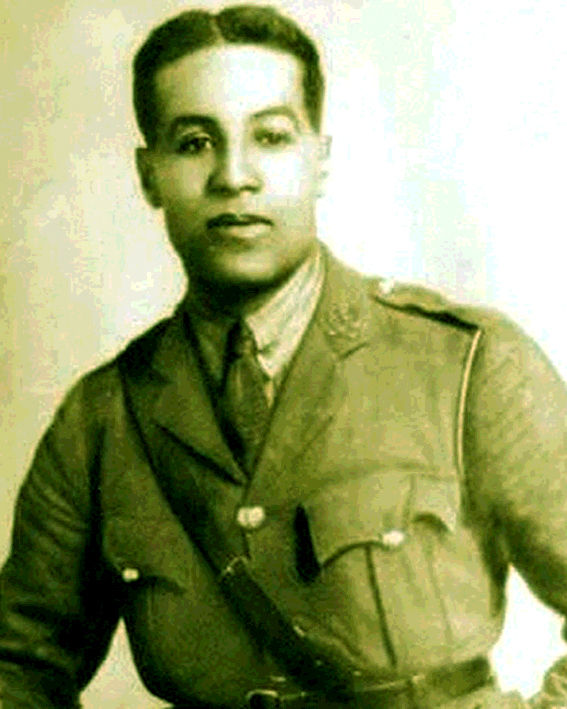 Walter Tull (1888-1918)
Walter Tull (1888-1918)
The son of a Barbadian father and an English mother, Walter Tull was born at Folkestone. Both parents died while he was a child, so he was sent to an orphanage in Bethnal Green. He started his football career at Clapton, which he helped win the FA Amateur Cup in 1909. He was signed by Tottenham Hotspur of the First Division, where he played as a forward for two seasons, appearing ten times and scoring twice. He was moved on to Northampton Town, where he made 105 appearances, notching nine goals in three seasons. Then WW1 intervened. He signed up immediately for the Middlesex Regiment, and in three years worked his way through the ranks to Second Lieutenant. After surviving the Battle of the Somme, he was killed in the Pas de Calais during the German Spring Offensive of 1918. Despite the best efforts of a former Leicester Fosse goalkeeper, his body was lost.
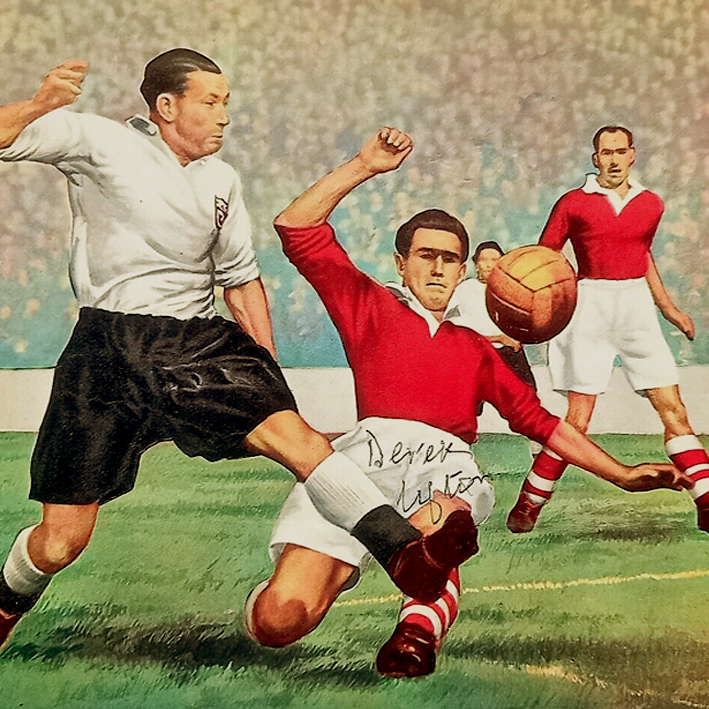 Derek Ufton (1928-2021)
Derek Ufton (1928-2021)
Crayford-born Derek Ufton attended Dartford Grammar School, where Mick Jagger‘s father taught him PE. Living in London after WW2, he befriended Malcolm Allison, who inducted him into Charlton Athletic. A centre-half, he played for them 277 times, and once for England. He was plagued by shoulder injuries, however, including on the famous occasion when, as captain, he went off injured, but Charlton recovered from 1-5 down to win 7-6. His greater love, however, was cricket. As a wicket-keeper, it was his misfortune to coincide at Kent CCC with the great Godfrey Evans, although he did manage to have a career spanning 13 years, standing in whenever Evans was on England duty. He also represented MCC once, against Scotland. After retiring, he managed Plymouth Argyle for three years, and was President of Kent CCC in 1991. He spent his later years with his second wife in Elham, happily relating how Mick Jagger once asked him for his autograph.
 Derek Underwood (born 1945)
Derek Underwood (born 1945)
‘Deadly’ Derek Underwood was born in Bromley Maternity Hospital. His father played cricket for Farnborough, and he himself took up the game under his brother’s captaincy at Beckenham & Penge Grammar School, where he once took ten Bromley Grammar School wickets. He made his debut for Kent at 17 as a left-arm spinner who bowled remarkably quickly, almost at medium pace. He soon established a reputation for being unplayable on a damp pitch under a clouded sky. He became the youngest player to take 100 wickets in his debut season, and eventually completed the feat ten times. In 1967, aged 22, he took 12 wickets for 50 in a day against Hampshire at Maidstone. The following year, he breathtakingly demolished the Australian tail in the last half hour, when a draw had seemed a certainty following heavy rain. In total, he took 297 wickets for England. Never much of a batsman, he finally got his first century at 39.
 The Valley Party
The Valley Party
Charlton Athletic’s ground, The Valley, enjoys the distinction of having had a political party named after it. Volunteers first excavated it in 1919 from a chalk quarry called the Swamps, the concave shape presumably suggesting its name. The new arena’s capacity was among the biggest in England, such that in 1938, when the Club was one of the best in the country, it accommodated 75,031 for an FA Cup match against Aston Villa. By the ’eighties, however, Charlton’s finances were suffering a downturn, and the stadium was in a state of disrepair. From 1985, the Club was even obliged to ground-share elsewhere. When efforts to restore the ageing ground were thwarted by the Labour-controlled Greenwich Borough Council, which preferred to build over it, fans founded The Valley Party. Its candidates did sufficiently well in the 1990 local elections that the Council demurred. Today’s much improved stadium has a capacity of 27,111, more than enough to cater for Charlton’s relatively modest league status.
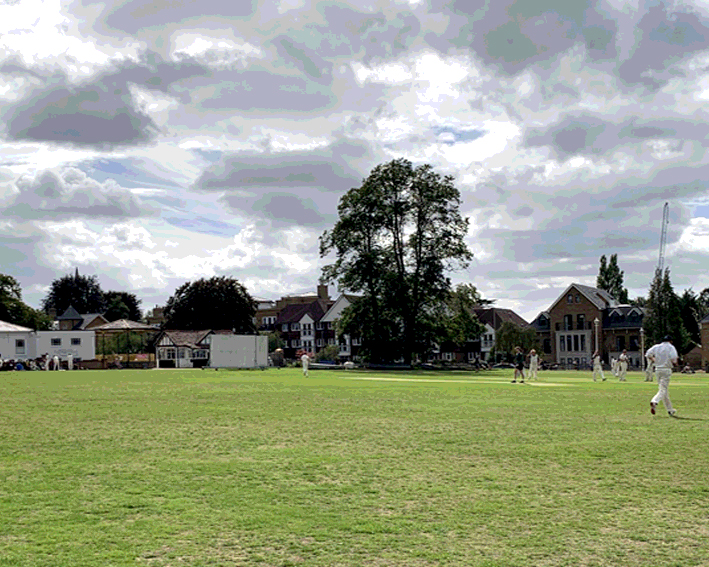 The Vine Cricket Ground
The Vine Cricket Ground
Sevenoaks Vine is one of the most historic cricket grounds in the world. Its name derives from the likelihood that the land was previously used as a vineyard for the Archbishops of Canterbury. The land was gifted in 1734 by John Sackville, 3rd Duke of Dorset and owner of Knole Park, who arranged for Kent to play Sussex in the first match there. During the C18, it hosted numerous games now recognised as First Class. It became the location of several landmarks in the game: the first match ever to feature a third stump, the first recorded century, the first to see someone out hit wicket, and the highest ever individual score (twice). The ground was never used by Kent because, being common land, it could not be enclosed. It nevertheless possesses a stand dating to 1850, and a bandstand nearly as old. Its famous Seven Oaks, of which six were flattened in 1987, were replaced the same year.
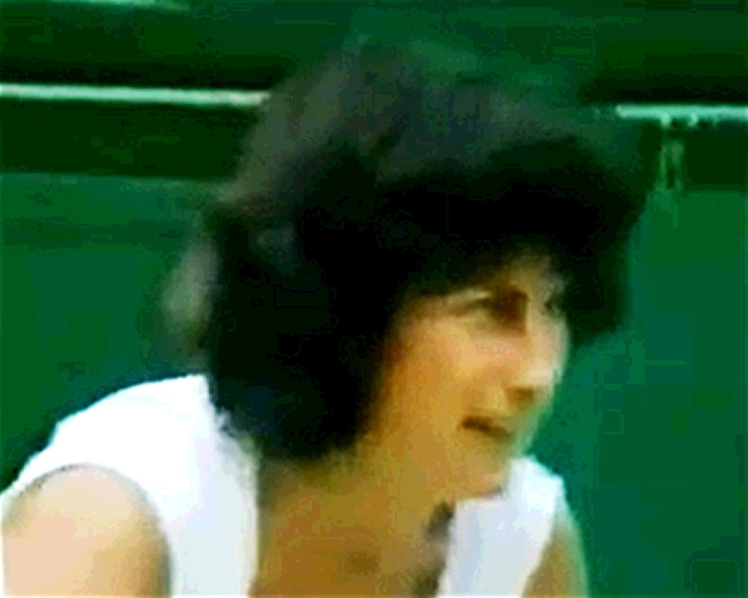 Virginia Wade (born 1945)
Virginia Wade (born 1945)
Susan Virginia Wade was born into an ecclesiastical family in Bournemouth. They moved to South Africa when she was a baby, so that her father could become Archdeacon of Durban. Returning at 15, she went to live in Tunbridge Wells for five years, attending the local Grammar School, and then did a degree in Maths and Physics at Sussex University. When she was 21, her father acquired Sharsted Court near Newnham, which remains in the family’s possession. She took up professional tennis in 1968 and quickly developed into a world force in both singles and doubles. She became the only British woman to have won a title at each of the four Grand Slam tournaments, crowning her career at the age of 31 by winning the singles title at the centenary Wimbledon tournament in 1977. She has subsequently had a long career as a TV pundit, and spends part of her time living in New York.
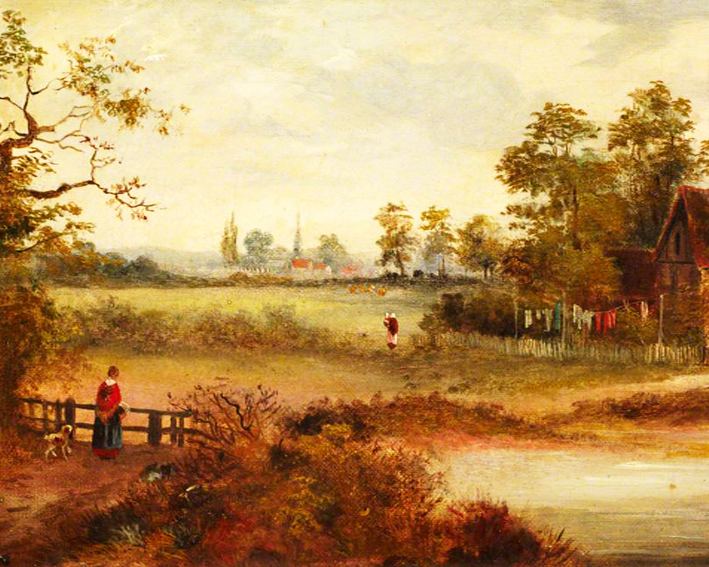 West Kent Football Club
West Kent Football Club
Although West Kent Football Club is now forgotten except by rugby historians, it stood for a few years at the forefront of the game. Its origins lay in West Kent Cricket Club, which had played on Chislehurst Common since 1822, and was persuaded in 1867 to let rugby be played on its ground in the off-season. The Old Rugbeians who founded the new ‘football club’ included the eminent AG Guillemard, who in 1871 represented it at the inaugural meeting of the Rugby Football Union. When the first international was played between England and Scotland shortly afterwards, West Kent provided two of England’s 20 players, namely Guillemard and Joseph Green. Initially the Club played by both rugger and soccer rules, taking on many of the top clubs of the day at the former. From 1874, however, it played only rugby, wearing white shirts bearing the Invicta horse. The club ceased playing by 1886.
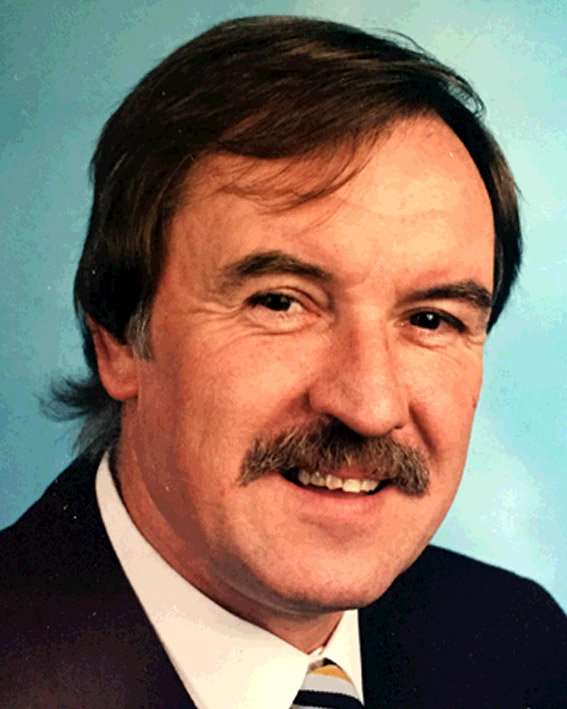 Bill Williams (born 1942)
Bill Williams (born 1942)
An England Youth football international from Esher, Surrey, Williams started his career at Portsmouth before moving to QPR, WBA, and Mansfield Town. A towering centre-half, he joined Gillingham at 25, racking up 171 appearances in a five-year stay. He joined Maidstone United in 1972, but left to manage clubs in South Africa and the USA. He took over a struggling Maidstone team as manager late in 1981, and won the Alliance Premier League in his third season. After another spell in South Africa, he returned to secure third place in 1986-87. He stayed on as General Manager, becoming the first man to manage Maidstone three times when he briefly took command of the club’s Division 4 squad. He rejoined Gillingham when Maidstone folded in 1992, and managed Dover Athletic for four seasons. He then joined the re-formed Stones, and in 2010 assumed the role of chief executive, which he still performs almost 50 years after first joining the club.
 Wimbledon strawberries
Wimbledon strawberries
Ever since the Wimbledon tennis tournament began in 1877, it has been the custom to serve strawberries and cream to the spectators, the obvious reason being that the harvest coincides neatly with the tournament’s traditional late-June start. There is just one source for those strawberries: Hugh Lowe Farms at Mereworth, which has been supplying them since Bernard Champion started doing so in 1893. Because nearly 200,000 portions of ten strawberries are sold during each tournament, amounting to 28 tonnes, this is a major operation. Freshness is key, so picking starts at dawn each day, and each day’s volume is delivered to Wimbledon well before mid-morning. Incredibly, the price has been kept at £2.50 per portion since 2010 without the quantity being reduced, even though Wimbledon has to bear the steepling cost of 7,000 litres of cream. The fact that the strawberries come directly from the Garden of England guarantees their quality to a cosmopolitan audience.
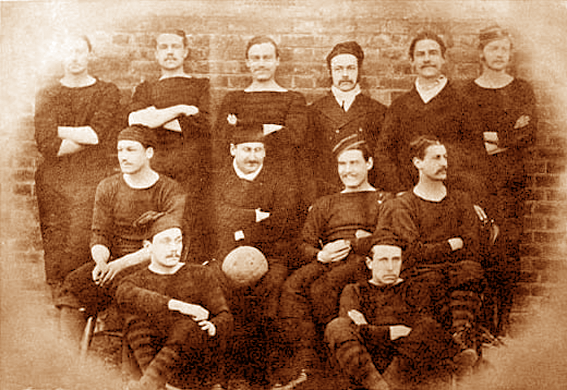 Cecil Wingfield-Stratford (1853-1939)
Cecil Wingfield-Stratford (1853-1939)
The nippy outside-left Cecil Wingfield-Stratford (top right) studied at the Royal Military Academy in Woolwich before joining the Royal Engineers in Chatham as a lieutenant. He played for the Corps’ football team, and was in the eleven that won the 1875 FA Cup final against Old Etonians, when his future brother-in law Henry Renny-Tailyour made a small piece of history by becoming the first man to score in an FA Cup final replay. Since that team had practically invented passing football, it was no surprise that Wingfield-Stratford was good enough to play for England, if only once. He also played cricket for MCC. Remarkably, he went on to have a distinguished military career. He reached the rank of Brigadier-General before retiring at 55, but returned in WW1 to fight at the Battles of Loos and the Somme, winning an impressive four mentions in dispatches. He was both born and died at West Malling.
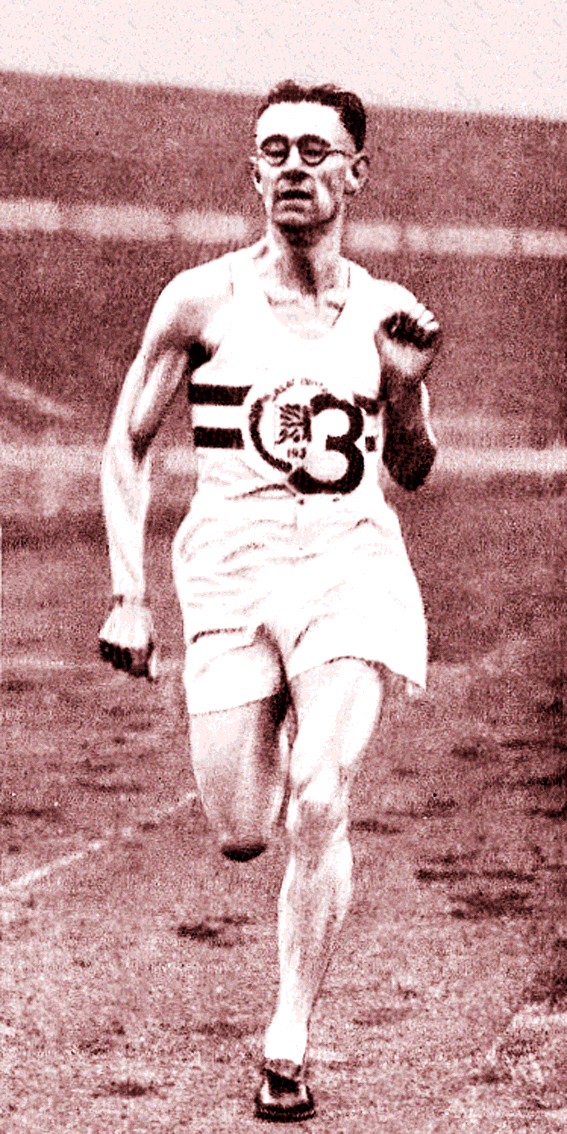 Sydney Wooderson (1914-2006)
Sydney Wooderson (1914-2006)
The ‘Mighty Atom’ was well named, having an ideal physique for middle-distance running. He stood only 5’6” tall, weighed just 7st 12lbs, and was all muscle. He was born in Camberwell, but attended Sutton Valence School and became a life member of Blackheath Harriers, of which he was twice President. A solicitor by profession, he was unfortunate to be injured in the 1500 metres at the Berlin Olympics in 1936. Nevertheless, he returned better than ever after an operation, breaking the world record for the mile in 1937 in a time of 4:06.4, a record that stood for five years. The next year, he set world records in the 880 yards and 800m, and won the 1500m European gold at Paris. WW2 put the kibosh on his running while he served as a fireman and then radio operator, but he returned in 1945 to set his best-ever mile time, and won the European 5000m gold at Oslo in 1946.
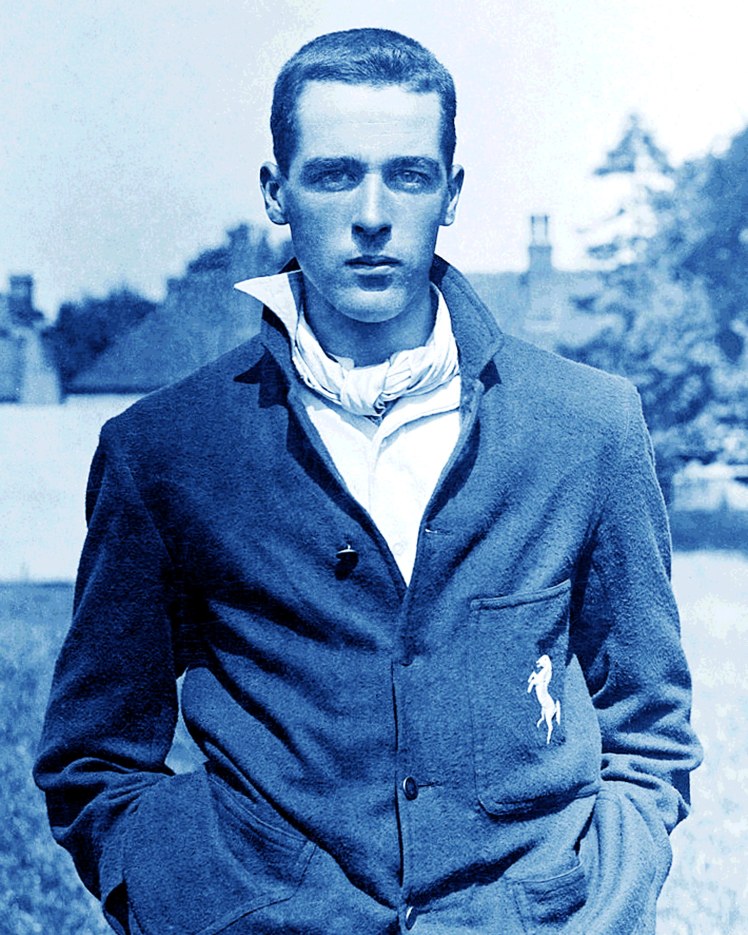 Frank Woolley (1887-1978)
Frank Woolley (1887-1978)
Woolley was a freak: a left-hander who could have been one of the world’s best in either batting or bowling but was both, and still had talent to spare as a fielder. He was born in Tonbridge, not far from the Angel Ground, which became one of his favourite childhood haunts. His ability was recognised when he was just 16, and on his debut for Kent Second XI he took seven for 28 in Surrey’s second innings. In his 32-year professional career, which embraced playing 914 times for Kent and 64 for England, he would take 2,066 First Class wickets. He also scored 58,959 career runs, second in the world only to Jack Hobbs. The rangy physique that made him such a graceful player also afforded him the big hands of a lethal slip fielder. He is the only man ever to take over 1,000 catches, other than wicket-keepers. After retiring, he went to live in Canada.
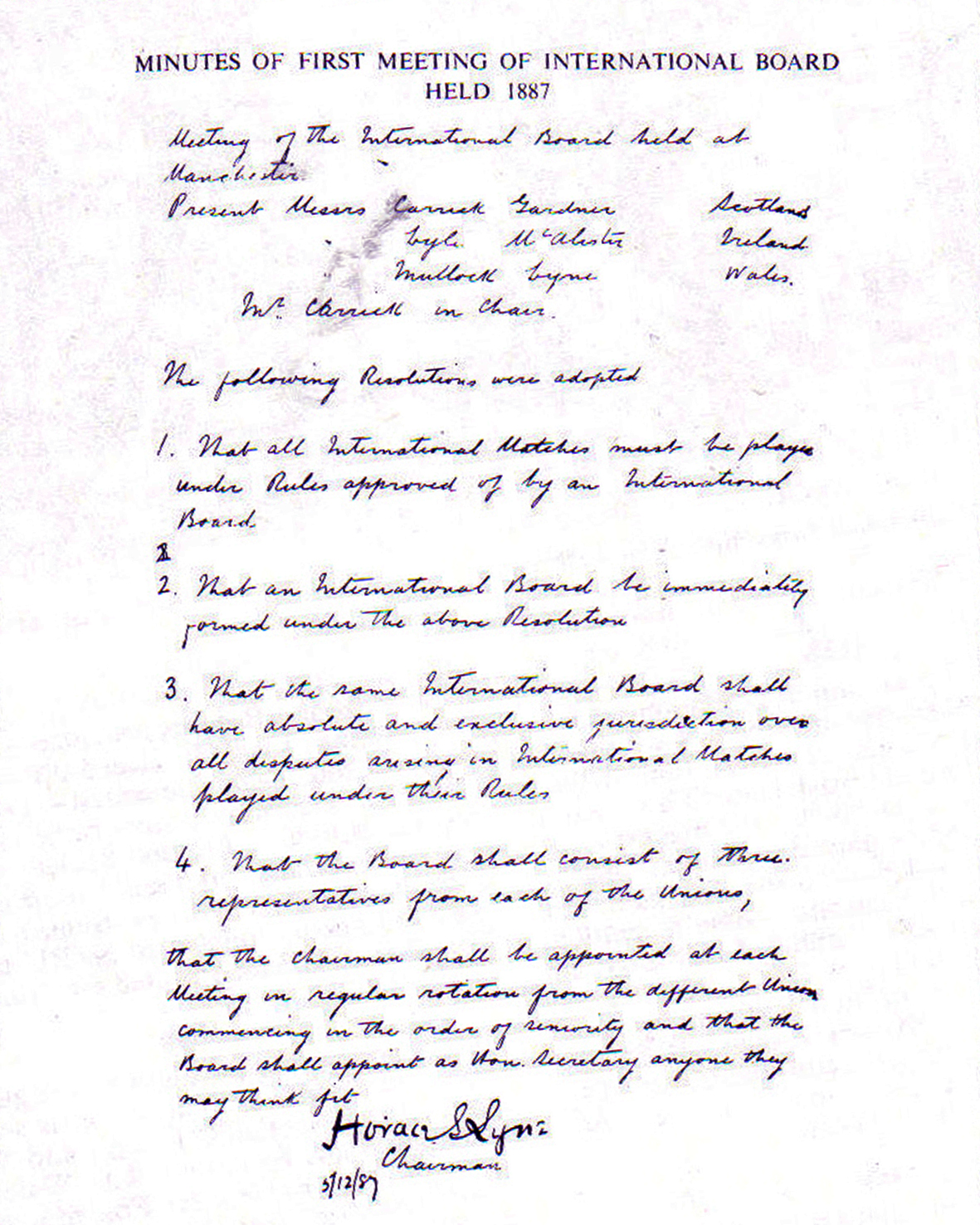 World Rugby
World Rugby
On March 1st, 1884, Rectory Field in Blackheath witnessed a landmark occurrence in rugby history. Scotland were leading against England when a Scot knocked-back the ball and the Scottish umpire signalled foul play. The English umpire demurred, and an England player, RS Kindersley, went over to set up the winning goal. The Irish referee dismissed the Scots’ lengthy protests, so they wrote demanding an annulment. The RFU retorted that a knock-back did not constitute a knock-on, while the referee confirmed that, crucially, no Englishman had appealed anyway. The result stood, leaving England as Home Nations Champions. The piqued Scots responded by refusing to play England in 1885. What’s more, they secured Wales’s and Ireland’s support for a new International Rugby Football Board to have jurisdiction over the game’s laws independently of the RFU. England refused to join, and was barred for two seasons from international competition. Known since 2014 as ‘World Rugby’, the Board is now based in Dublin.
 Ian Wright (born 1963)
Ian Wright (born 1963)
Twenty crazy minutes at Wembley changed Ian Wright’s life. On May 12th, 1990, he came on as a substitute for Crystal Palace in the FA Cup final against Manchester United and scored twice. It certainly got him noticed. A year later, he was signed up by Arsenal, for whom he would score 128 goals in 221 competitive appearances. He also scored nine times in picking up 33 England caps. This was the precursor to a rich career in the media, embracing not just football punditry but also celebrity entertainment. It is a far cry from the Woolwich home he was born in. His Jamaican father walked out, and his mother took in an allegedly abusive partner. He did time in jail, and was still playing for Ten-Em-Bee and Greenwich Borough at 21 when a Palace scout finally spotted his talent. It is no wonder that Wrighty always has a smile on his face.
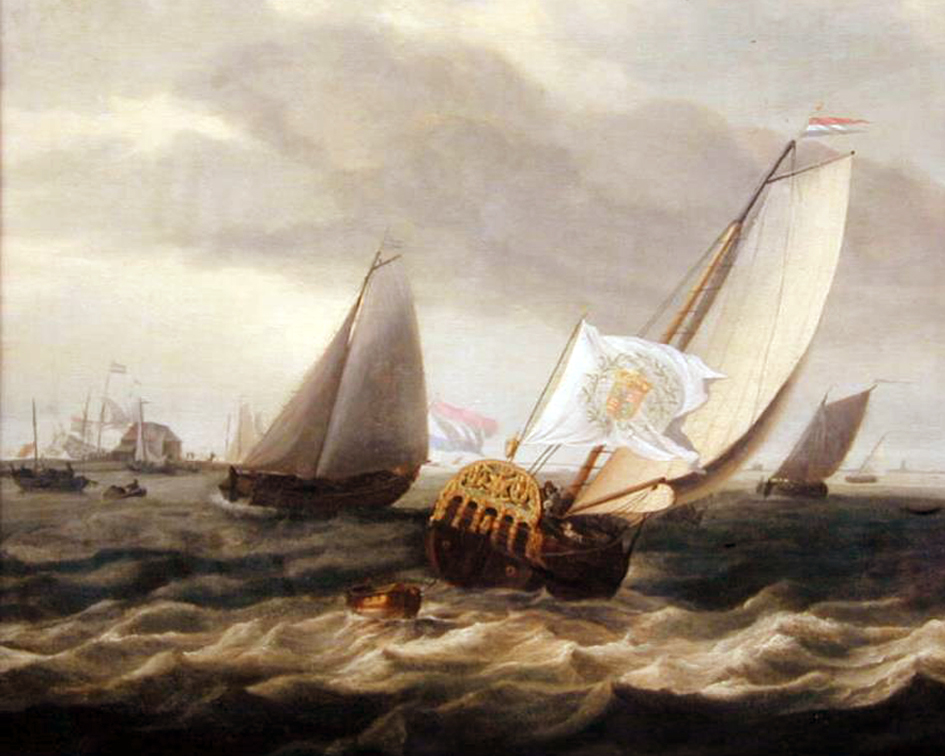 Yacht racing
Yacht racing
The yacht was invented in Holland in the C16 as a faster means of pursuing pirates, its name being the Dutch for ‘hunt’. Its potential as a sporting toy for rich men was first realised by the ultimate playboy, King Charles II, as soon as he was restored to the throne. In 1661, the Dutch gifted him an excellent example called ‘Bezan’, prompting him to order Kentish shipwright Peter Pett to build him even faster English models. With his brother the Duke of York – the future King James II – he initiated a royal tradition in 1662 by racing Bezan against his new yacht, Jamie, from Greenwich to Gravesend and back. Although yachts had possibly been raced before, this was the first formal contest for money, the winner pocketing a kingly £100 purse. Coincidentally, this was exactly the amount stumped up by the Royal Yacht Squadron two centuries later for the America’s Cup trophy, now the world’s most expensive sporting contest.
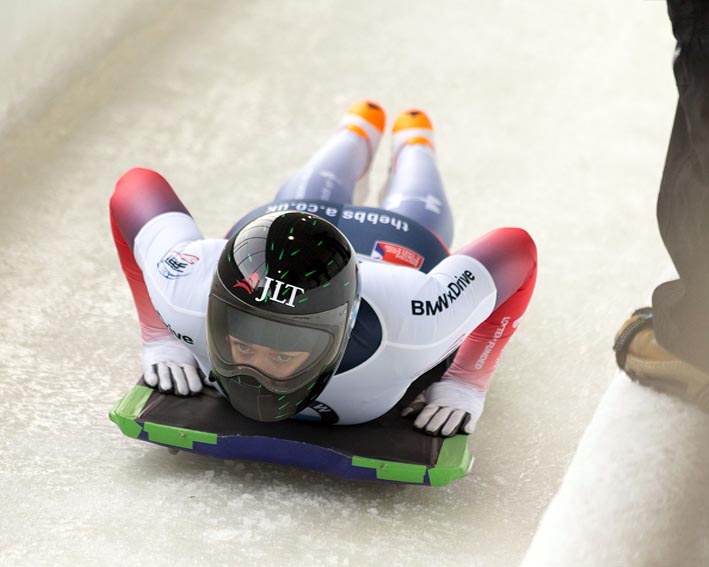 Lizzy Yarnold (born 1988)
Lizzy Yarnold (born 1988)
Yarnold was born in Sevenoaks, went to prep school in Otford, and attended the Girls’ Grammar School in Maidstone, where she became head girl. She went on to do a degree in Geography, Sport and Exercise Science at the University of Gloucestershire. At first she hoped to be a heptathlete, but at 19 she was identified by the UK Sports ‘Girls4Gold’ scheme as a candidate for the little-known winter sport of skeleton, a form of sledding. She got off to a winning start, and never looked back. She won the World Cup in 2013, and her first Olympic gold at Sochi the following year. At Pyeongchang in 2018, where she carried the flag for the British team, she repeated her success, making her the first British competitor ever to retain a Winter Olympic title. In between, she married James Roche, an engineer who had designed her competition skeleton. She now lives in Bournemouth.
CREDITS ON THIS PAGE
All text: © Old Bunyard 2020. Unauthorised reproduction prohibited.
Images:
Dina Asher-Smith: ‘Dina AsherSmith Euro Champs 2018′ by Acurash, licensed under CC BY-SA 4.0. (Cropped).
The Ashes: © Old Bunyard 2021.
Debbie Bampton: ‘Debbie Bampton in August 2015‘ by Sevcoteehee, licensed under CC BY-SA 4.0. (Cropped).
Warren Barton: © Ben McGannan Collection 2020.
John Bartley: © Ben McGannan Collection 2020.
Sam Bartram: ‘Charlton Athletic, Sam Bartram statue – geograph.org.uk‘ by David Hatch, licensed under CC BY-SA 2.0. (Cropped).
Sir Donald Bradman: ‘Don Bradman 1930‘ by State Library of South Australia from Australia, licensed under CC BY 2.0. (Cropped).
Steve Butler: © Ben McGannan Collection 2020.
Steve Bruce: ‘SteveBruceNorwich1980s‘ by ChrisTheDude, licensed under CC BY-SA 3.0. (Cropped).
Buckmore Park: © Old Bunyard 2021.
Joe Choong: ‘Joe Choong and Nathan Schrimscher Rio2016‘ by U.S. Army, licensed under CC BY 2.0. (Cropped).
George Cohen: ‘George Cohen‘ by Christophe95, licensed under CC BY-SA 3.0. (Cropped).
Sir Colin Cowdrey: ‘Colin Cowdrey‘ by Rediff, licensed under CC BY 4.0. (Cropped).
Cranbrook School: ‘Cranbrook School – geograph.org.uk – 880855‘ by Nick Smith, licensed under CC BY-SA 2.0. (Cropped).
Ted Ditchburn: ‘Ted Ditchburn (1963)‘ by Harry Pot (1929-1996) Anefo, licensed under CC BY-SA 3.0 NL. (Cropped).
F1 World Champions: ‘Niki Lauda 1976 British Grand Prix‘ by Smudge 9000, licensed under CC BY-2.0 Generic. (Retouched).
Foxgrove Road: © Old Bunyard 2021.
William Fox-Pitt: ‘William Fox-Pitt on Chilli Morning at Badminton 2015‘ by Owain Davies, licensed under CC BY-SA 4.0. (Cropped).
William Funnell: ‘Hessischen Ministerpräsidenten William Funnell auf Billy Angelo 1 mk‘ by Michael Kramer, licensed under CC BY-SA 3.0. (Cropped).
Sir George Rowland Hill: ‘Memorial to Sir George Rowland Hill geograph-4509190-by-Keith-Williams‘ by Keith Williams, licensed under CC BY-SA 2.0. (Cropped).
Roy Hodgson: ‘Genève Indoors 2014 – 20140114 Roy Hodgson‘ by Clément Bucco-Lechat, licensed under CC BY-SA 3.0. (Cropped).
Kelly Holmes: ‘Kelly Holmes at Athens 2004 cropped‘ by Russell Garner, licensed under CC BY-SA 2.0. (Cropped).
Bobby Houghton: ‘Bob Houghton (1979)‘ by Fernando Pereira / Anefo, licensed under CC BY-SA 3.0 NL. (Cropped).
James Hunt: ‘James Hunt British GP 1976‘ by Martin Lee, licensed under CC BY-SA 2.0. (Cropped).
The Isle of Thanet Races: By courtesy of Gordon Wallis.
Bill Ivy: ‘Bill Ivy 1969‘ by Raimund Kommer, licensed under CC BY-SA 3.0. (Cropped).
Leeds Park: By courtesy of Leeds & Broomfield Cricket Club.
Live football on TV: By courtesy of Gordon Wallis.
Lydden Hill: ‘Mattias Ekstrom (Audi S1 EKS RX quattro) (27211434172)‘ by EKSRX, licensed under CC BY-2.0 Generic.
Gary Mason: © Ben McGannan Collection 2020.
Stirling Moss: ‘Stirling Moss on track‘ by C5813, licensed under CC BY-SA 4.0. (Cropped).
Jack Nicklaus: ‘JackNicklaus2006MastersPar3‘ by pocketwiley
Keith Peacock: © Ben McGannan Collection 2020.
Pett cricket bat: ‘Historical cricket bat art’ by Unknown, licensed under CC BY-SA 3.0. (Cropped).
Priestfield Stadium: ‘Priestfield1‘ by Chris Matterface, licensed under CC BY-SA 3.0. (Cropped).
Raducanu, Emma: ‘Raducanu WMQ18 (16)’ by si.robi, licensed under CC BY-SA 2.0. (Cropped).
Rallycross: ‘Hansen2004‘ by RX-Guru at German Wikipedia, licensed under CC BY-SA 3.0. (Cropped).
Rectory Field: ‘Blackheath rugby pitches (geograph 3270873)‘ by Stephen Craven, licensed under CC BY-SA 2.0. (Cropped).
Royal St George’s: © Alex Clayton 2021.
Matthew Sadler: ‘MatthewSadler12a‘ by Stefan64, licensed under CC BY-SA 3.0. (Cropped).
St Lawrence Ground: © Old Bunyard 2021.
John Simpson: © Kent Messenger Group 1972.
Chris Smalling: ‘CSKA-MU 2017 (15)‘ by Дмитрий Голубович, licensed under CC BY-SA 3.0. (Cropped).
Steve Smith: ‘Steve Smith (cricketer), 2014 (cropped)‘ by NAPARAZZI, licensed under CC BY-SA 2.0. (Cropped).
Sir Garfield Sobers: ‘Sir Garry Sobers 2012‘ by The Madras, licensed under CC BY 3.0. (Cropped).
John Still: © Ben McGannan Collection 2020.
Karen Stupples: ‘2009 Women’s British Open – Karen Stupples (13)‘ by Wojciech Migda (wmigda), licensed under CC BY-SA 3.0. (Cropped).
Peter Taylor: ‘Peter Taylor 2011‘ by Doha Stadium Plus Qatar from Doha, Qatar, licensed under CC BY 2.0. (Cropped).
Jim Thompson: © Ben McGannan Collection 2020.
Andy Townsend: ‘Townsend, Andy‘ by Jonesy702, licensed under CC BY-SA 4.0. (Cropped).
Valley Party: © Old Bunyard 2021.
Vine Cricket Ground: © Old Bunyard 2020.
Bill Williams: © Ben McGannan Collection 2020.
Wimbledon strawberries: ‘Strawberries and cream Wimbledon 2014‘ by Micolo J from Shrewsbury, England, licensed under CC BY-2.0 Generic.
Lizzy Yarnold: ‘Lizzy Yarnold 2017 Lake Placid WC (1 of 3)‘ by 121a0012, licensed under CC BY-SA 4.0. (Cropped).
All other images on this page are believed to be public domain, fair use/dealing, or royalty-free. Please do not reproduce any image without first establishing that you are free to do so.